
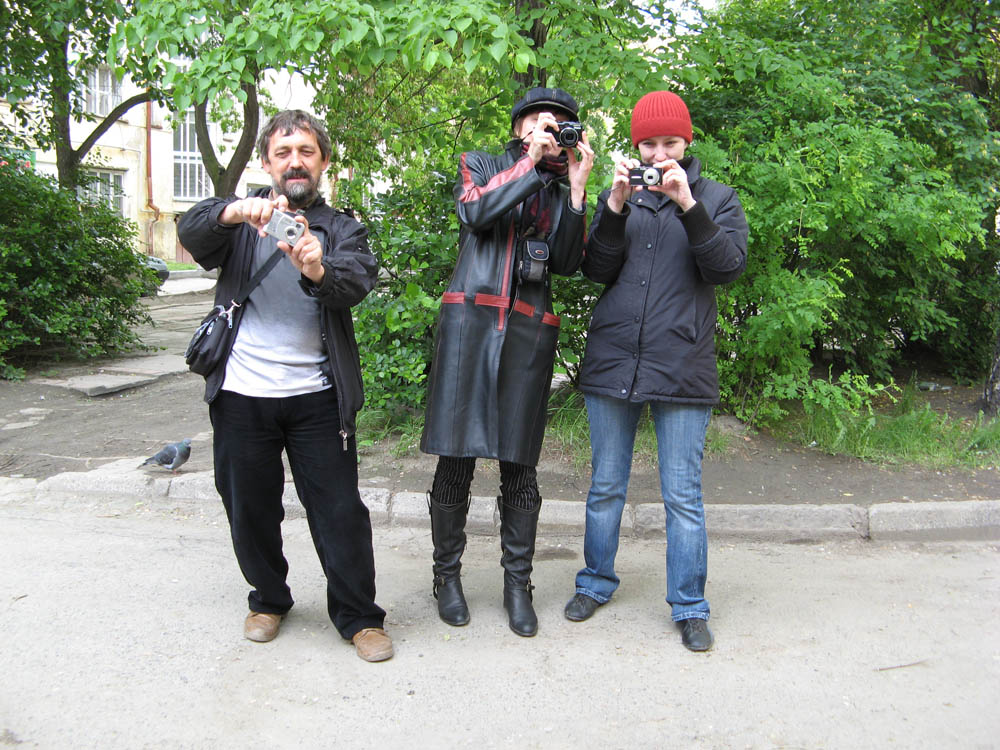
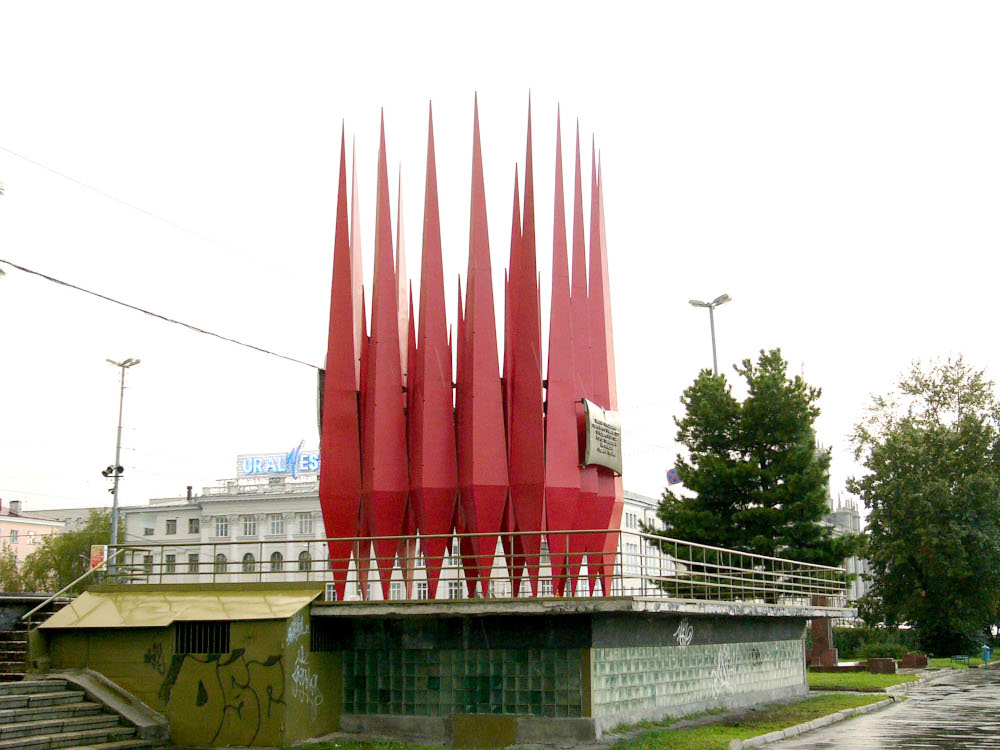
R² is a collaboration between a researcher and an artist. We have been traveling together for 36 years — through both the physical and virtual worlds.

Along the way, we seek what slips through the cracks of simplified reality — what escapes direct sight but lingers in textures, shadows, the trembling of air, the persistence of echoes. We are drawn to traces of absence, moments of incompleteness, and quiet suggestion.
When observing natural or human-made environments — landscapes, buildings, structures — we often sense a kind of unfinishedness. These places feel like scattered fragments of a hologram, inviting us to complete the visible with a ghostly, multidimensional presence. Not through imagination alone, but through deep attention.
Sometimes this leads to artistic actions, temporary installations, or the uncovering of a message — a riddle embedded in the object itself.
We call this approach Revealed Realism — a practice in which reality is not replaced, but extended.
This is not mystification.
This is a method of attentiveness.
Projects: The Quarry as Witness, Deer Stones, Miniks, Enigma Travel Detective, To understand — one must walk Shoot for Color
Methods: Revealed Realism, Betweenness, Design of Remembrance
CV: Marina Razheva & Dmitry Razhev
Selected Publications: Cappadocia: A Very Curious Place (2008)
Total Landscape Experience
11.05.2025
Kőszikla Szurdok, Hungary
This exhibition does not take place inside a gallery. It begins on a path.
We walk deep into a gorge — a space shaped not by human hands, but perceived as an exhibition. Nature here is not a backdrop, but a co-author. We enter a narrative where every step is part of the installation.
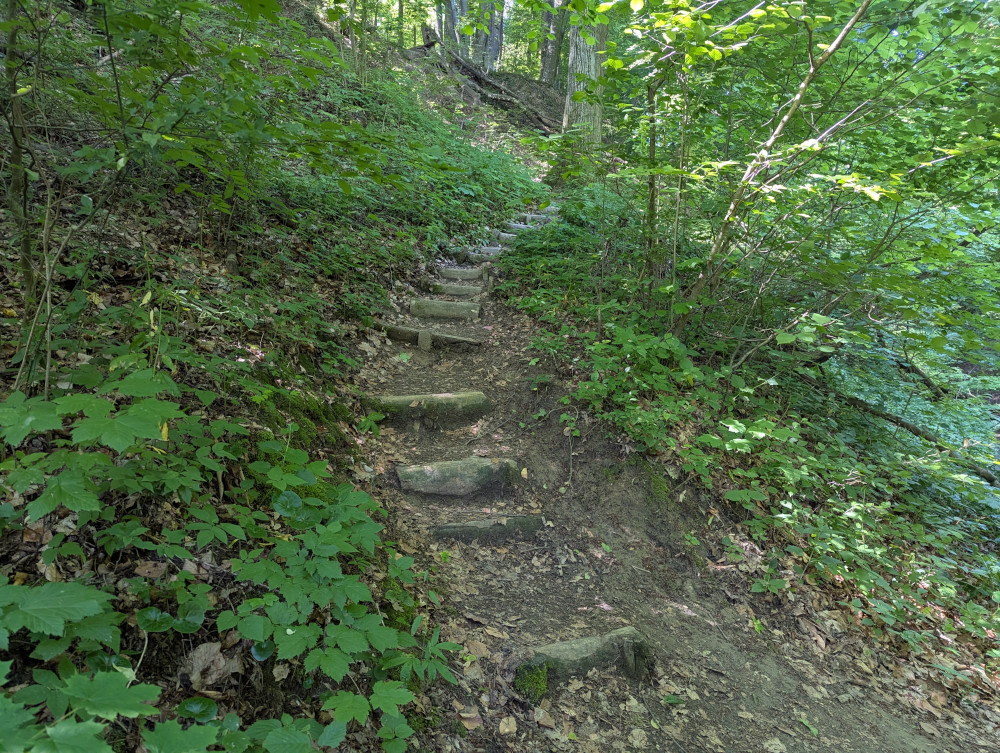
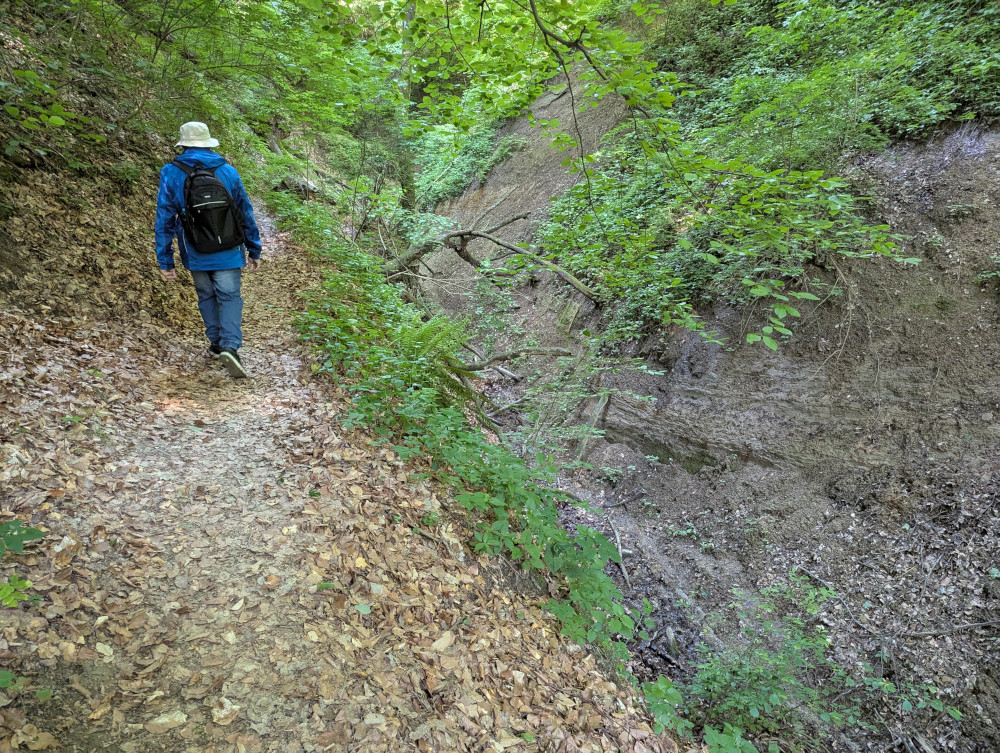
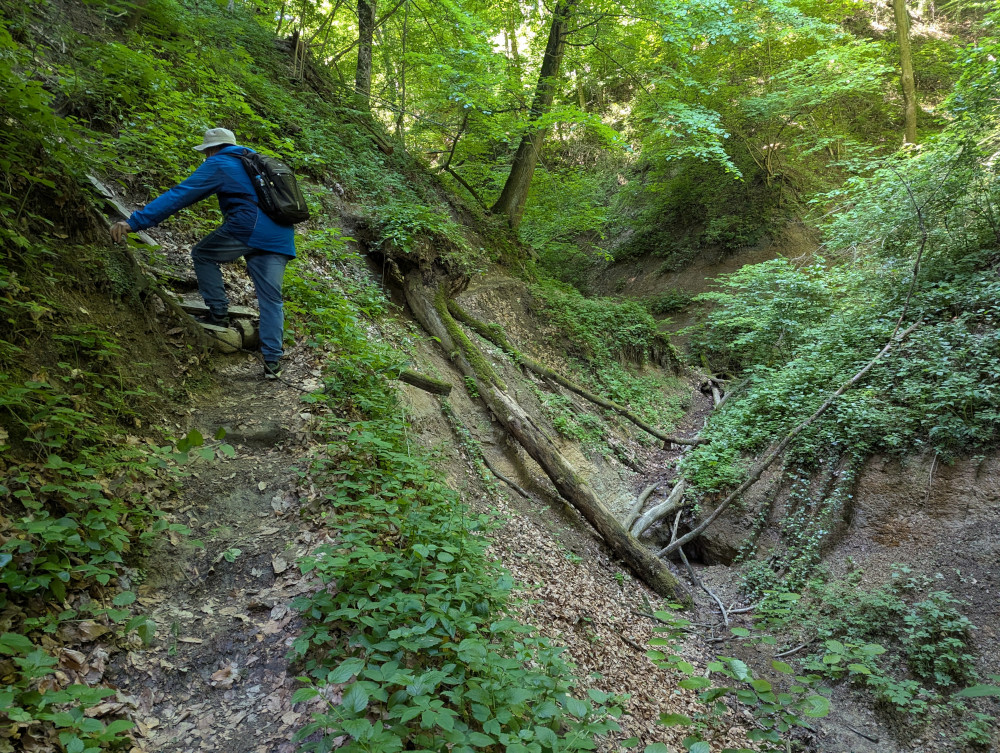

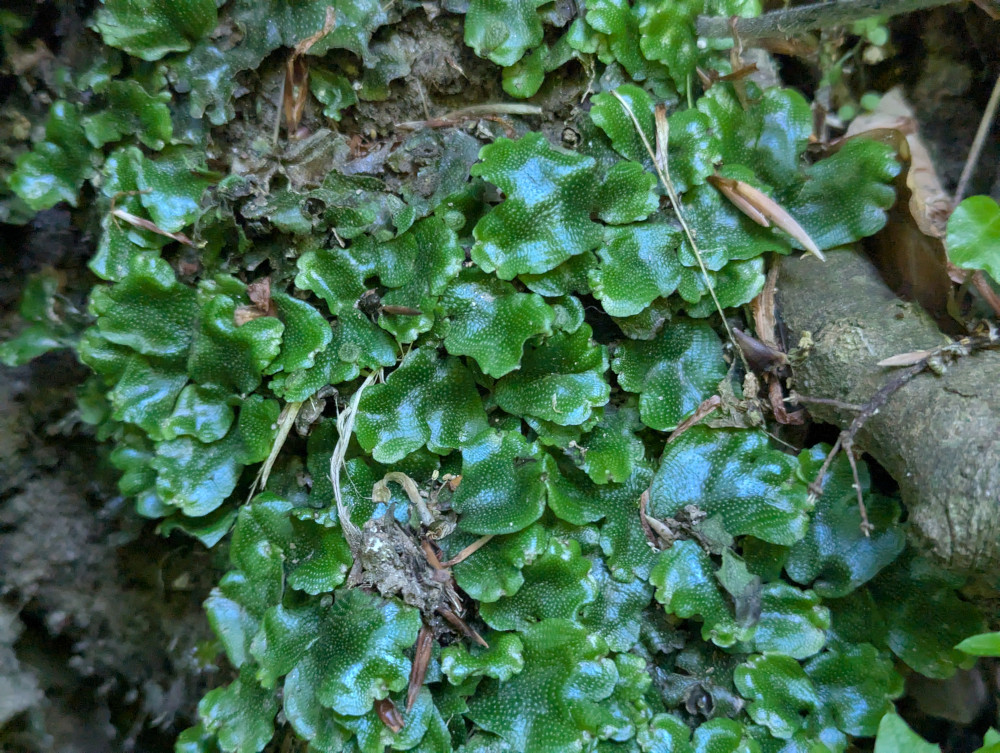
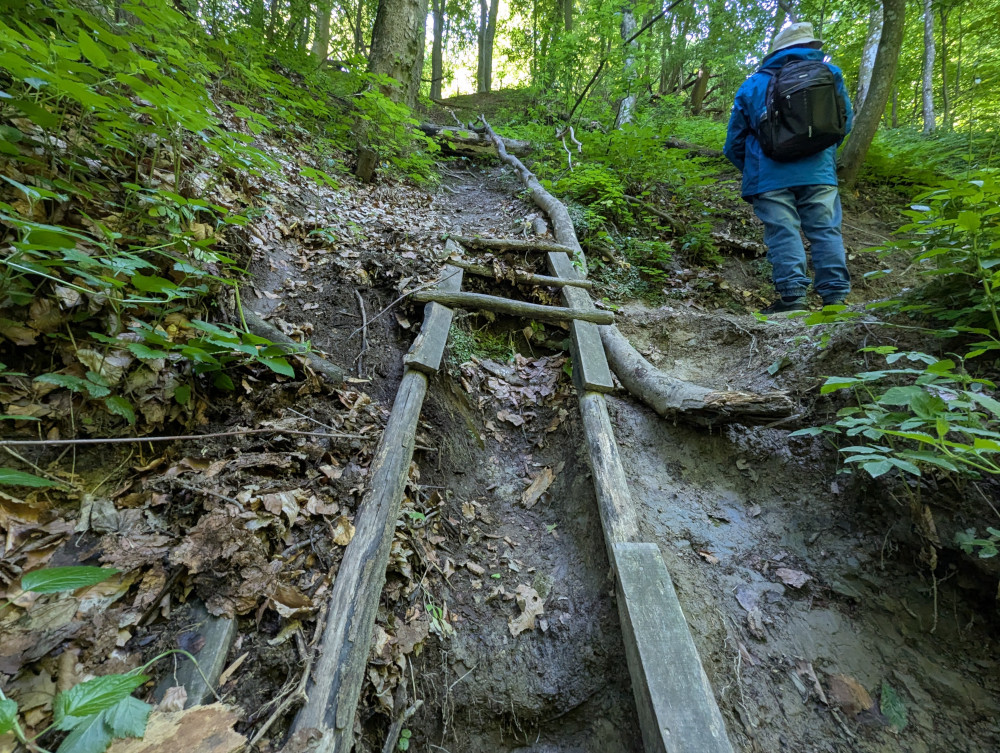
This is an initiation route: collapsed trails, a stream that speaks with the voice of the past, fallen trees composing an invisible script. We must slow down, lean on overhanging roots, walk “not in our own shoes.” Through embodied participation, we become part of the exhibition.
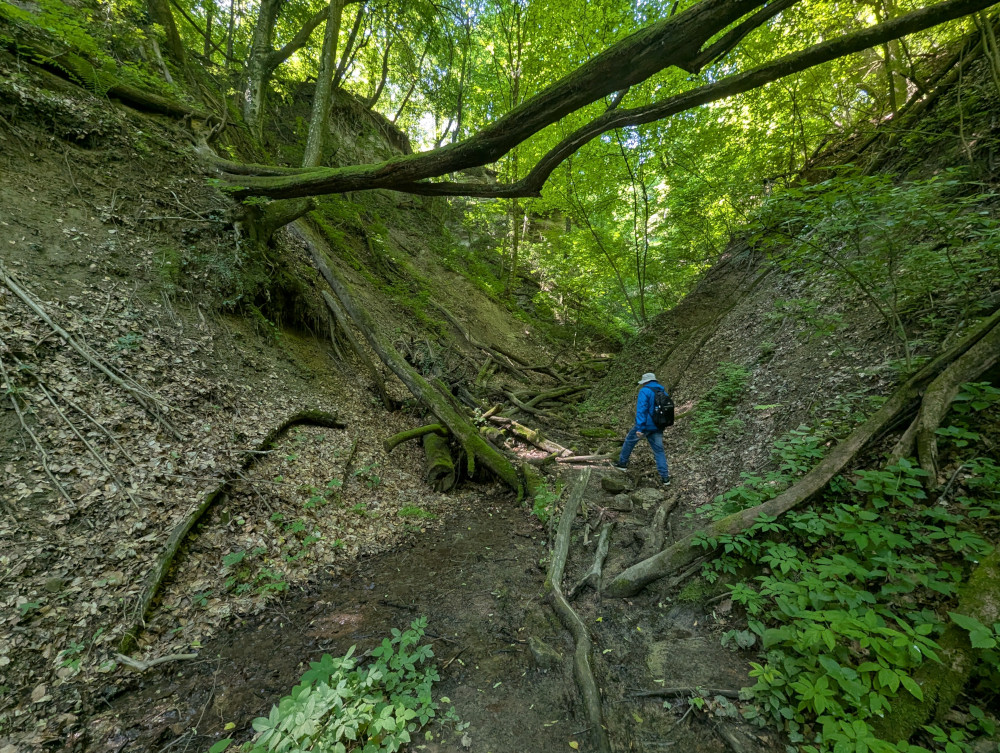
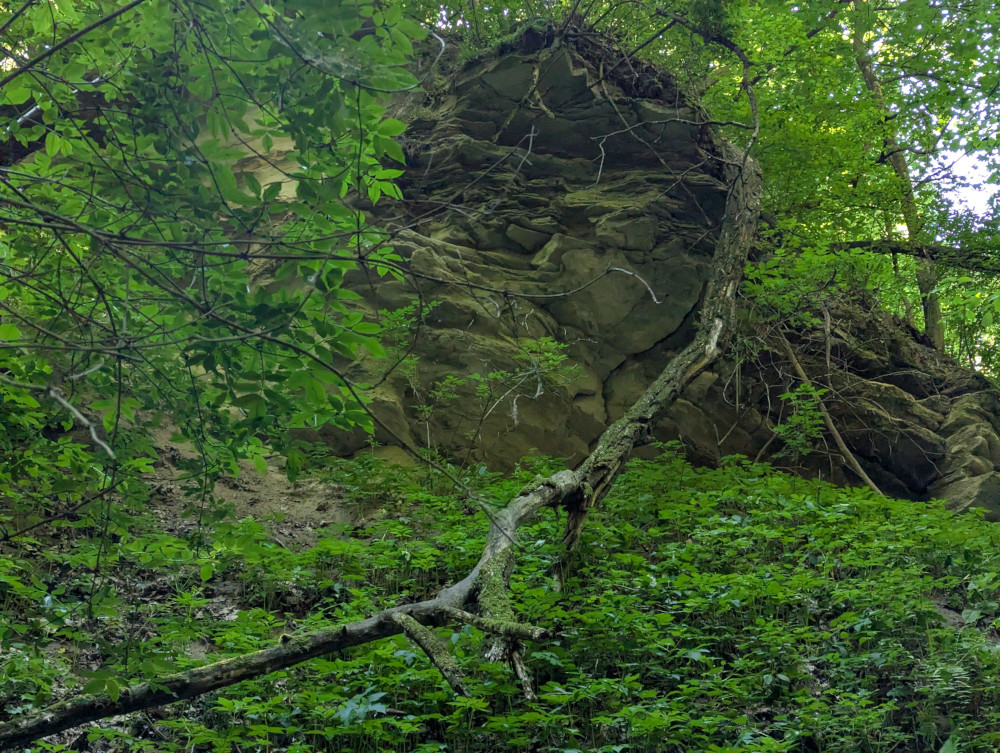

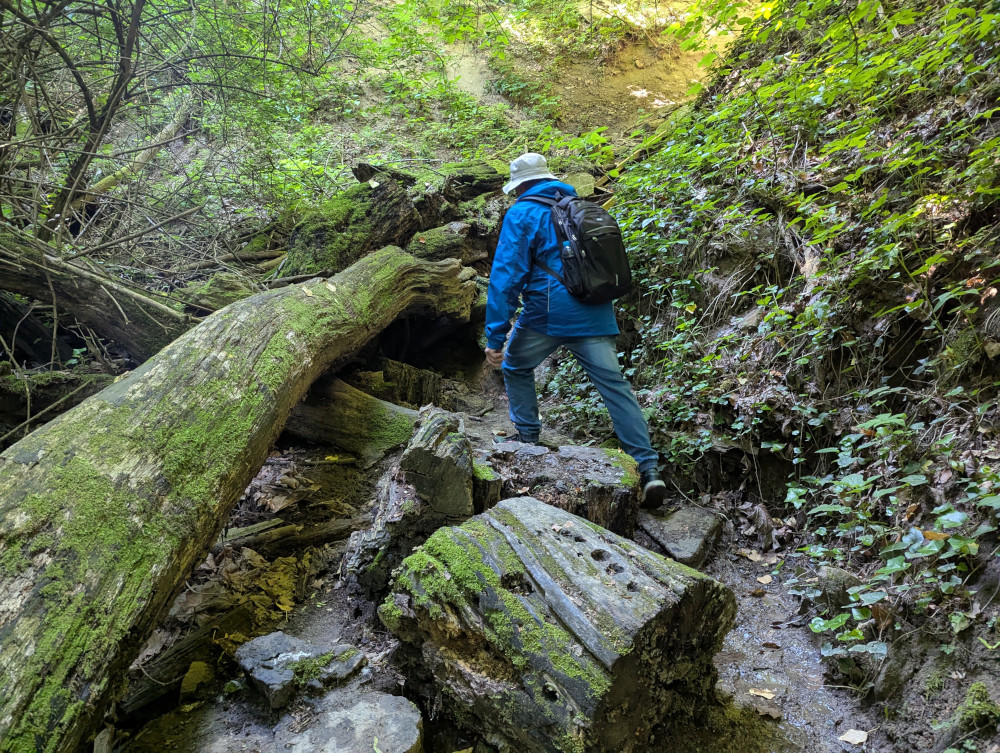
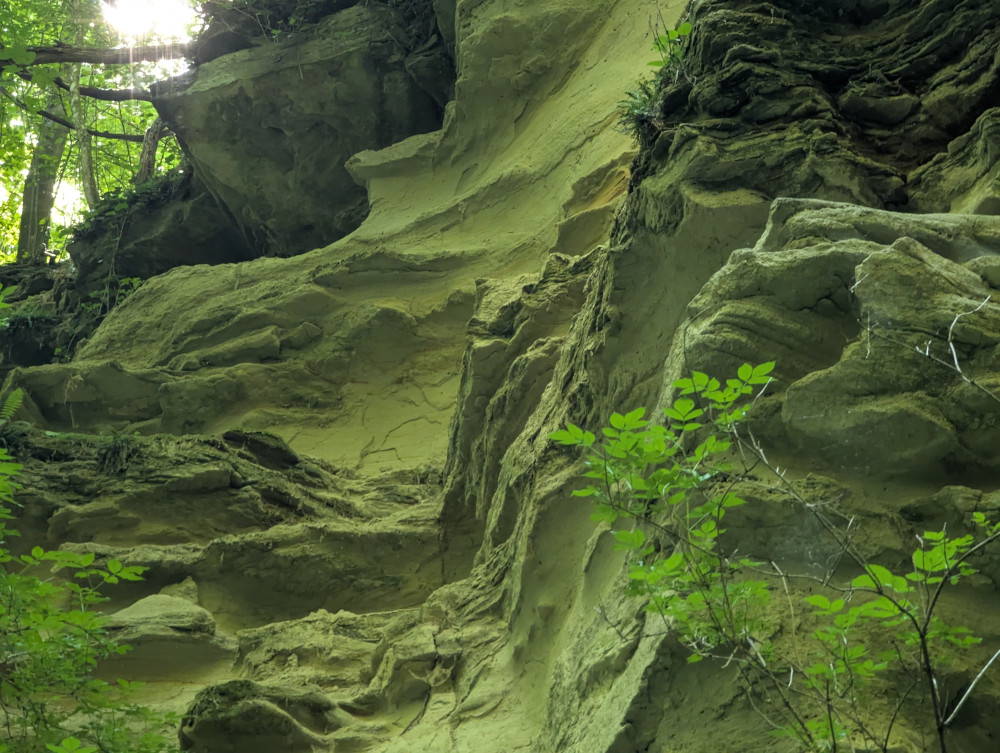
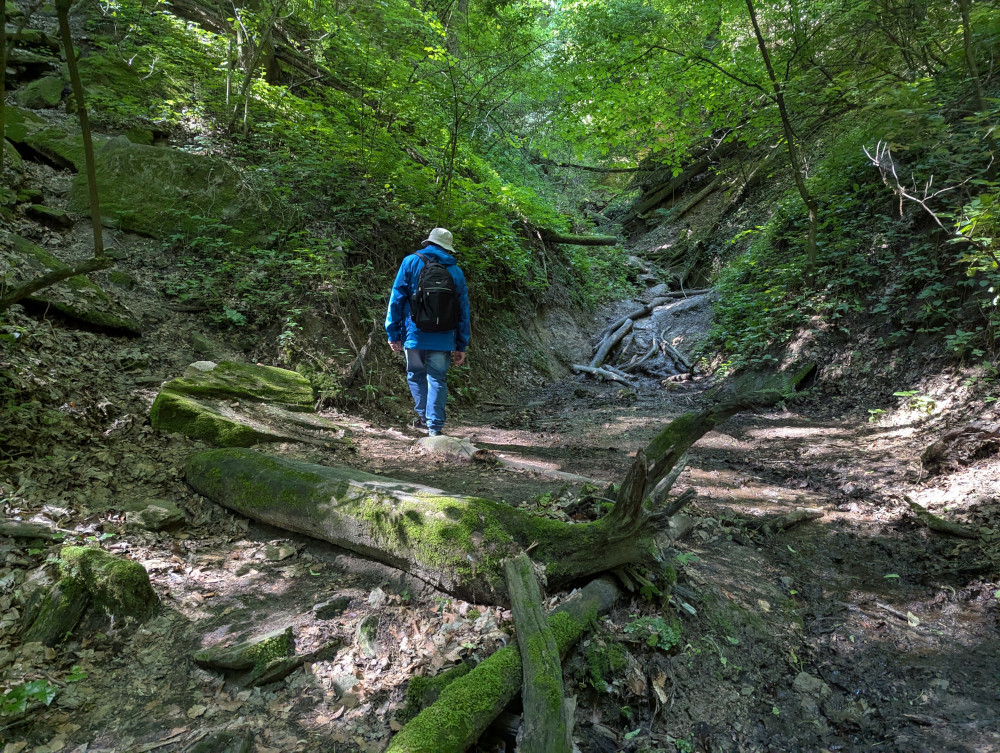
At the journey’s end is a round rock niche — a stage, a theater of memories. Within it lies a mirror, buried beneath dust. Clear it away, and you will see yourself. Or rather, who you have become by walking this path.
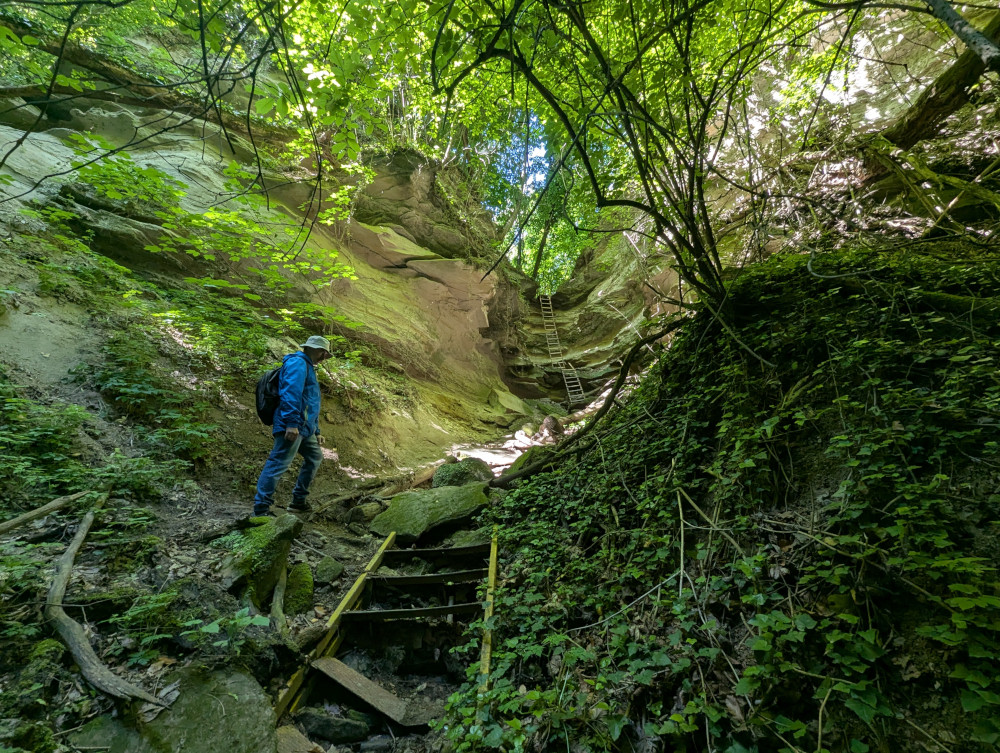
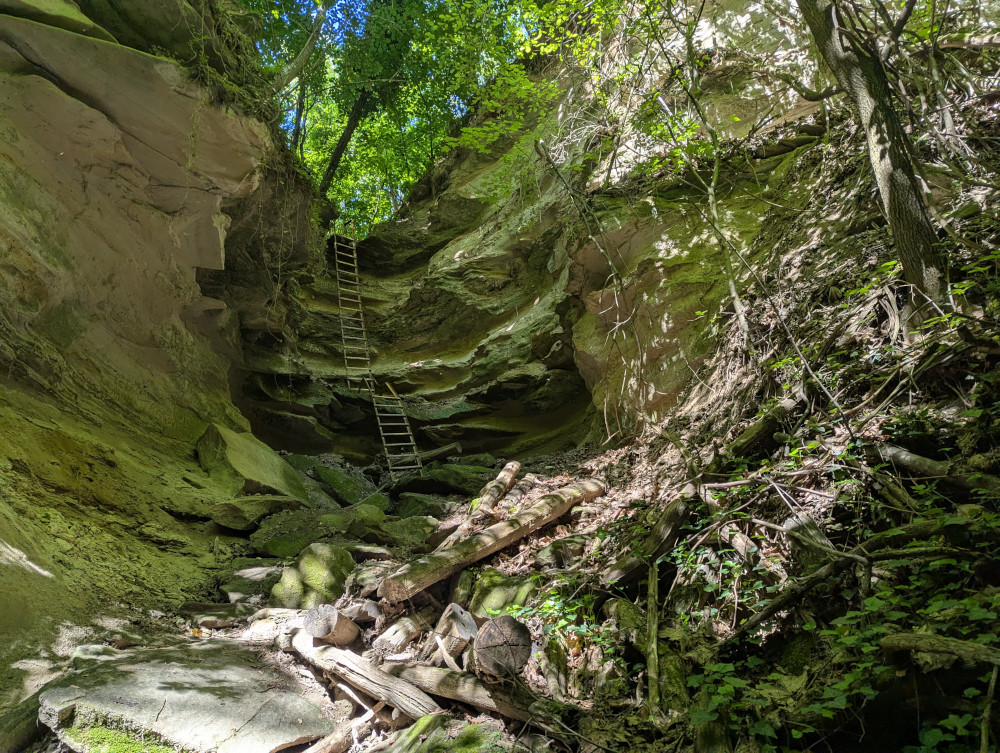
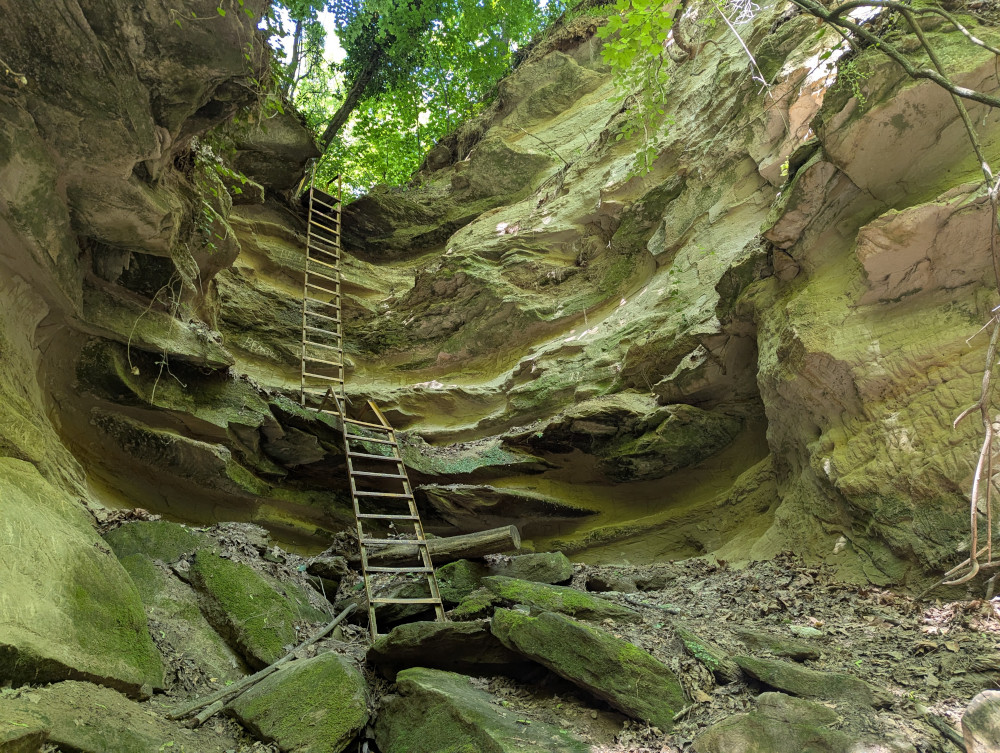
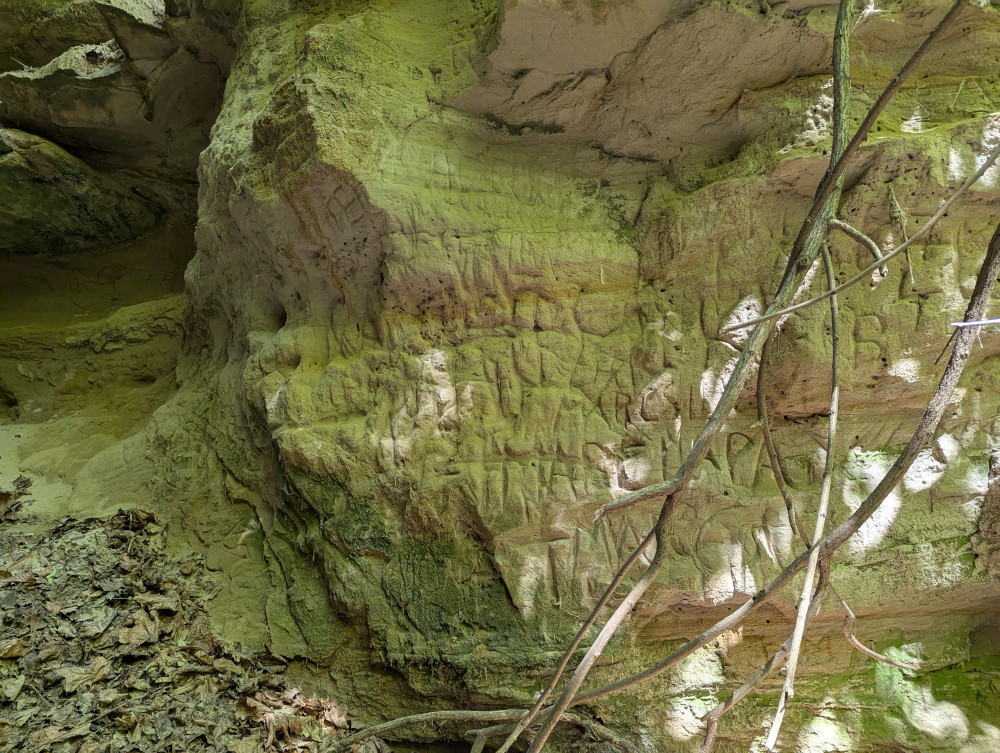
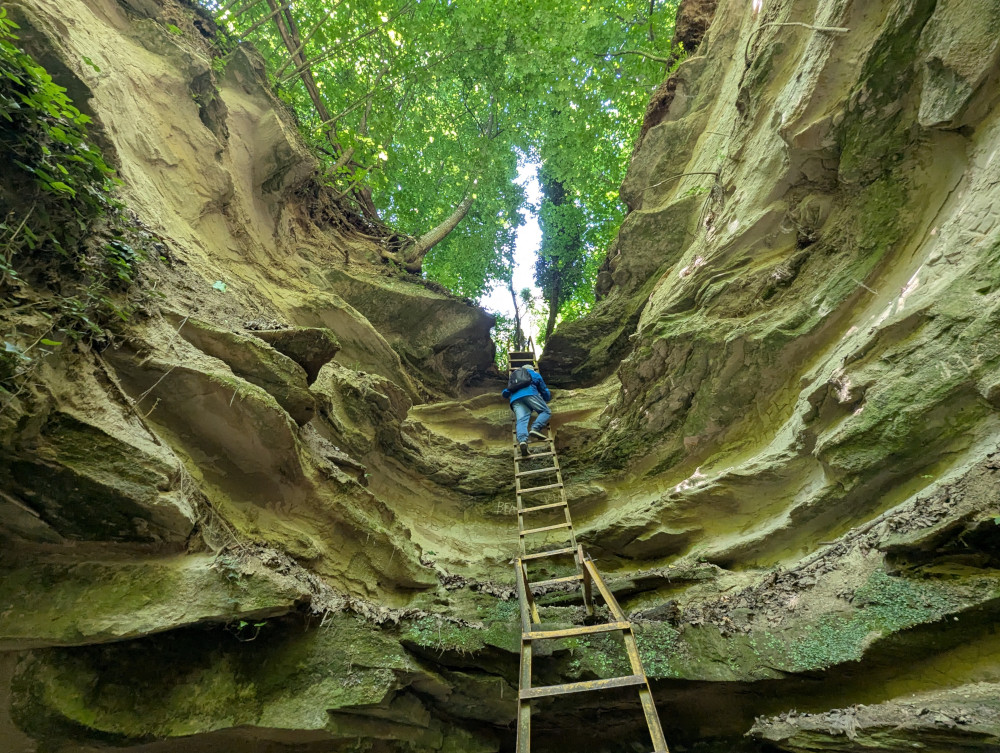

Key “exhibits” :
The “Reflection Hall” — the journey’s climax. Nothing is added here except the mirror beneath the sand. We are the main exhibits. Yet the way back is closed: the only exit is upward — a vertical ladder, stairs, daunting but leading to liberation.
We have walked this path together. Will you walk it with us?
Monument to Travelers
Installed on 16.12.2024
Ao Leuk, Koh Tao, Thailand
Bioceramics — dough plastic: salt, flour, water. Tinted with acrylic paints.
Size: 7 x 5 x 9 cm

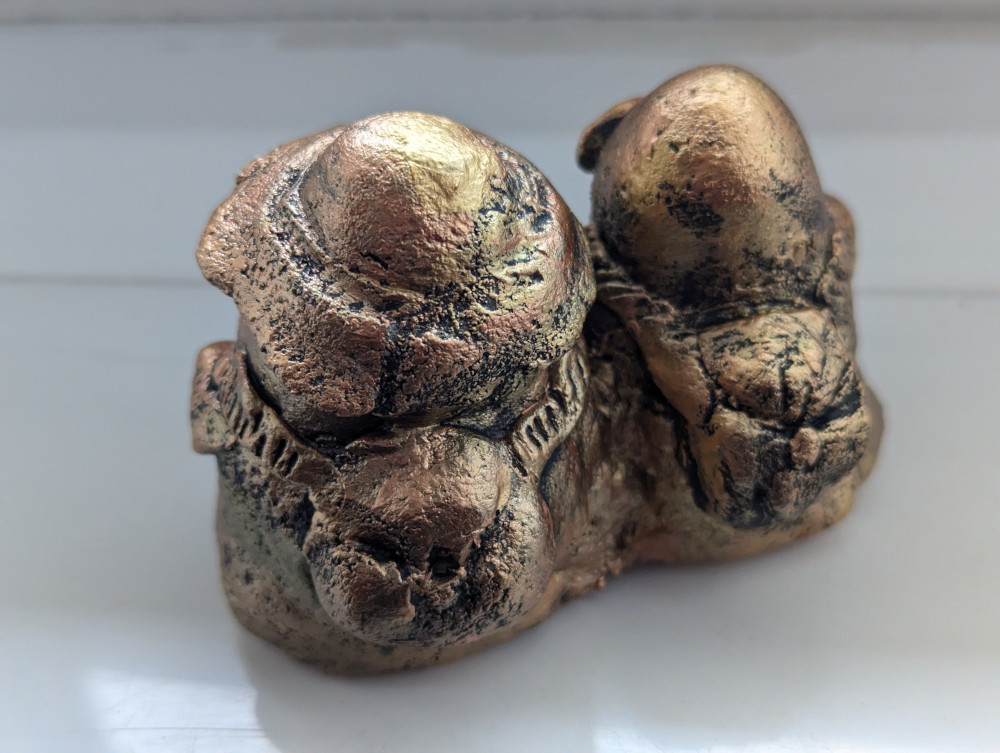
From November 26 to December 16, 2024, the mini sculptures traveled along the route: from Budapest Airport, where they paid tribute to the Liszt monument, to Thailand, where they visited the Golden Temple of Ganesha in Chiang Rai, and Wat Huai Pla Kang with the giant Guanyin, the ruins of Wat Ruesi Chewap in Chiang Mai, in Bangkok the 0 km marker, the royal palace and cultural center with an exhibition of the Bangkok Biennale, and Koh Tao island. At each location, searches were conducted to find a spot for installing the mini monument. The site fitting was accompanied by photographic documentation.

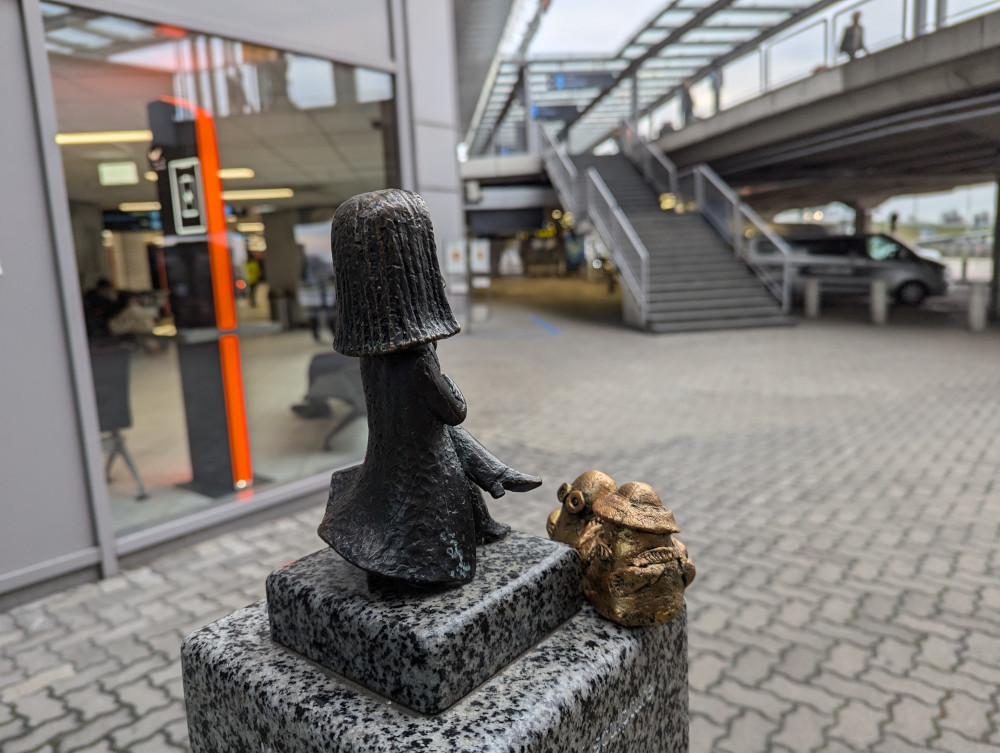
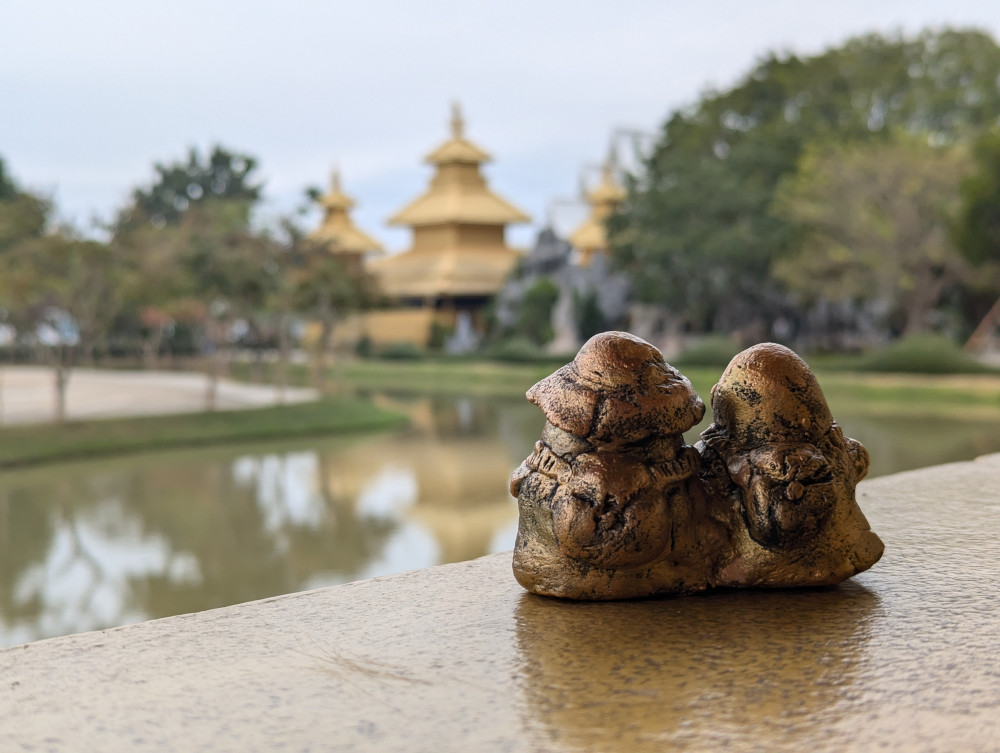
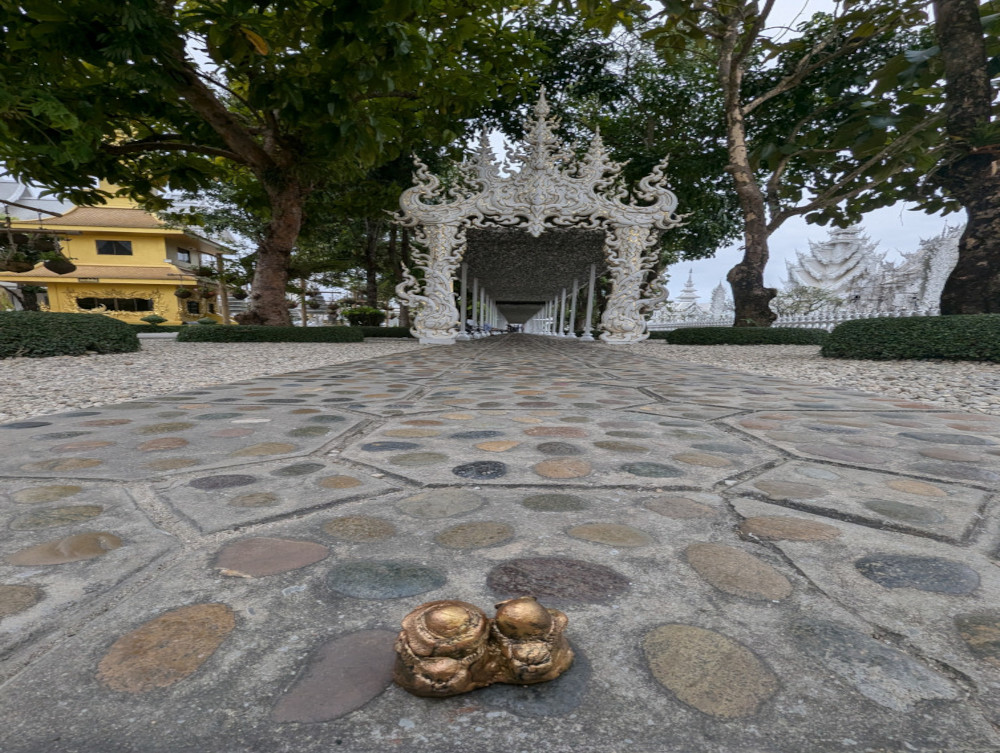
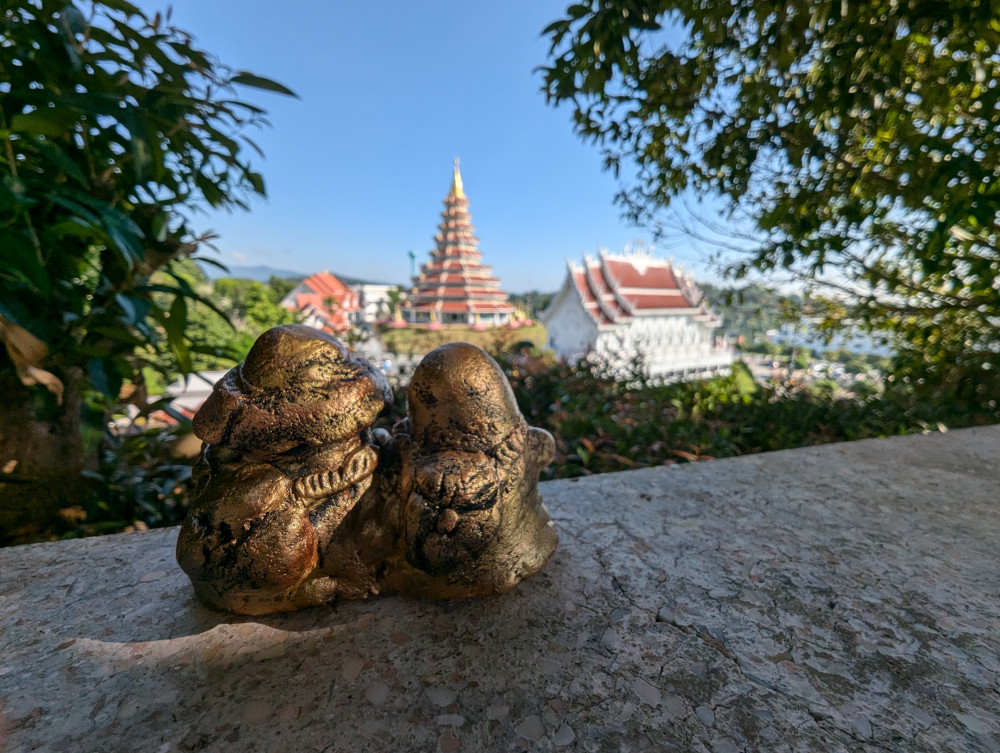
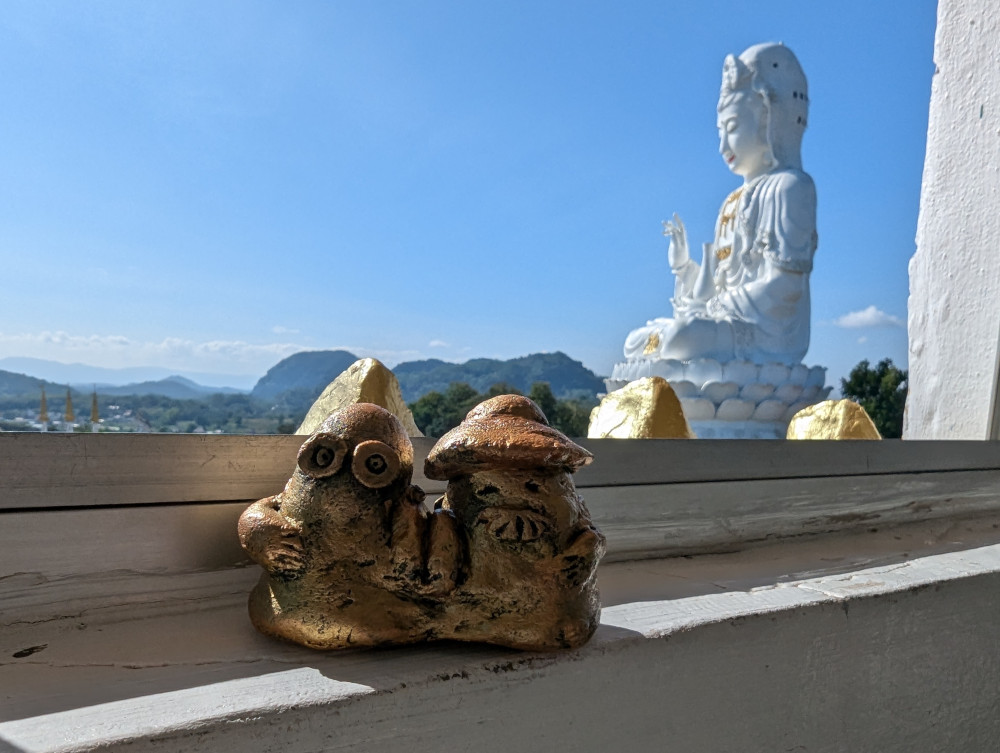
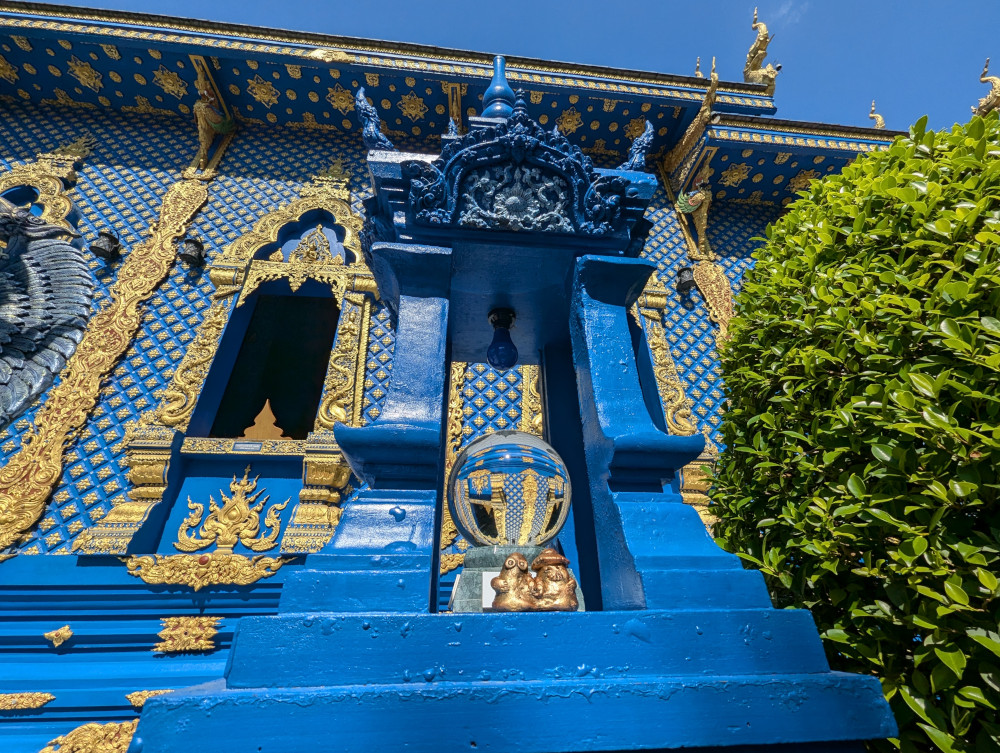

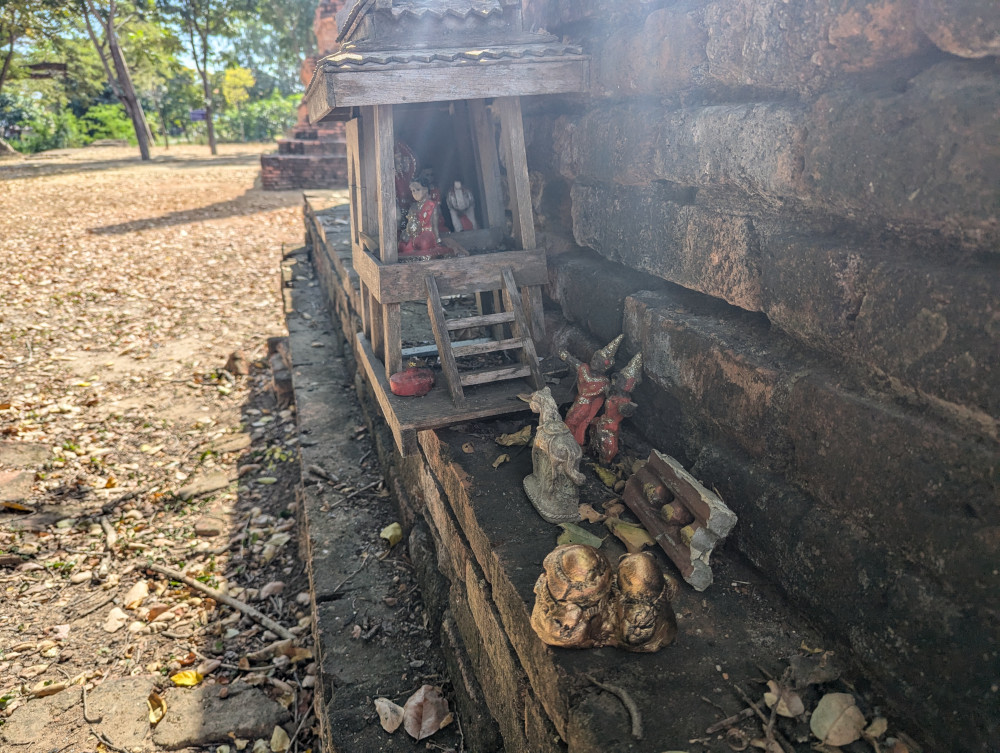

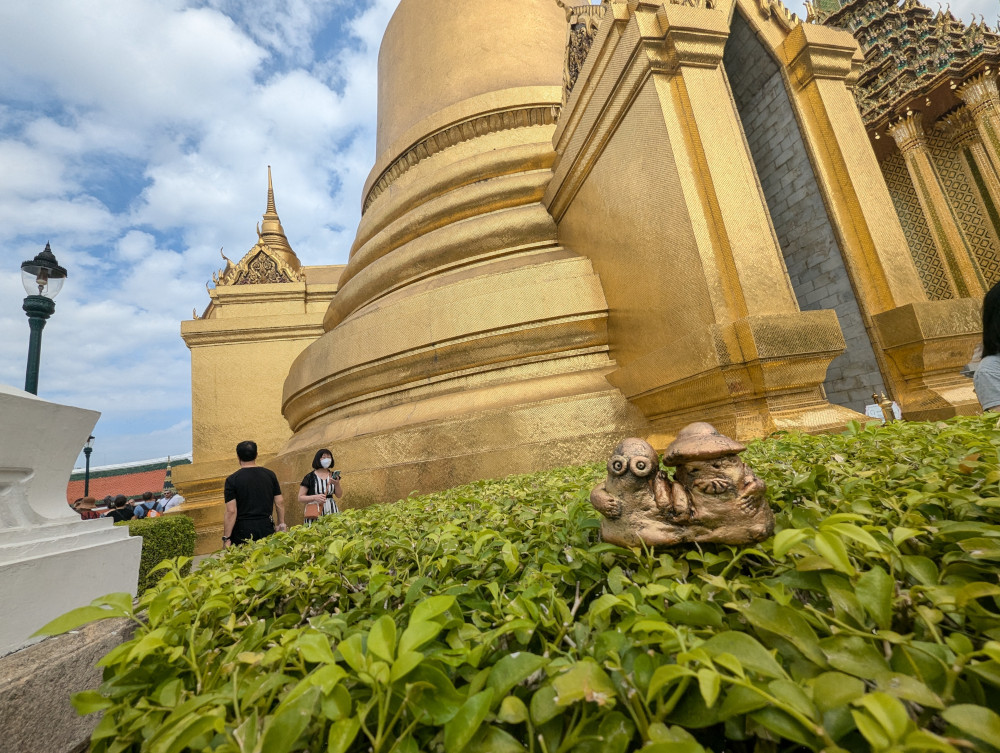

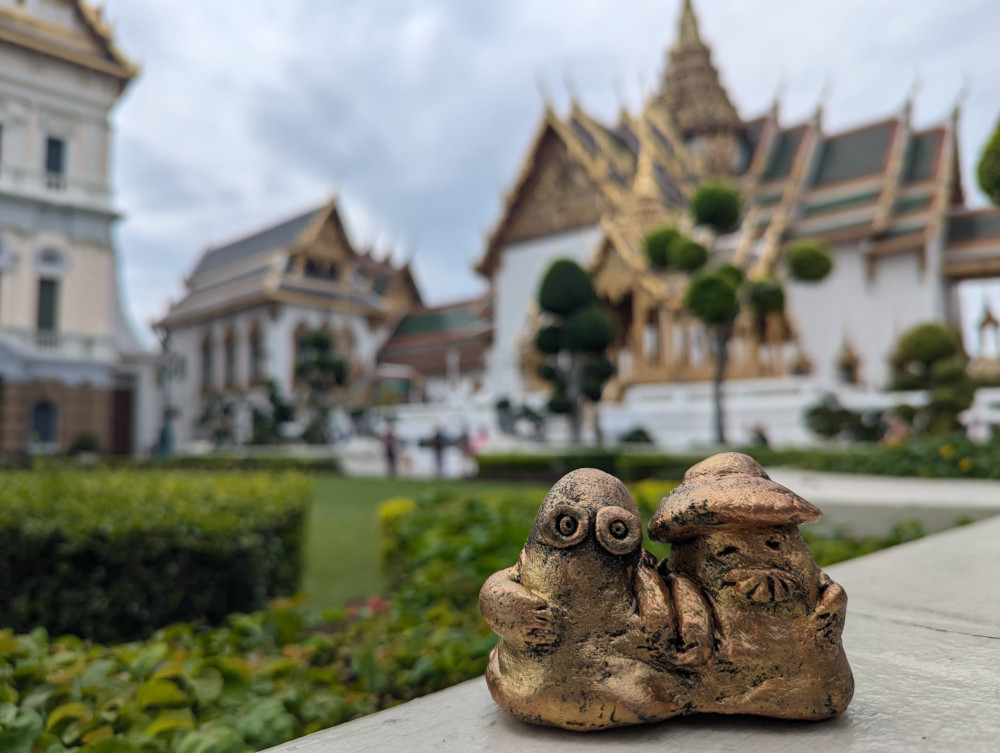
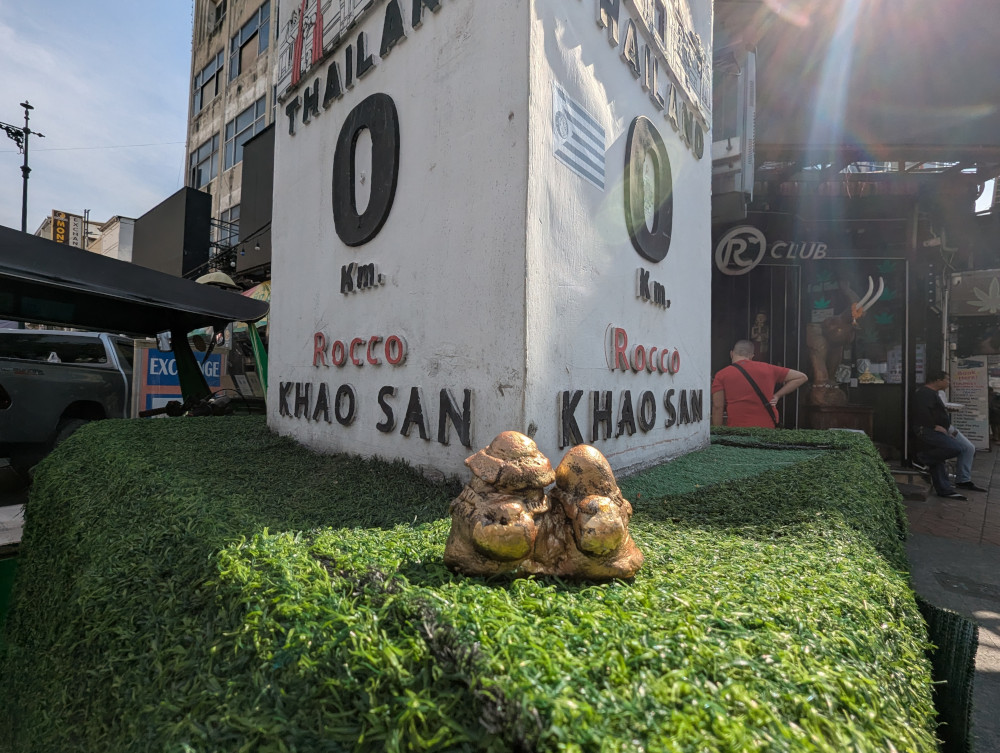
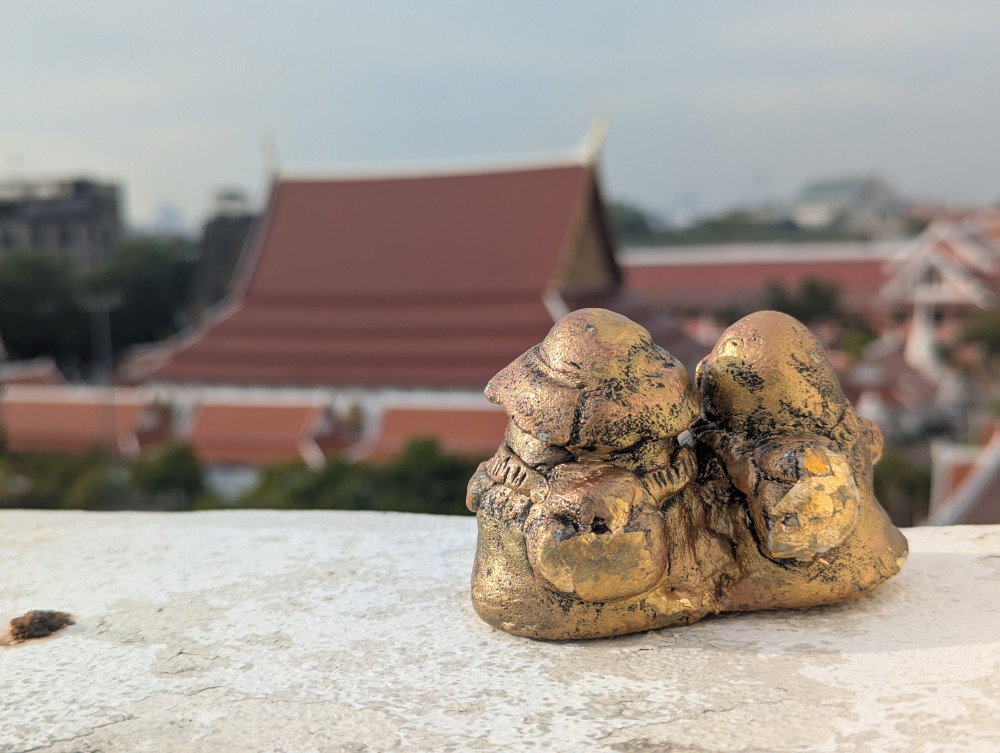

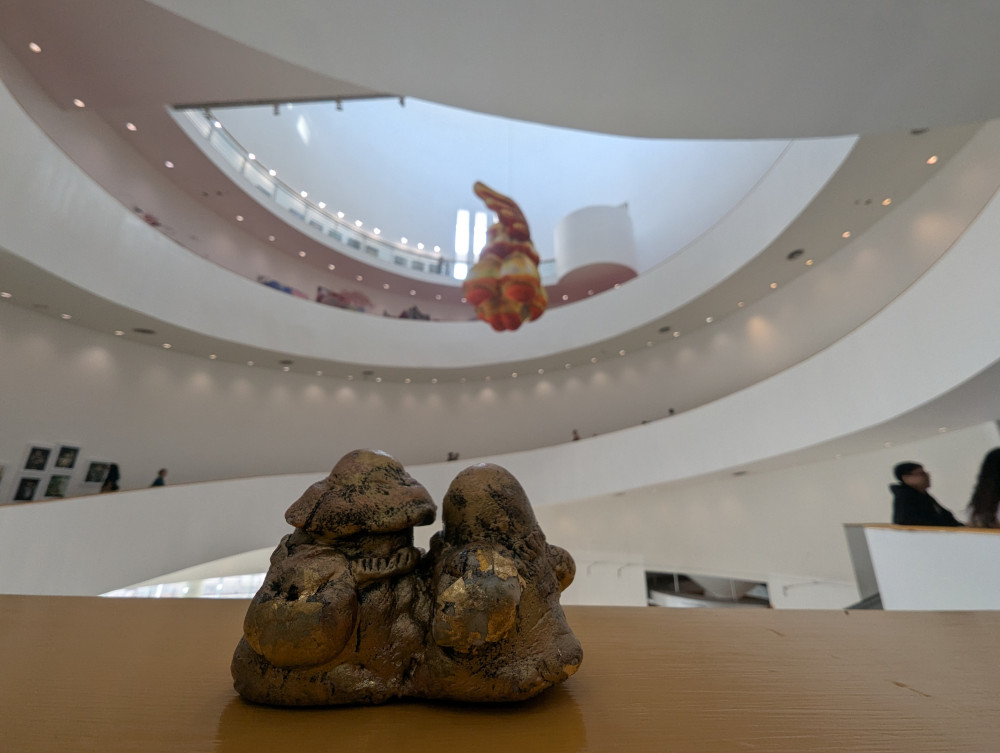
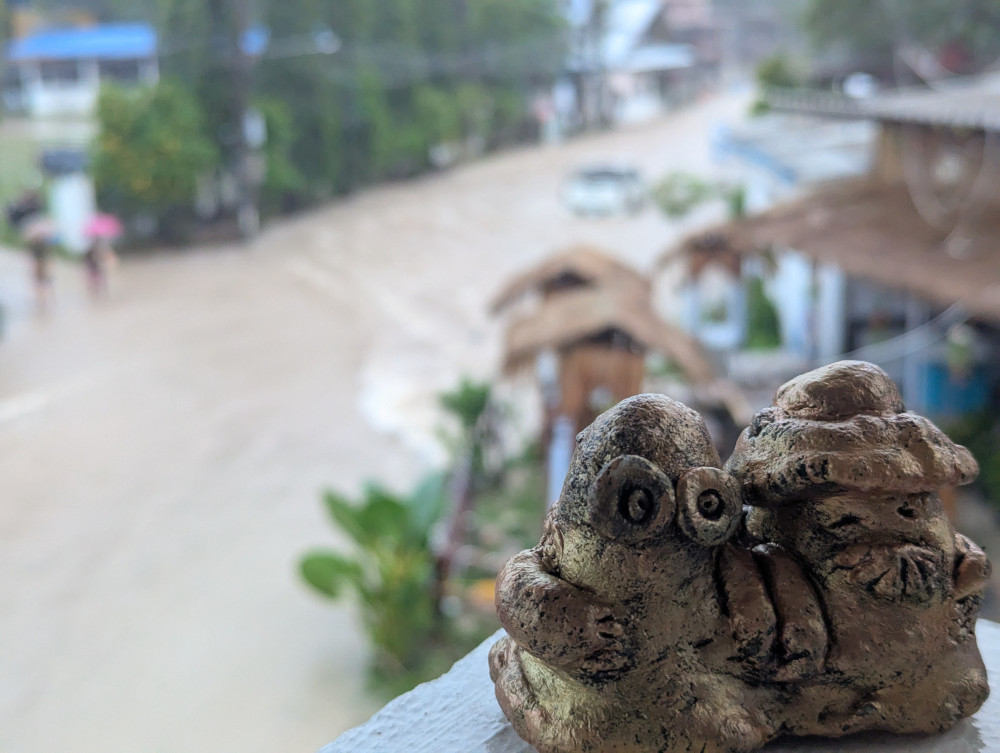
During heavy rain on Koh Tao, they began to soften and bloom. They were sent to the spirit house near Ao Leuk beach to negotiate for good weather. Not in vain — the next day the weather improved. They were left in that spirit house.
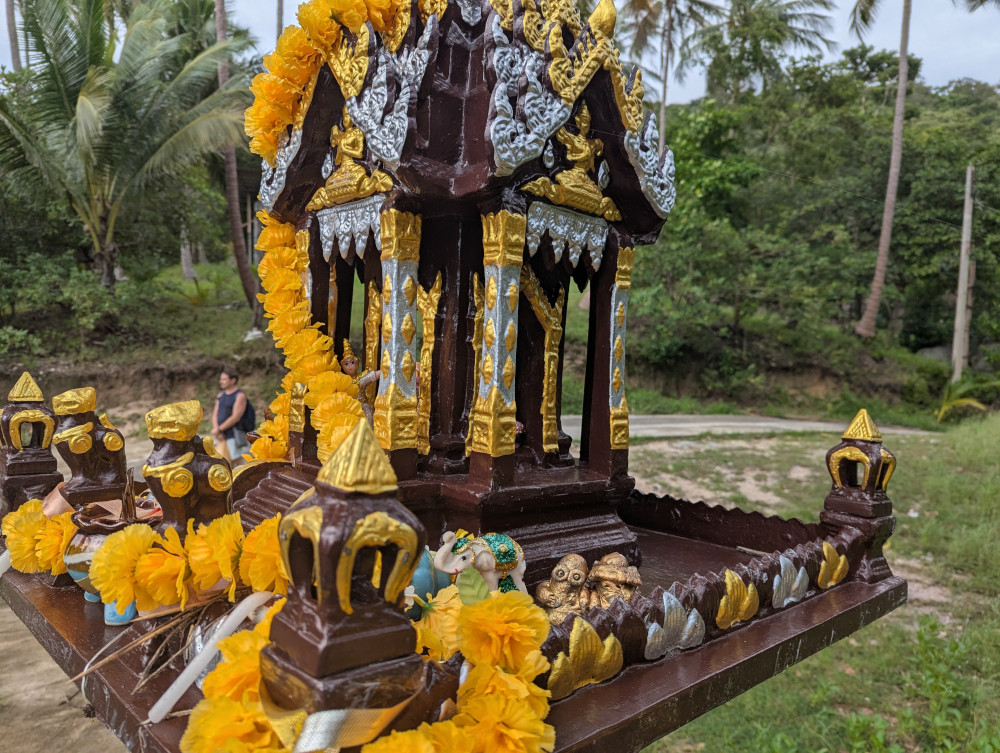
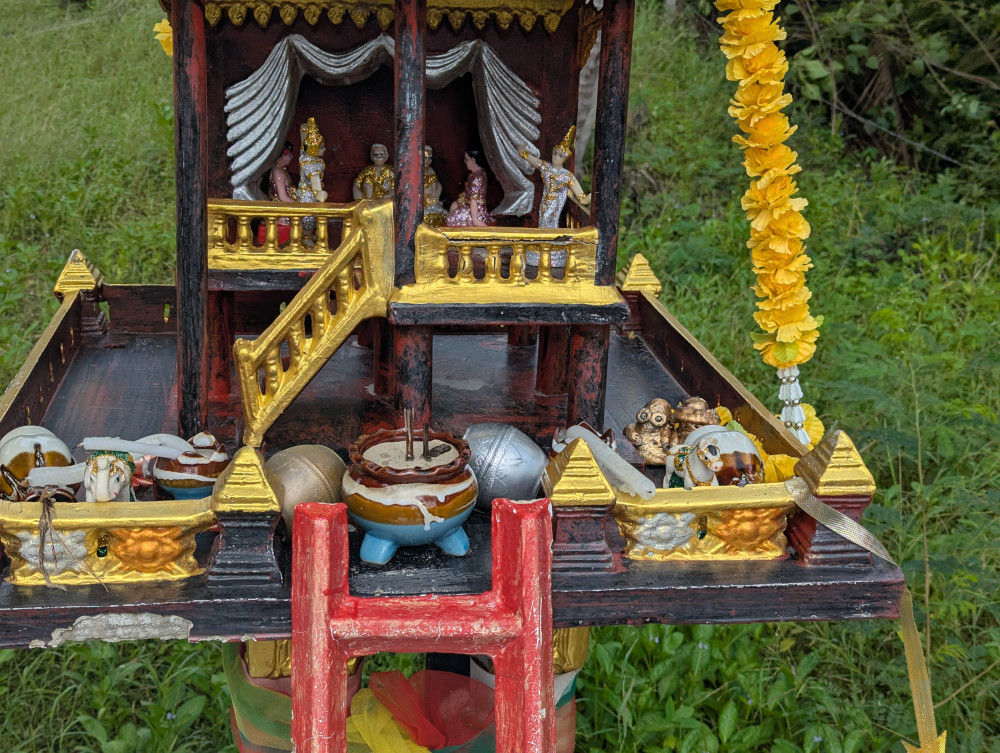
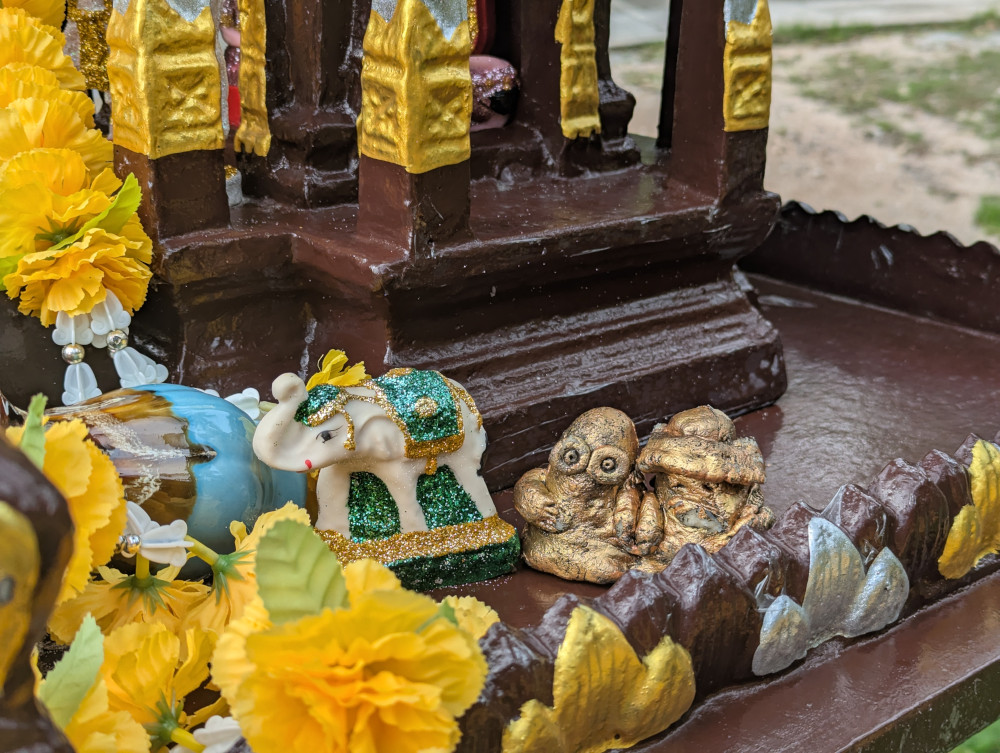
The project was carried out by the R² team.
Hungary
2018, 2020, 2021, 2024
The project, developed in collaboration with Dmitry Razev, is dedicated to exploring the phenomenon of deer stones — both ancient and contemporary, archaeological and symbolic, real and imagined. In our work, we combine artistic and scientific approaches: we research, document, interact with, and interpret these stones through the method of Revealed Realism.
What Are Deer Stones?
Deer Stones (Mongolian: Буган чулуун хөшөө) are stone stelae, often featuring anthropomorphic traits, with depictions of flying deer and other carvings. They range in height from 1 to 4.5 meters. These megaliths were created by ancient societies that existed between 1200 and 700 BCE in the territories of Mongolia and adjacent regions of Siberia.
Deer hold a prominent place on nearly all deer stones. The image is based on the Siberian subspecies of red deer (Cervus elaphus sibiricus). Early stones show very simple depictions of deer; over time, the drawings become more detailed. A gap of 500 years leads to the emergence of complex images of flying deer. The deer are depicted specifically as flying through the air, not merely running on the ground. Their antlers become elaborately decorated, featuring extensive spiral patterns that can cover the entire deer. Sometimes the antlers hold a solar disc or another sun-related symbol.
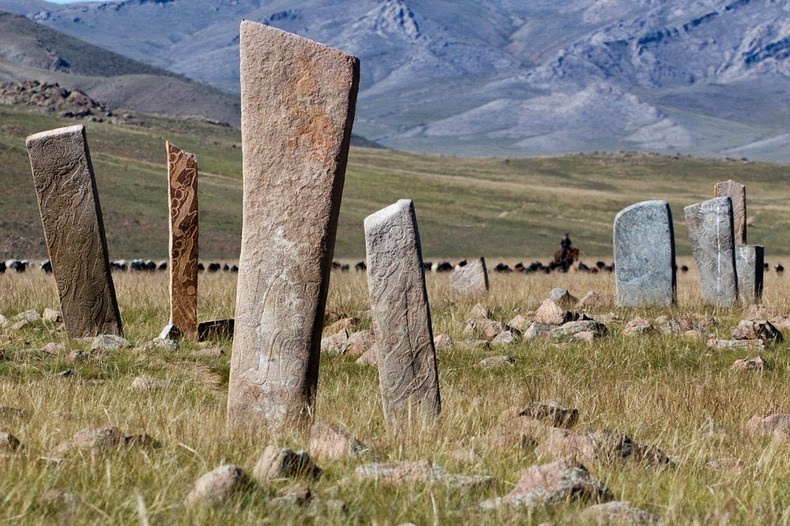

The tops of the stones are usually rounded or flat, often carved at an angle. Human faces appear much less frequently. When present, they are sometimes represented symbolically by a few neat diagonal strokes (//, ///).
Deer stones were part of the sacred rituals of ancient societies. Although the specific forms of megalith usage in rituals of these ancient cultures have not been fully established and may have varied across regions and throughout the 500-year period, there is no doubt that they played an important role in mediating the interaction between the human world and higher powers. The use of deer stones in religious ceremonies was known up until the early 20th century. [1 2]
Modern “Deer Stones” of Hungary
It is remarkable that Hungary is home to contemporary sculptures that closely resemble ancient deer stones in form, content, and symbolism. As part of our project, we explored several such monuments: photographing them, researching their creators, contacting local information services, documenting our findings, and engaging with the works on a creative level.
“Tree of Life” (Életfa)
Artist: Péterfy László, with the collaboration of Szerdahelyi Károly
Year of Installation: 1980
Location: Zalaegerszeg, Petőfi utca 39.

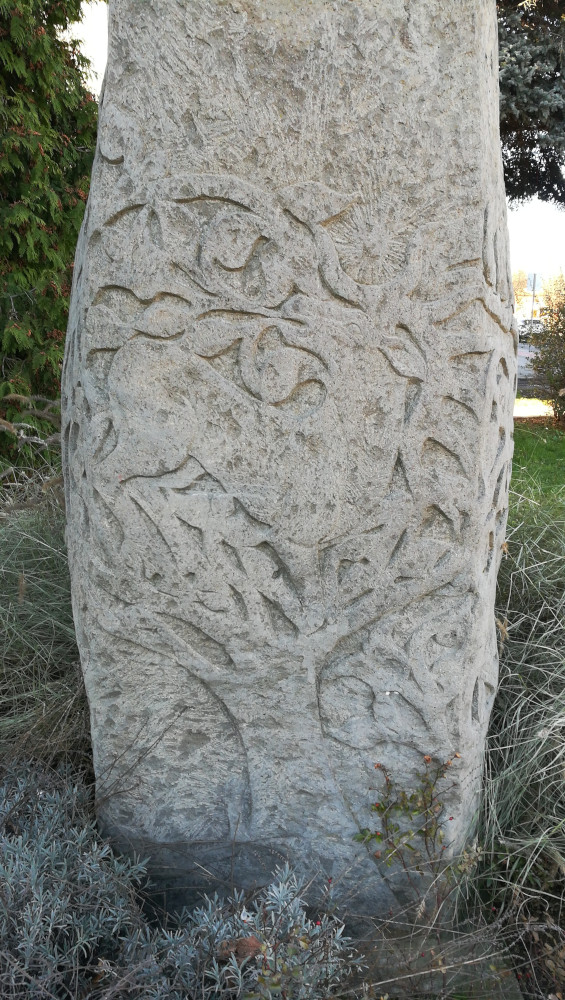

The sculpture was originally installed in 1980 in the square in front of the Zalaegerszeg Town Hall. In 1989, with the placement of the equestrian statue of Zrínyi in that same square, the Életfa was relocated to a small park at the corner of Ady Endre and Kisfaludy Sándor Streets. However, this would not be its final site. On May 5, 2022, the sculpture was moved once again—this time to its current location at Petőfi utca 39, in the courtyard of the Zala County Regional Organization of the National Hungarian Hunting Chamber and the Zala County Association of Hunters and Hunting Enterprises. After restoration, it is once again open to the public.
Description:
Carved from an 8-ton sandstone block that tapers toward the top, the sculpture is covered with animated scenes of life. Mythical and folkloric figures of humans and animals intertwine with gently swaying plants and trees. On the front side, a stag is depicted with a solar disk between its antlers. [1 2 ]
“The Conquest of the Homeland” (Honfoglalás)
(Also known as: “Deer Stone” (Szarvaskő))
Artist: Harmat Ferenc, with the participation of Piszter Péter
Year of Installation: 2003
Location: Balatongyörök, Kossuth Lajos u. 29
This sculptural group is situated in a small park within the courtyard of the municipal building complex.
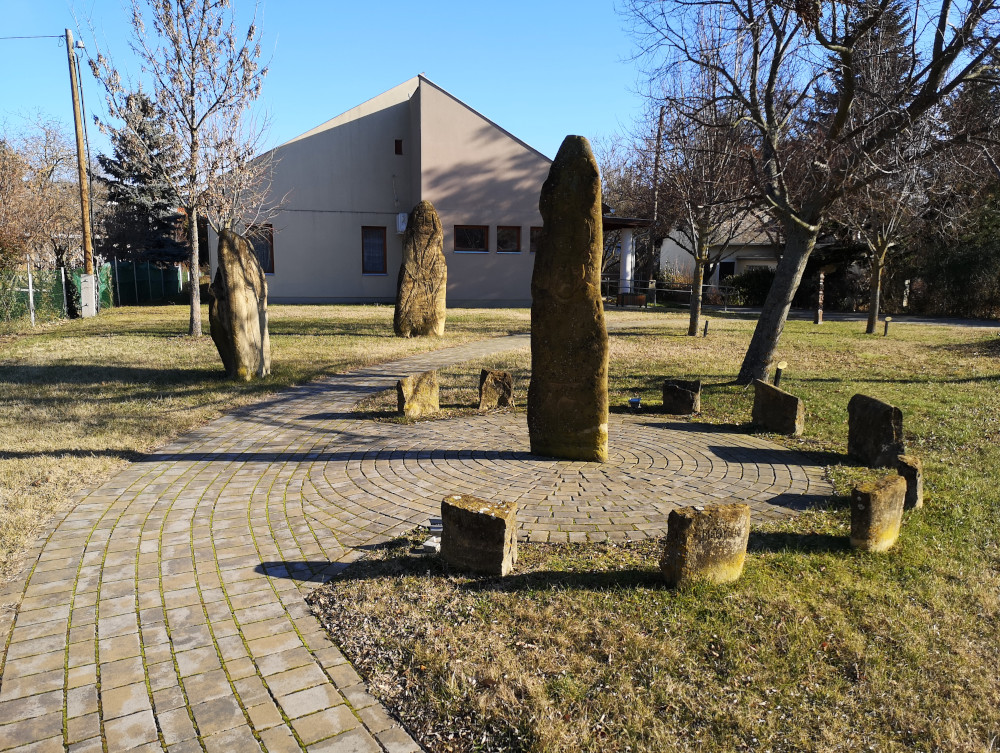
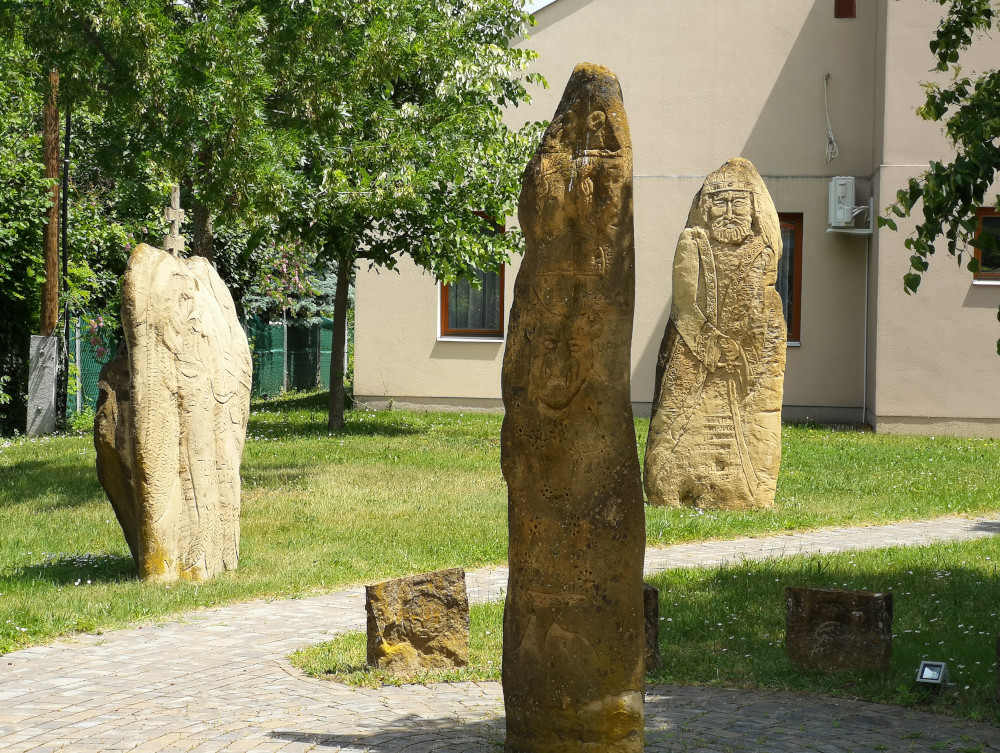
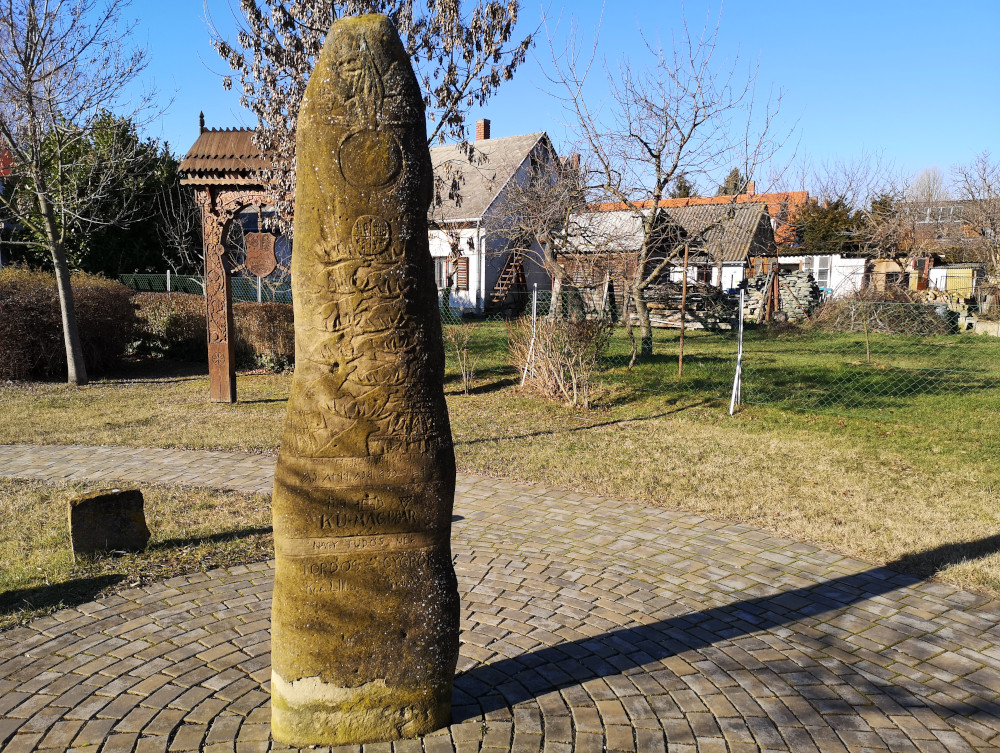

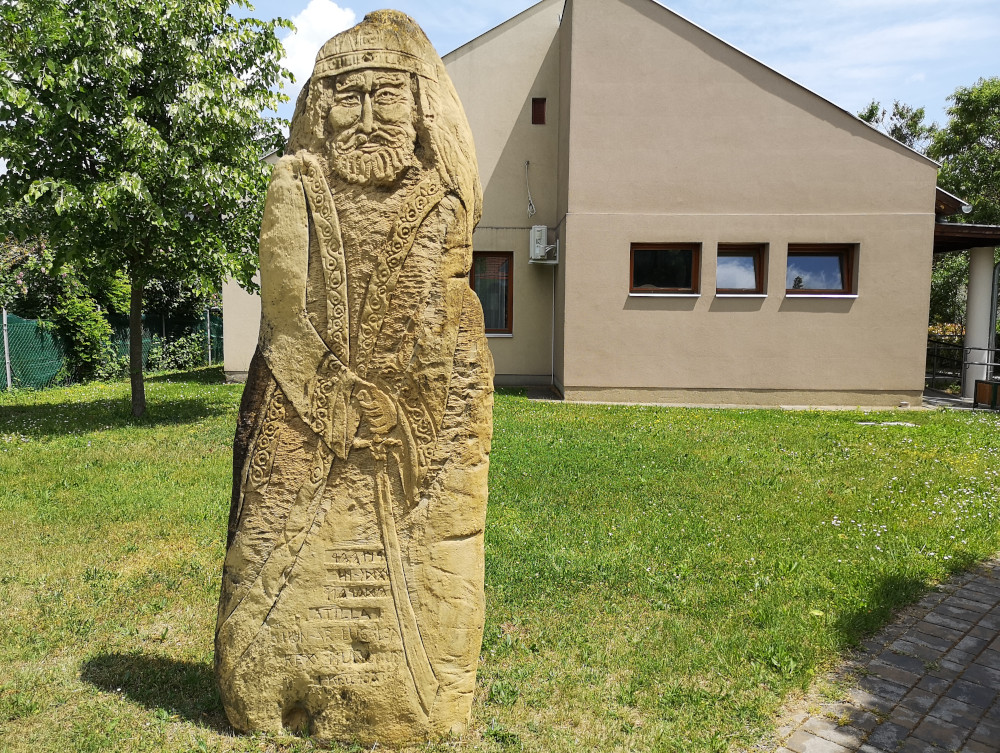
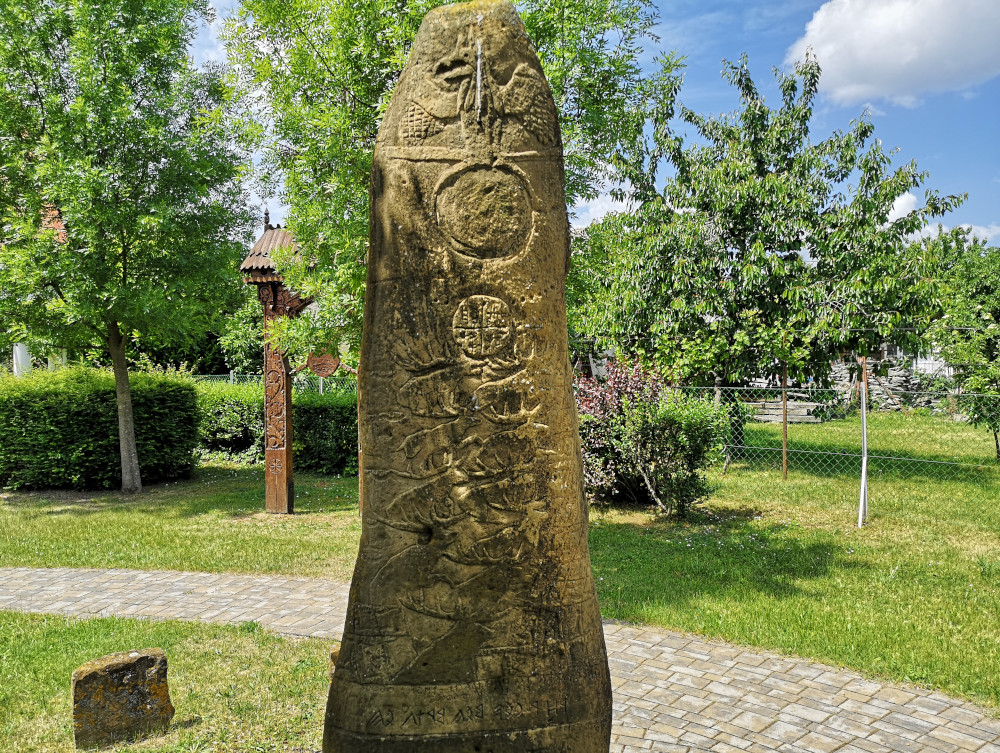
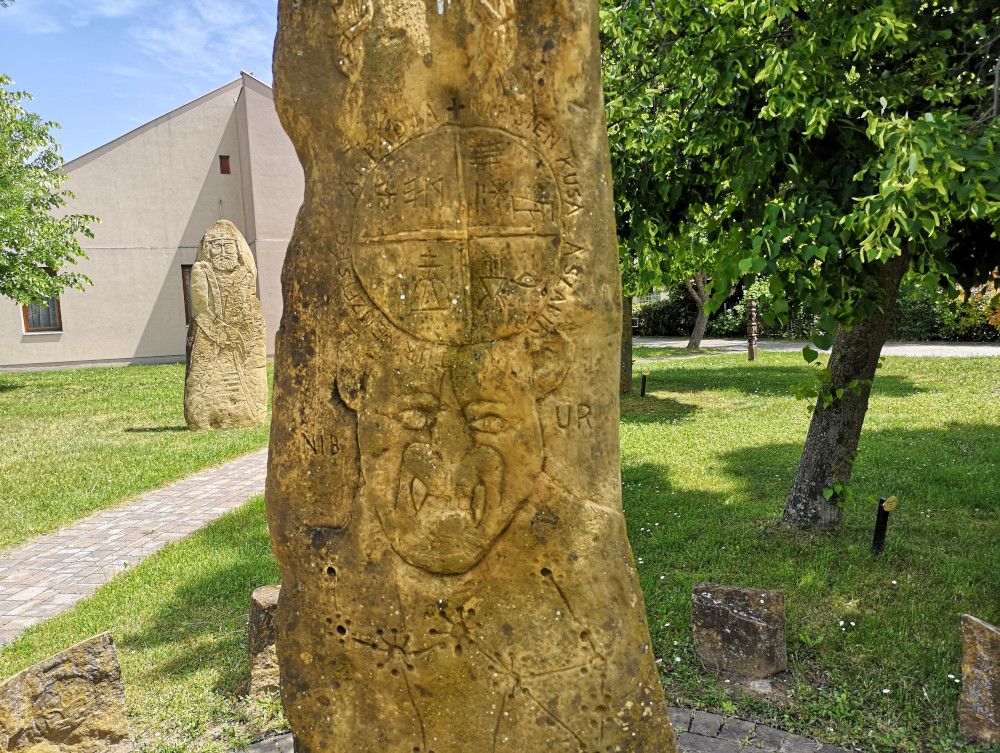
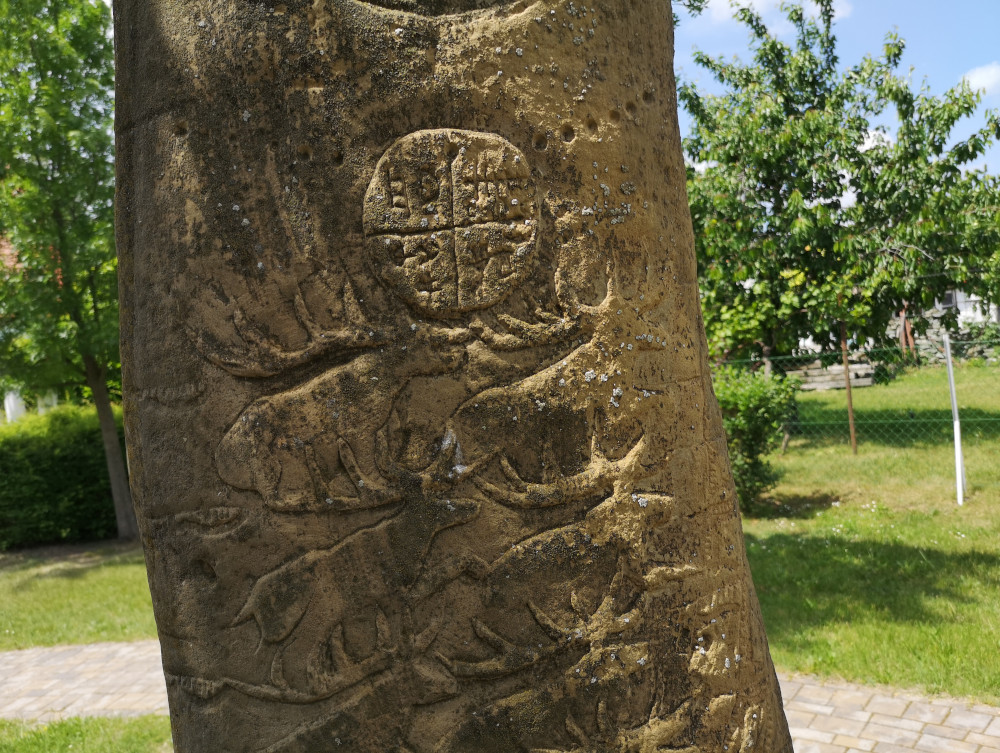
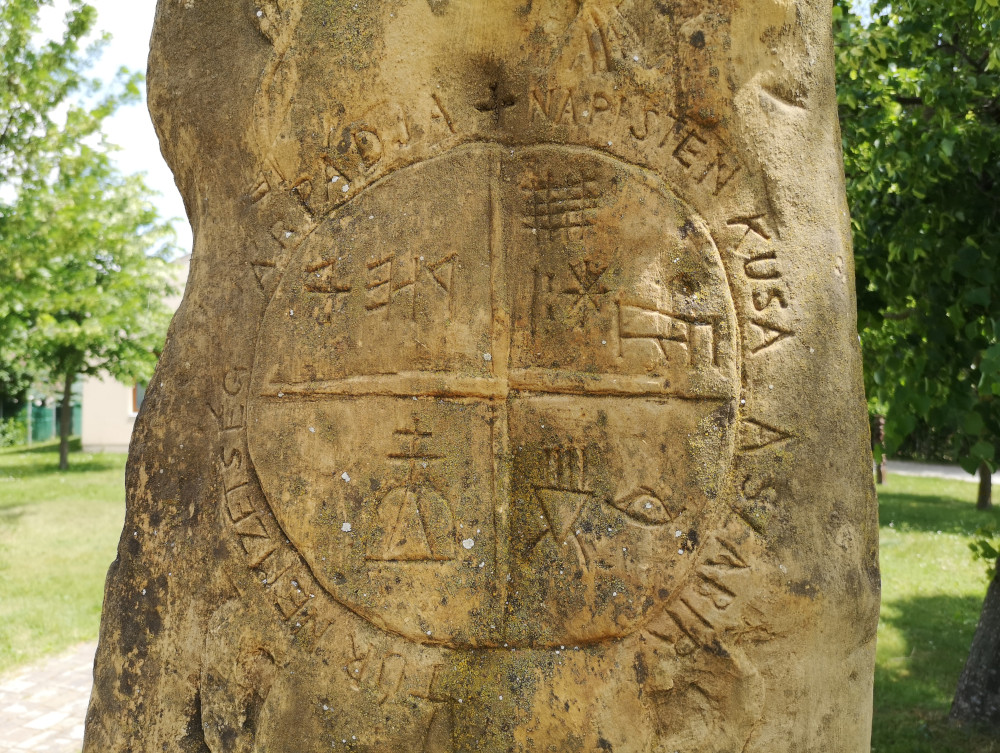
Description:
The sculptural ensemble consists of three large engraved sandstone monoliths arranged in a semicircle. The eastern stele features a depiction of a warrior in the style of the steppe balbal stone statues. The central figure bears the image of the mythical Turul bird. The western stele is surrounded by small stone plaques inscribed with the names of legendary chieftains of the Hungarian tribes. One side of this stele displays the Orion–Nimrud constellation. On the other, rows of deer are engraved, ascending upward in a dynamic, ritual procession.
Frottage as a Form of Artistic Interaction
We conducted a series of frottages from these monuments in 2018, 2020, 2021 and 2024.
Materials: paper and wax crayons.
In this context, frottage is not only a method of capturing texture — it becomes an independent artistic act. The original sculptural idea merges with the material and gesture of the artist. The relief, surface, and traces of time enter into dialogue with the drawn line and the hand of the one making the imprint. [Instagram 1 2] [youtube]
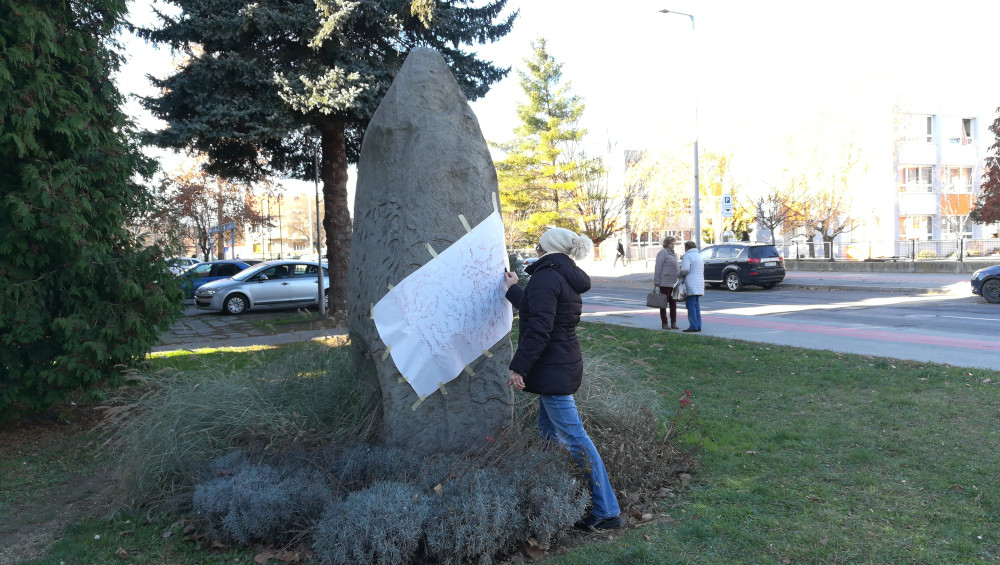
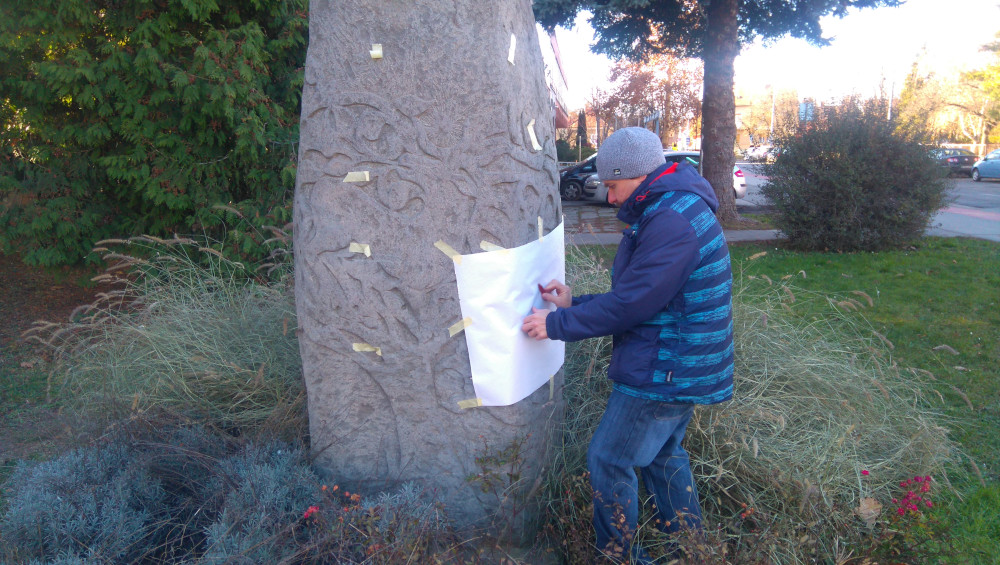
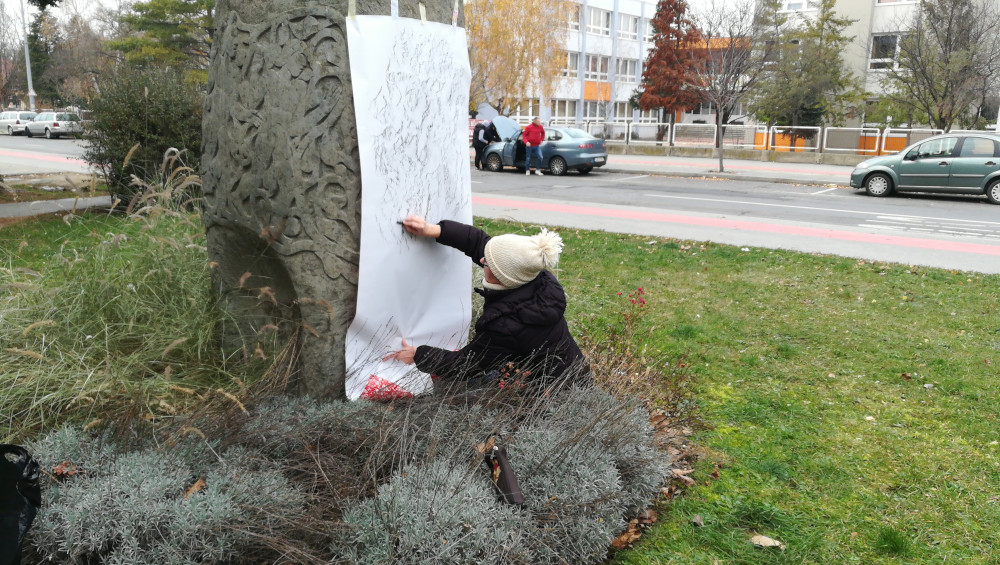
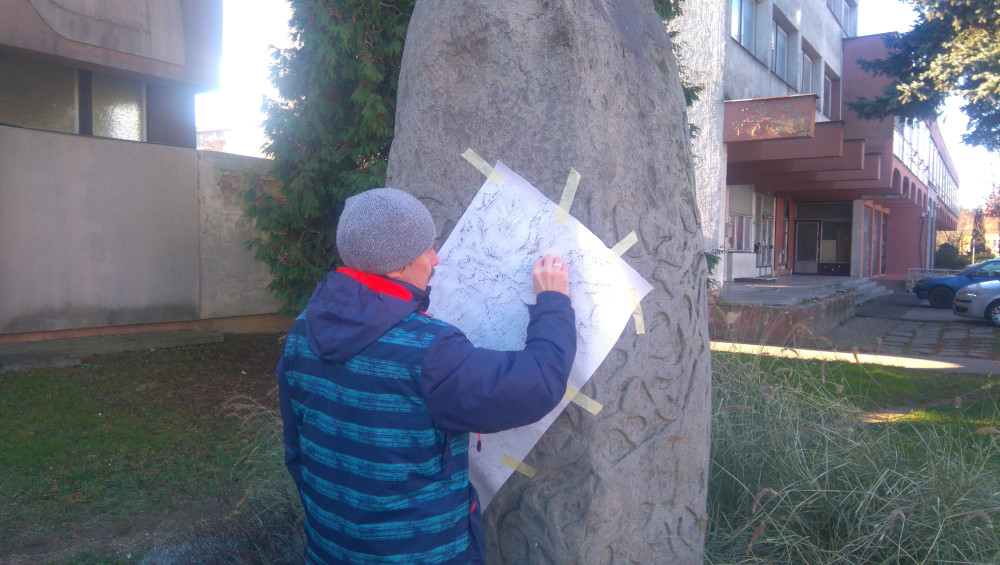
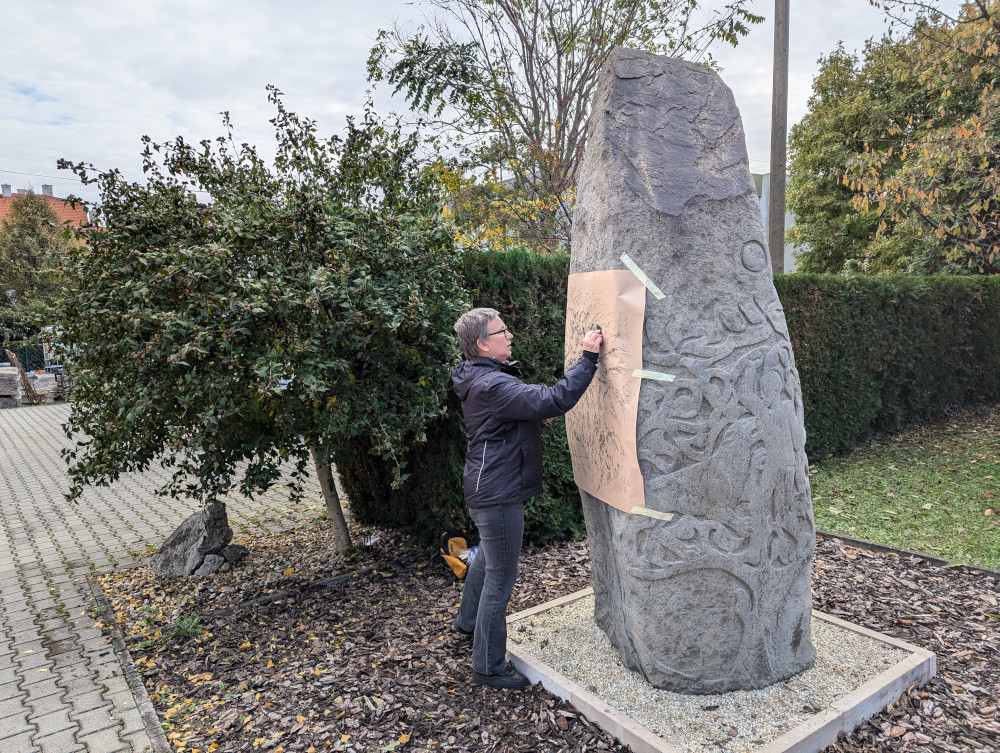
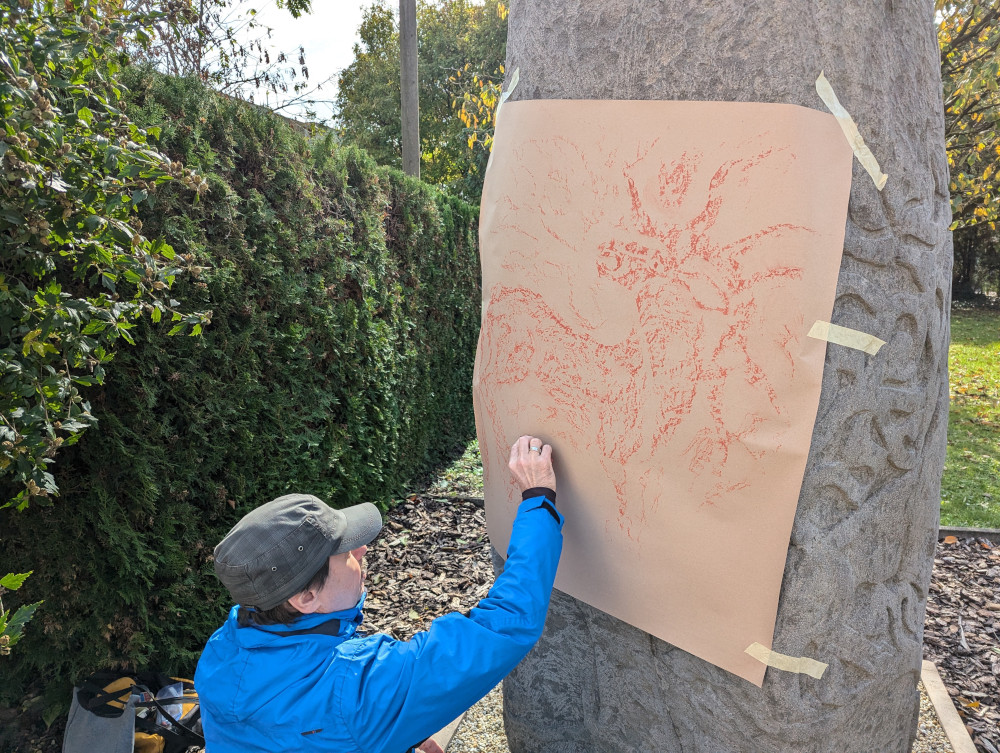

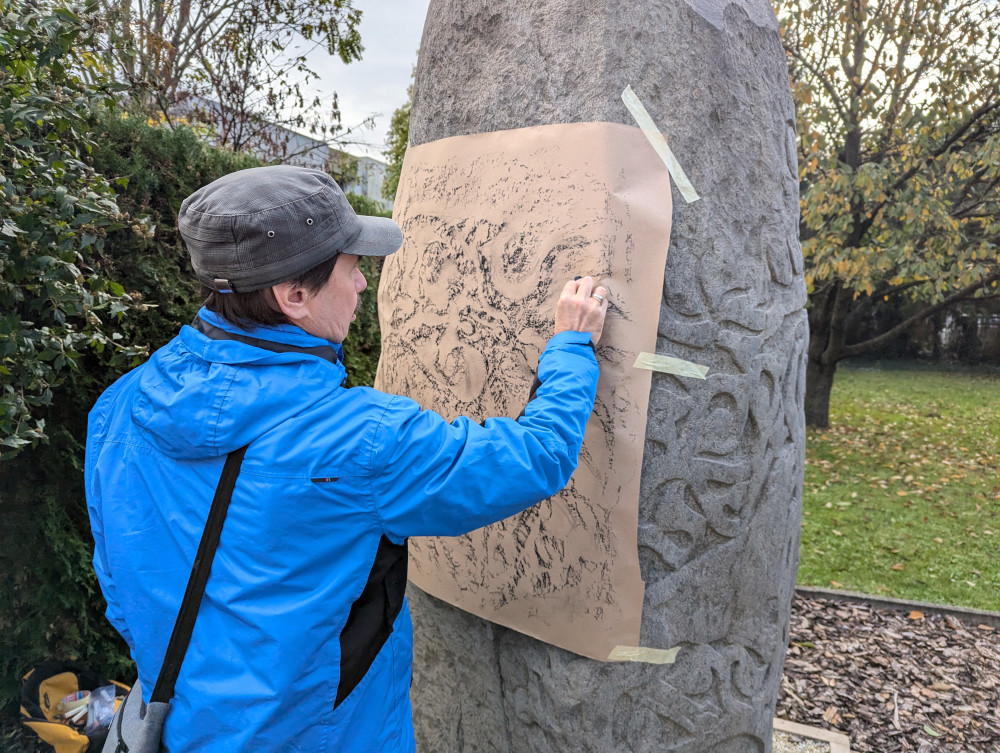
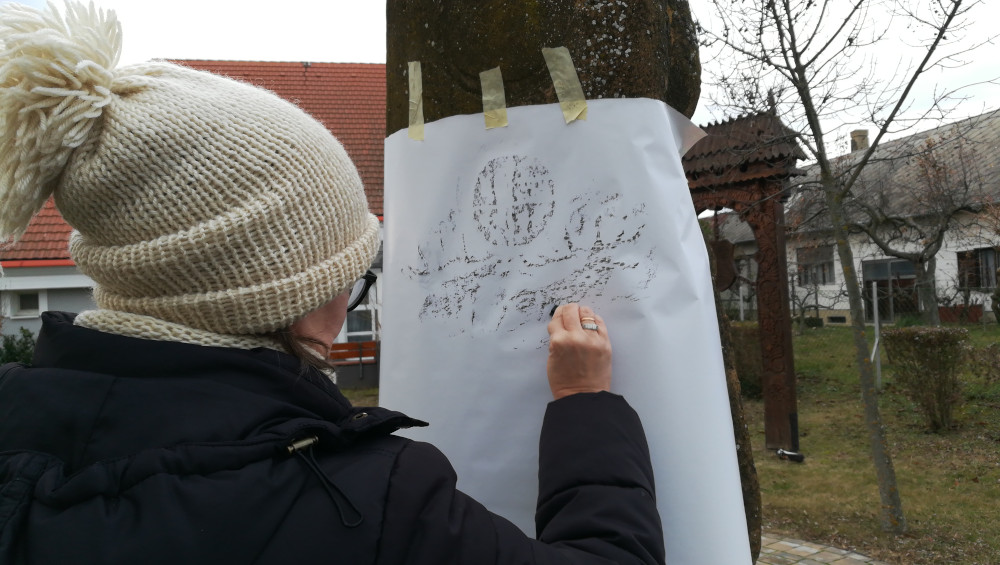
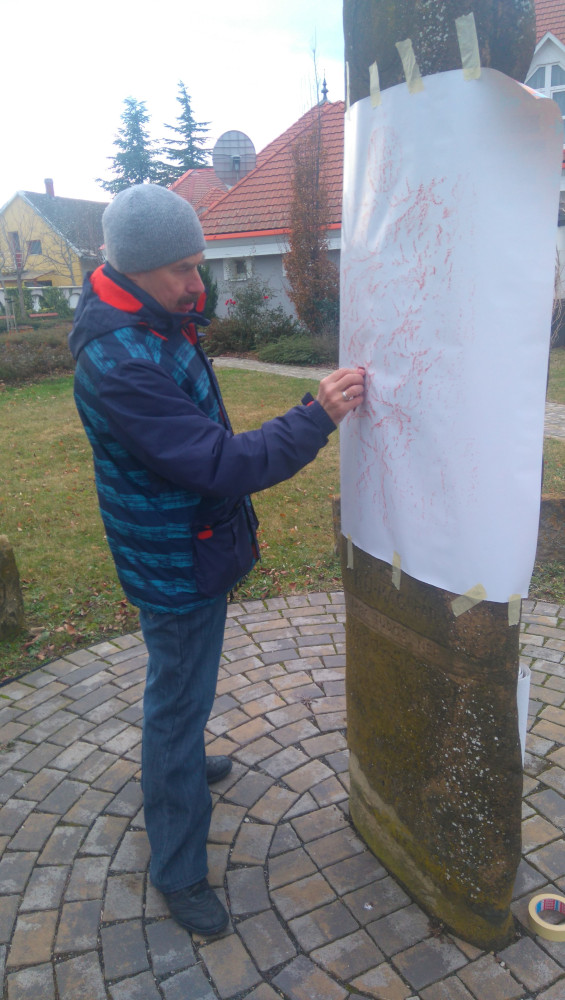
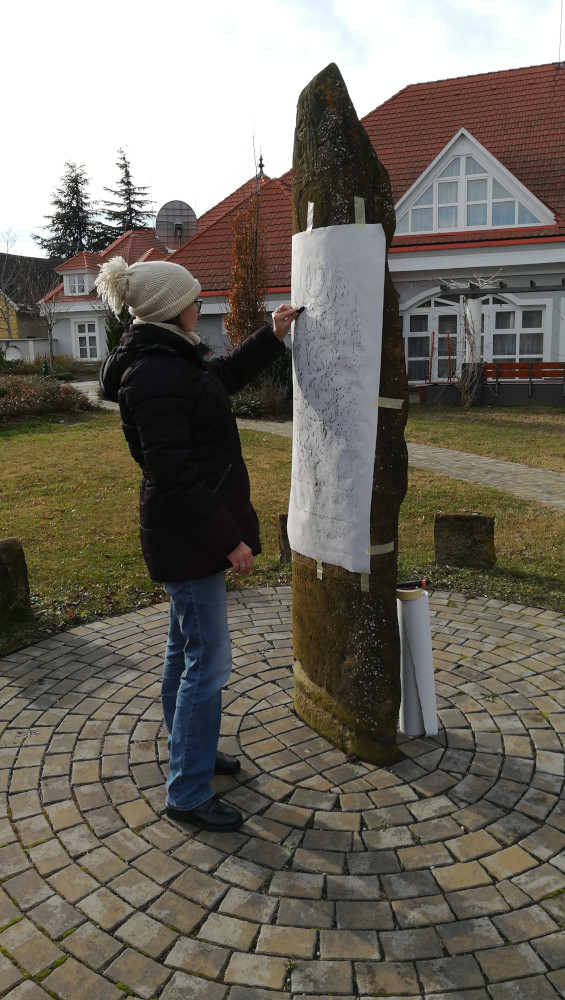

These works were exhibited as part of the international art and educational exhibition project “DeerLand“ [Instagram 1 2 3]
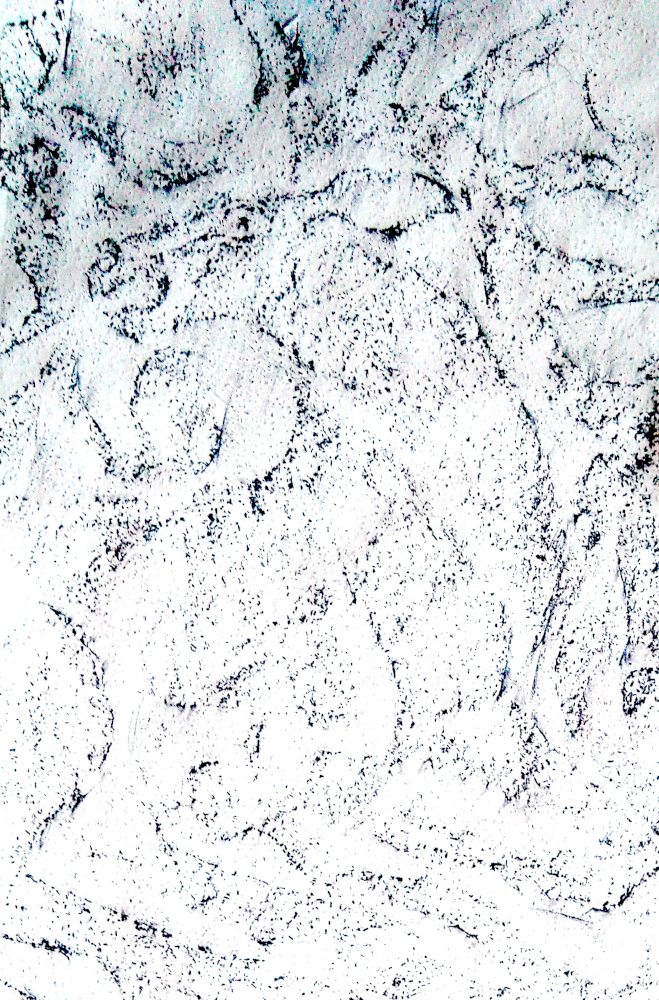
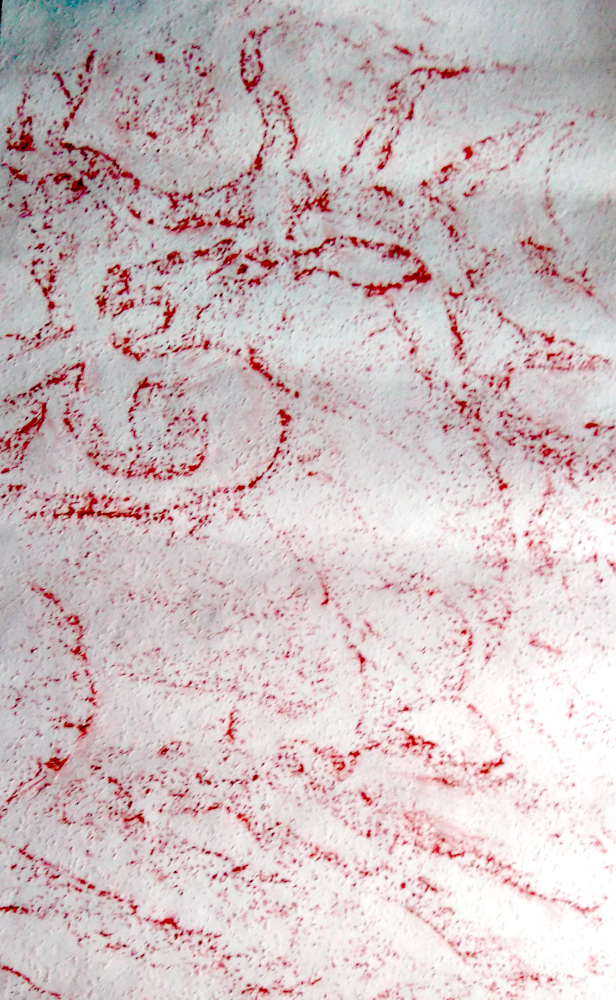
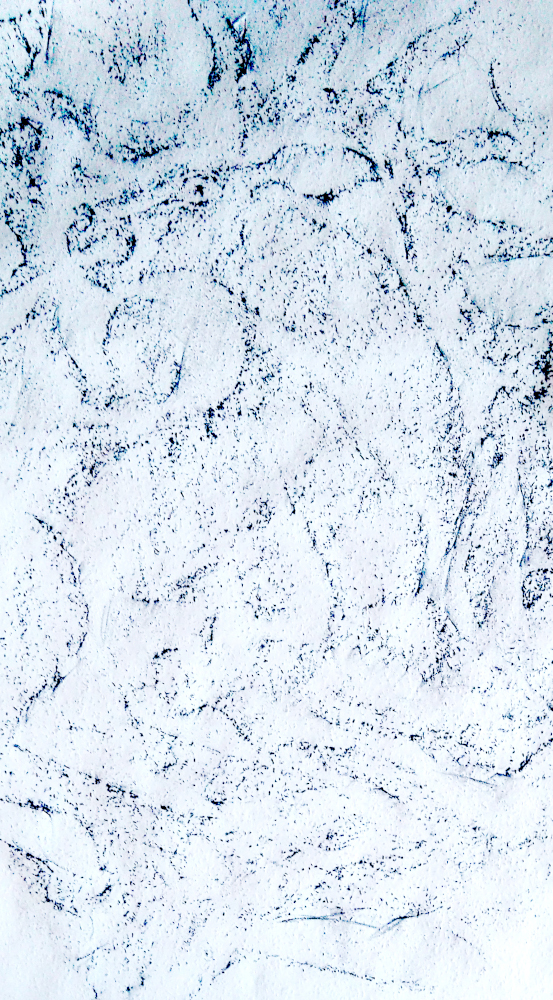
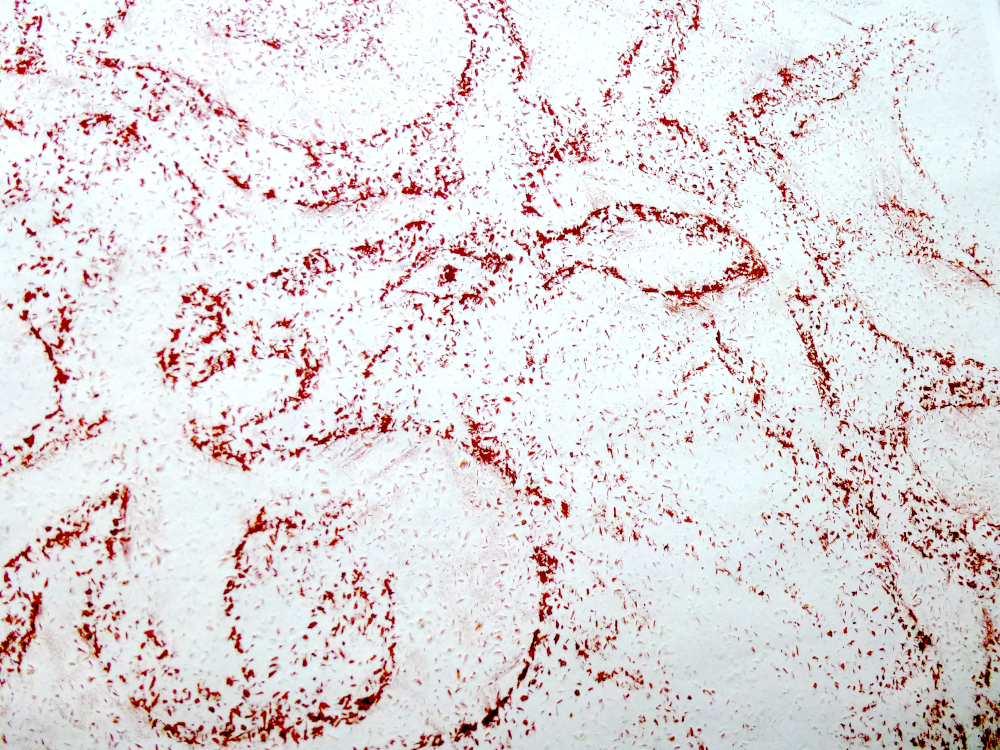
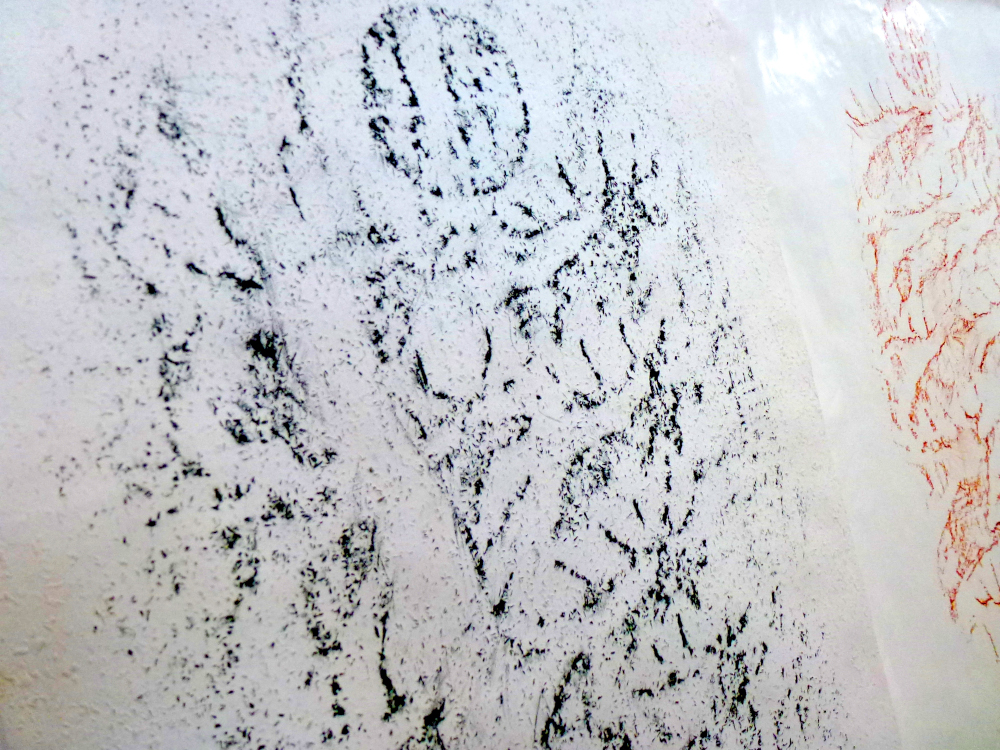
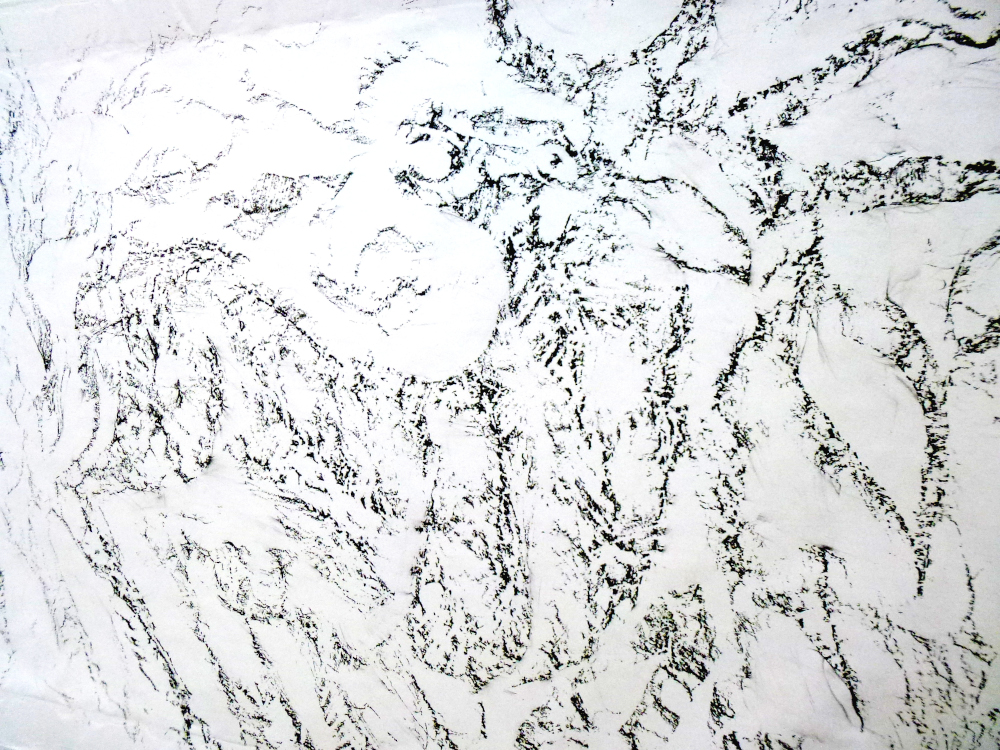
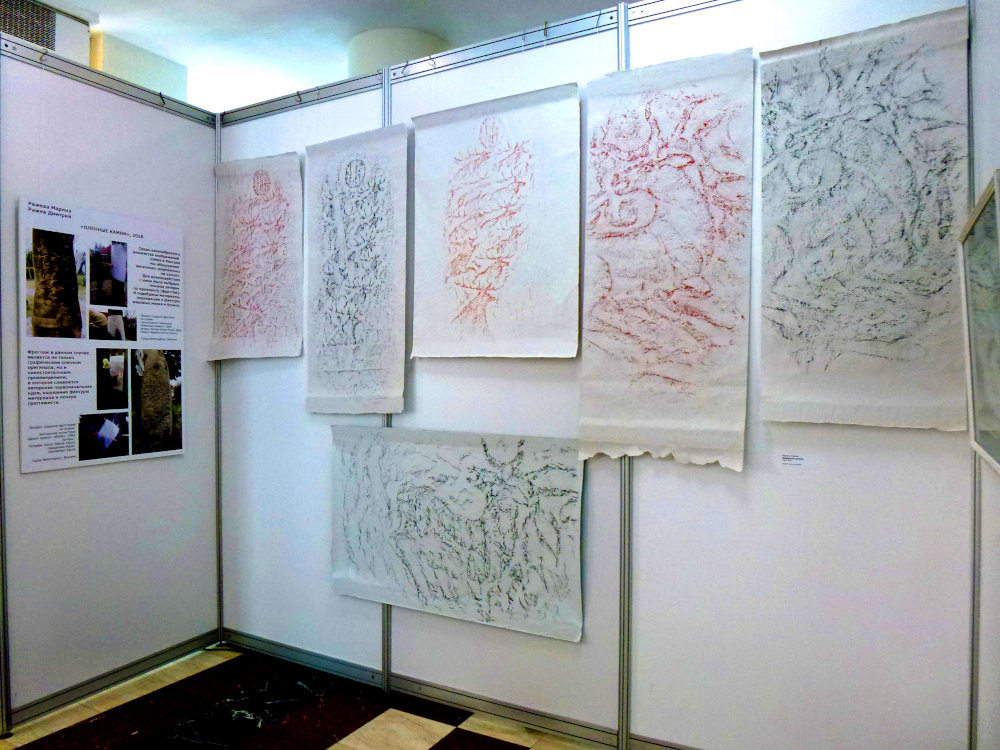
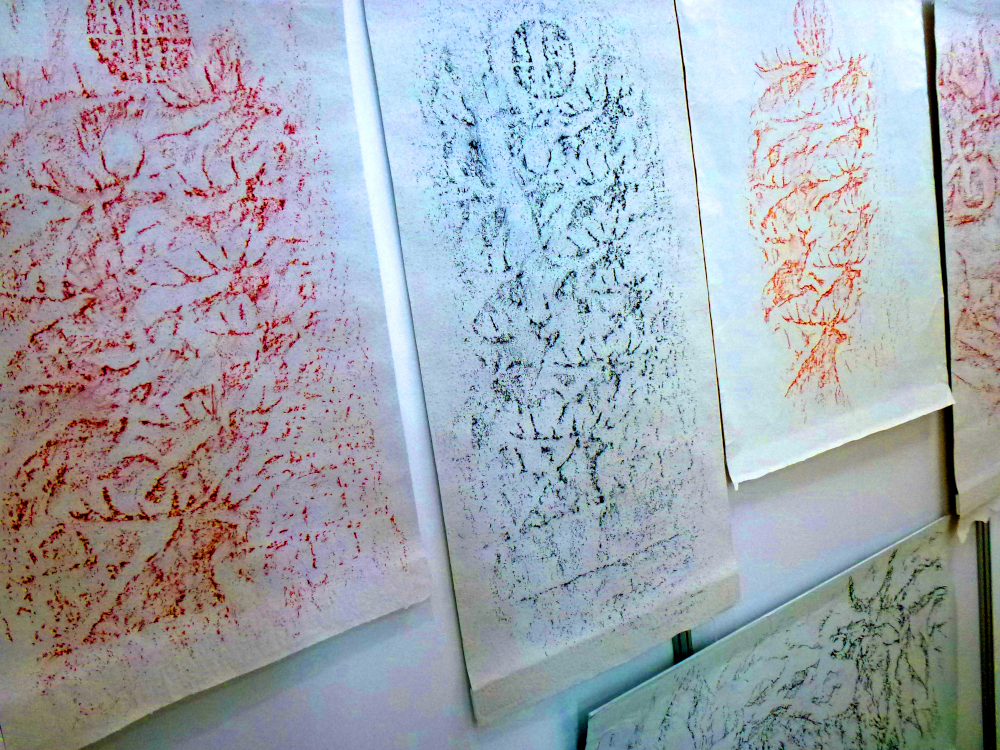

“Field of Deer Stones”
Location: Approximately 5 km south-southeast of Nyirád, in a forest-steppe landscape on the grounds of a long-abandoned military installation.
Author & Date: Created by time, people, and nature.
On a gentle hillside, we discovered rows of concrete posts embedded in the ground at an angle. While their original function is unclear, they are likely remnants of military engineering — possibly barriers or training obstacles from a former late-20th-century training ground.

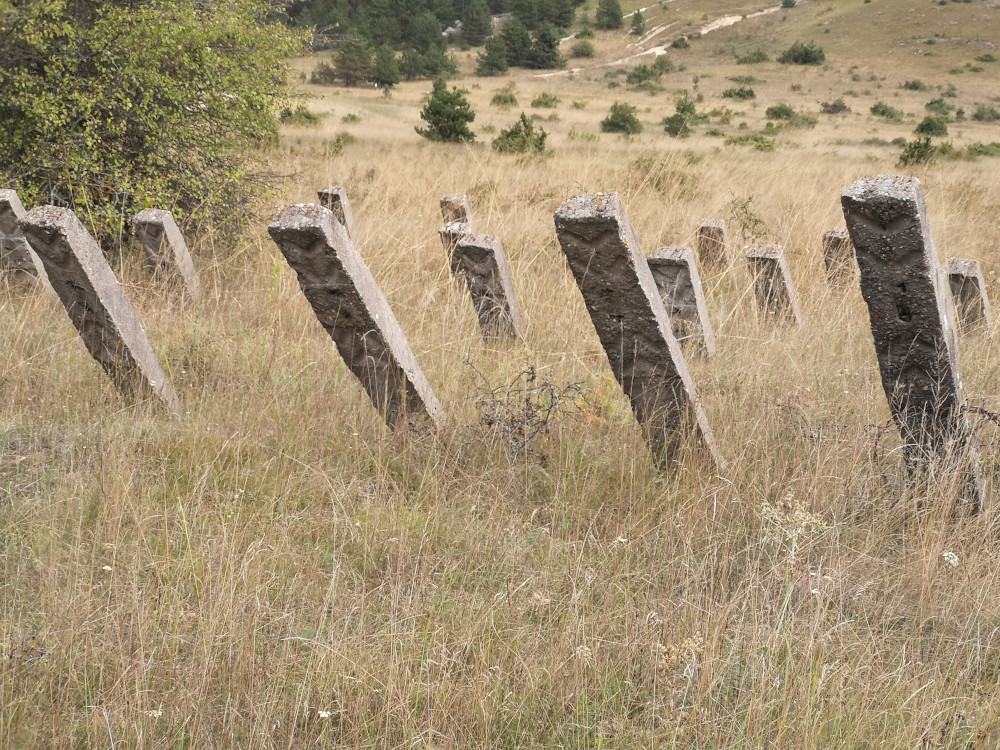

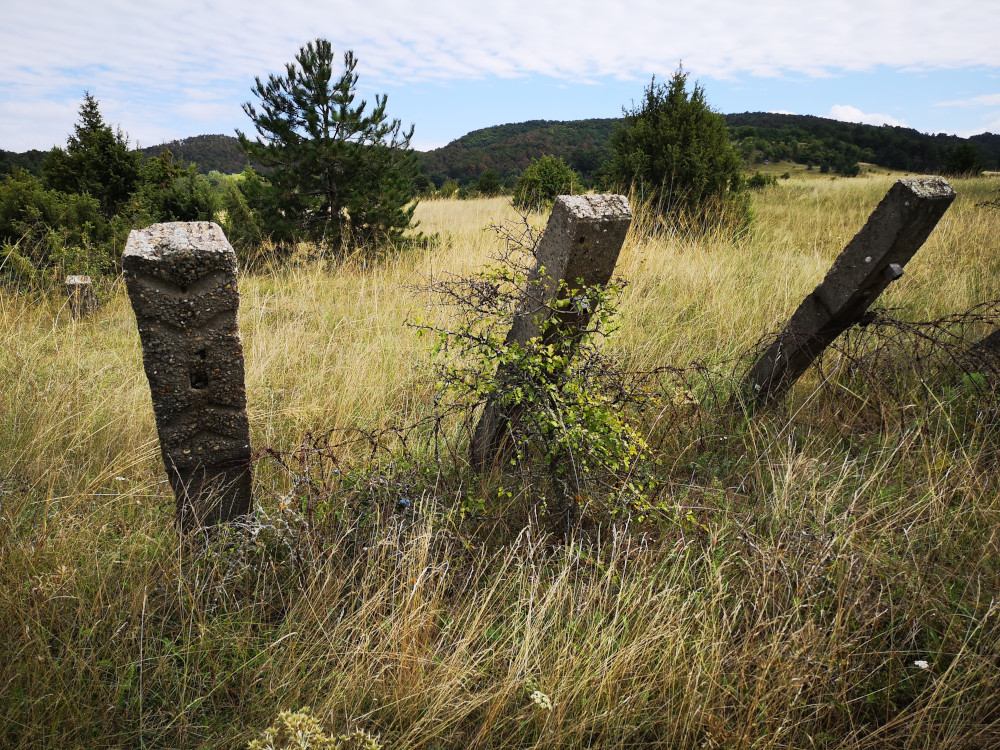
The layout and shape of these structures may be accidental. Yet visually, they evoke strong associations with megalithic alignments — menhirs, deer stones, and ancient stelae. This resonance becomes even more pronounced through artistic processing.
We documented these forms as “found artifacts” and digitally enhanced the images to emphasize their resemblance to ancient monuments. Thus emerged the Field of Reindeer Stones — a visual reconstruction of a myth arising from the intersection of nature, forgetting, and incidental form.

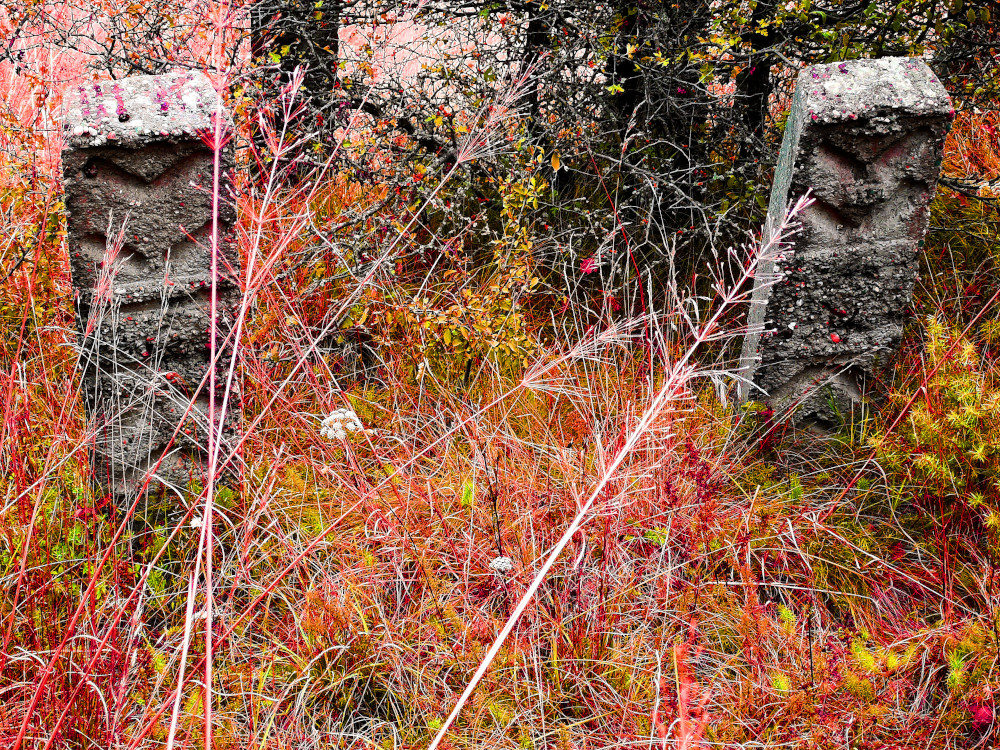
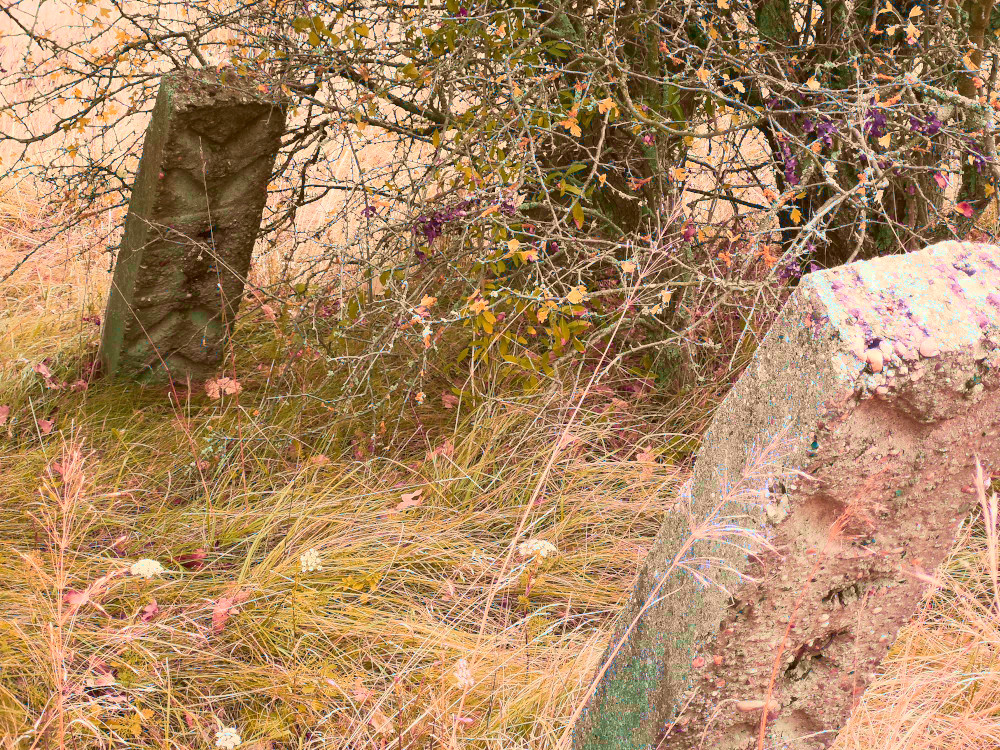

The project draws on the traditions of Siberian and Ural-Altaic deer stones — ancient burial markers carved with weapons, antlers, and symbols connecting different realms. Here, in the Hungarian landscape, a modern echo appears — perhaps unconsciously, perhaps by chance. Yet in this field of frozen forms, the ancient motif of the mediator between worlds seems to reawaken.
This is a powerful example of the “archaeology of the present”: utilitarian structures with lost meaning come to be seen as new archetypes, generating myth.
The series reflects the aesthetic of Revealed Realism: the object is found, but the meaning is overlaid. This corner of the Hungarian cultural landscape became a naturally found site for reinterpreting history, memory, and form — perfectly aligned with our method.
Conclusion
By tracing the echoes of ancient deer stones across time and geography — from Bronze Age Mongolia to the Hungarian cultural landscape — our project reveals how symbols survive, resurface, and transform. Through the lens of Revealed Realism, we seek not only to document but to awaken dormant layers of meaning in the world around us. Whether carved in granite or cast in concrete, the image of the deer continues to mediate between the visible and the invisible, the historical and the mythic, the past and the present.
Installed on May 14, 2024
Zsolnay Quarter, Pécs (Hungary)
Materials: apple, acrylic

The golden apple embarked on a journey through the historical labyrinth of the Zsolnay Quarter — between time and space, history and modernity, art and the street, matter and reflection.
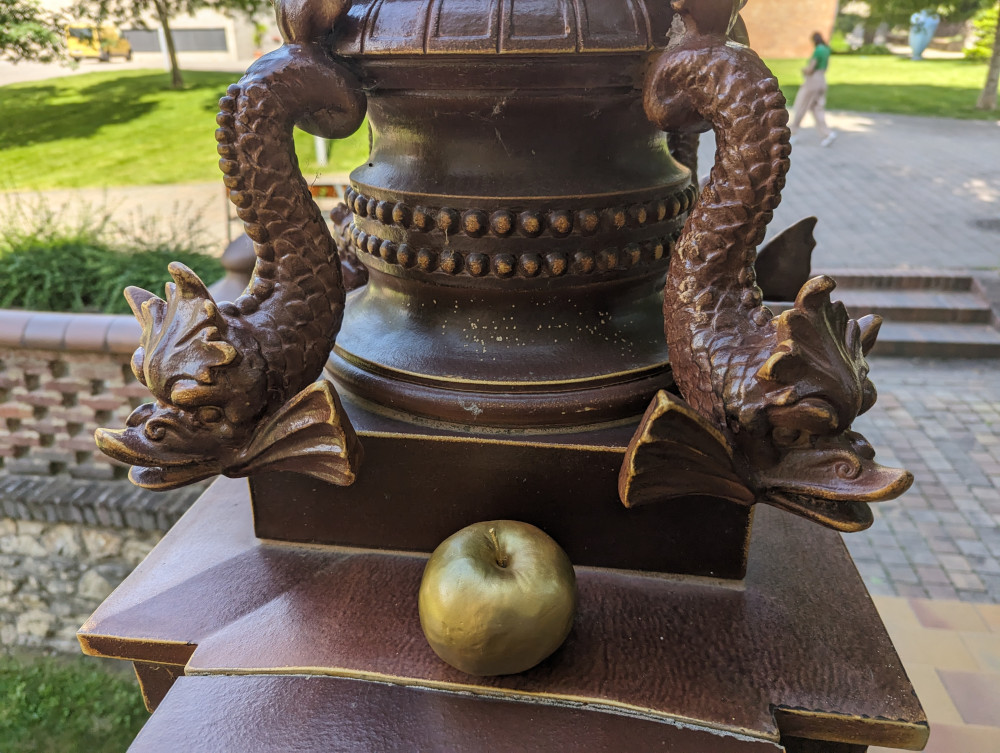

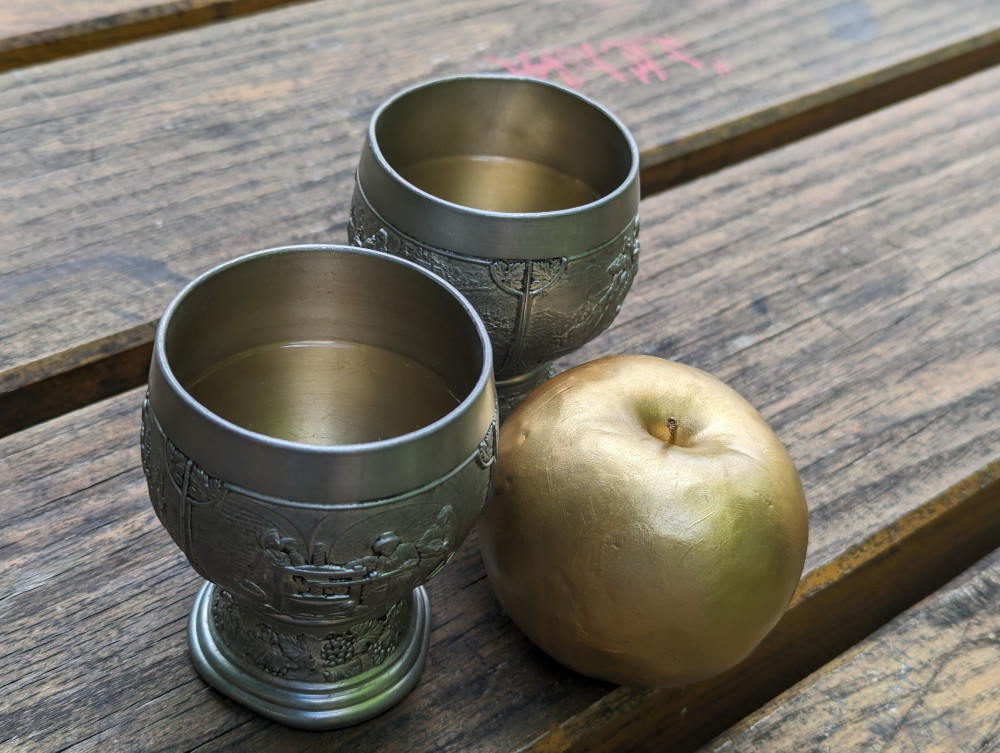
The apple did not merely travel through the quarter — it entered the exhibition space, becoming for a moment part of the “official” history of the Zsolnay Golden Age, but then stepped beyond its boundaries once again, dissolving into the real environment.
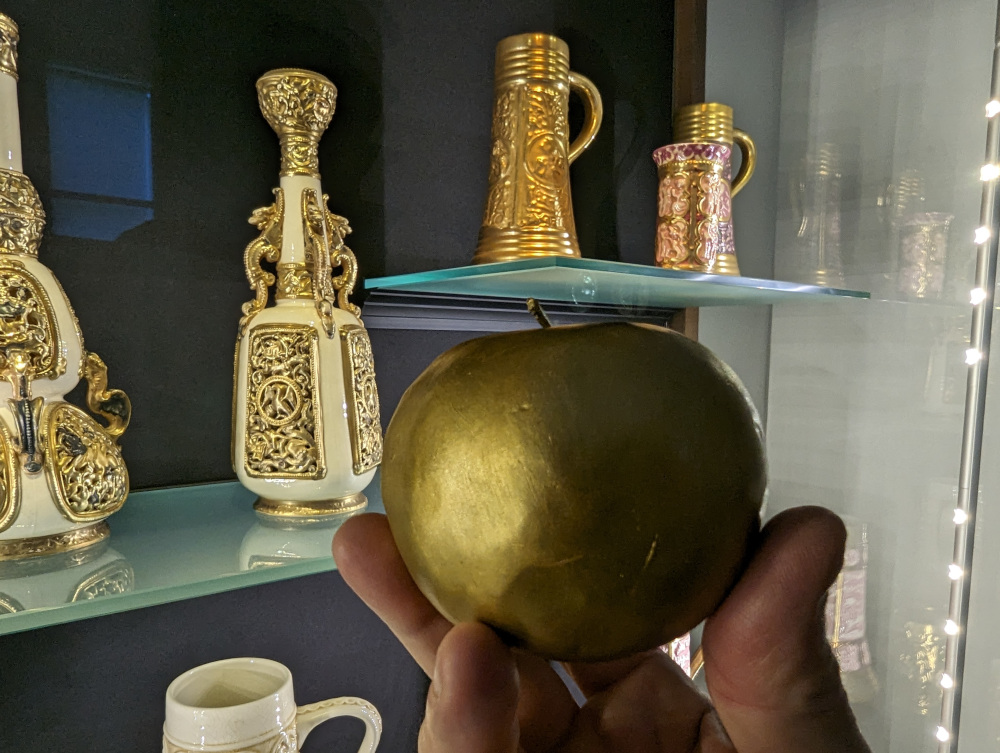


Its journey was documented in a series of photographs: the apple reflected the sun, glided across the textures of the space, as if tasting the matter of time. Each frame is a moment of choice between motion and stillness, disappearance and presence.
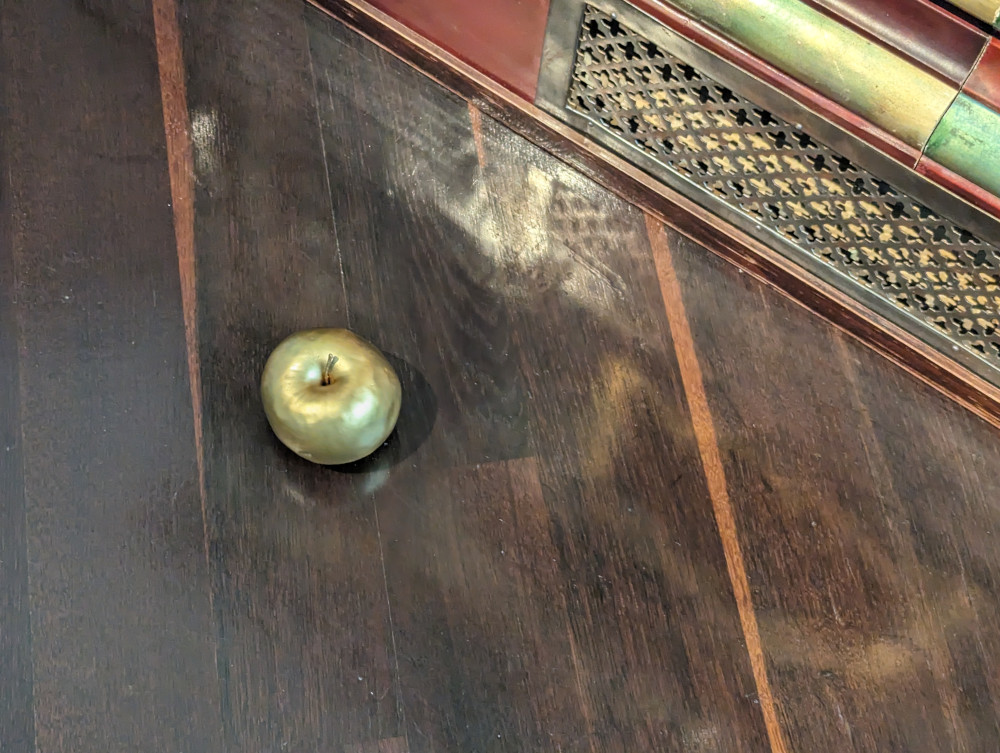
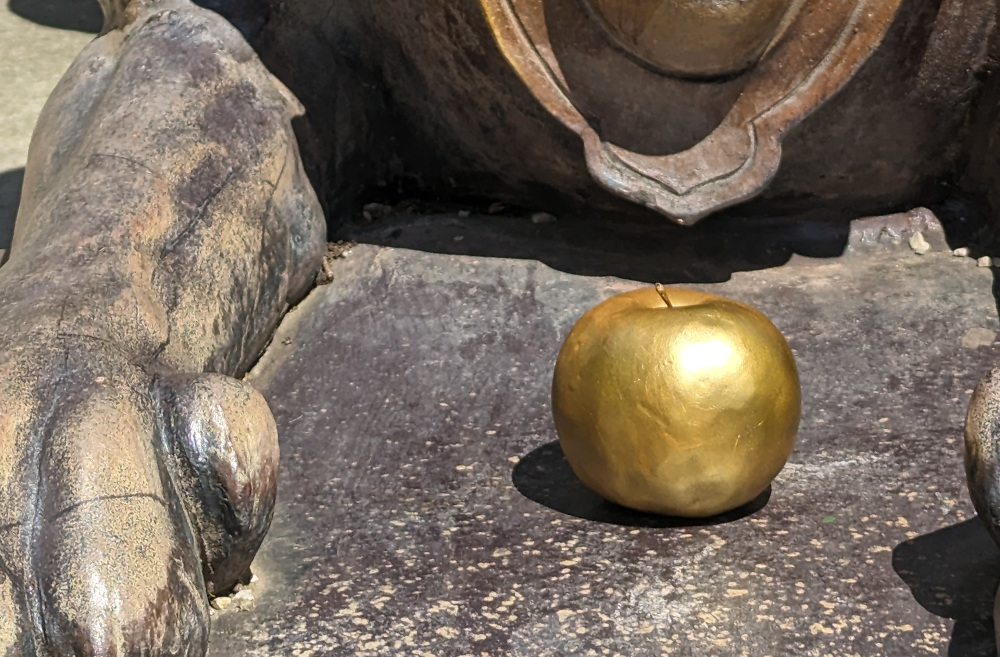
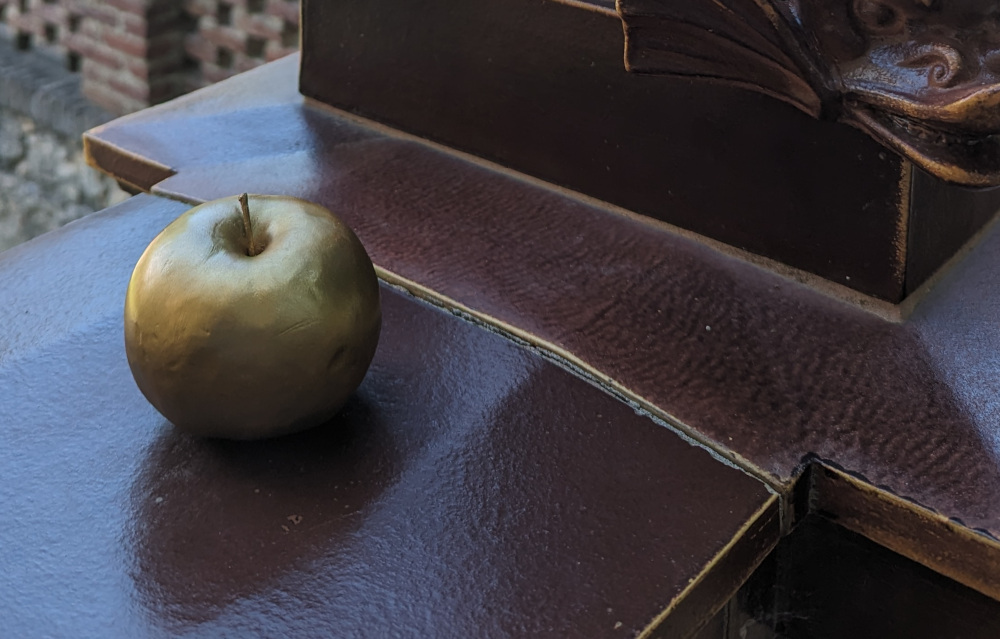
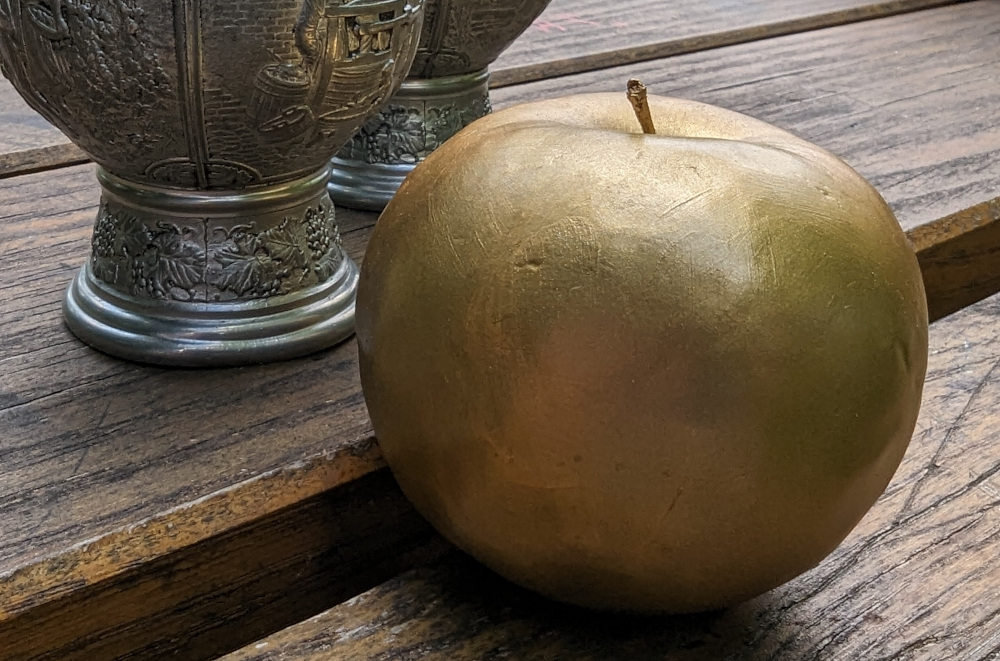
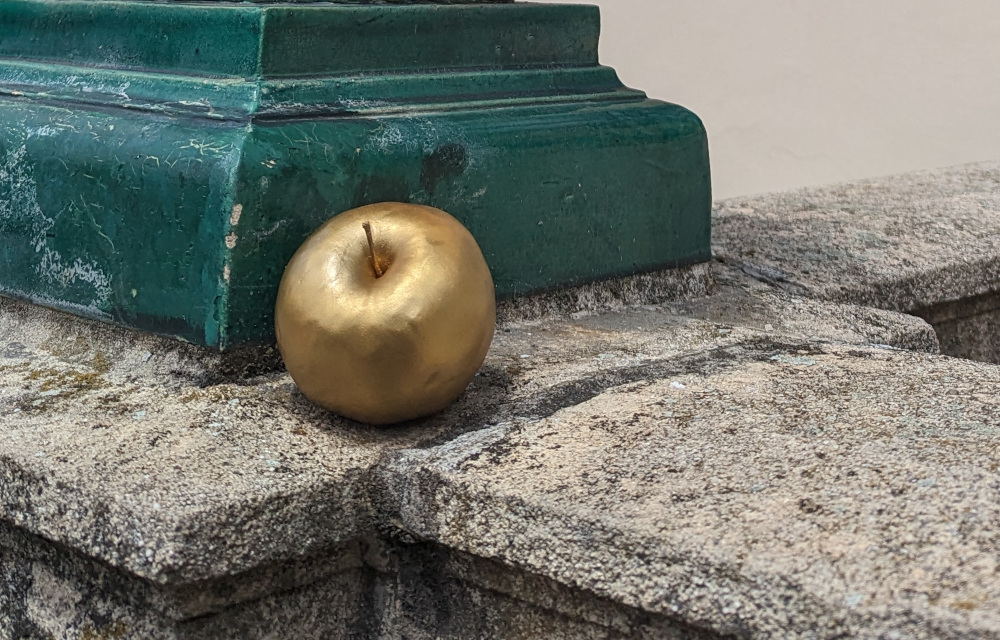
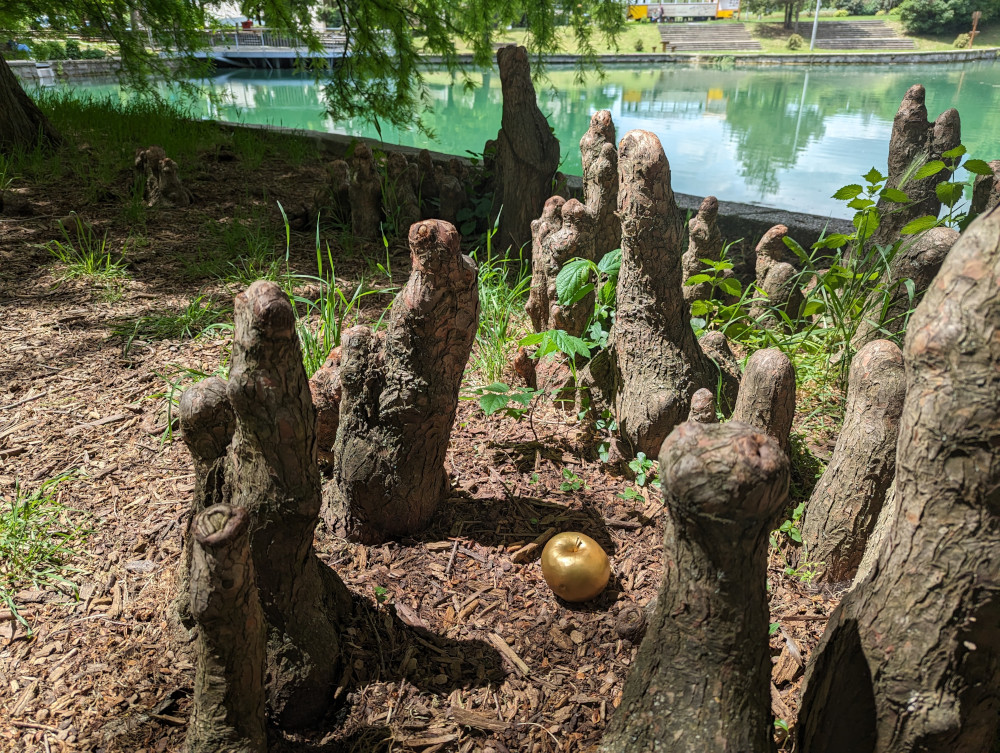
The choice of location became the culmination. The offering took place beside one of the two ceramic Sphinx sculptures guarding the staircase. In that moment, the reflection from the golden surface altered the expression on the Sphinx’s face. Was it an illusion, a play of light, or the past come to life, accepting the gift?
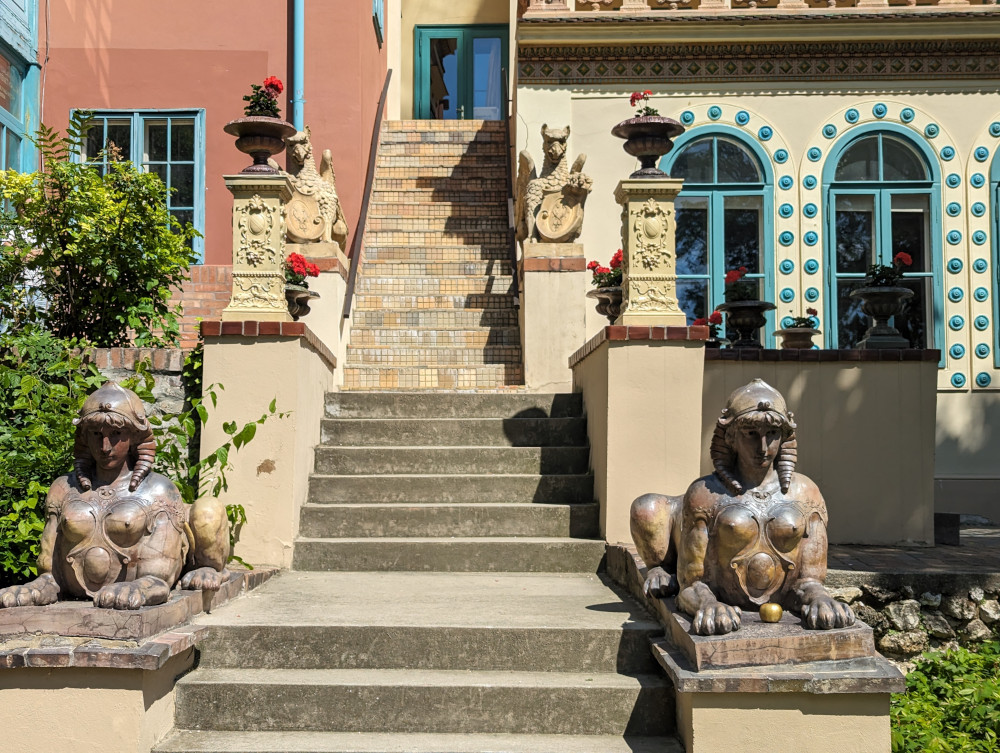
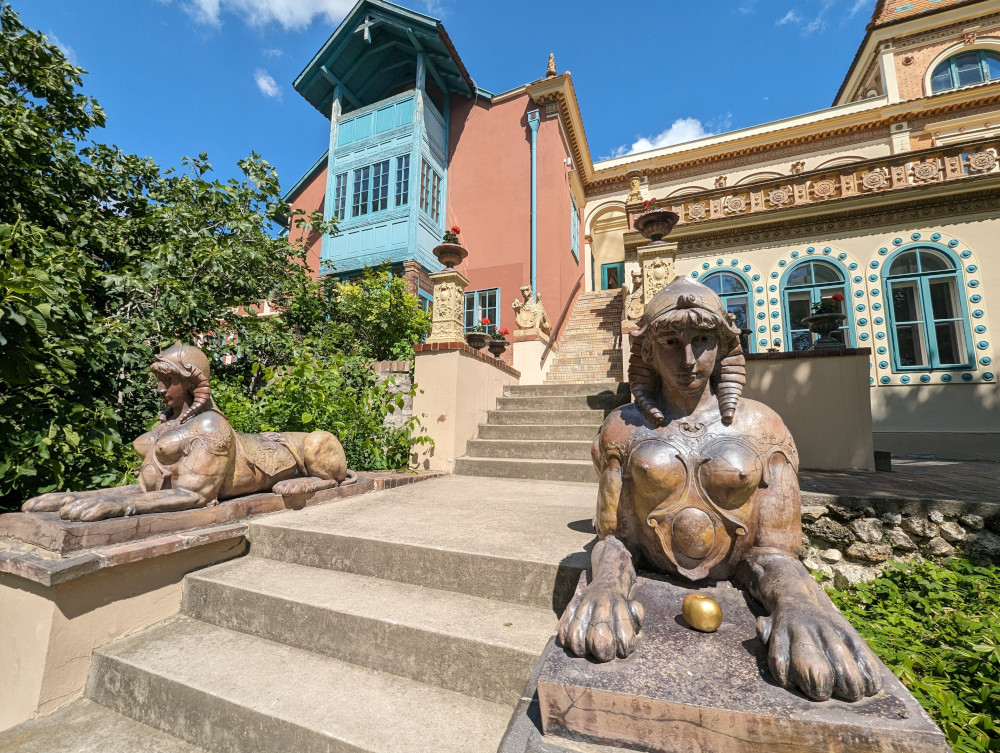
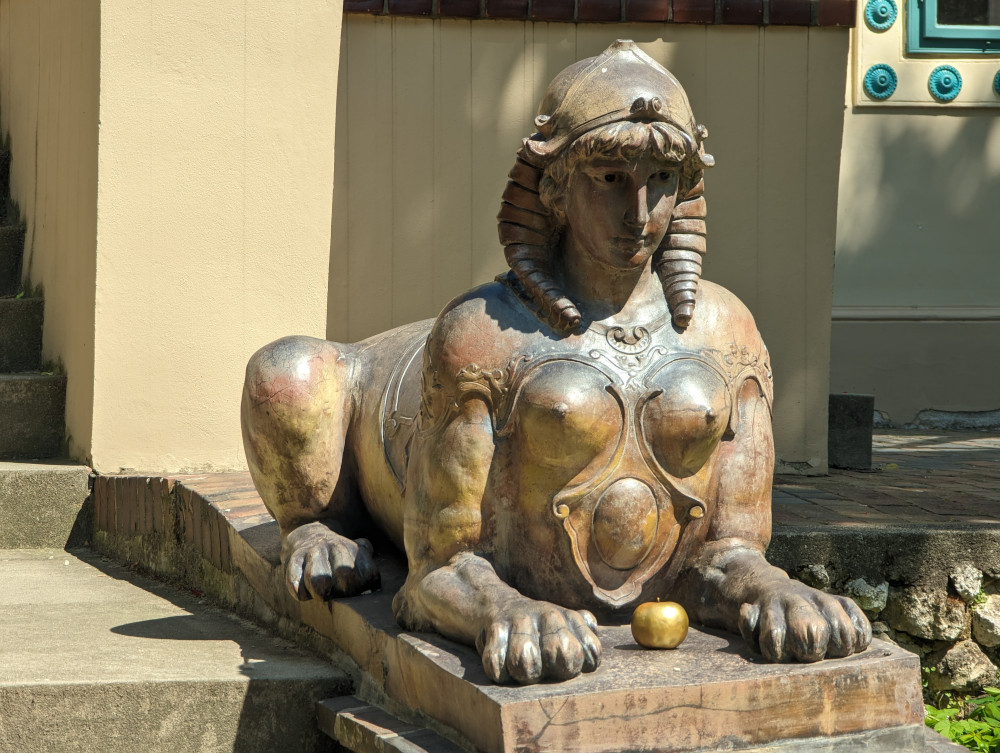
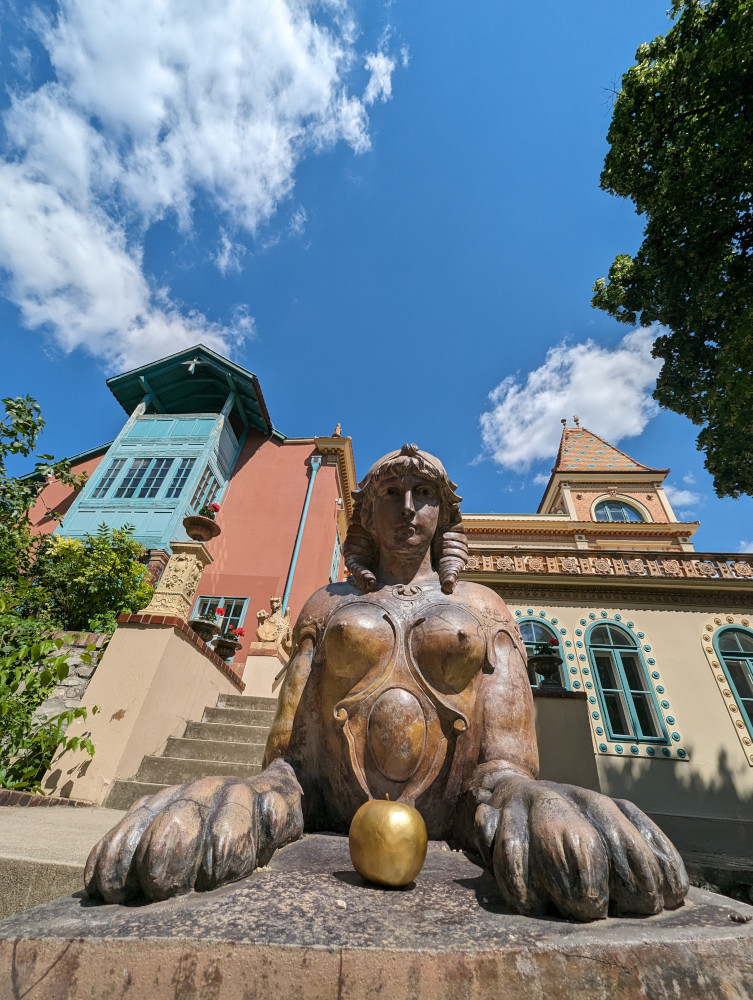
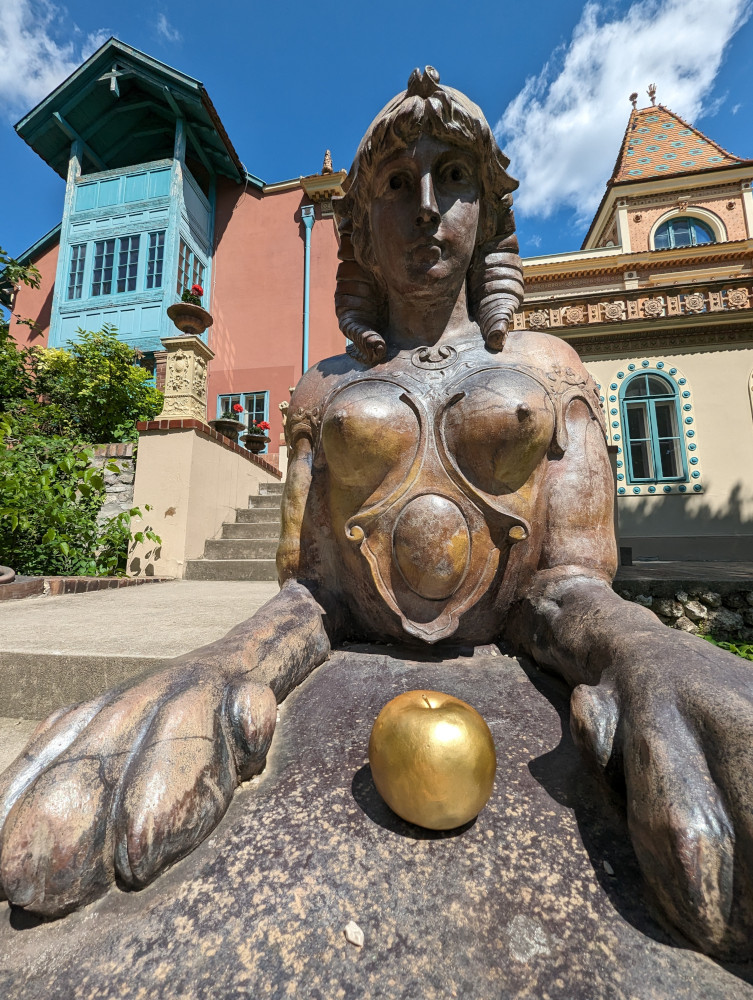

The project invites reflection on how values, both material and immaterial, move through time, transforming meanings and leaving a trace in our perception.
The project was carried out by the R² team.
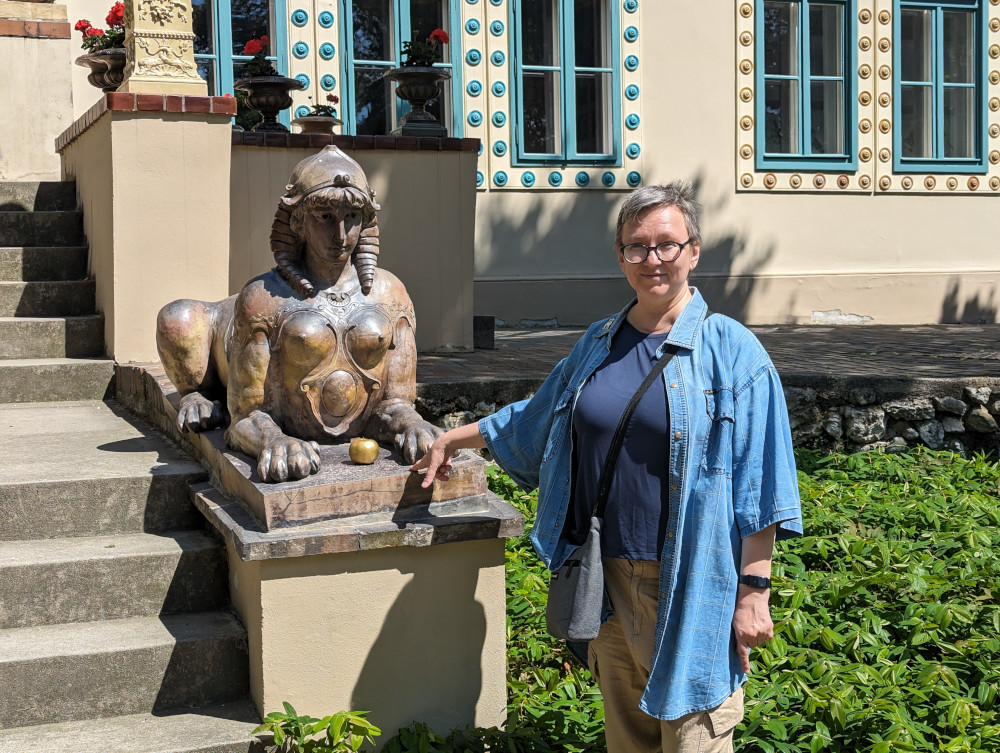
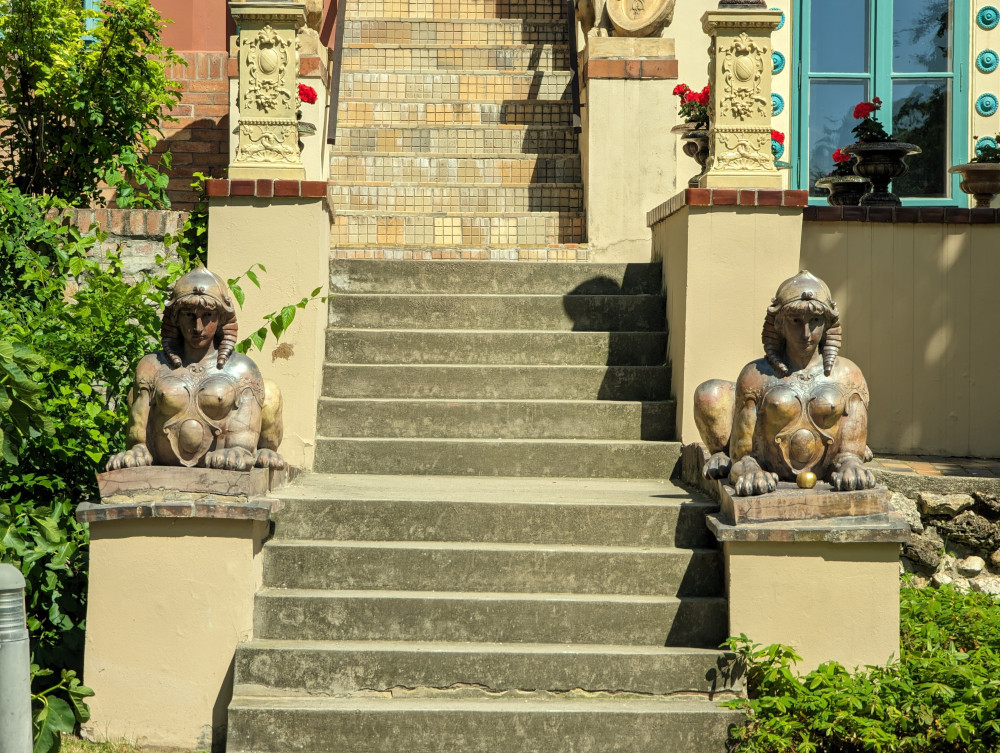
From the authors:
“We left the apple there, by the Sphinx. What happened next? We don’t know, but we can imagine several scenarios.
Perhaps the Apple disappeared—someone took it. Maybe it was a passerby who saw value or mystery in it. Maybe a tourist took it as a souvenir, or a child believed they’d found a magical artifact.
Or the Apple remained in place but changed—rain and wind began to wash away the gold, revealing the living matter beneath the surface. It began to decay, becoming part of the urban environment, vanishing somewhere between art and nature.
Perhaps the Apple became part of the Quarter—someone moved it elsewhere, continuing its journey. Maybe it appeared by another sculpture, or ended up inside one of the Zsolnay ceramic workshops.
We like to believe the Apple turned into a legend—even if it disappeared physically, its story remains. Someone will tell it again, someone will search for its traces, and someone might catch a fleeting glint on the Sphinx’s face and remember this moment.
In this context, the Apple is a temporary guerrilla sculpture—installed without permission, yet altering the perception of the space. It intervened in the environment of the Zsolnay Quarter, entered into a dialogue with the Sphinx, and disappeared, leaving behind only memory and photographic trace.
This offering was a fleeting gesture, but it sharpened the boundary between presence and disappearance, art and everyday life, the material and the symbolic.”
Monument to Travelers
Installed on 22.06.2023
Dock, Zadar, Croatia

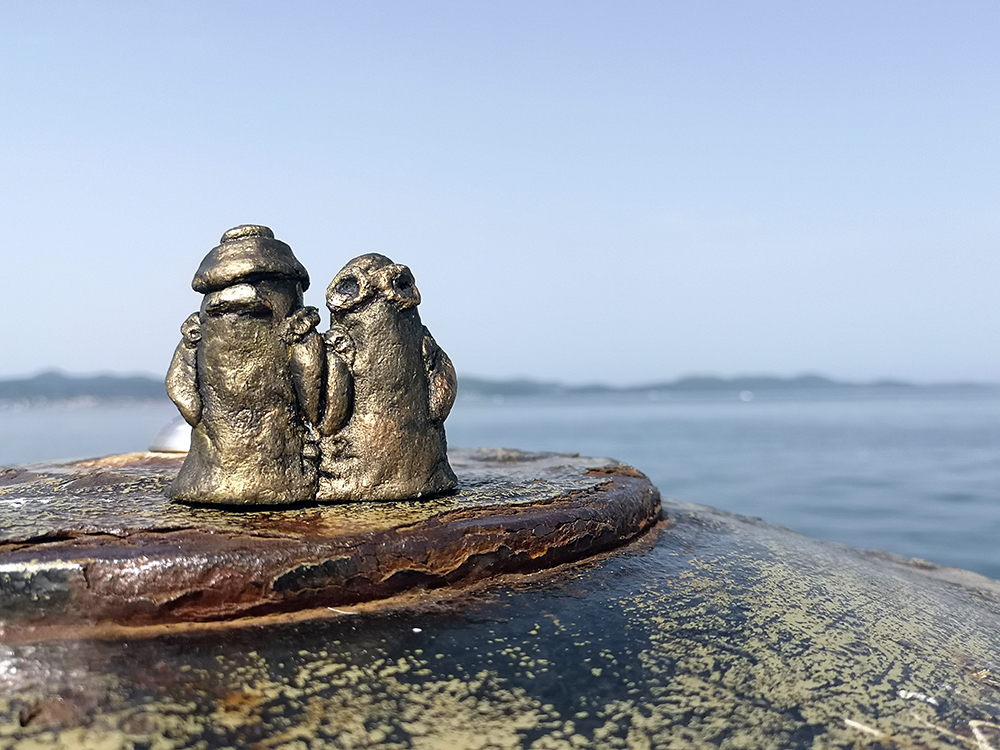
Bioceramics — dough plastic: salt, flour, water. Tinted with acrylic paints.
Size: 10 x 10 x 5 cm
From June 10 to 23, 2023, the mini sculptures traveled along the route: Hungary — Keszthely, Croatia — Split, Pelješac (Žuljana, Ston, Mali Ston, Sveti Ivan, Orebić), Zadar. At each location, searches were conducted to find a spot for installing the mini monument. The site fitting was accompanied by photographic documentation. The installation point — Zadar, Dock.
The project was carried out by the R² team.
MONUMENT INSTALLATION:
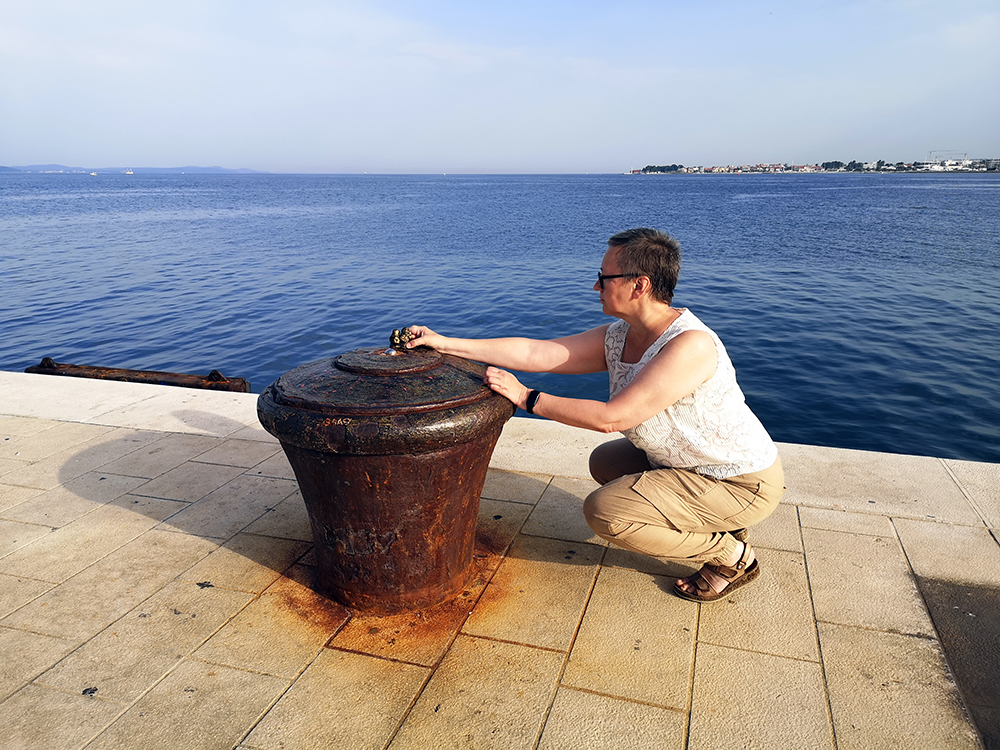


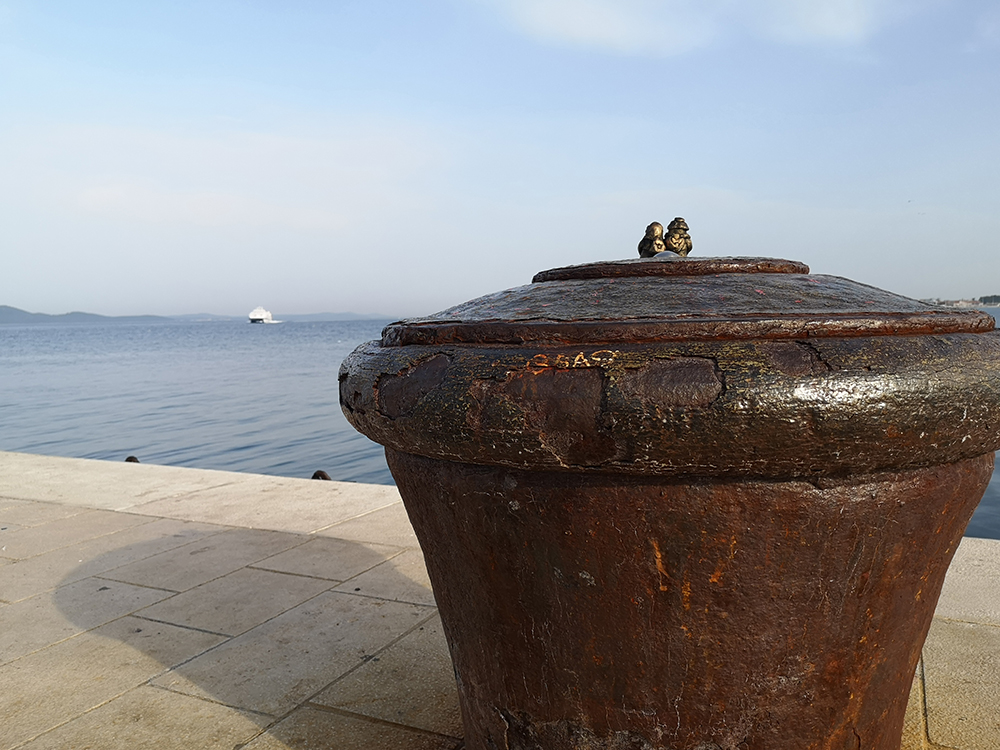
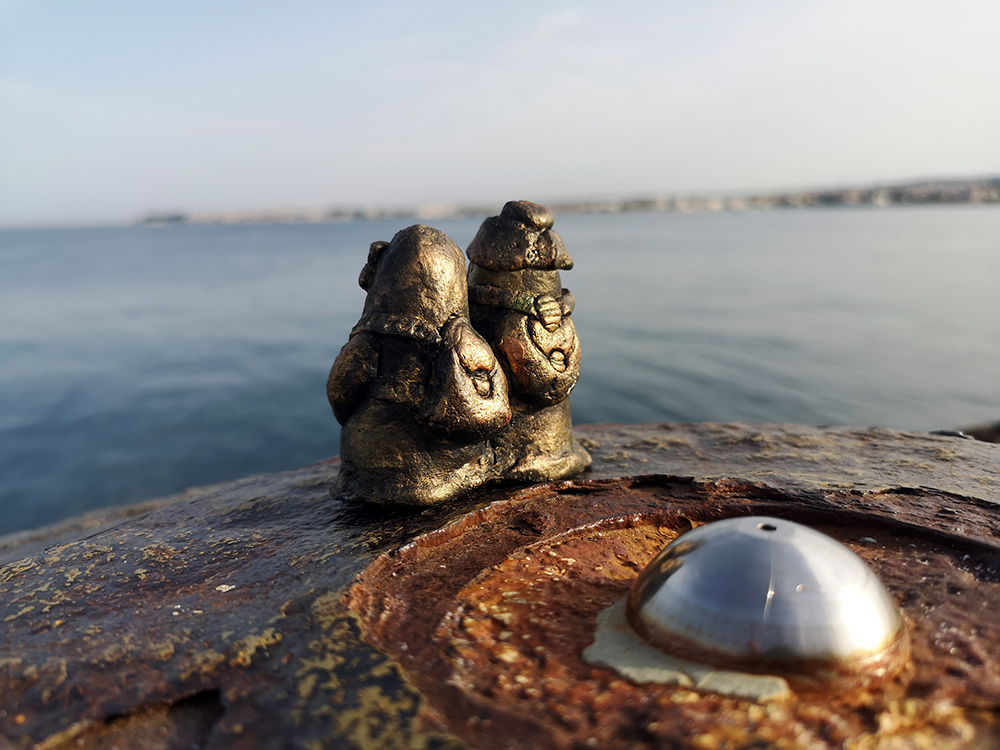
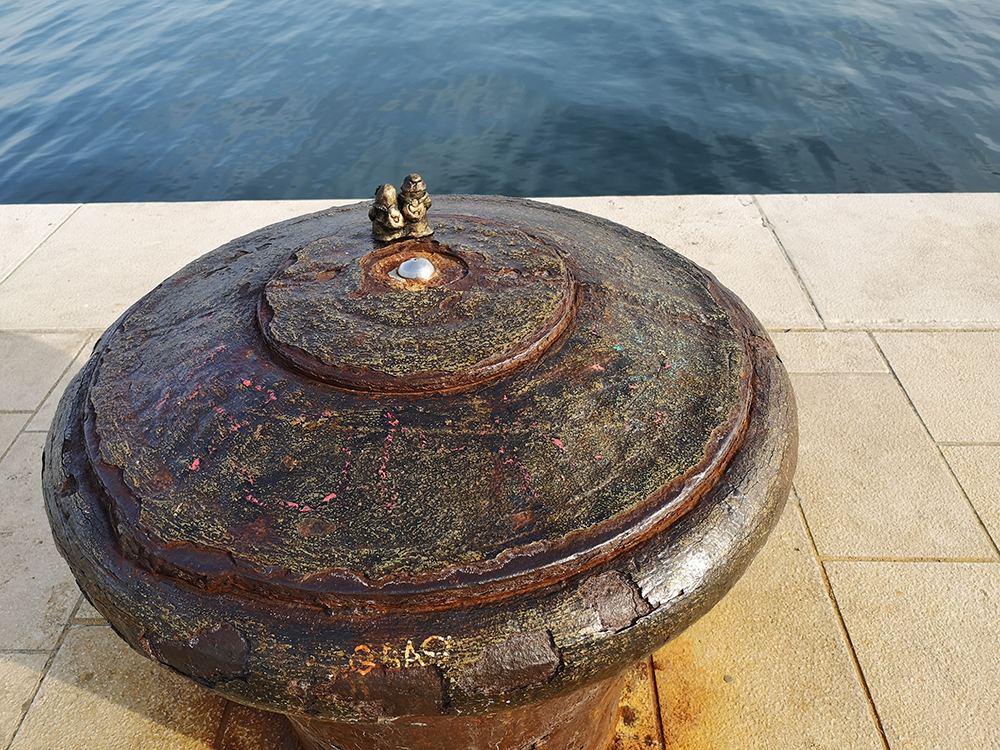
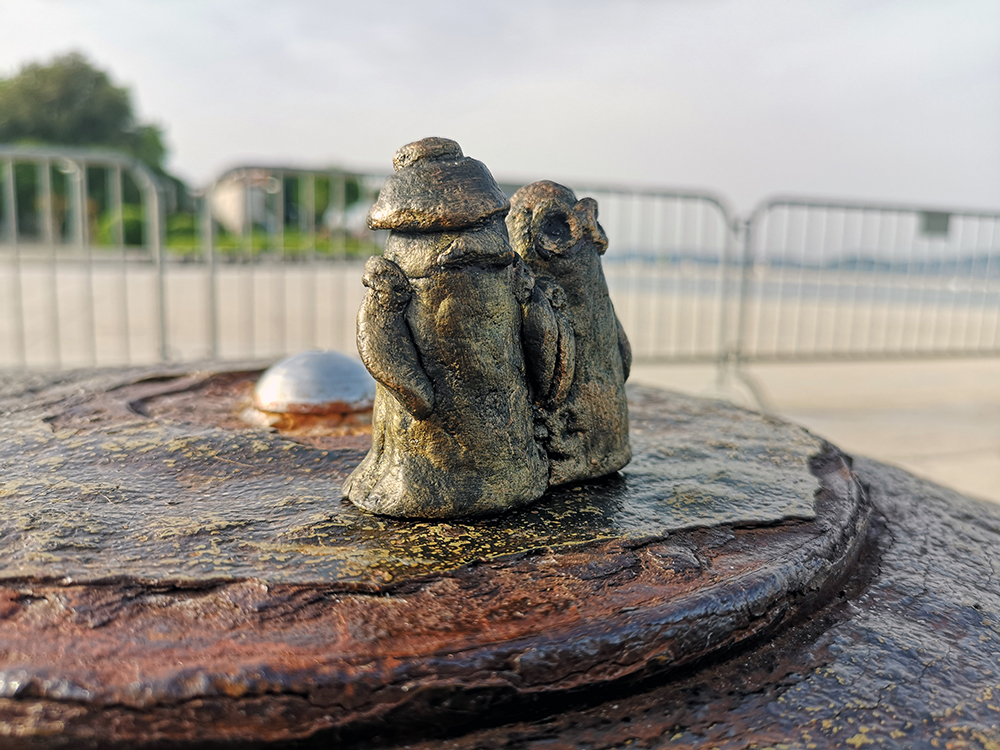
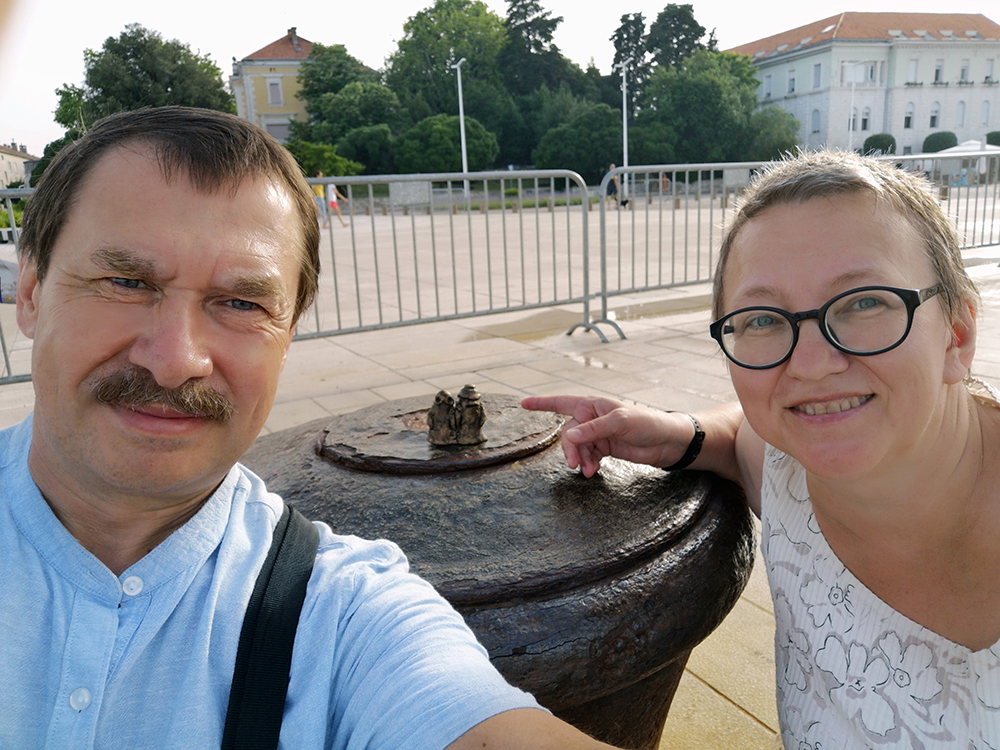

JOURNEY AND SITE TESTING:
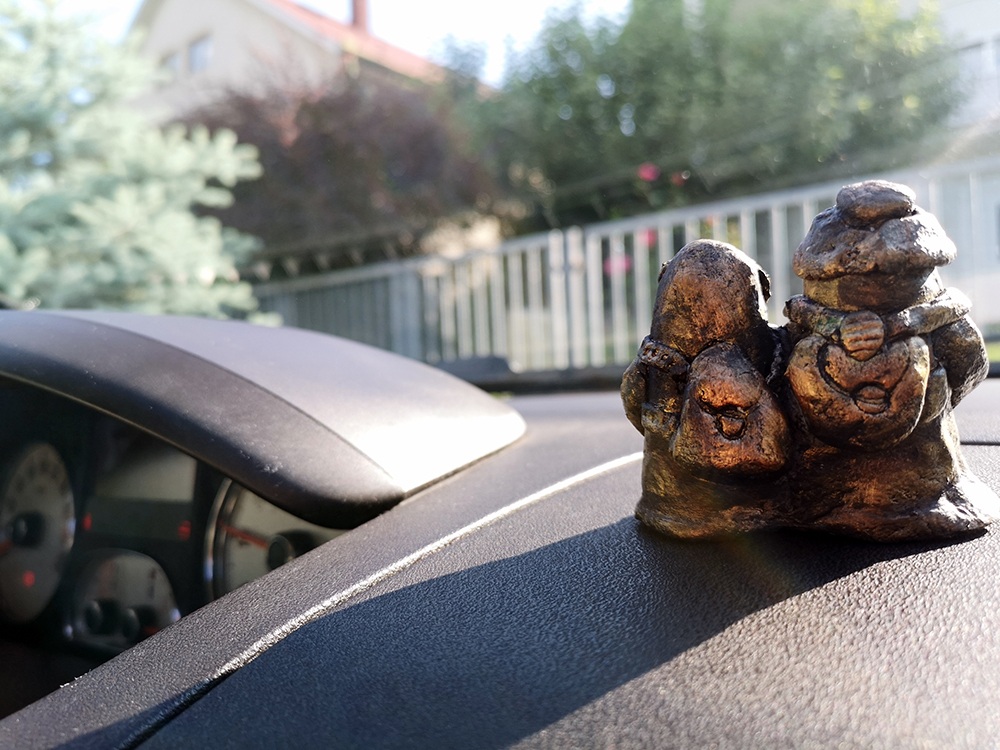
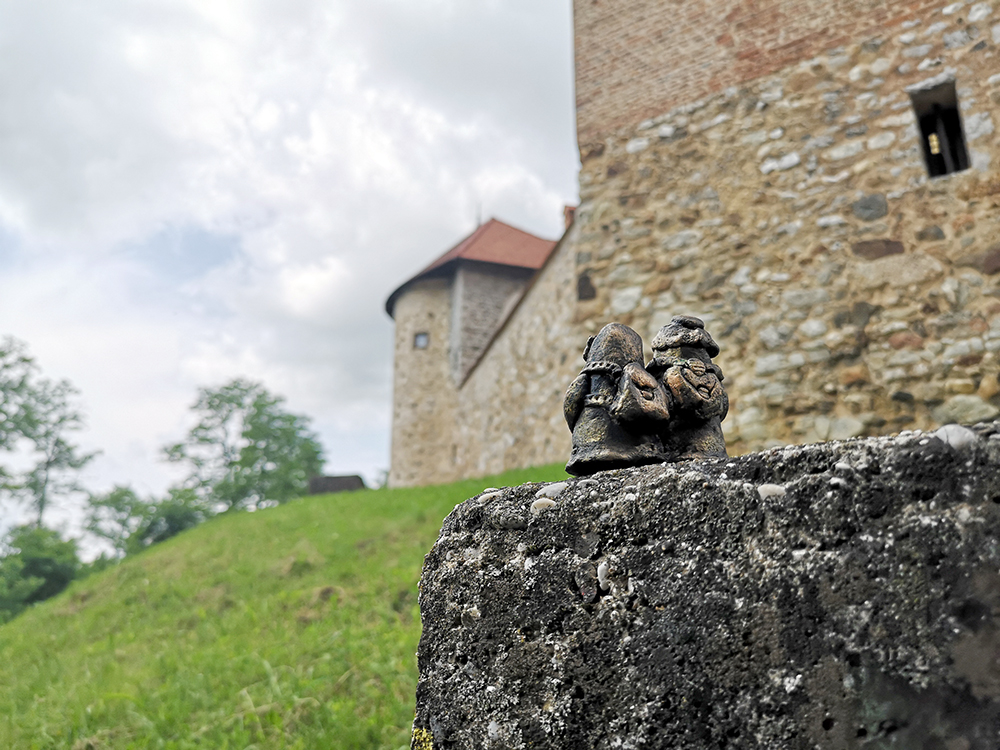
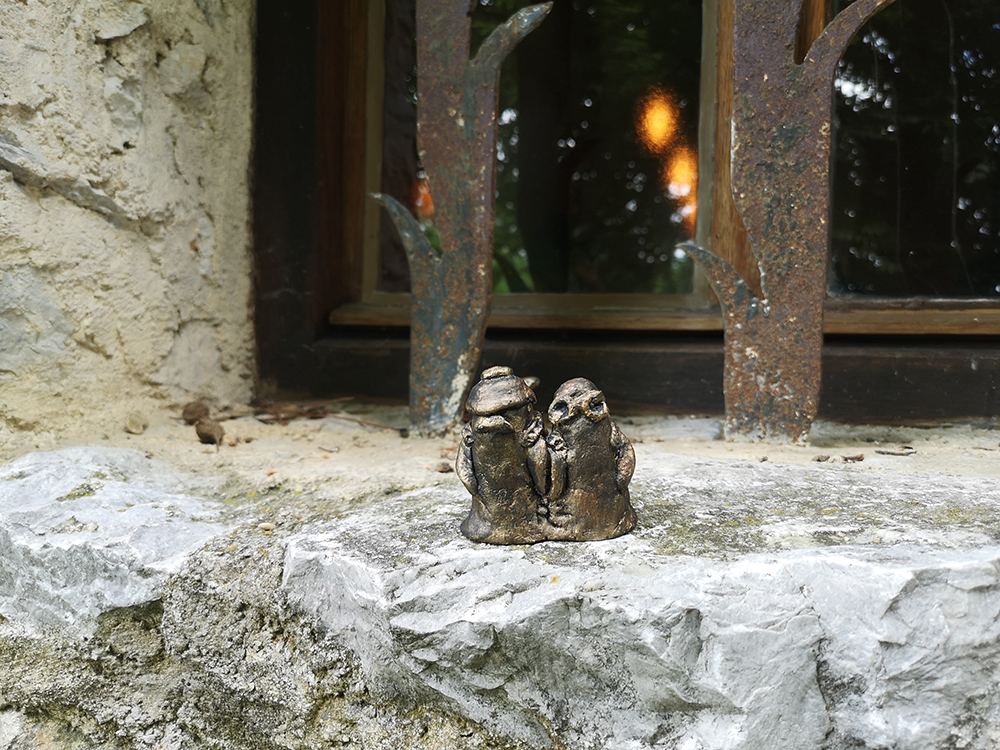
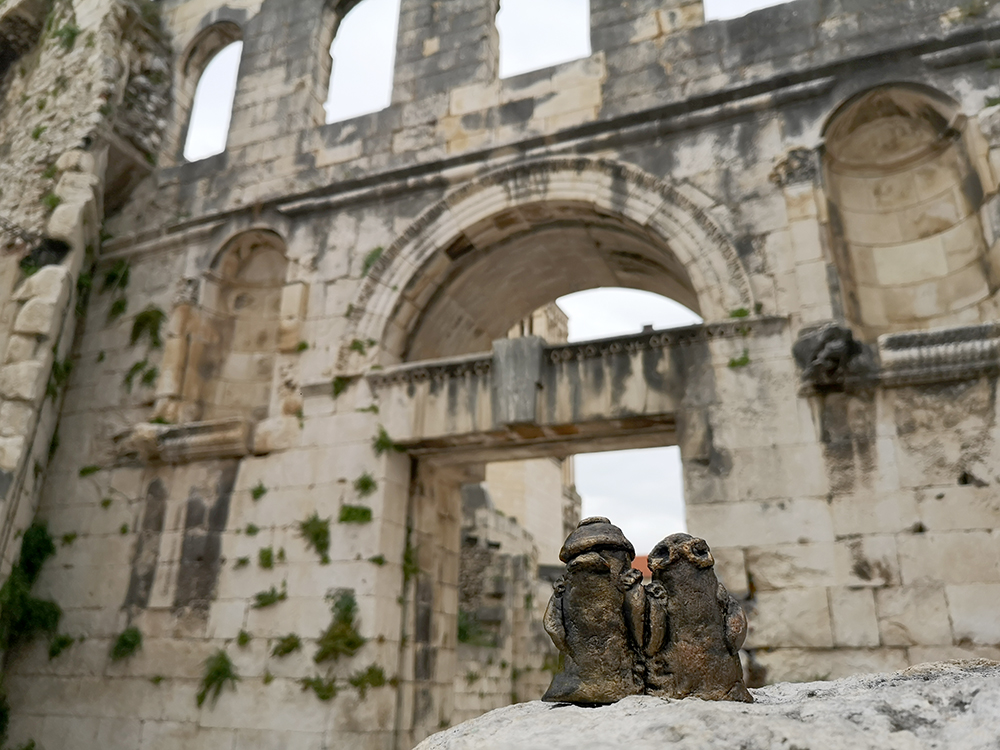
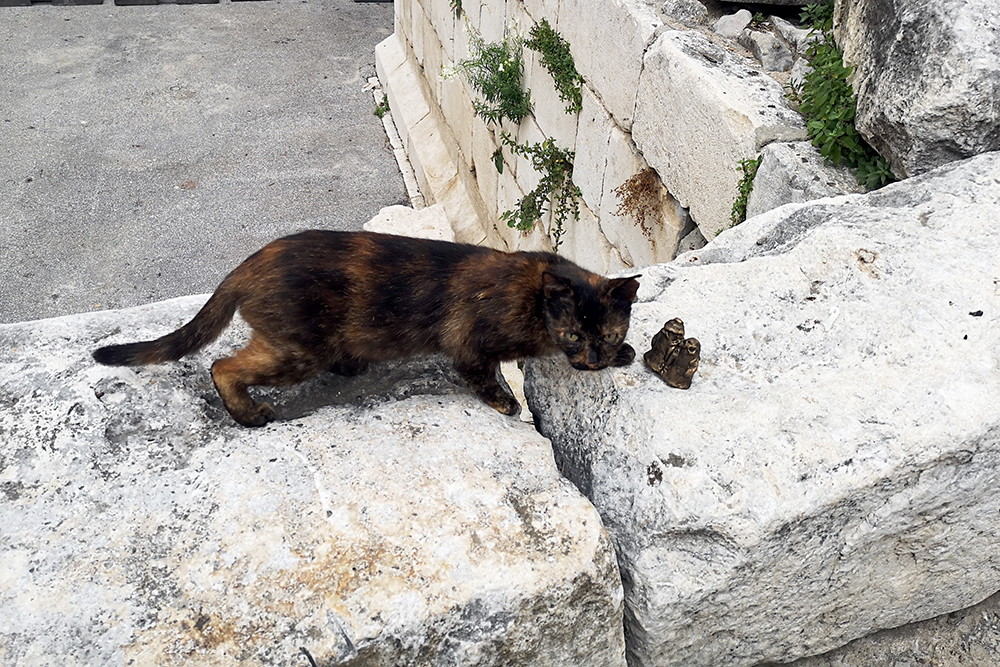
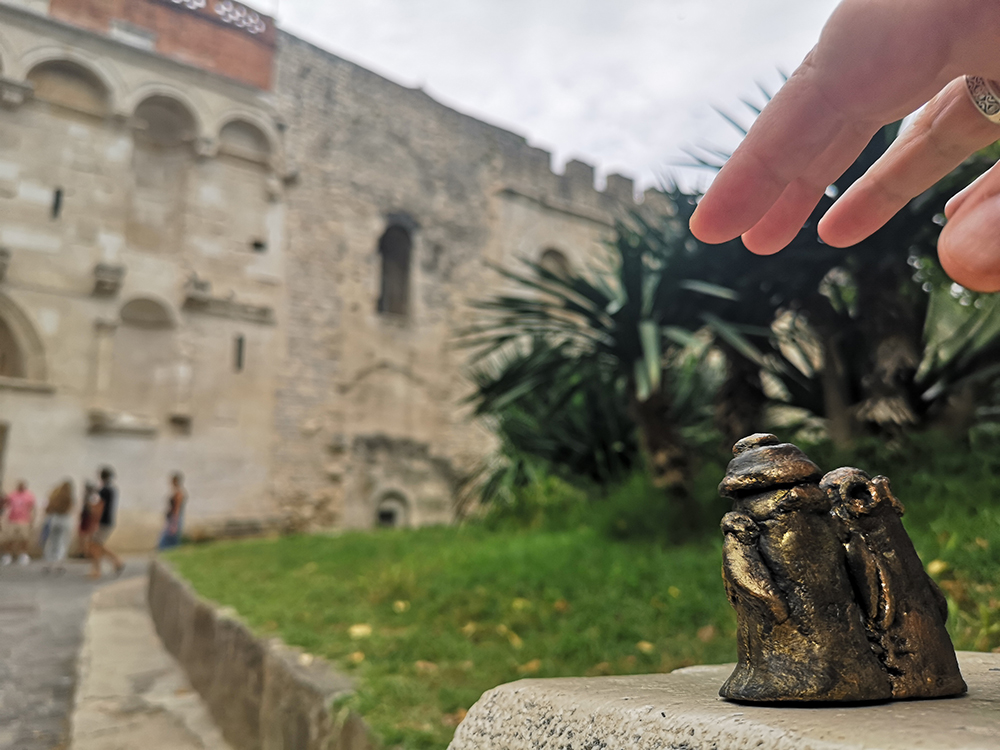
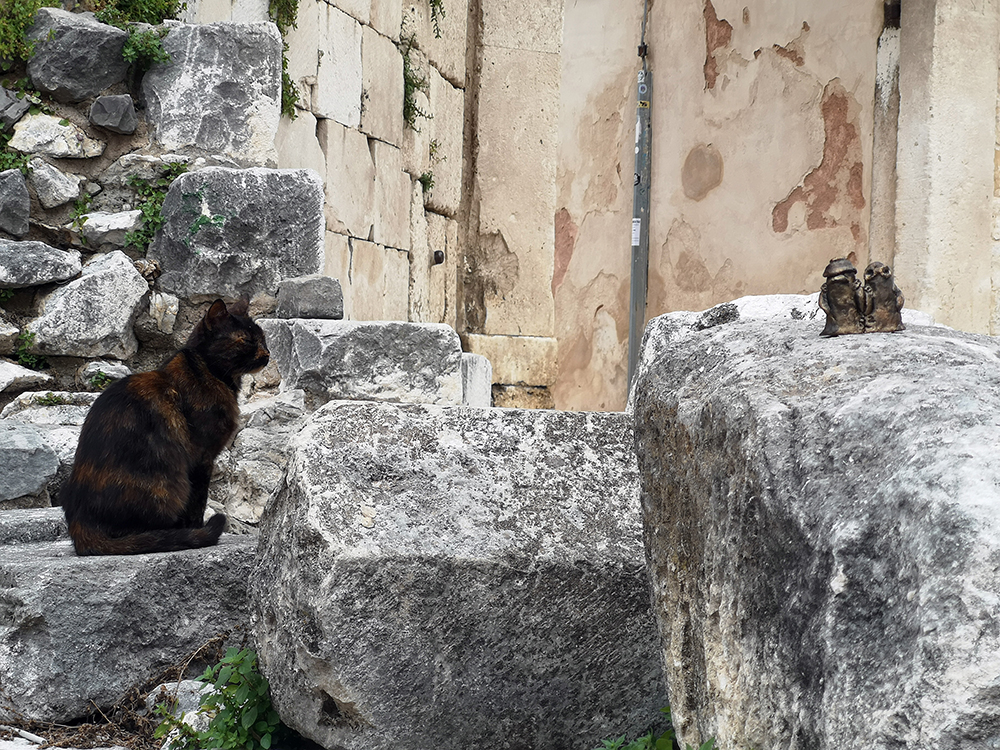
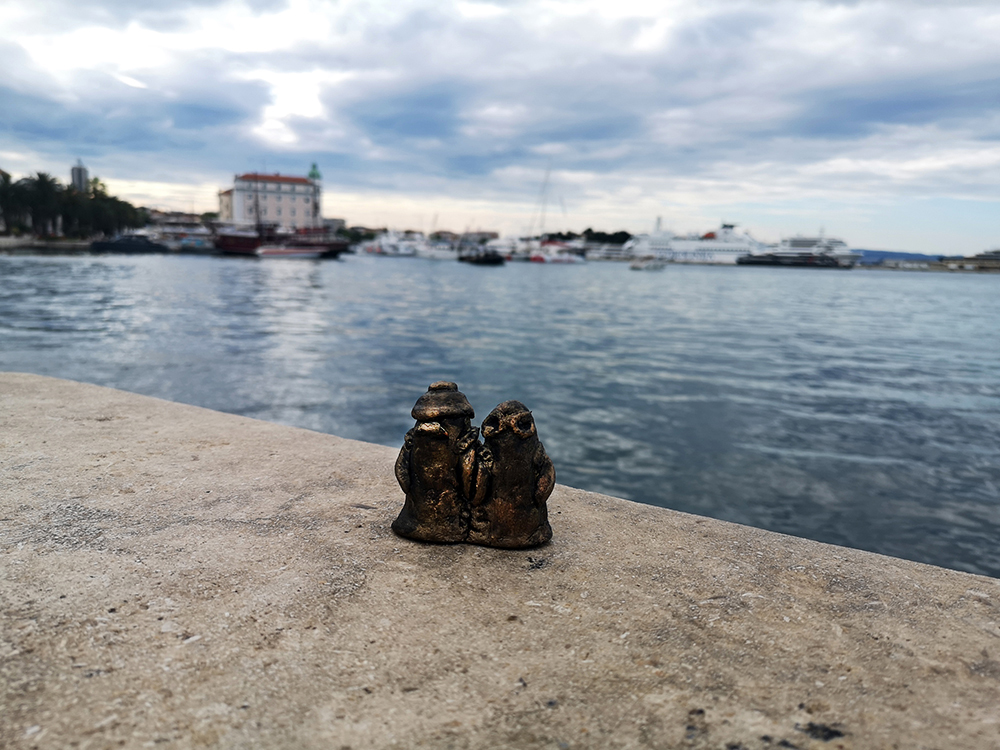
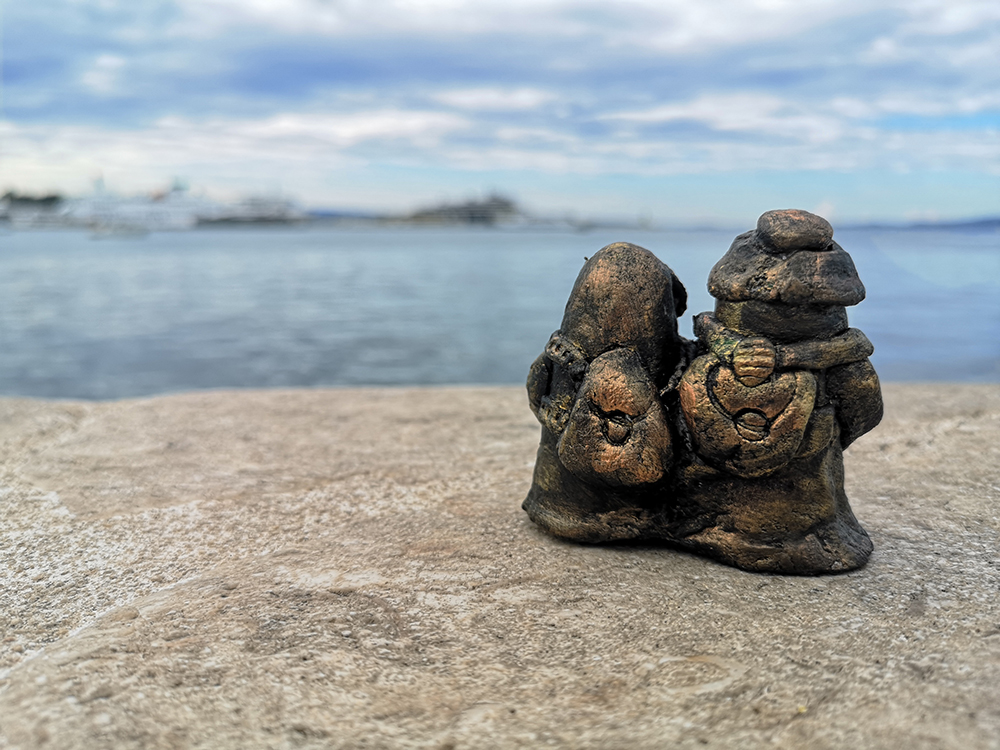
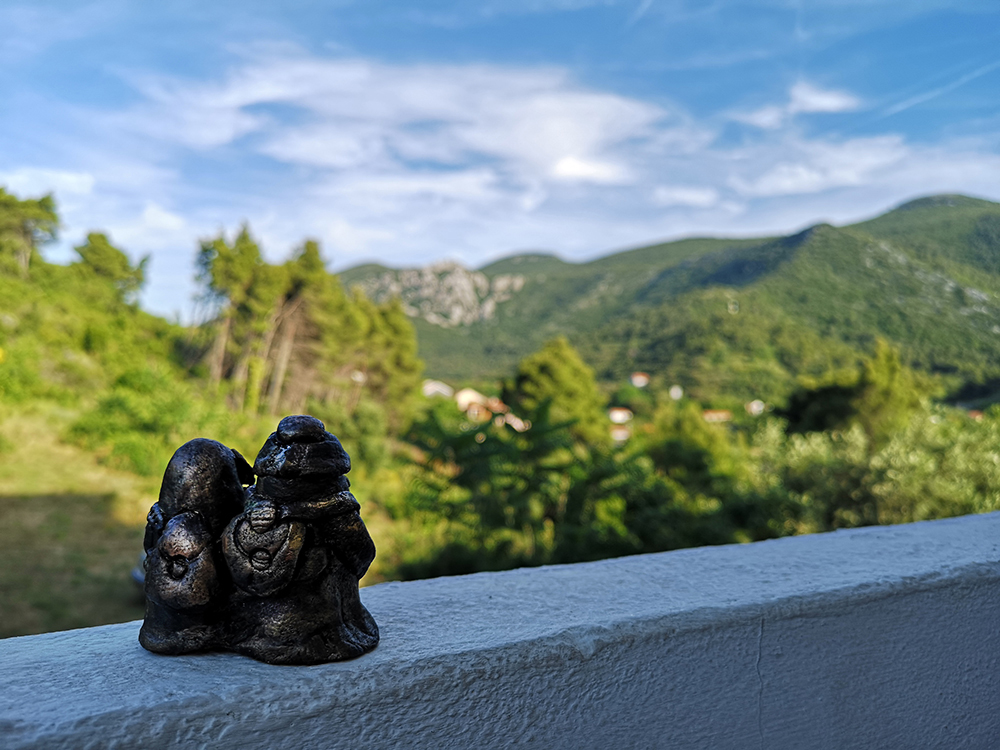
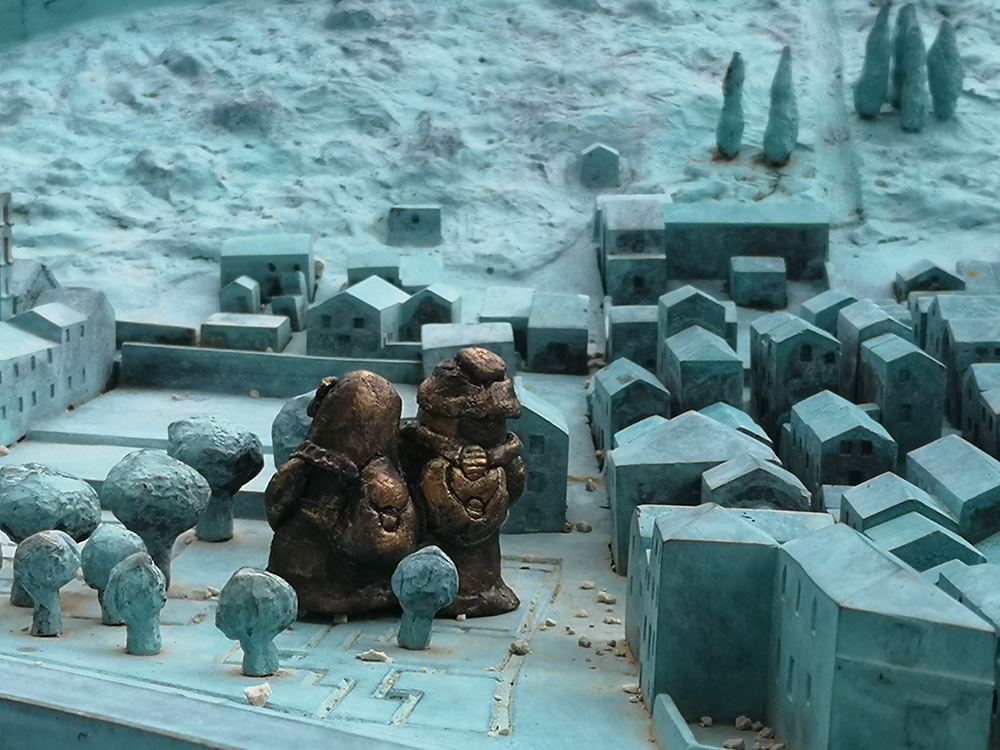


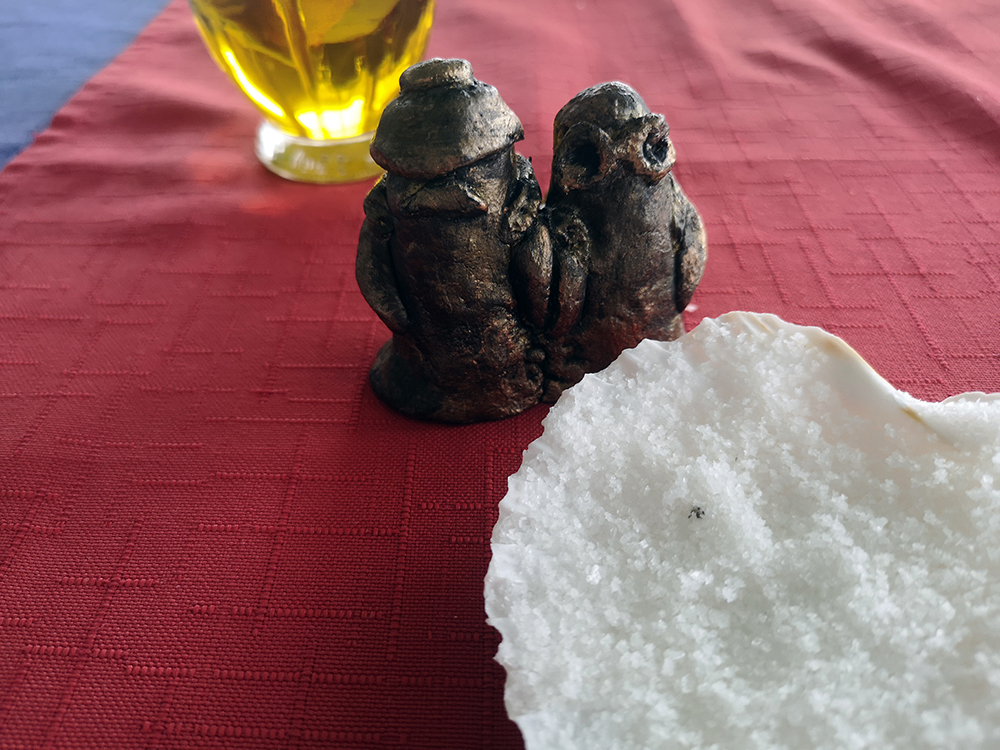

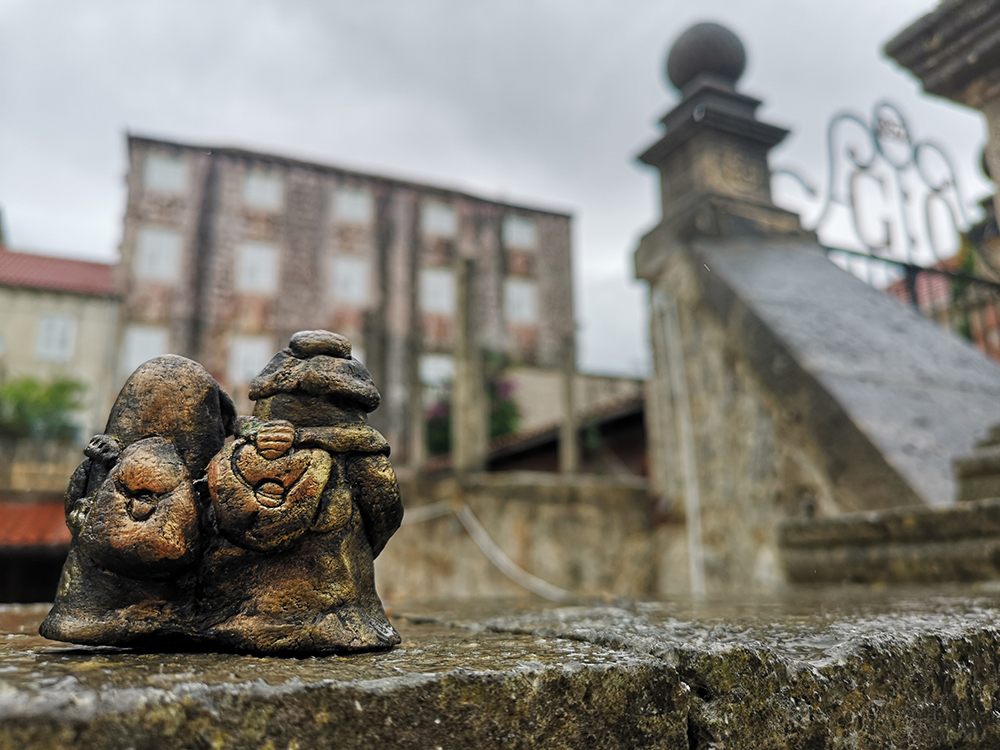
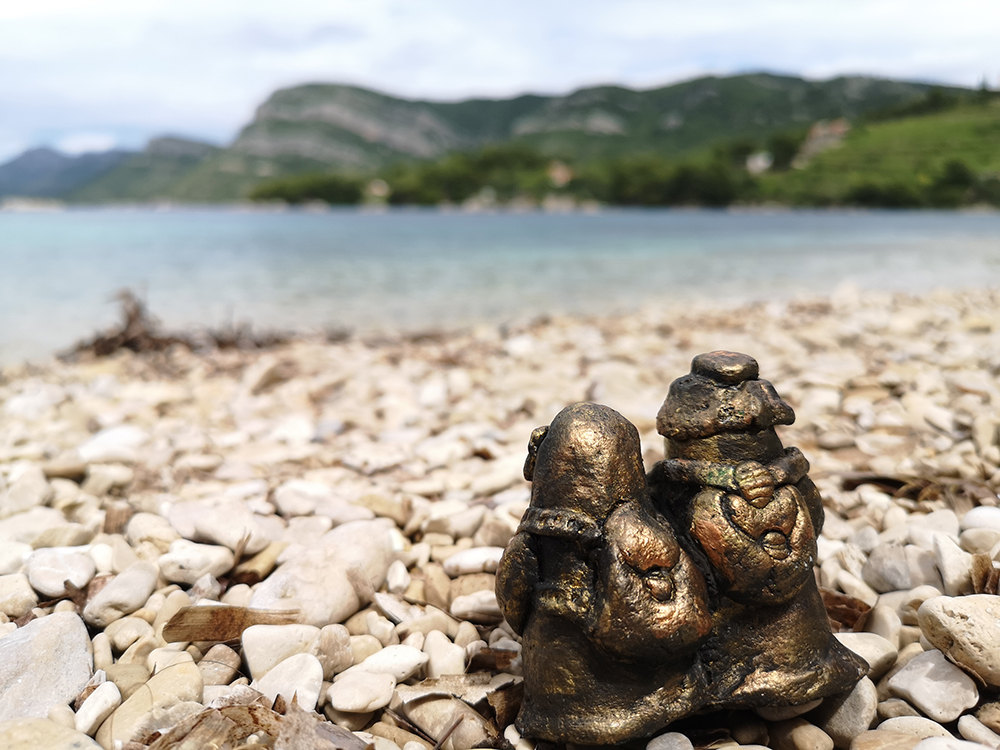
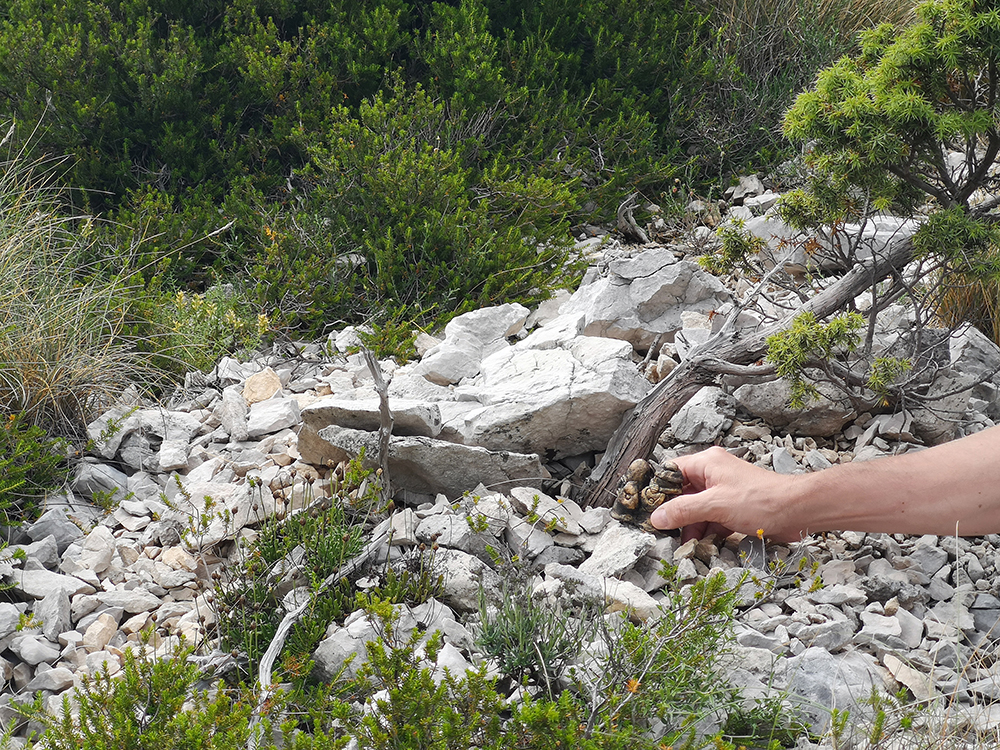
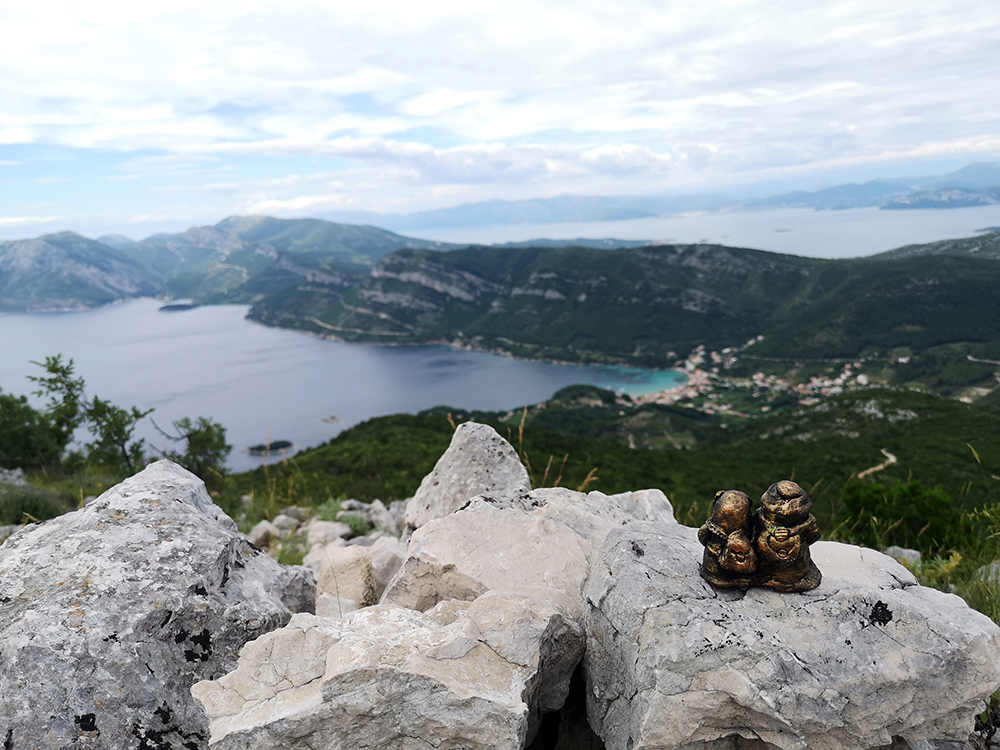
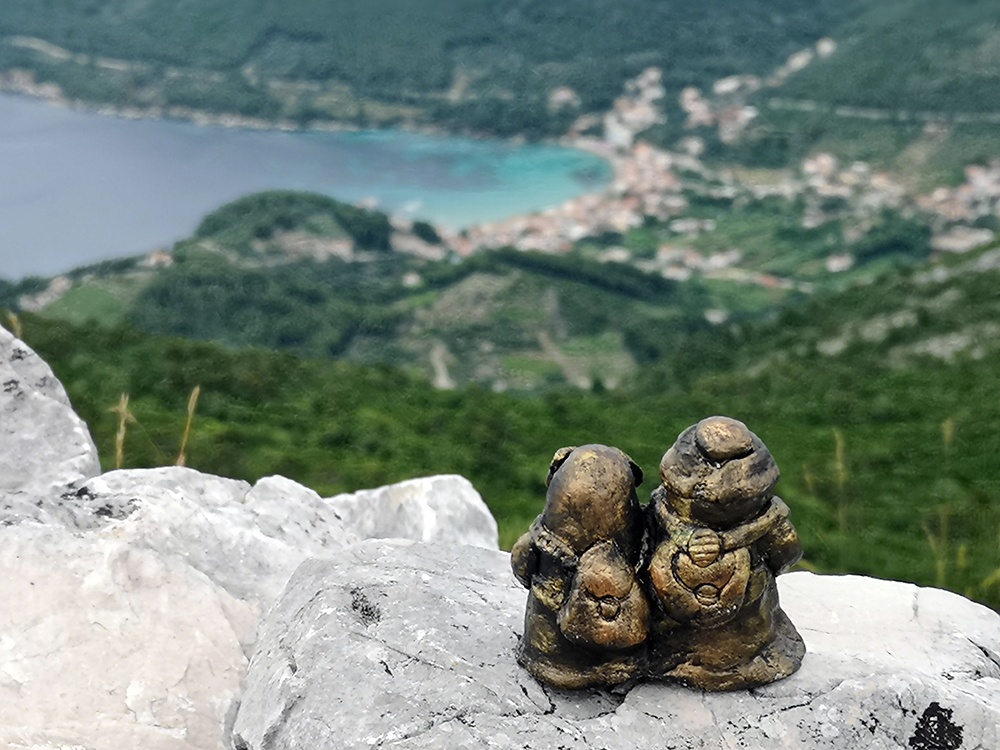
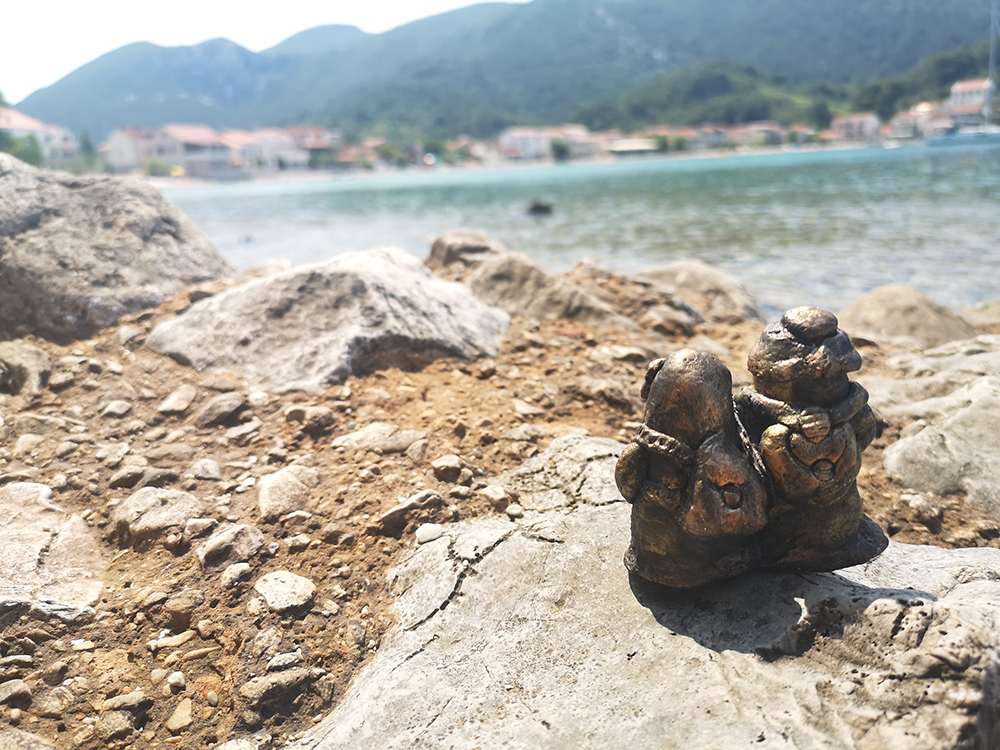



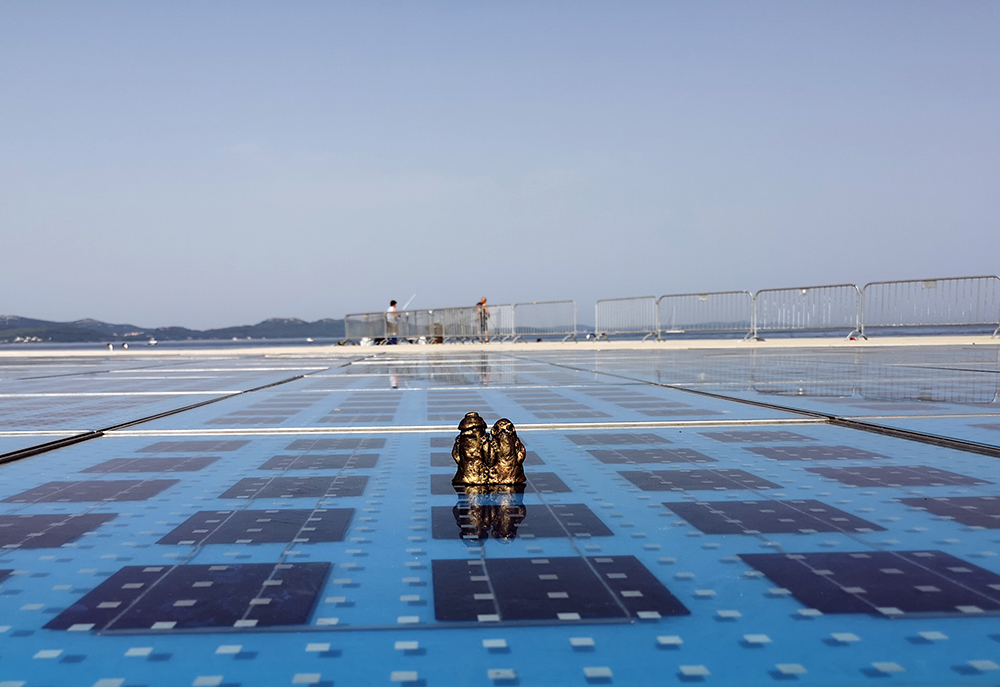
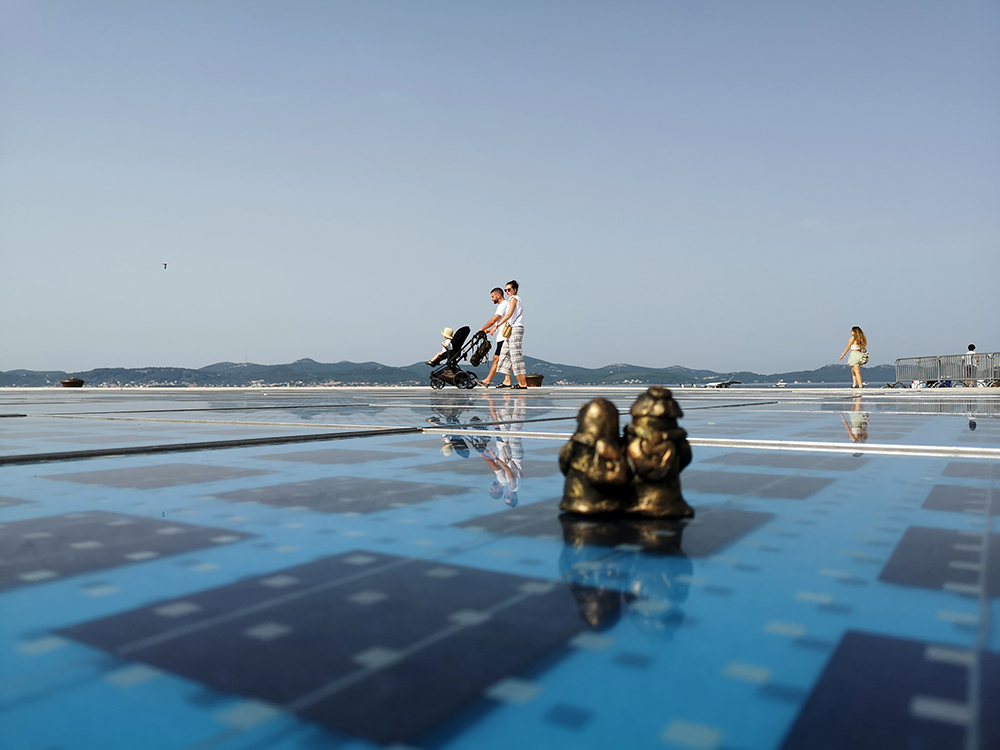
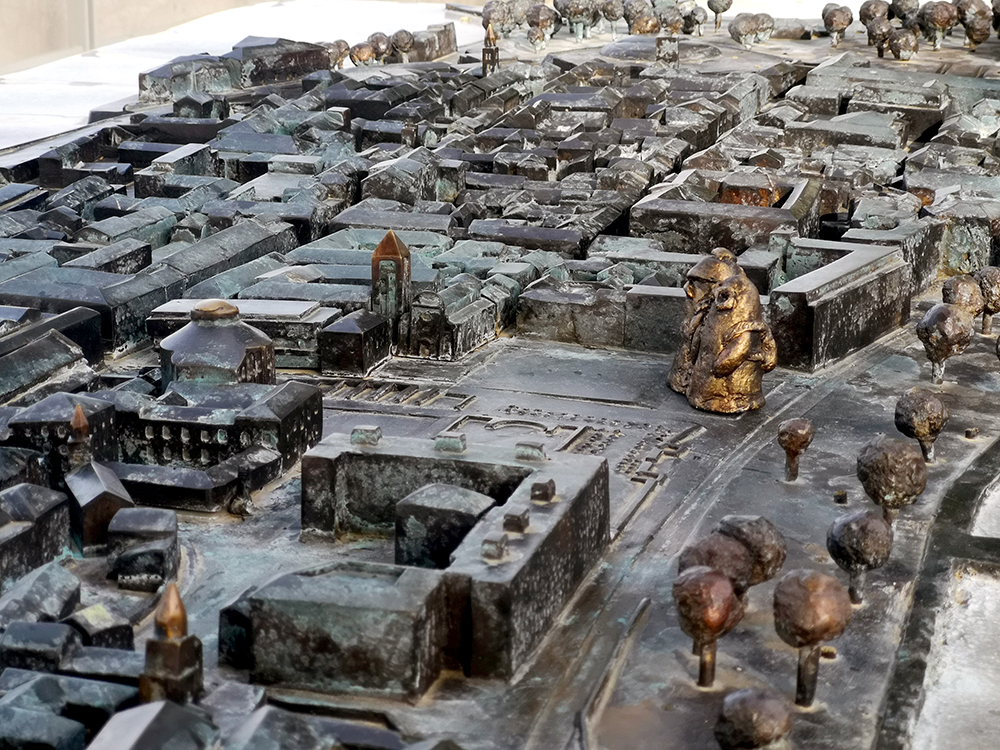
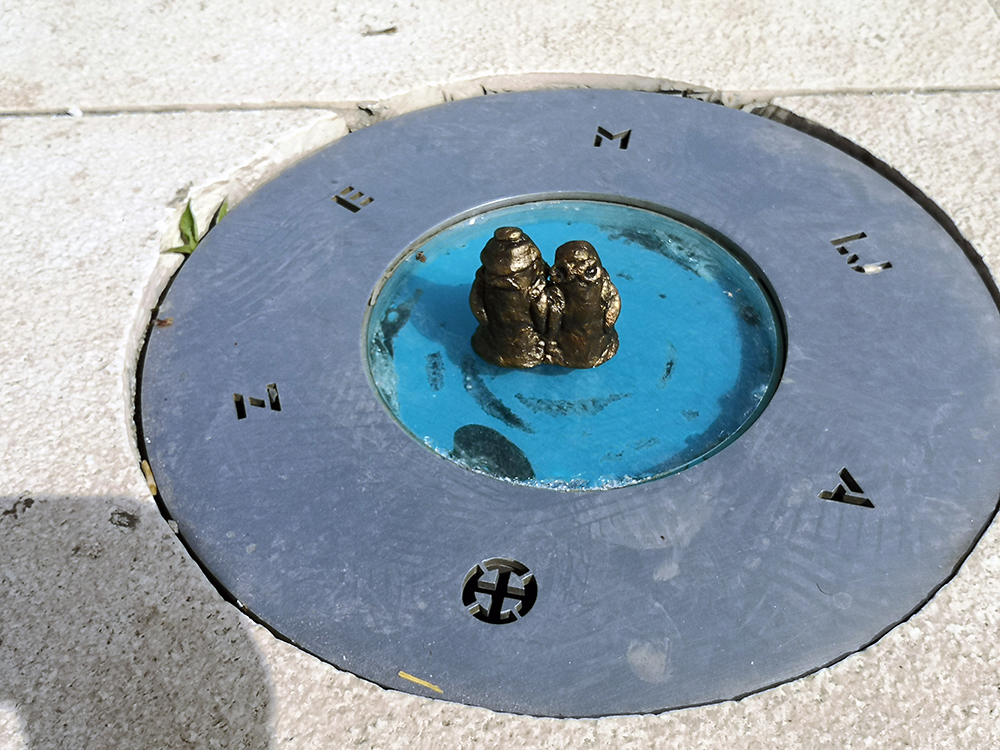

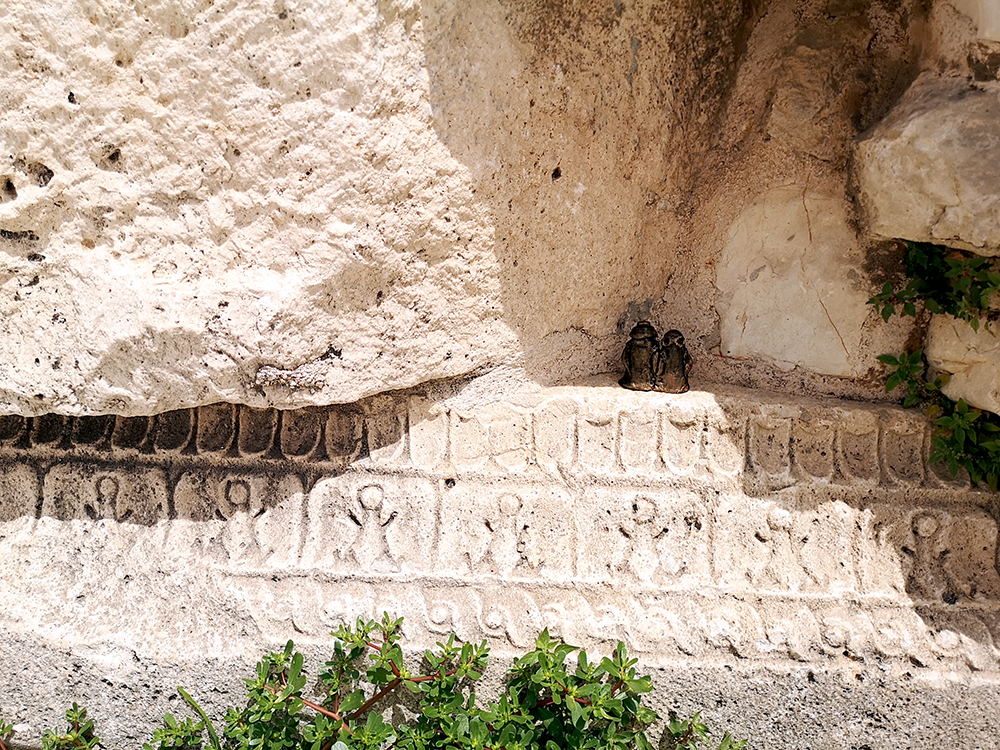
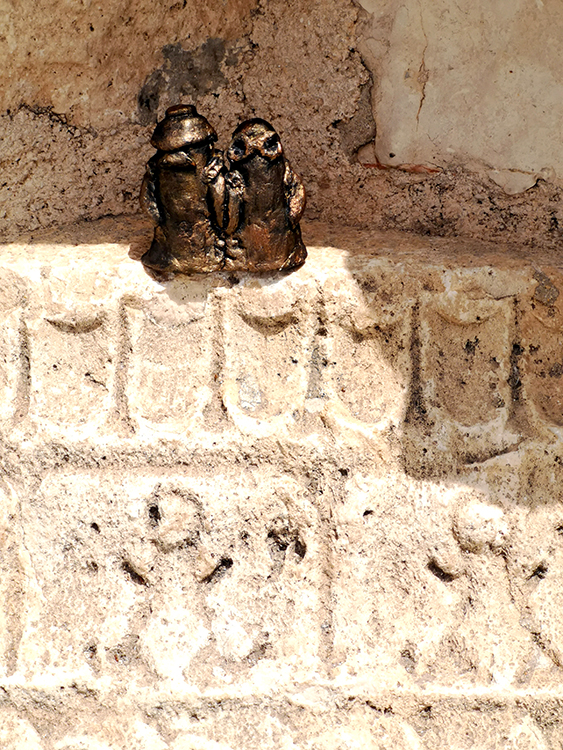
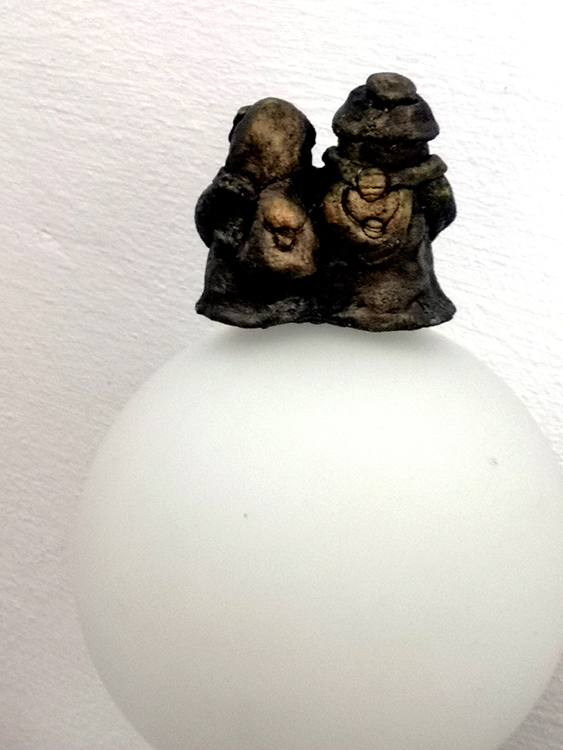
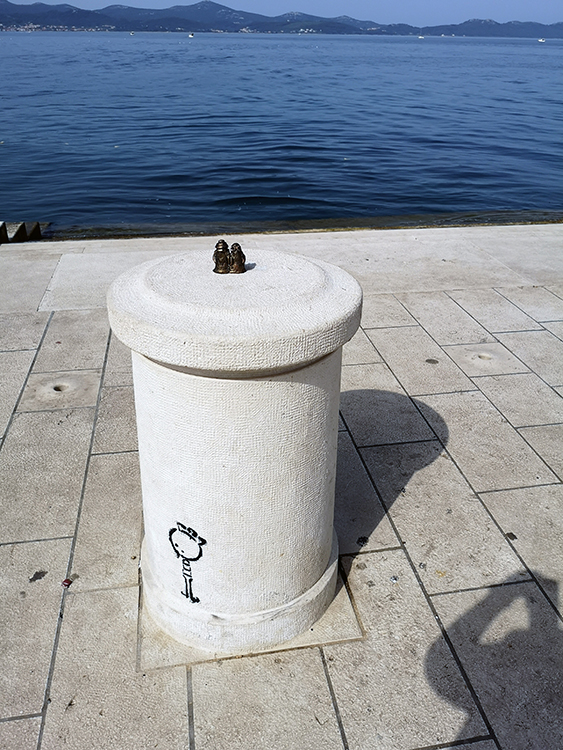
PROTOTYPES AND IMAGES:
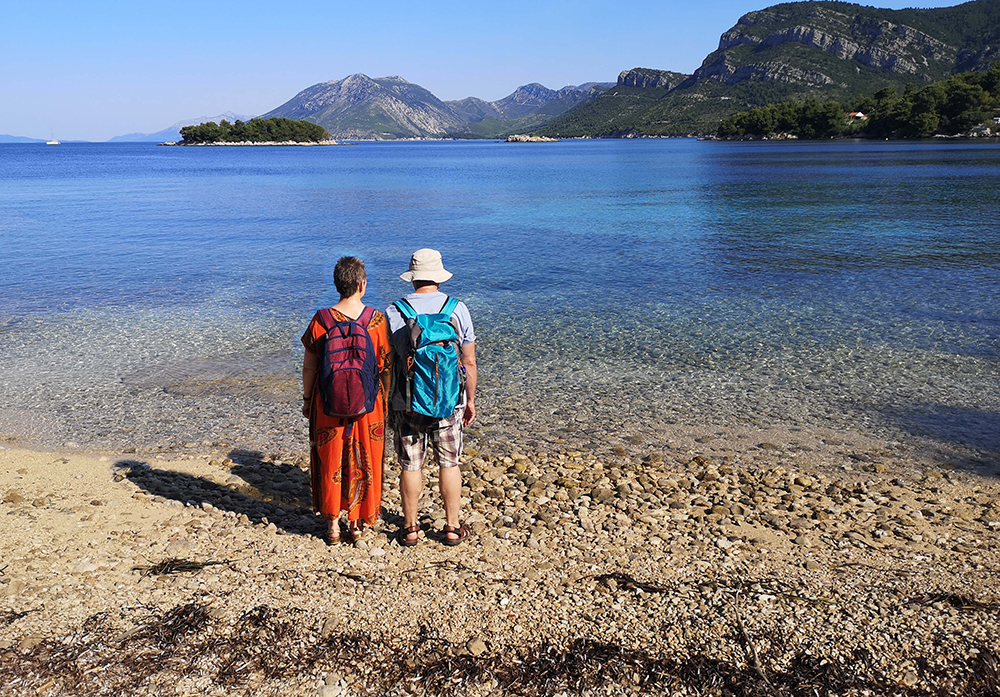

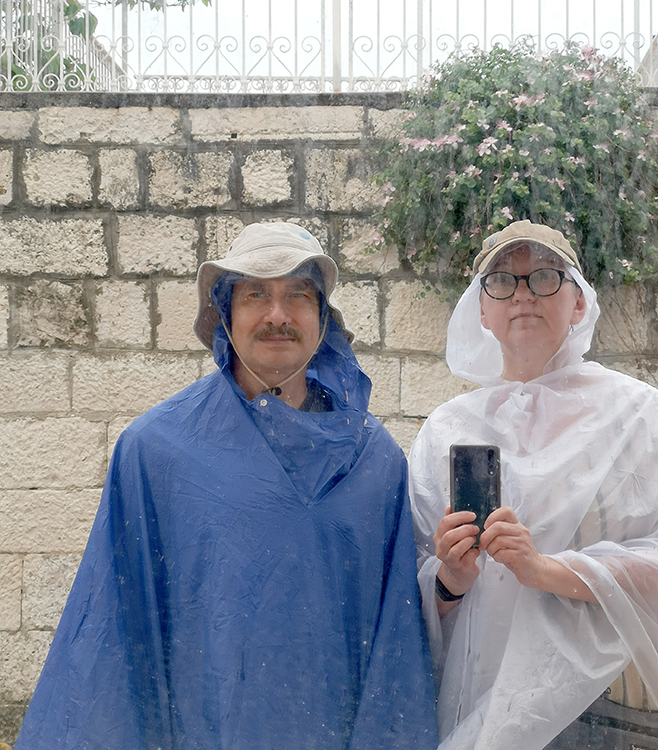

From the authors:
“…We scraped together from the bins and swept the barns, and gathered enough flour for… an unauthorized monument to travelers. The piece turned out eco-friendly and harmless, full of salt. A two-figure mini sculpture — semi-amorphous beings: one with a mustache and a panama hat, the other wearing glasses, hand in hand, both with backpacks. (I thought about naming them ‘Look-Alikes’ because they really do look alike, and it sounds like ‘walkers’ and ‘passersby’ too, but then I figured, let them walk with us for a while, maybe the right name will come later.)
And so they went with us on a journey through Dalmatia… They trekked through dark forests, crossed wide steppes, climbed high mountains. Along the way, they gave concerts in towns, with great success… And all the time they tried on the surroundings and atmosphere.
Exactly one month ago, right after the shortest night, our minis finally found their place. Everything came together in Zadar — with the constant sounds of the Sea Organ and the cries of seagulls. Next to the ‘Greeting to the Sun’ and ‘staring into the sunset.’ The mooring bollard — the perfect pedestal. And what a texture it has! Nothing can spoil it. (We were worried, we didn’t want to glue anything in historic places to avoid damaging the site.)
In short, everything aligned perfectly: the journey salted with salt inside them, the salt of the sea, the salt of the roads, and the sun. So these ‘Posolontsy’ (Salt Travelers) came to be — a monument to salty travelers who have tasted the salt of the path and the salty sea spray…
I don’t know how long they will stand there (or have stood). Usually not long. After all, that’s what travelers are for.”
You can try searching for photos on Google Maps at the following locations: Zadarska županija (здесь и здесь) и Zadar Dock (здесь ) . There are many views, but no new photos have appeared. Is the monument still there, or has it been moved somewhere? But that’s exactly how it’s meant to be.
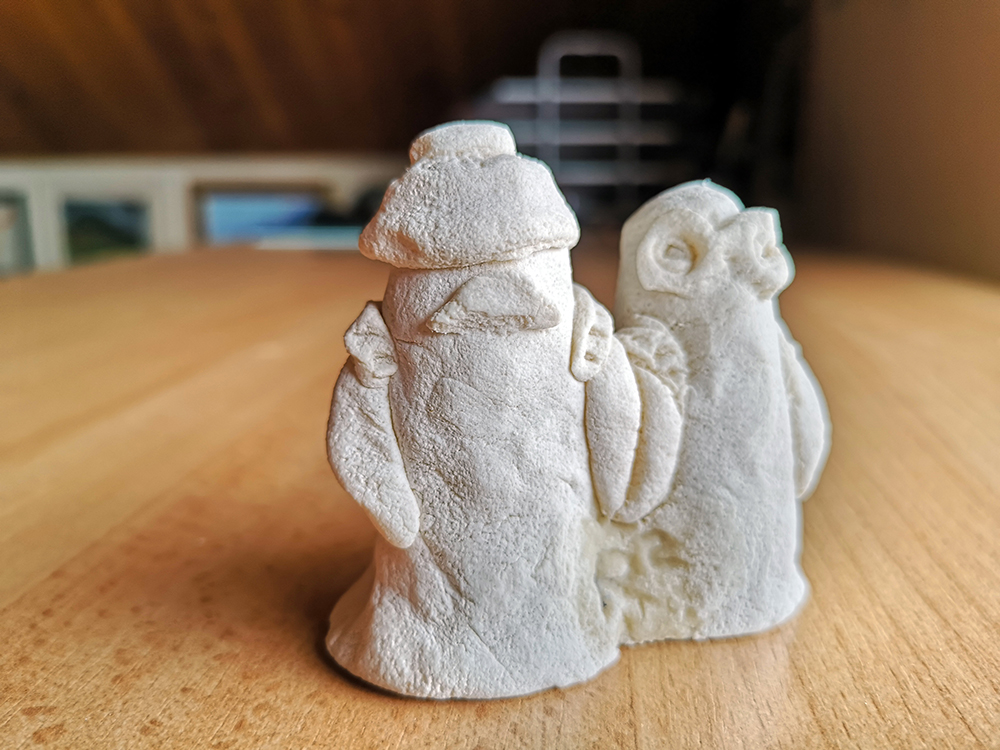
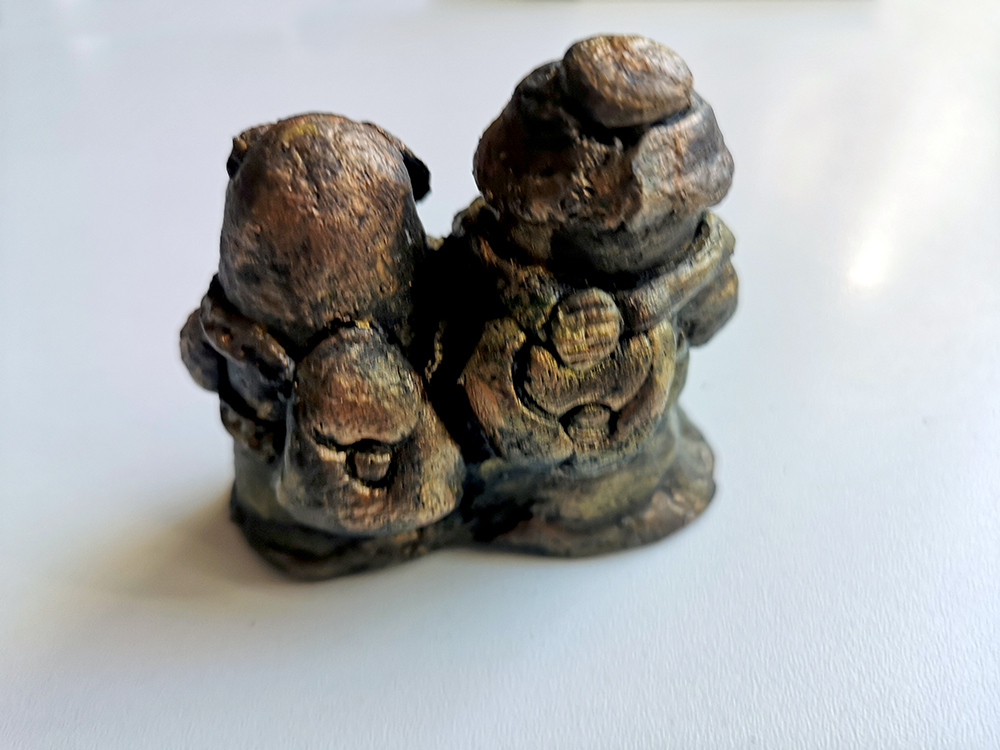
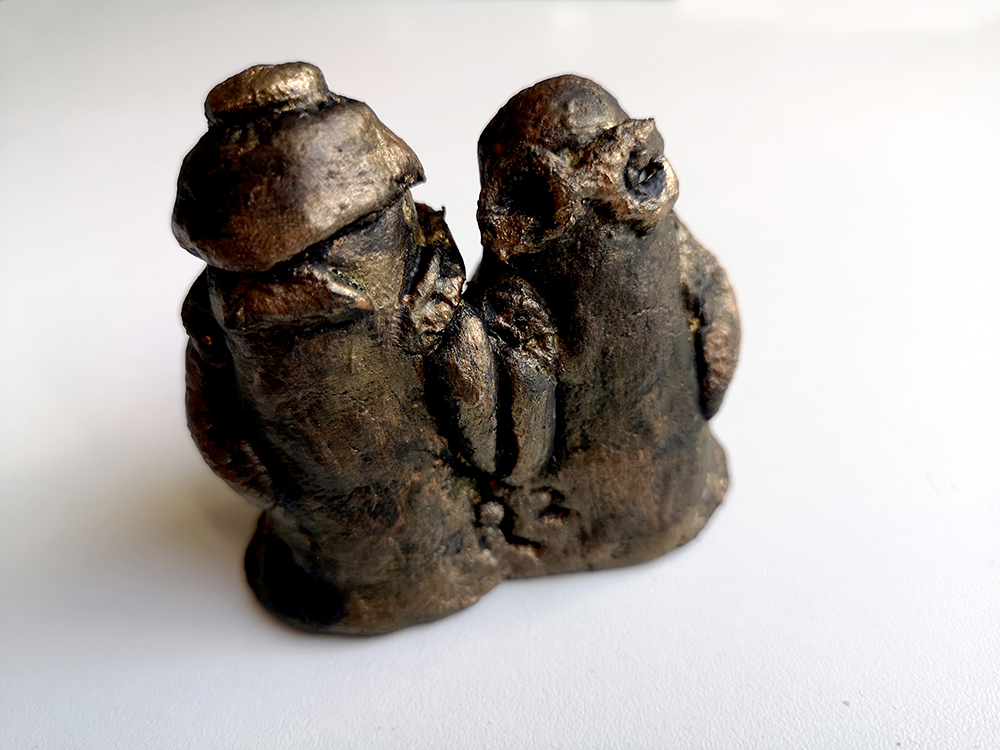
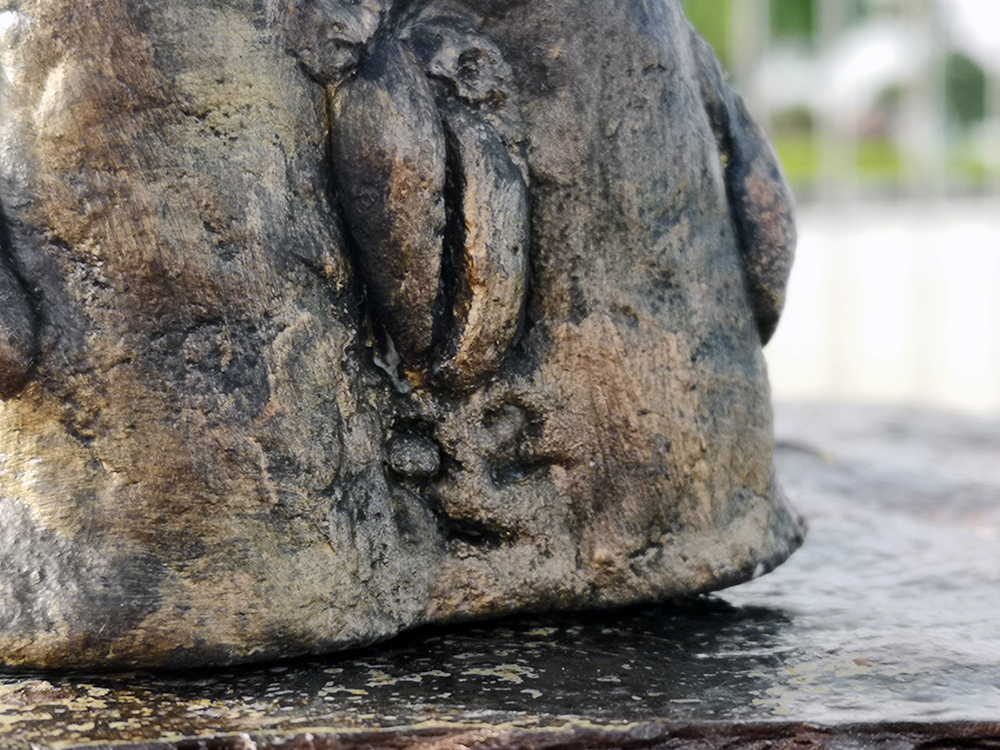
Series: The Quarry as Witness
Nyirádi Bauxite Quarry, Hungary
2022, 2023
Revealed Realism
The Nyirád Bauxite Quarry is a place where geology, industry, and art meet. Once a site of intense bauxite mining, it now reveals colorful slopes, water-filled basins, and layers of natural and human history. Through performance, pigment collection, and immersive artistic practice, we bring this landscape’s memory to life.

Geological and Historical Context The bauxite quarry is located approximately 4 km south-southwest of the town of Nyirád. It consists of several interconnected basins, covering an area of about 1100 by 700 meters. All mining operations have since been halted. Today, the southern basin features a racetrack, while the northern basin is recognized as a geological natural monument. It showcases exposed multicolored slopes and a partially water-filled floor, measuring around 300 by 400 meters. The quarry is known for its vivid and varied coloration.
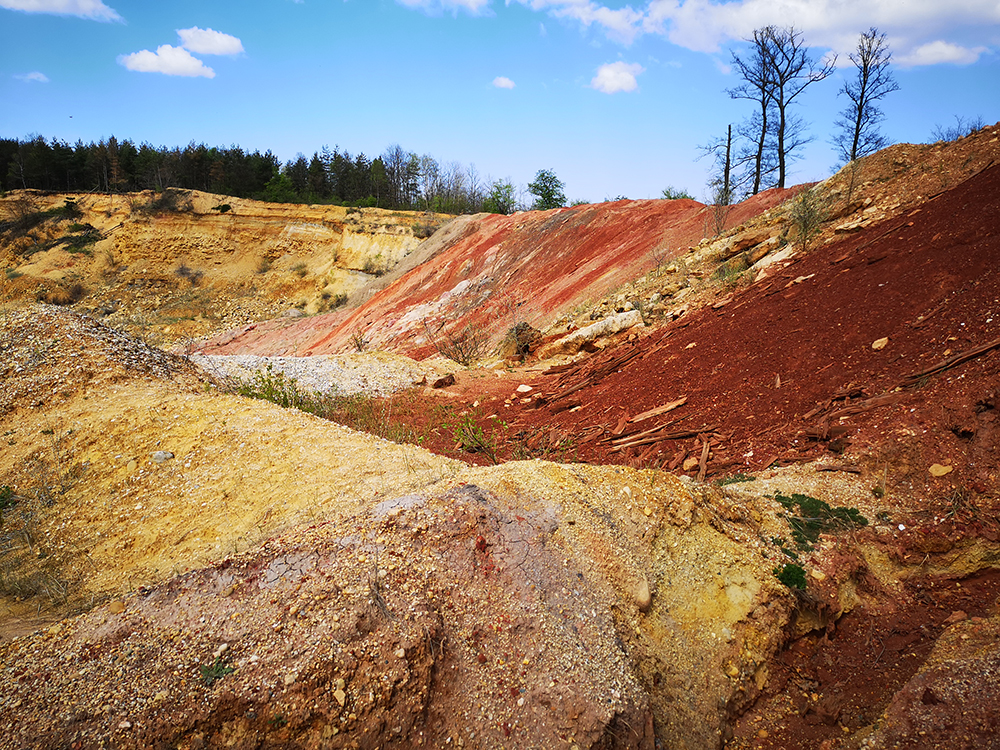


The primary material extracted from the site was bauxite — an aluminum ore. Bauxite forms in tropical climates through the intense weathering of igneous rocks. Under hot and rainy conditions, rock components break down and are carried by water, settling where the flow slows. The quarry’s bedrock consists of Upper Triassic dolomite (227–205 million years old). During the Cretaceous period (approximately 143–113 million years ago), a bay formed in a depression in the dolomite layer. Sediments rich in bauxite minerals accumulated there, creating a bauxite lens.
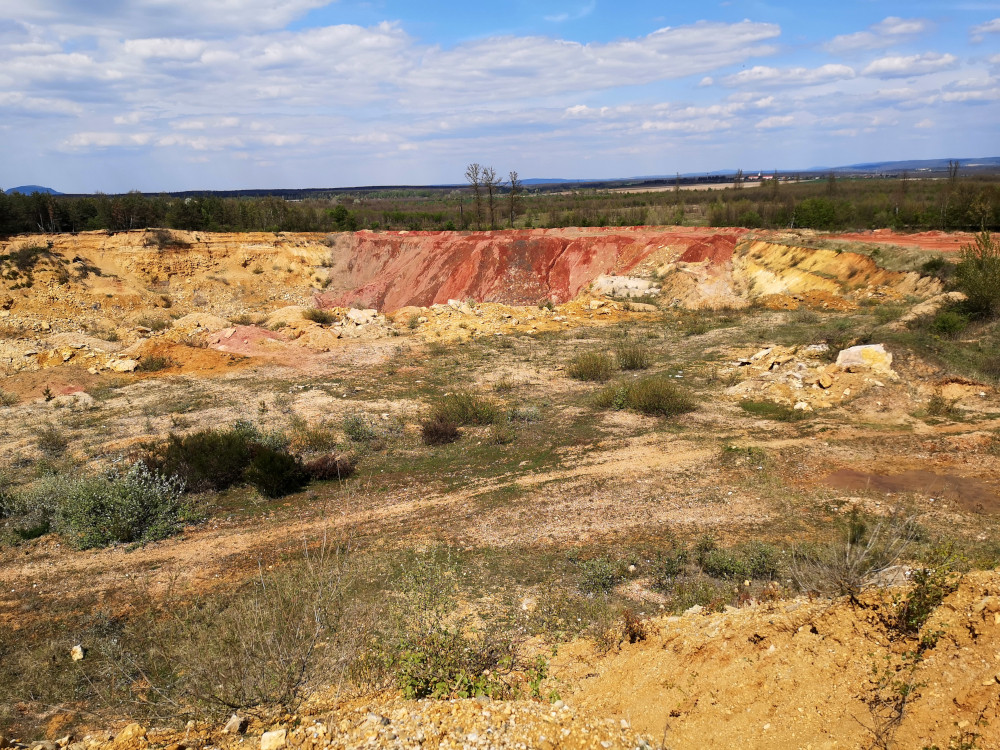
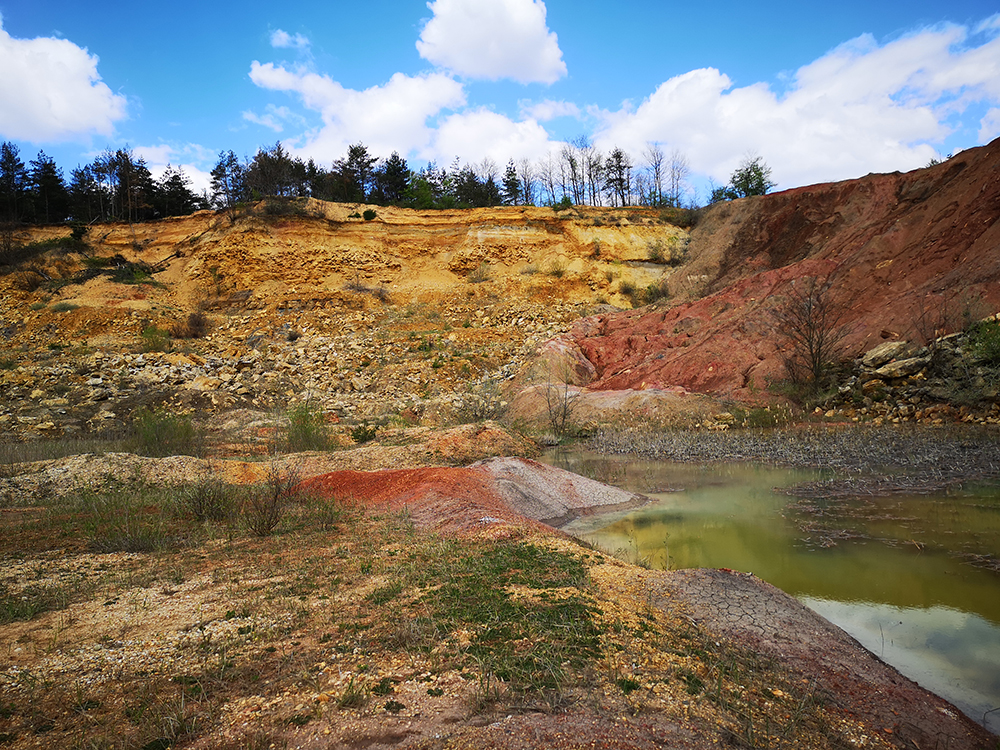

Aluminum derived from bauxite is widely used in the aviation and aerospace industries. After the construction sector and packaging production (such as cans and foil), one of the largest consumers of aluminum is the energy industry. Mining in this area began in the 1940s. In the 1960s, to prevent flooding of the quarry, a gradual lowering of the regional karst water table was initiated. The ore was extracted through deep mining combined with continuous pumping of underground water. This process disrupted the natural water balance of the Transdanubian Mountains. Major river systems were damaged, and springs—including the Tapolca cave spring and the thermal sources of Lake Hévíz—were depleted. Water inflow into the lake was reduced by half. Although the environmental consequences were known to experts, the political climate at the time did not permit halting mining operations. Extraction was only stopped in the 1990s due to public pressure. Since then, groundwater levels have slowly begun to recover. [1]

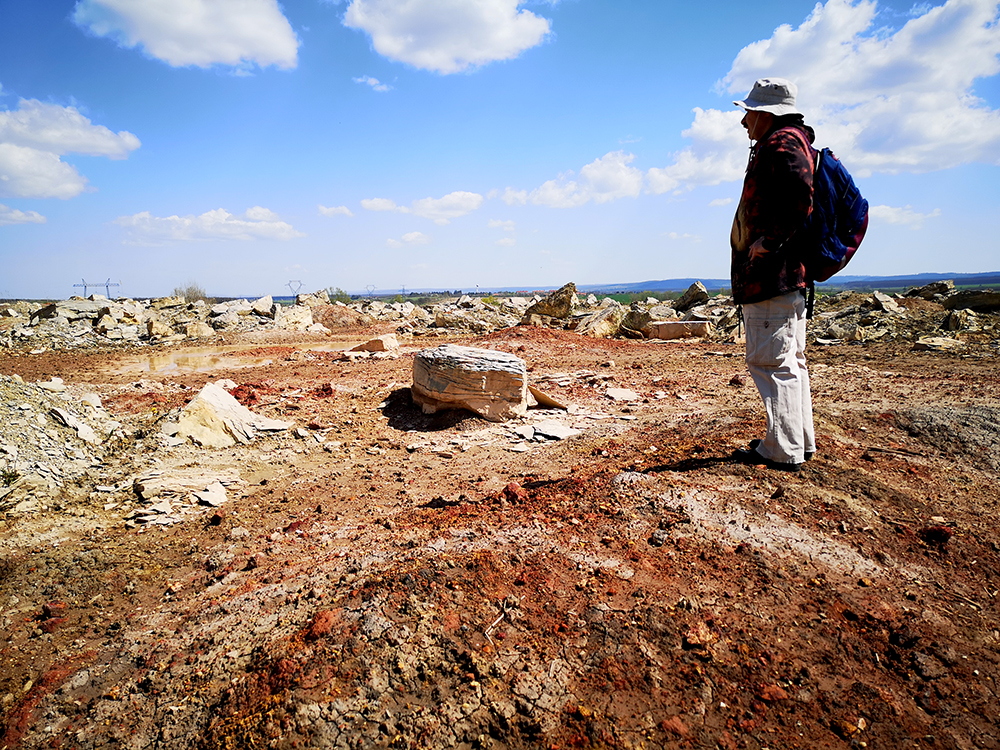
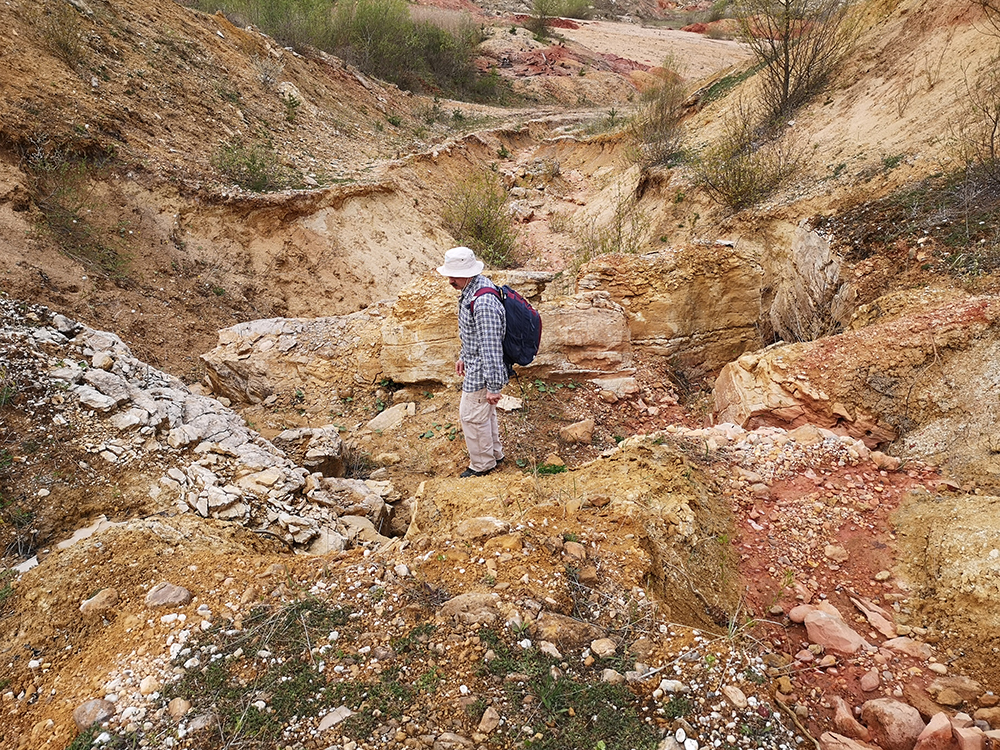
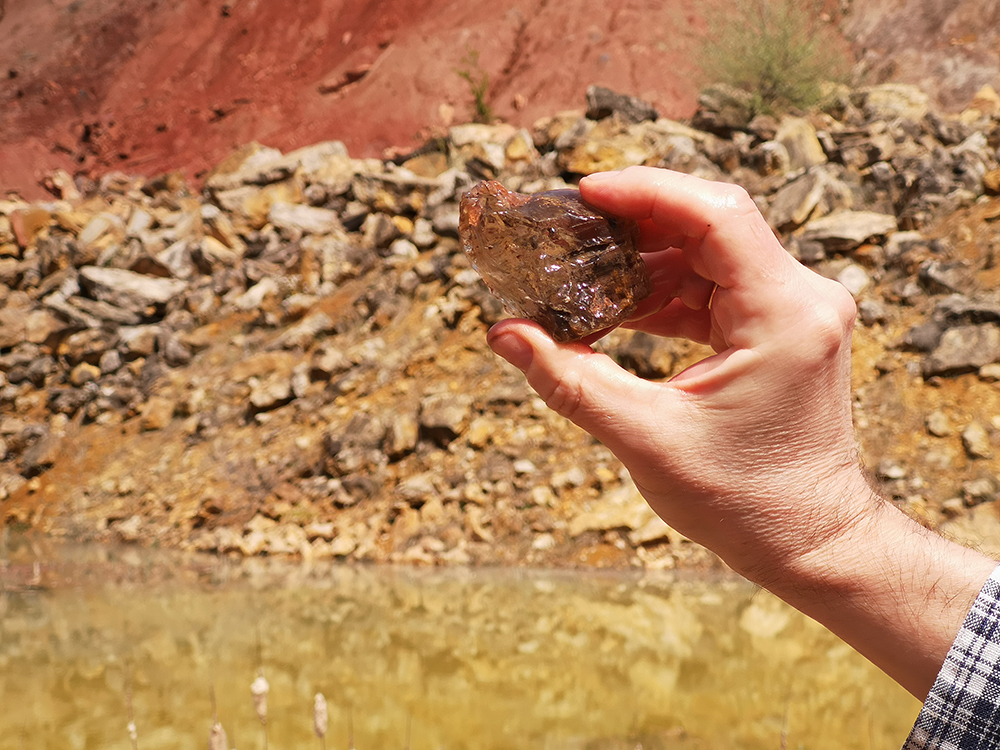
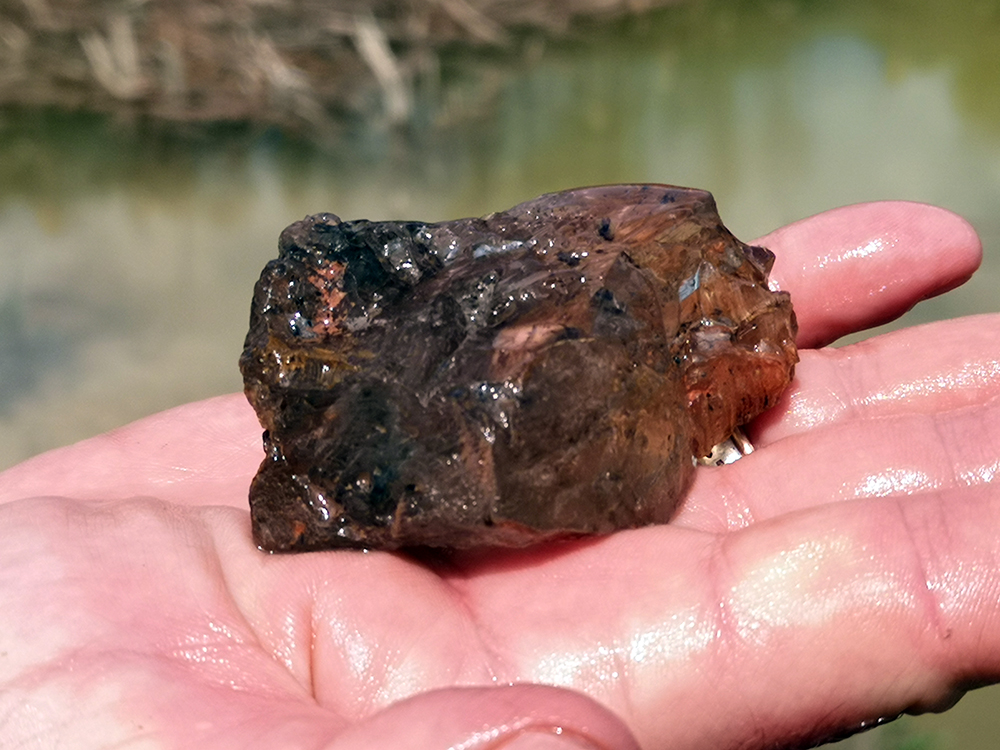
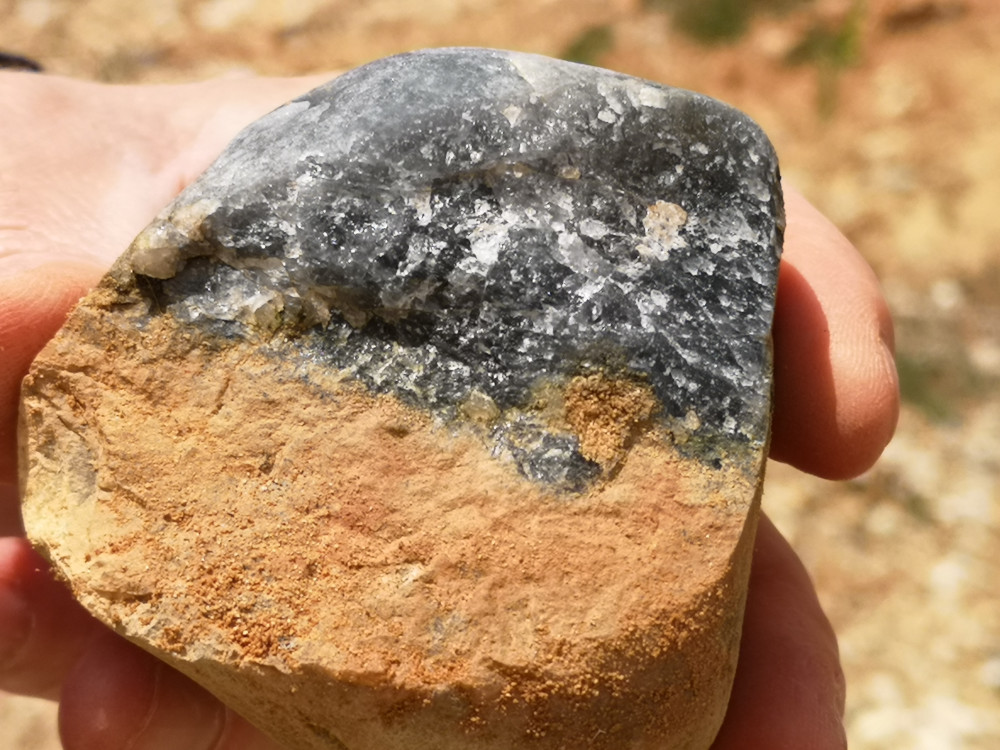
Performance and Artistic Intervention We first visited the Nyirád Quarry in 2022. The site looked almost otherworldly — people often say such landscapes resemble Mars, the planet named after the god of war. In some places, the terrain appeared like a dried, bloody wound. Mining left physical and ecological scars, but also cultural and emotional ones.
In many cultures, the deer symbolizes a mediator and healer of the earth. Our performances with deer masks embody this role, invoking the idea that art itself can heal landscape wounds. So we performed an artistic ritual in deer masks — a gesture of connection, care, and transformation.
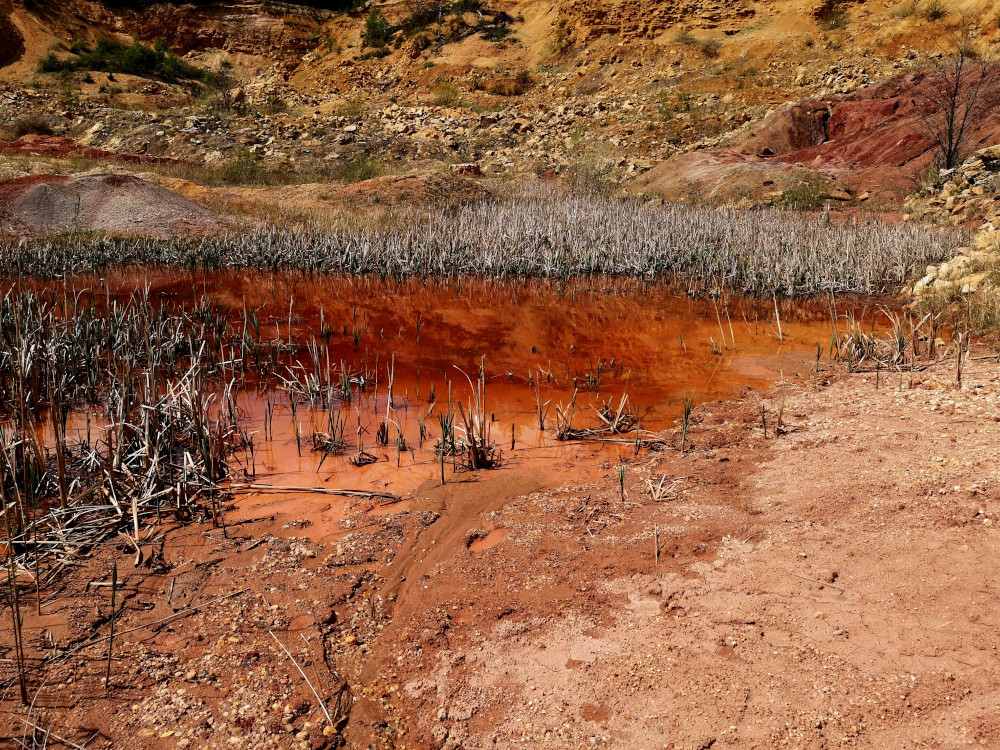

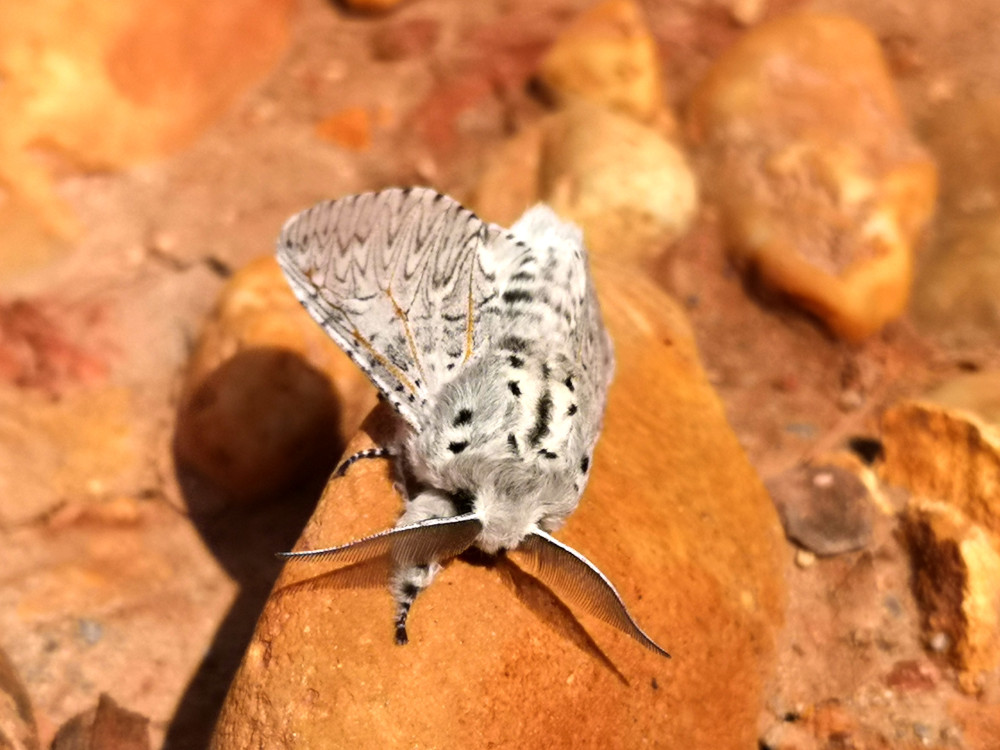
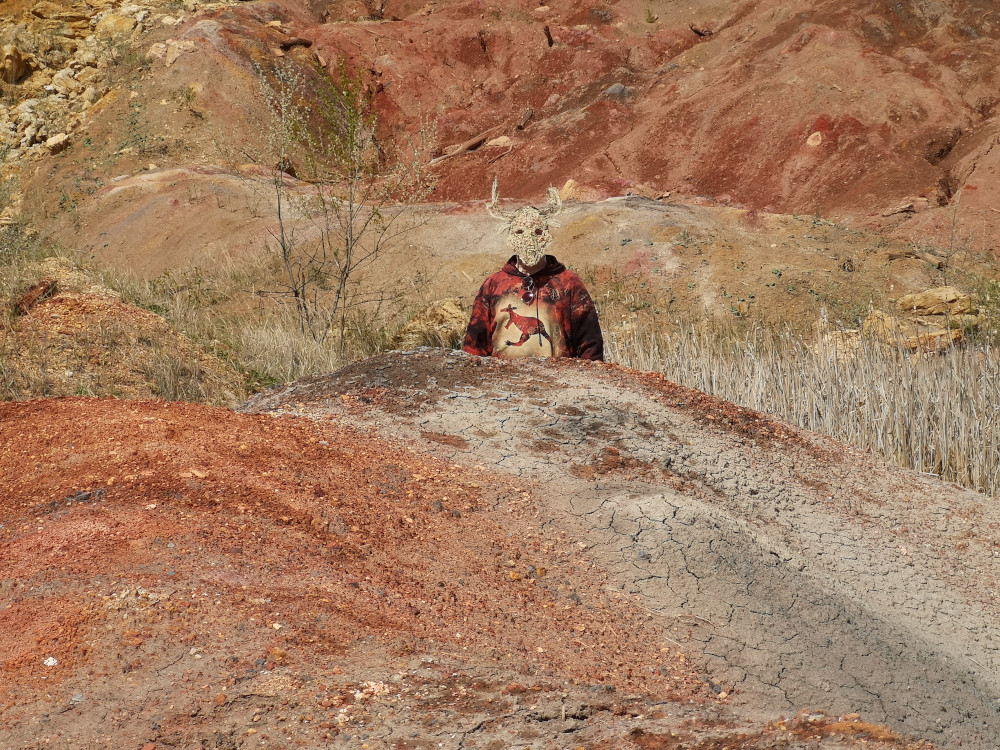


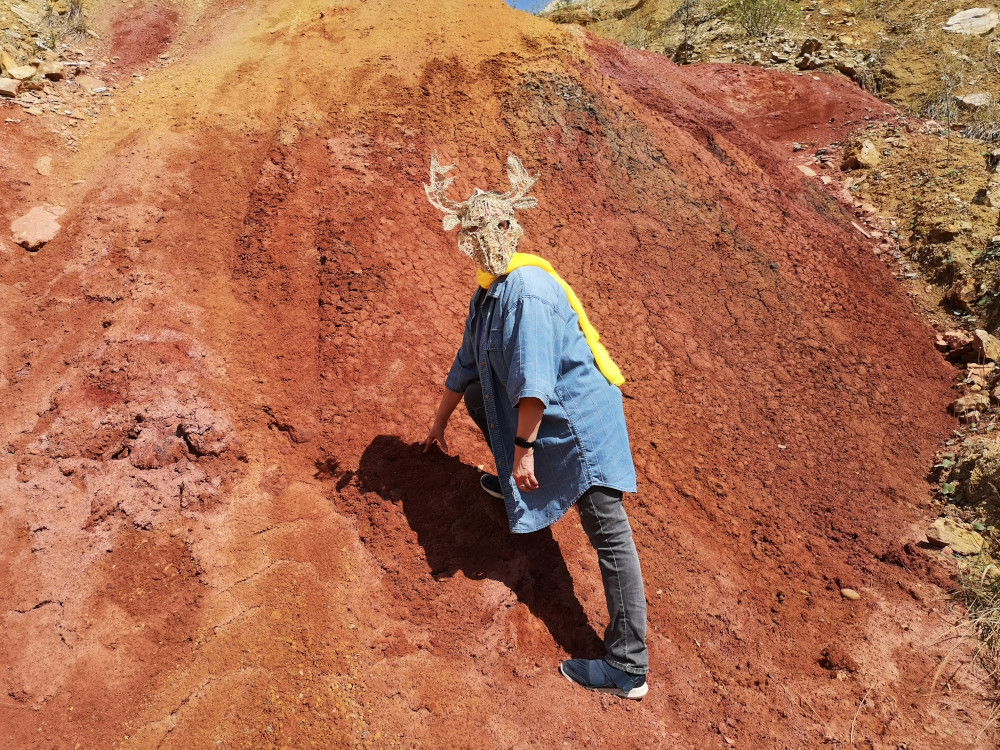
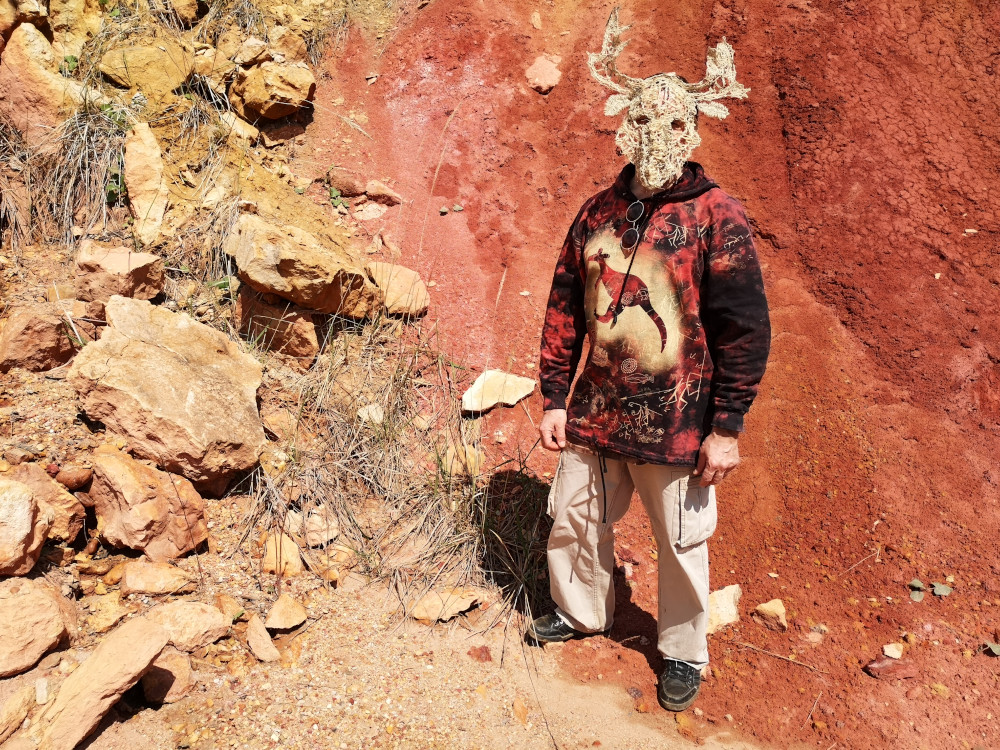
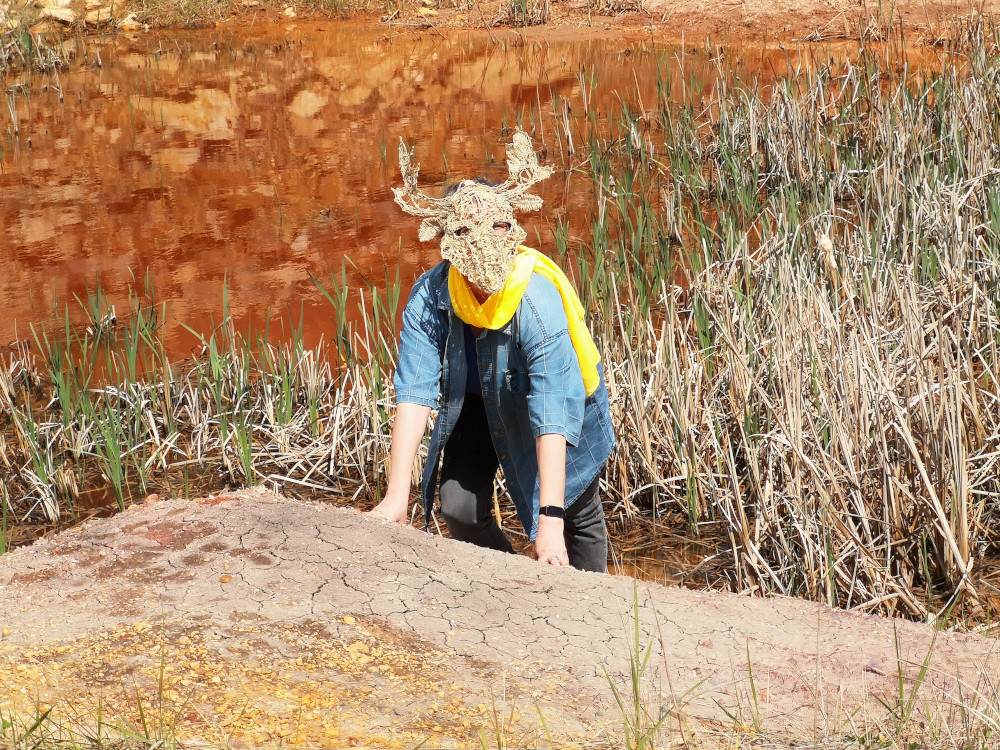
We returned in 2023. This time, in the multicolored part of the quarry, we gathered natural pigments from the vibrant mineral layers.

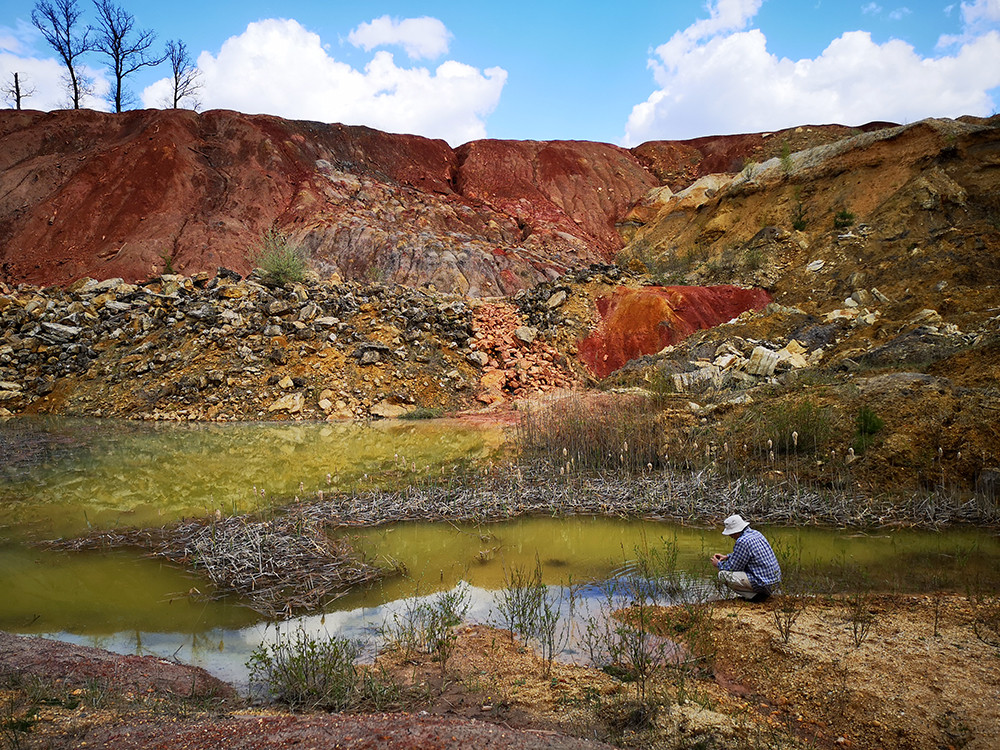
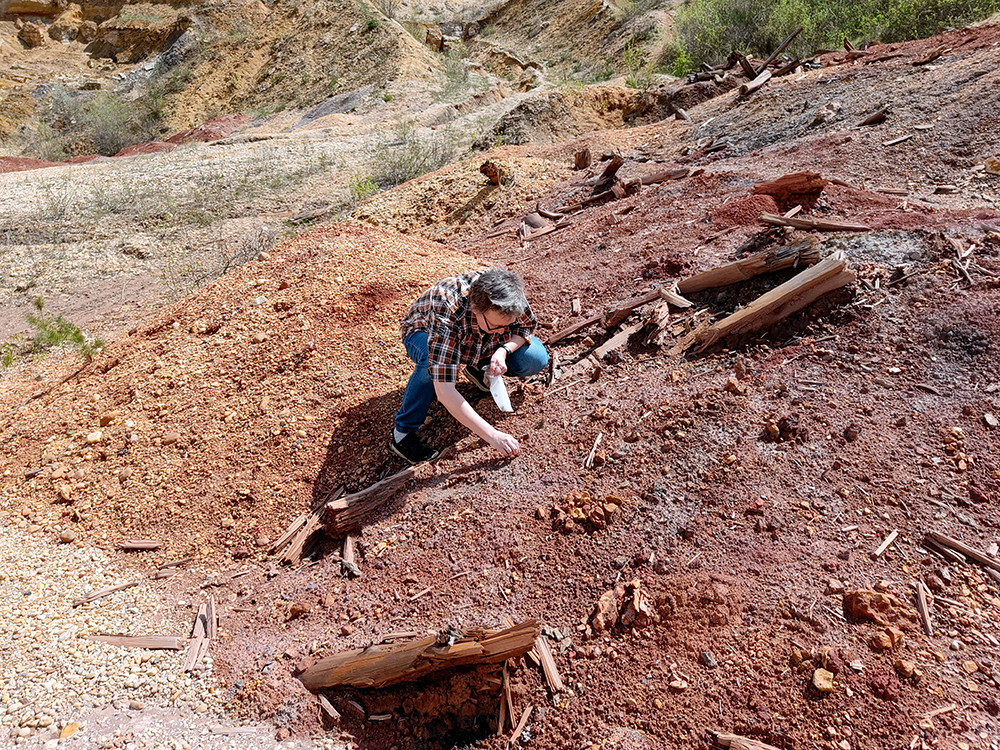
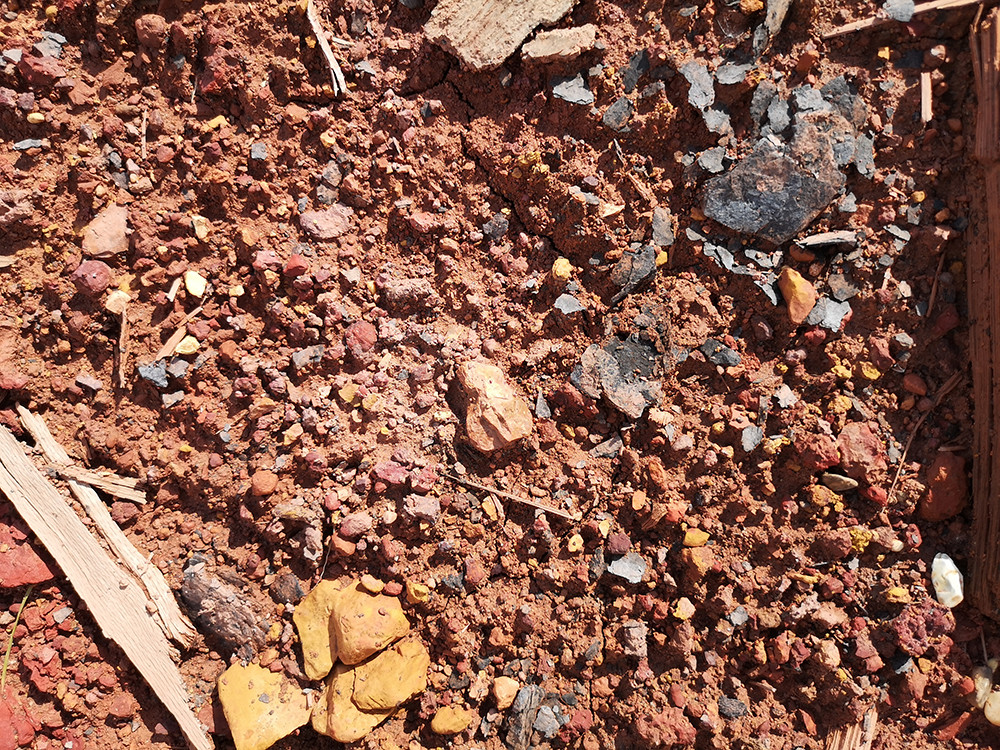

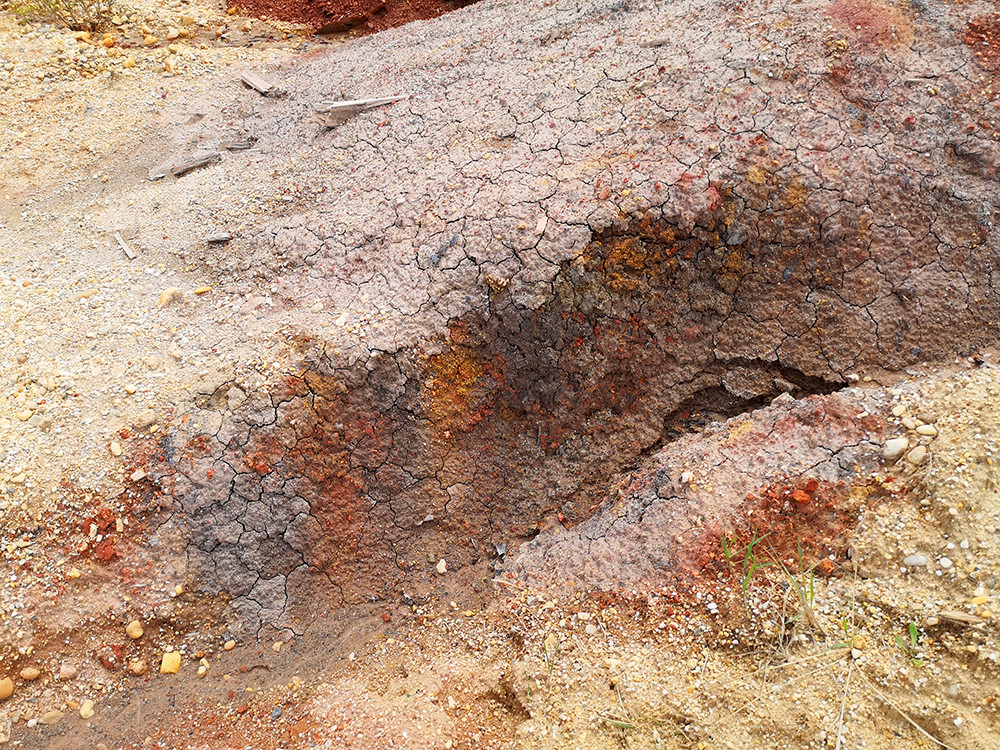
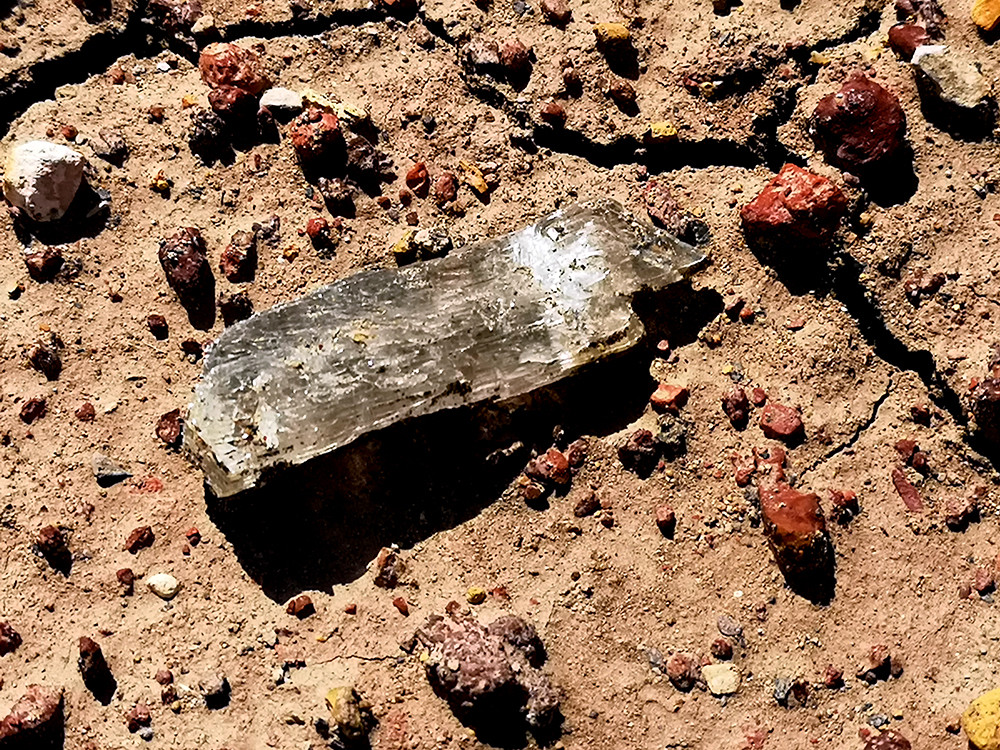
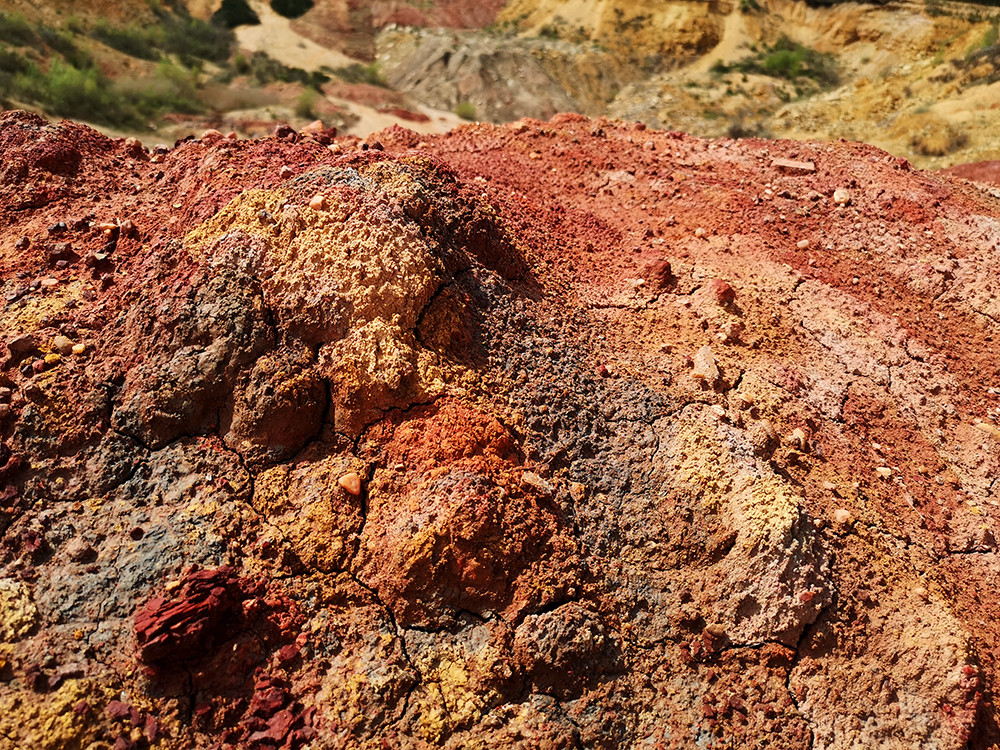
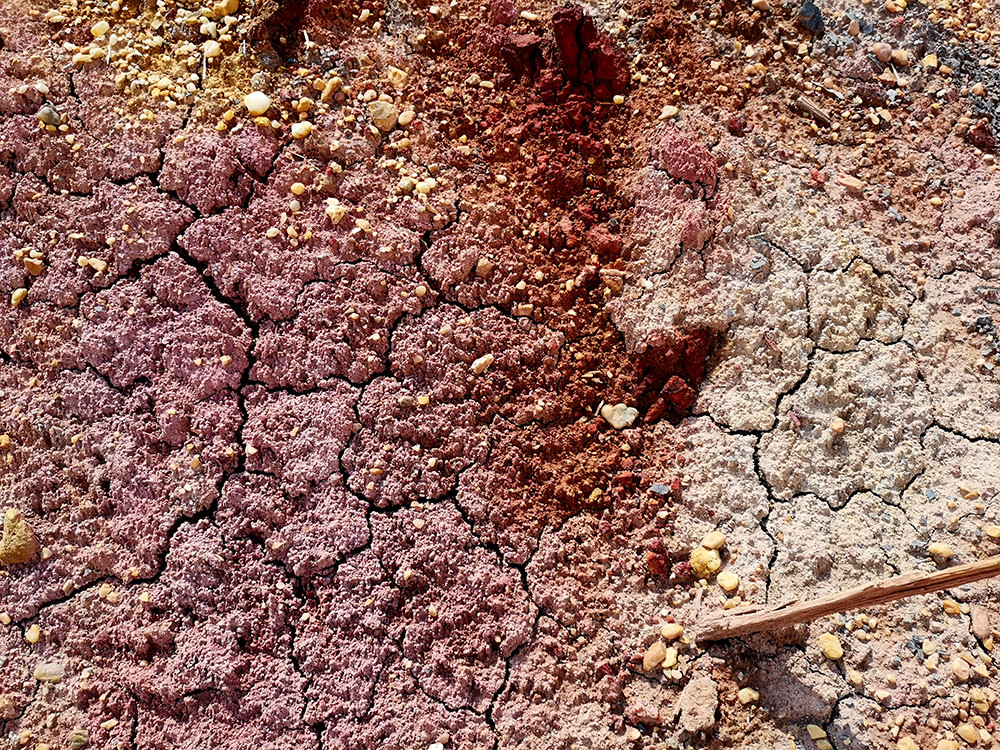
These were later tested on sandpaper – combining touch, memory and matter into images.
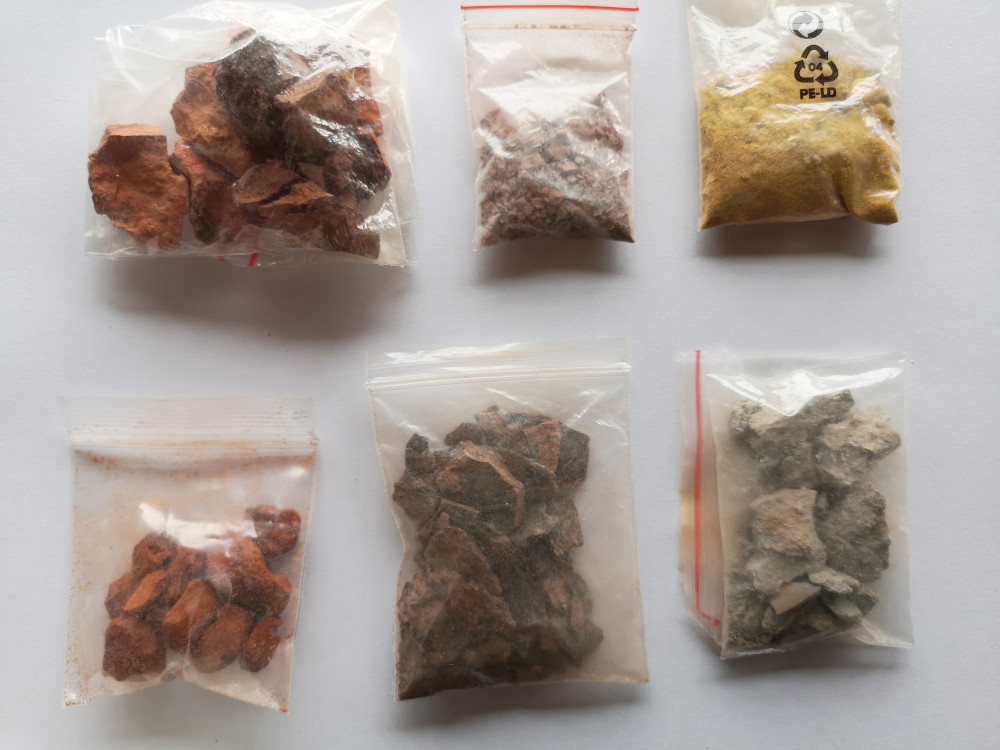
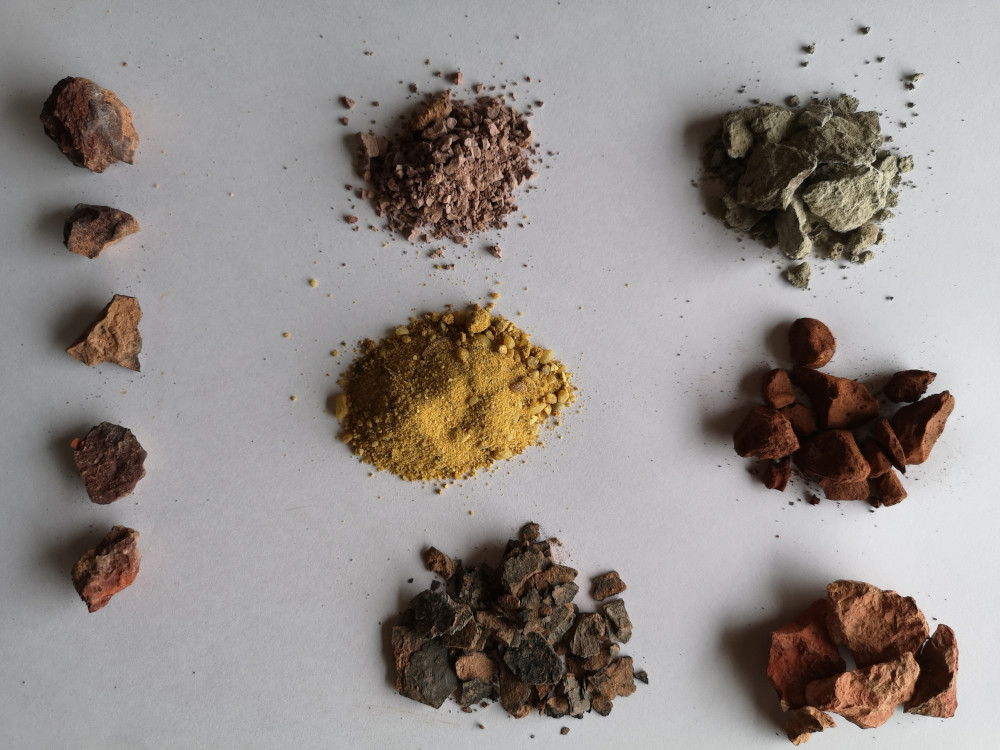
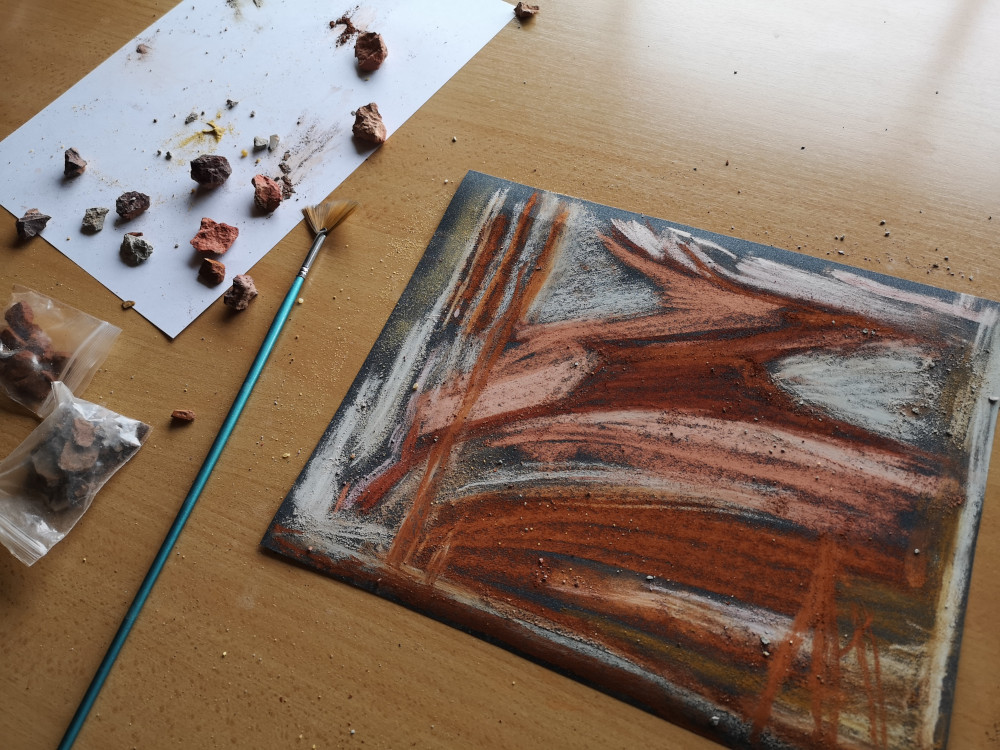
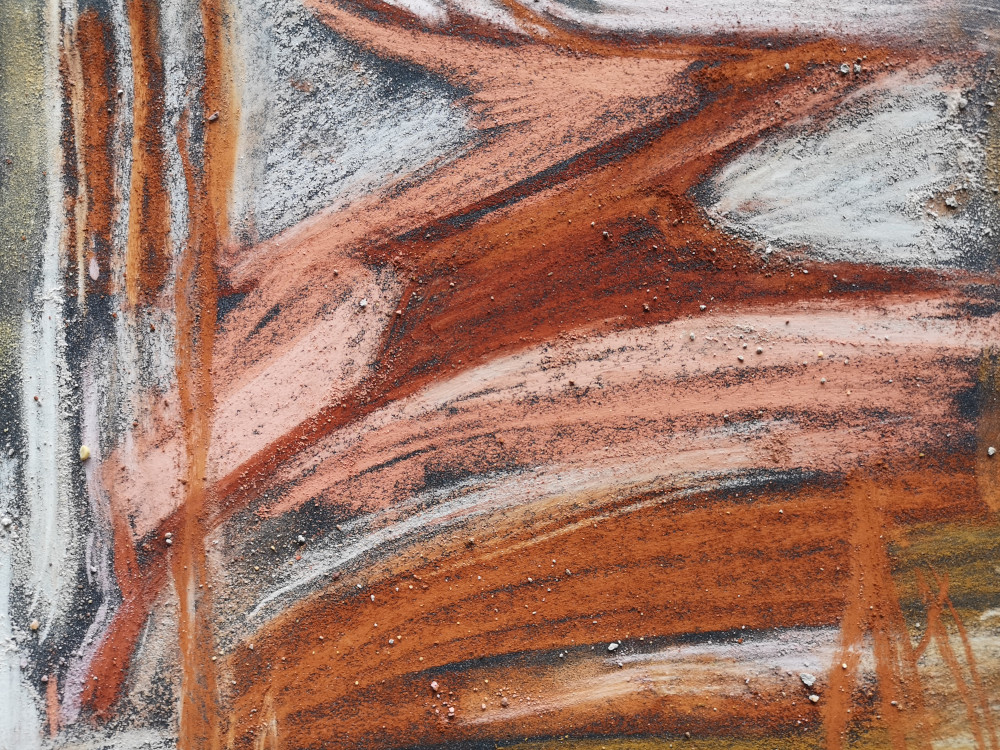
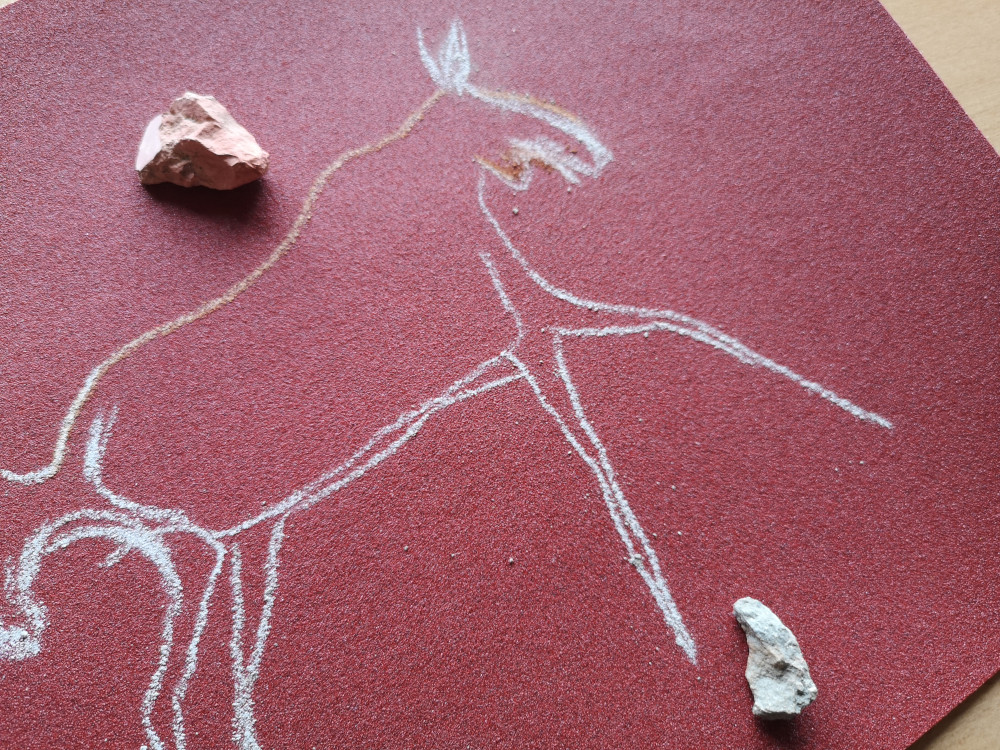

Revealed Realism Method Our artistic approach does not impose new narratives but reveals and amplifies existing realities. By engaging physically with the site—through touch, movement, and material sampling—we deepen the perception of the quarry’s layered history and present condition.
This method bridges science and art, combining geological knowledge with sensory experience to create a multidimensional understanding of place.
The scientist reveals the quarry’s geological past and industrial impacts, preserving knowledge as a form of memory. The artist animates this knowledge, transforming it into lived experience and emotional connection. Together, science and art restore the quarry’s voice, enabling dialogue with its scars and stories.
Series: The Quarry as Witness
Bauxite lens of Lake Darvash, Hungary
2022
An Artistic Intervention
Materials used: cotton wool, earth pigments from Darvastó, thread, time.
About the Place: The quarry is located approximately 7 km southwest of the town of Nyirád. It is characterized by its red coloration and is currently inactive. The quarry measures approximately 700 meters in length, 250–400 meters in width, and 15–20 meters in depth.
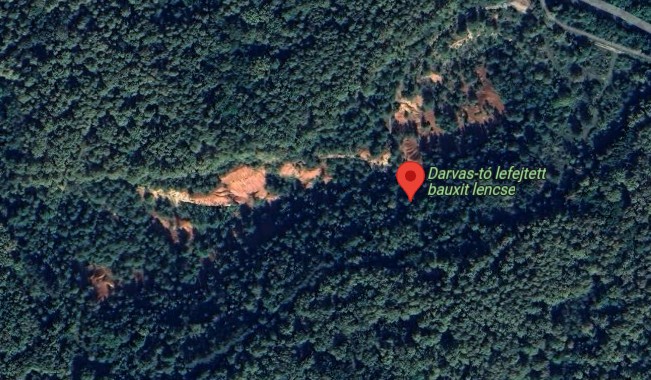
The extracted material was aluminum ore — bauxite. Bauxite forms as a result of the weathering of igneous rocks in tropical climates. Under extremely hot and rainy conditions, the rocks disintegrate, and their components are transported in solution to areas of sedimentation where the flow of water slows down. The bedrock of the quarry is Upper Triassic dolomite (dating from 227 to 205 million years ago). During the Cretaceous period (143 to 113 million years ago), bauxite-bearing particles accumulated in a bay formed by a depression in the dolomite layer, eventually forming the bauxite lens. Bauxite mining in the Nyirád area began in the 1940s. Ore from the lens was extracted through deep mining and the pumping of karst water. The quarry was closed in 1977. [1, 2, 3]
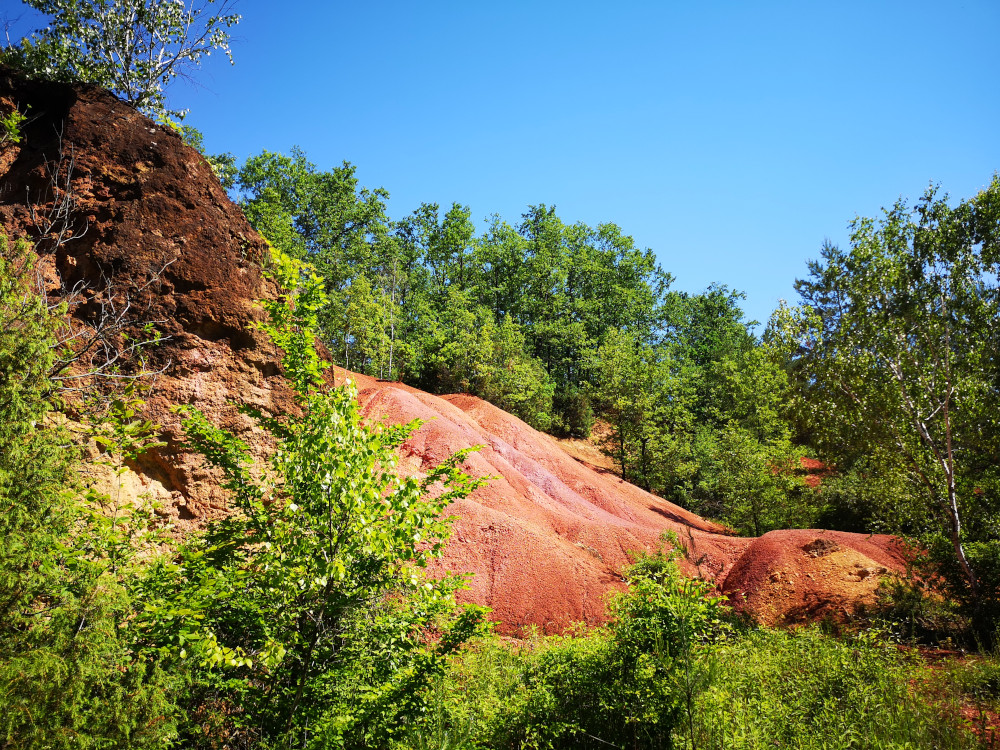
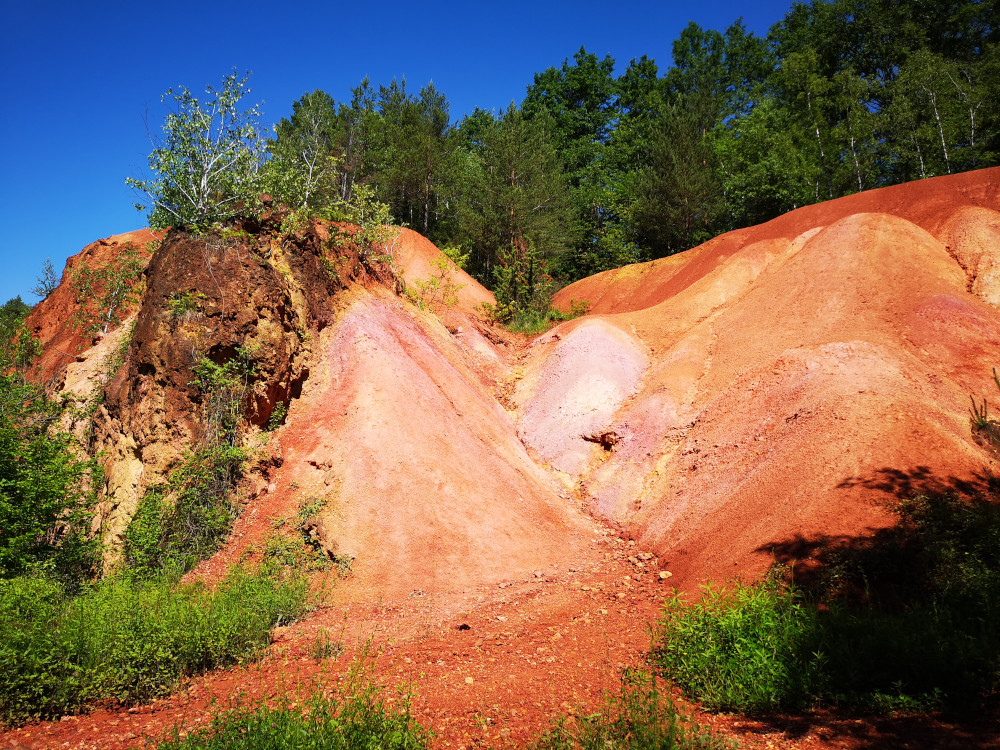
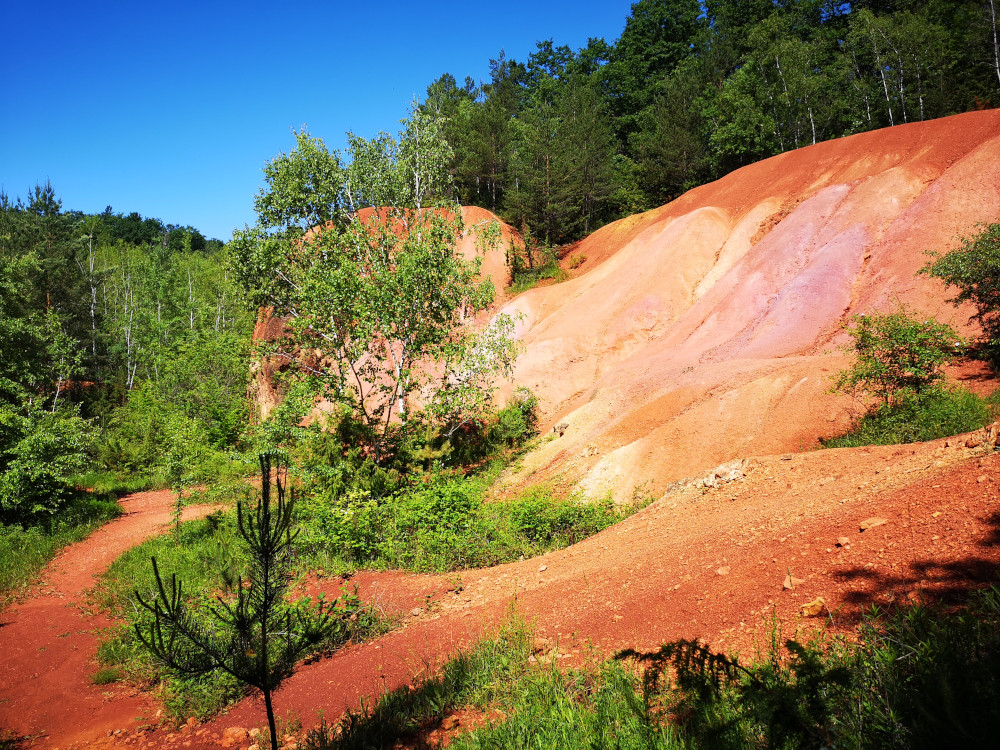
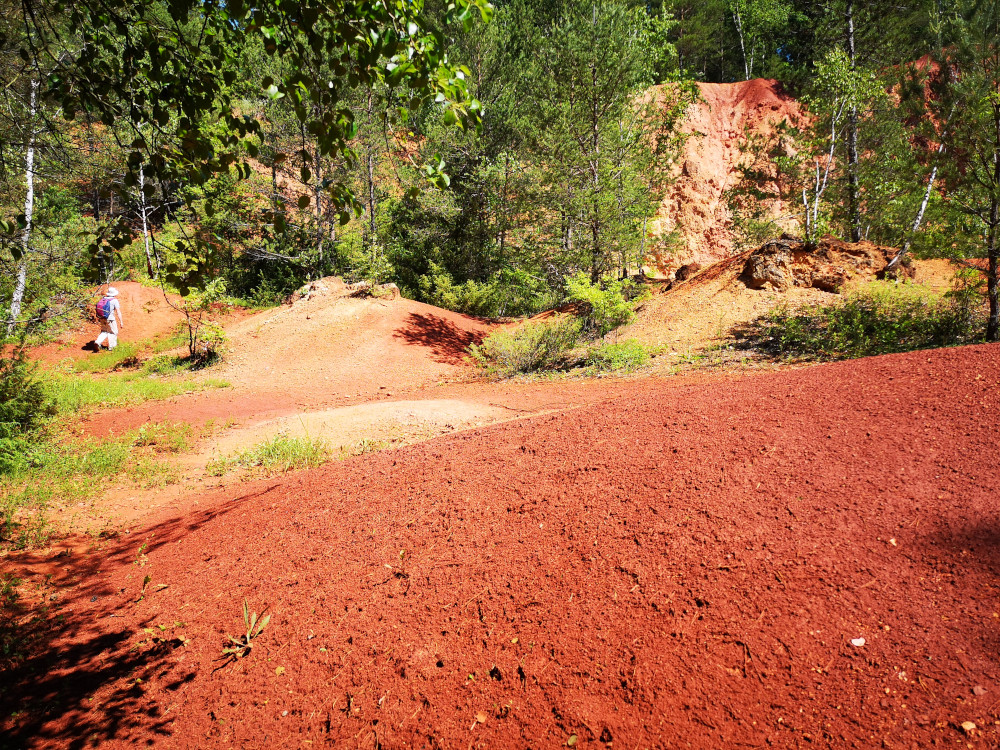

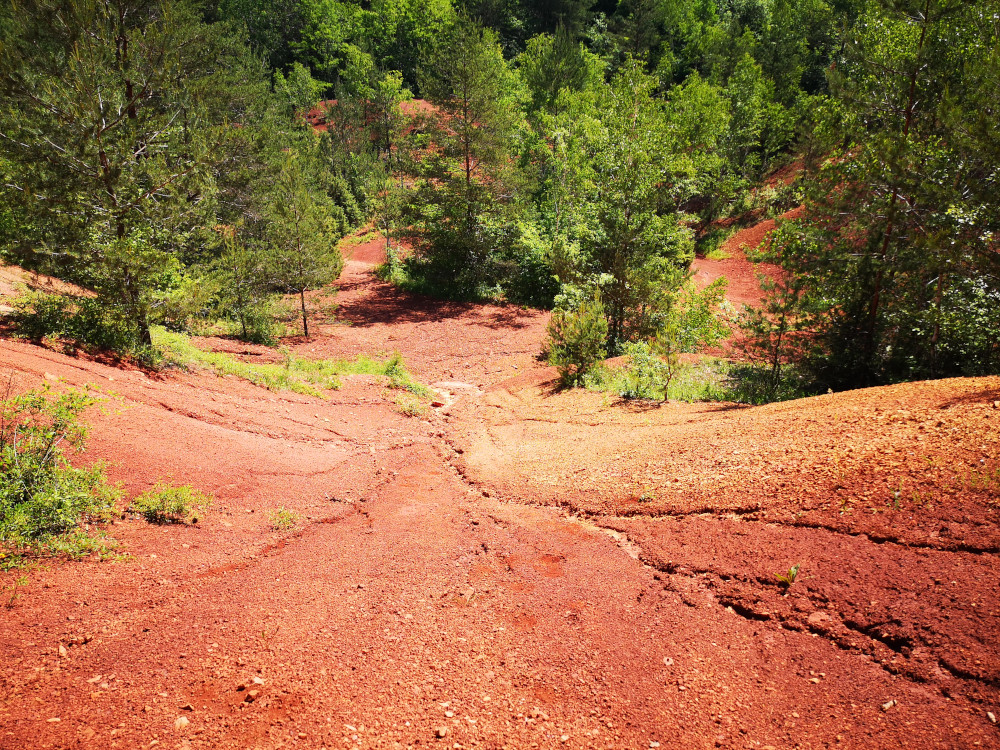

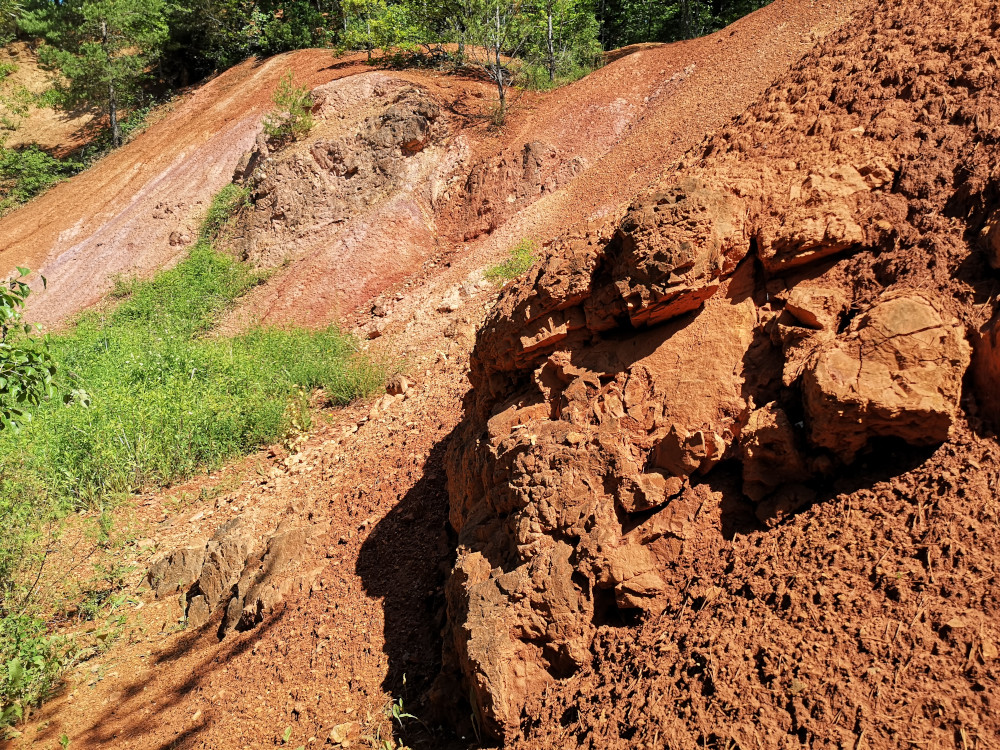
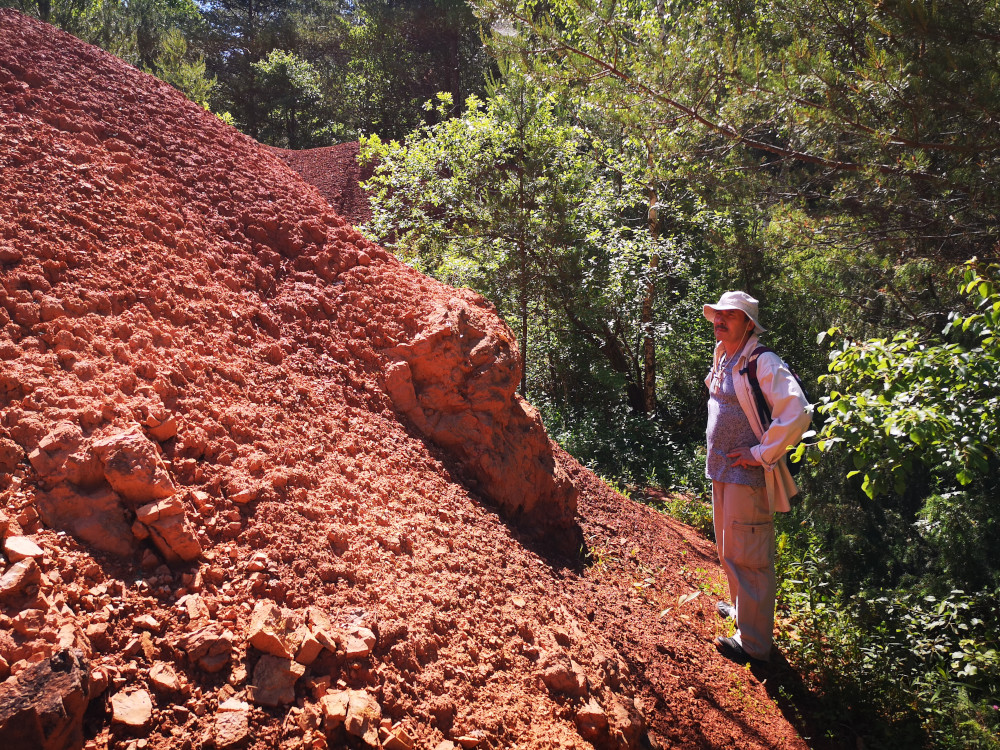
Artistic Intervention
In 2022, we visited the quarry and brought an artistic presence into its landscape. A small stag figurine, handcrafted from cotton wool and tinted with natural pigments taken directly from the site, was photographed by us in the quarry. Then we left it there — an unauthorized miniature monument. It bore no label, no explanation, no protection. It simply remained — vulnerable, visible, and quietly appropriate.
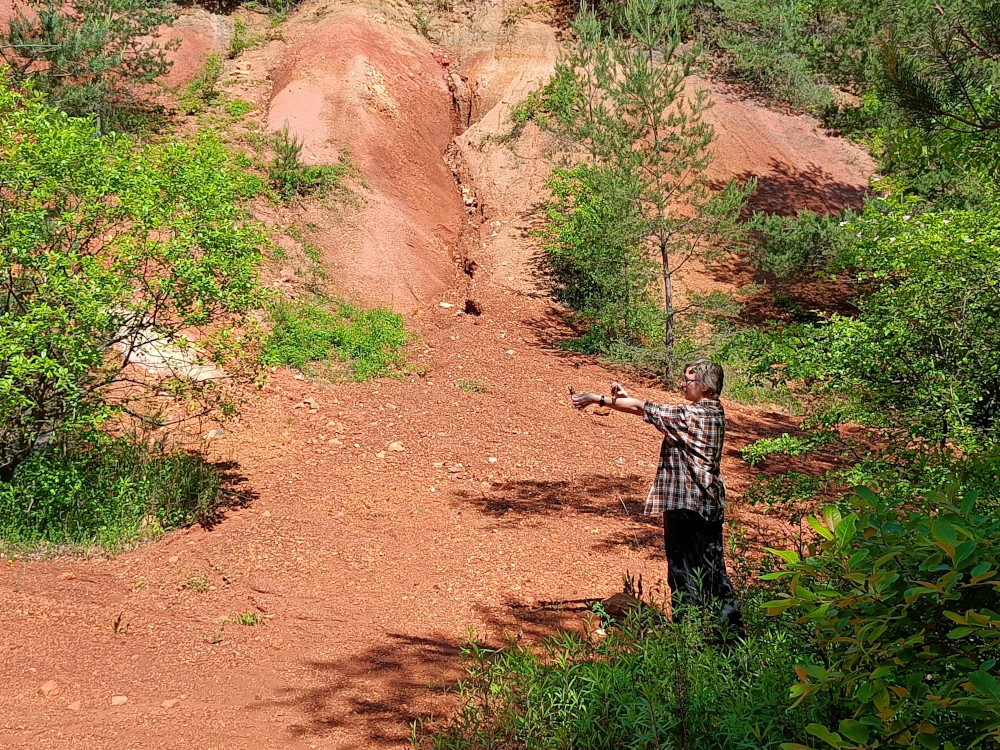
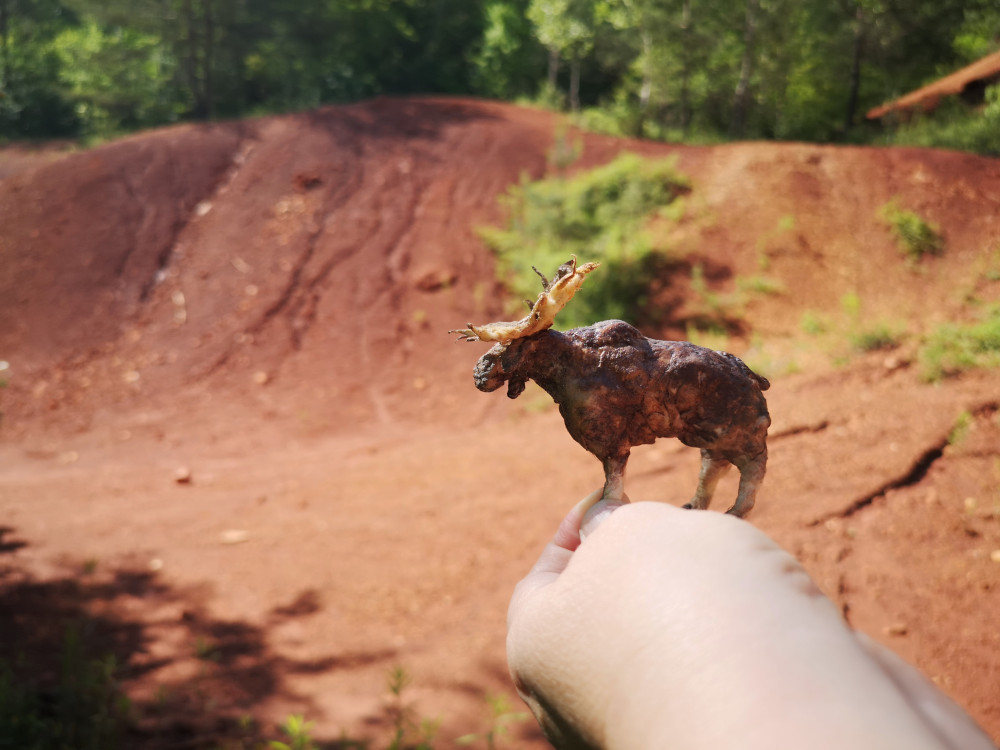
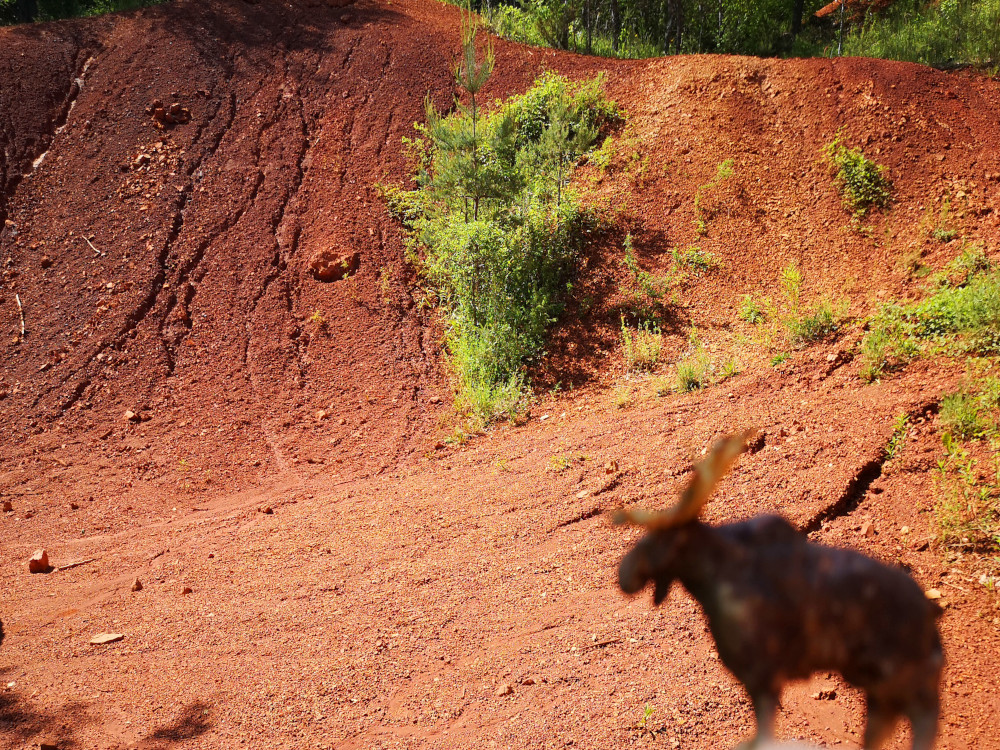
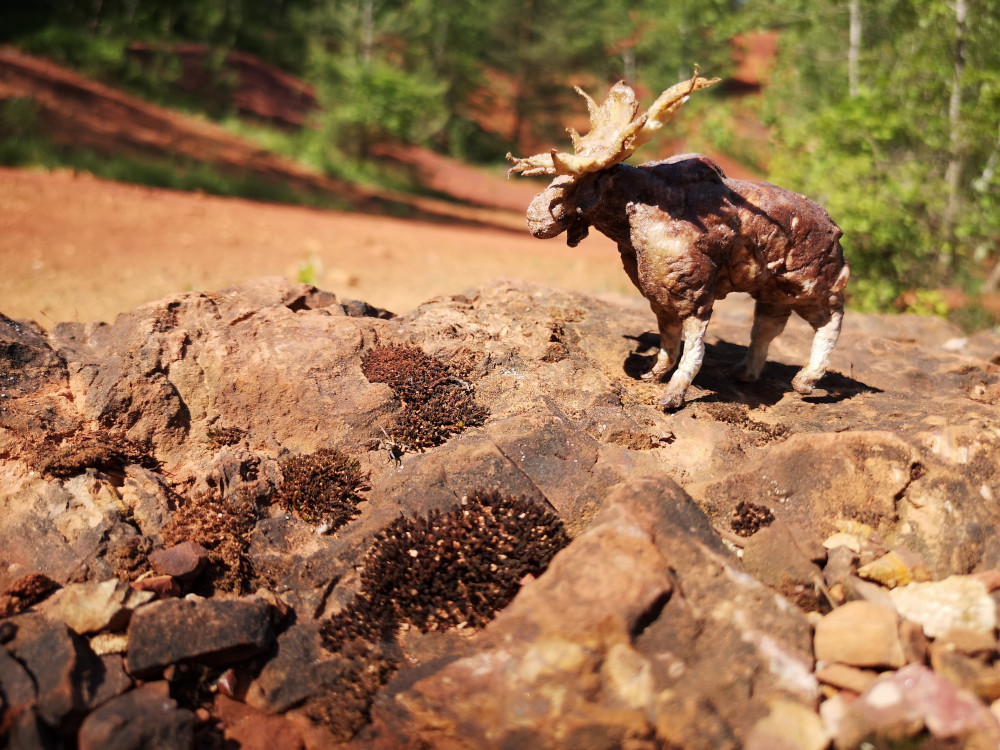
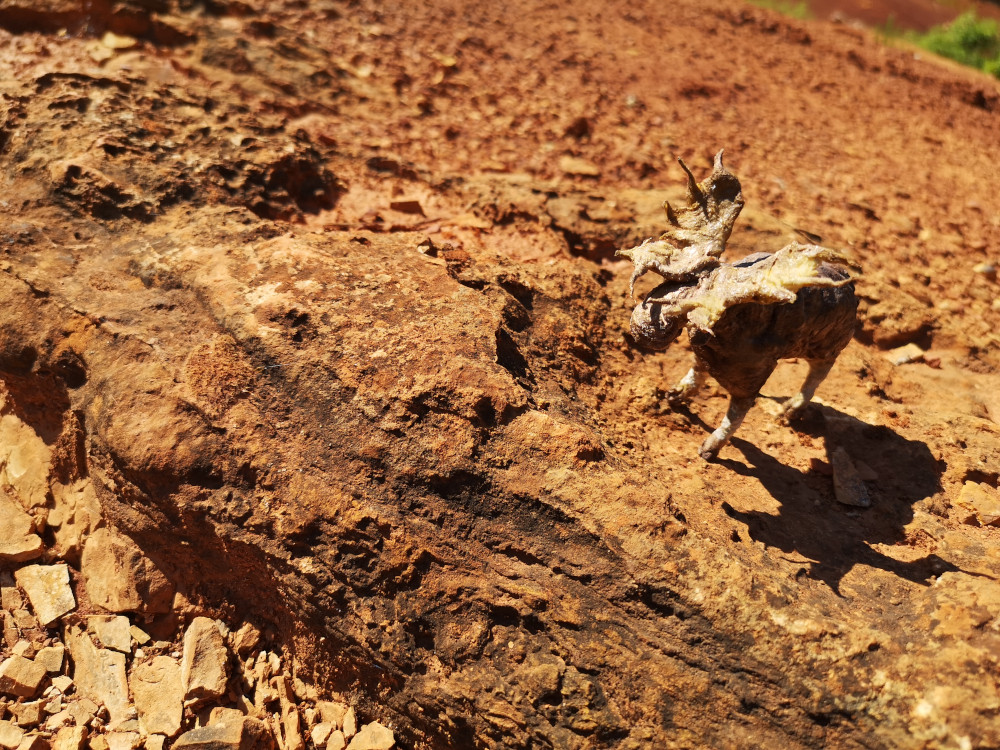
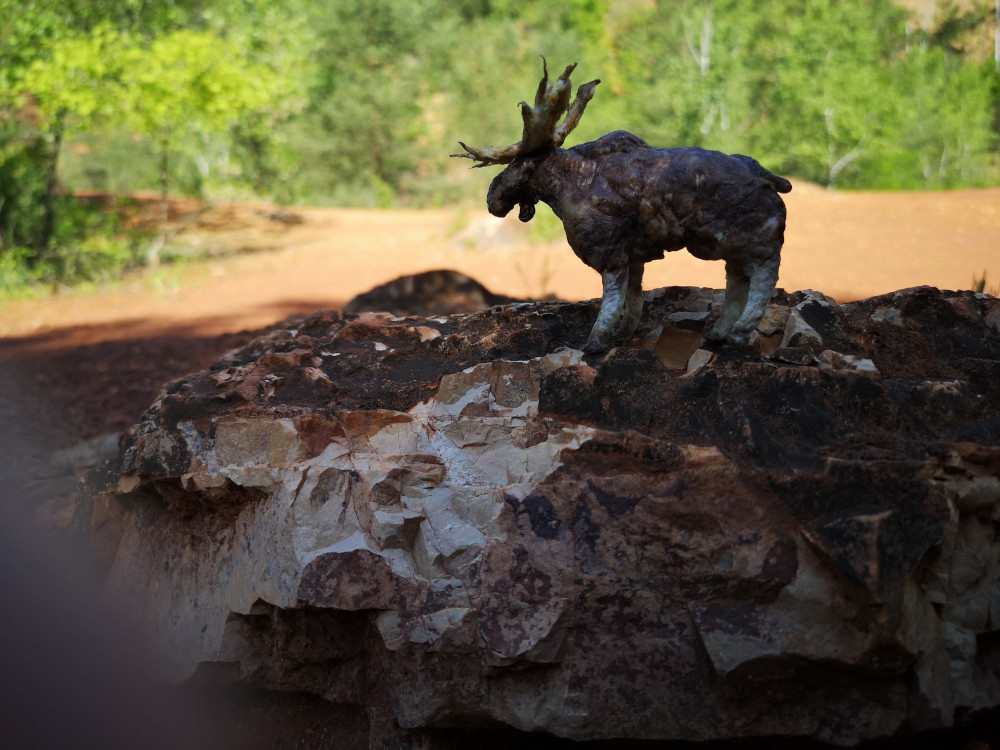
The red stag in the red earth became a silent ritual of return. A handmade creature, infused with the color of the land itself, placed into the wounded earth like a stitch.
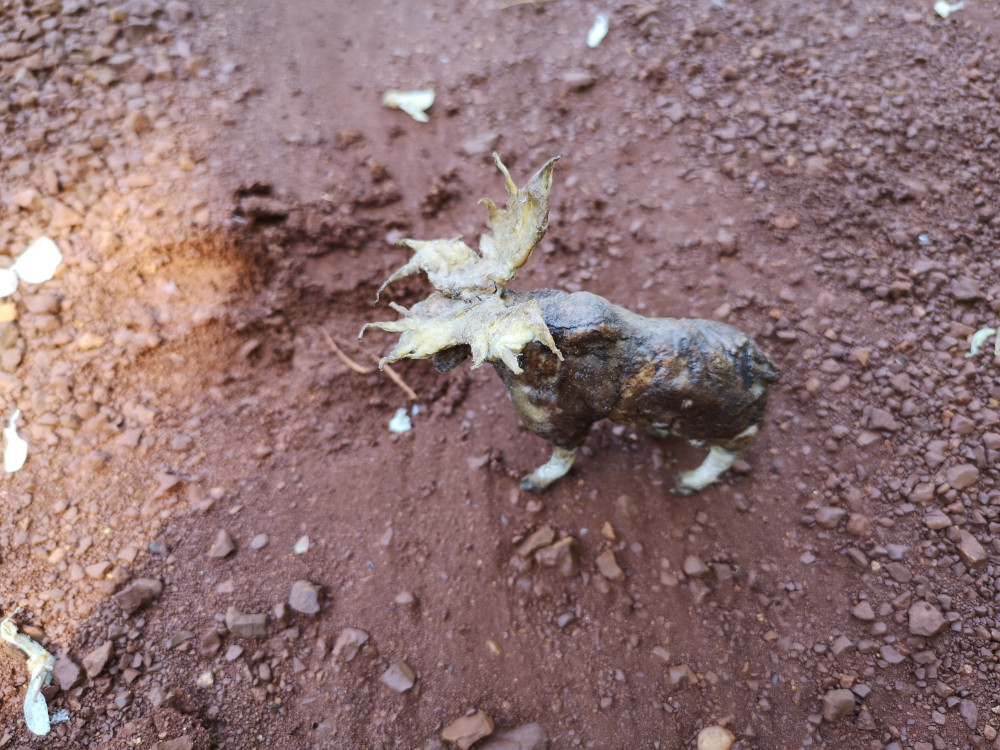
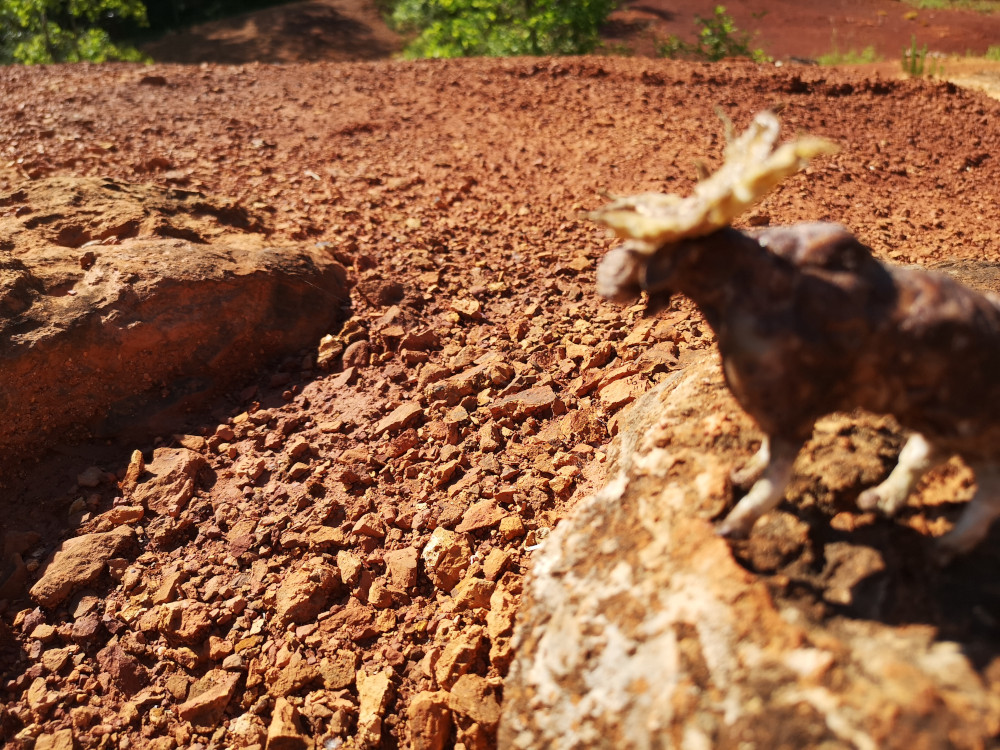

In many mythologies, the stag is a messenger between worlds — between the visible and the hidden, the natural and the artificial, trauma and regeneration.
We see it as a soft footprint on hard ground. A gesture of remembrance, healing, and care.
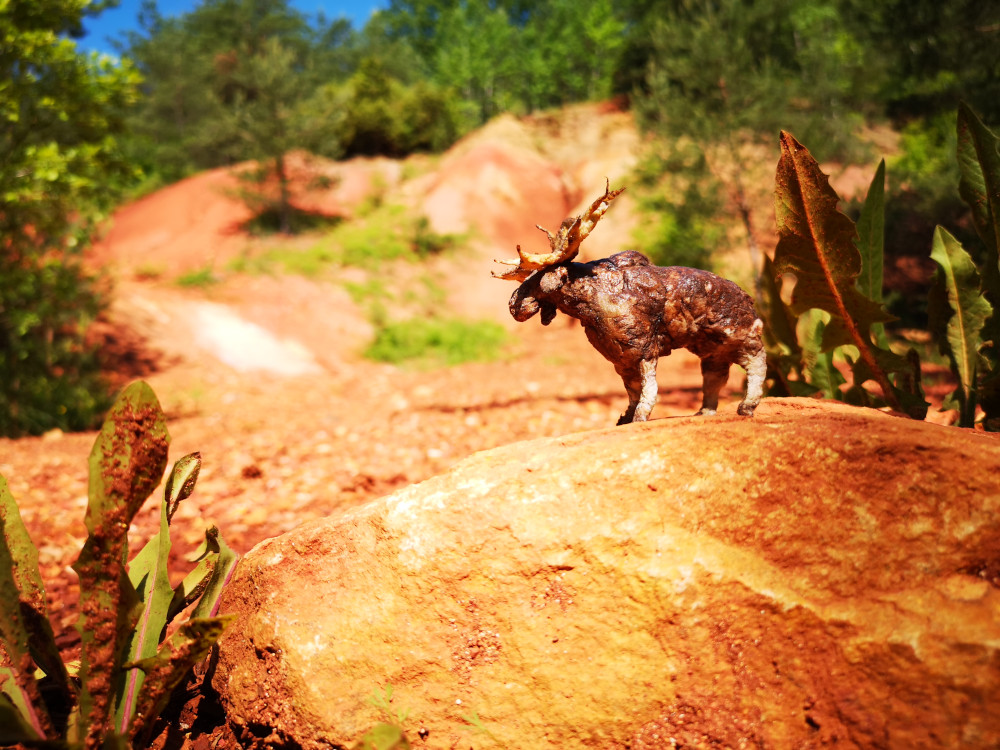
This action was created by our team as part of a growing series of works exploring the memory of the land, ecological trauma, and myth through Revealed Realism (RR) — a method of subtle intervention, documentation, and co-presence with altered landscapes.
Instagram 1
Series: The Quarry as Witness
Régi kőbánya, Gyenesdiás, Hungary
2020
On the northern edge of the Hungarian village of Gyenesdiás, nestled on the slope of Pipa-hegy hill, lies a forgotten landscape — an abandoned dolomite quarry. Its pale grey walls preserve the memory of the ancient Tethys Ocean: more than 200 million years ago, during the Upper Triassic period (237–205 million years ago), warm shallow seas accumulated lime-rich sediments composed of the shells of tiny marine organisms. Through the action of microorganisms, these deposits transformed into a dense, compacted mass of calcium and magnesium carbonates — dolomite.

Covering an area of approximately 400 × 400 meters, the quarry is now silent and overgrown. It is divided by a narrow ridge into a spacious eastern section and a smaller western one. The eastern basin is particularly striking: nature has sculpted ravines, terraces, and canyons whose almost fantastical forms resemble an ancient amphitheater. The slopes and ledges are largely covered with black pine and brushwood, and each groove or outcrop feels like a mark left by both geological time and human intervention.
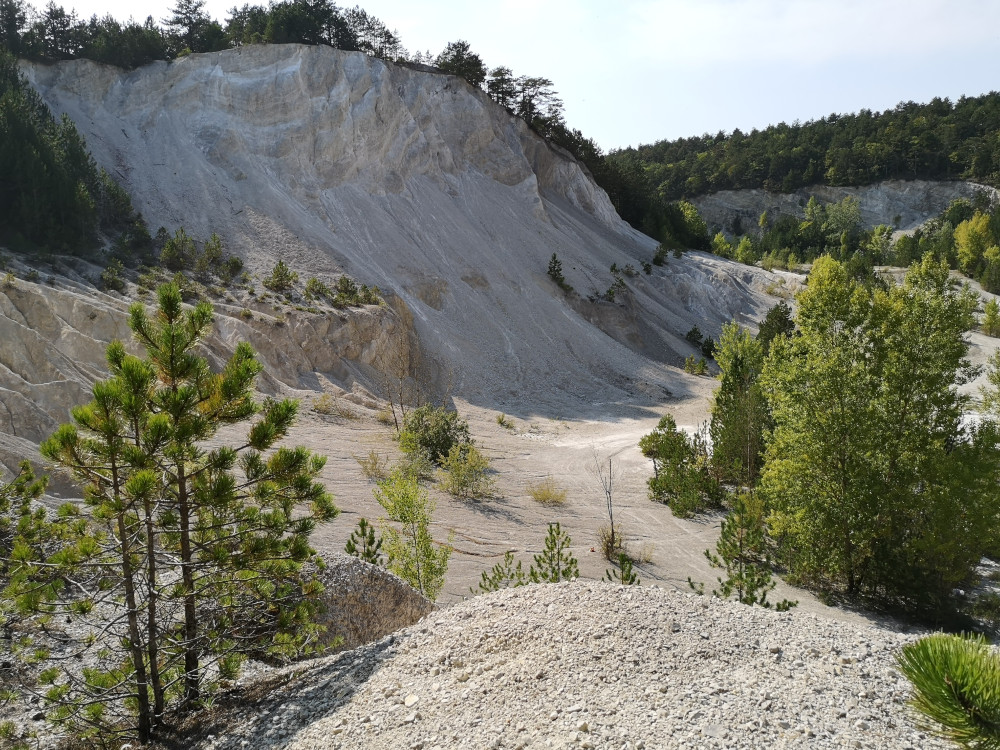
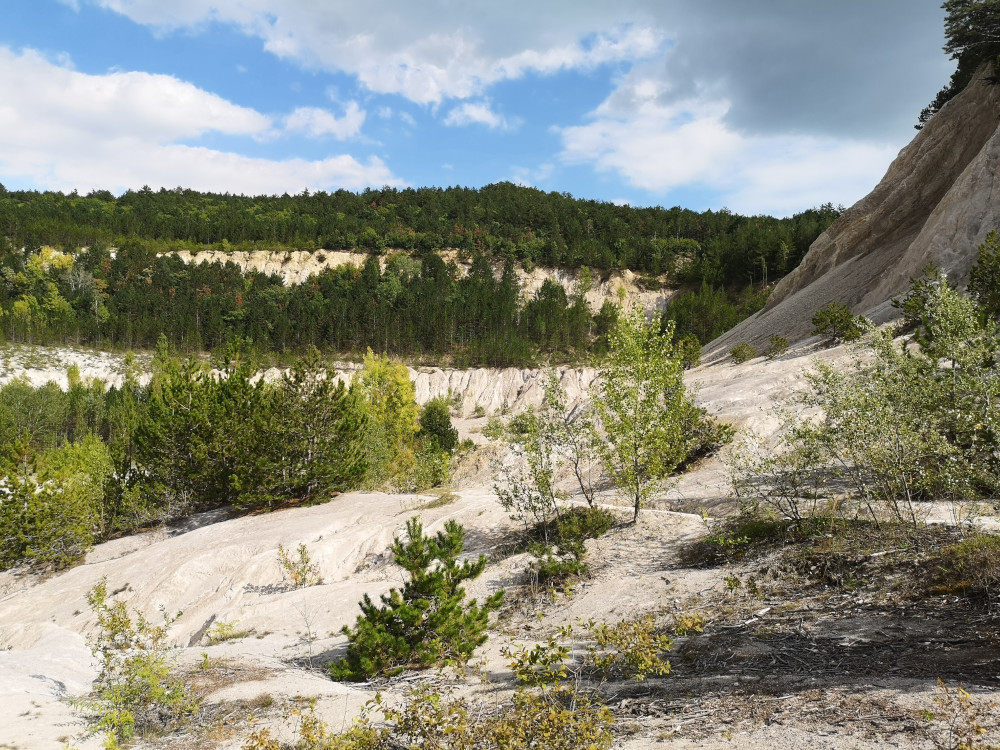
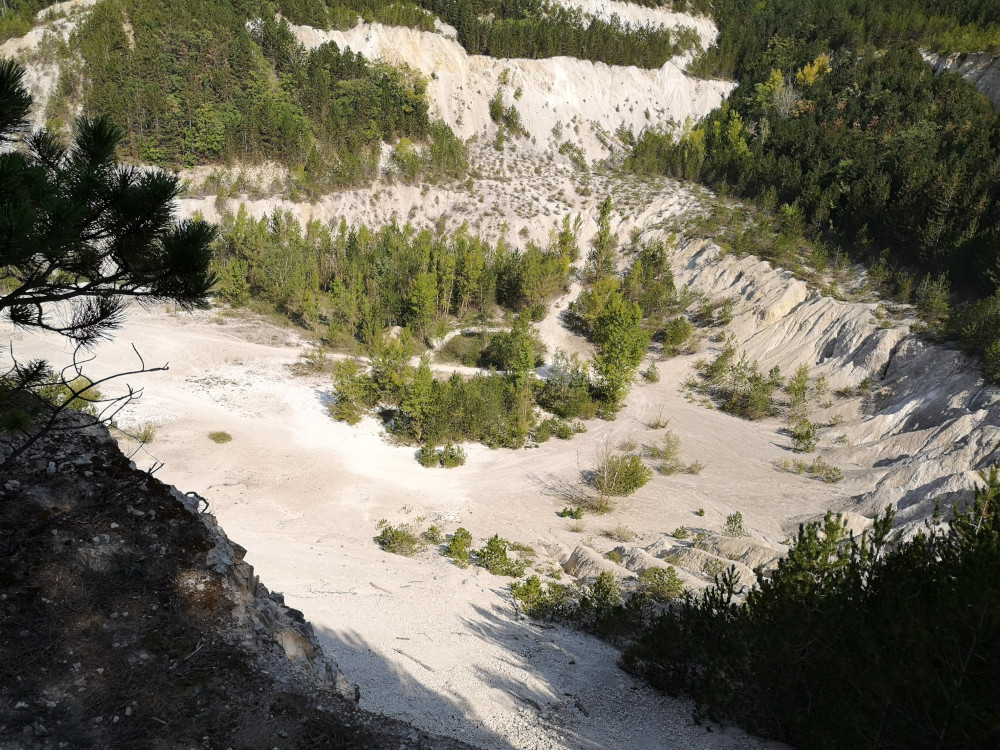
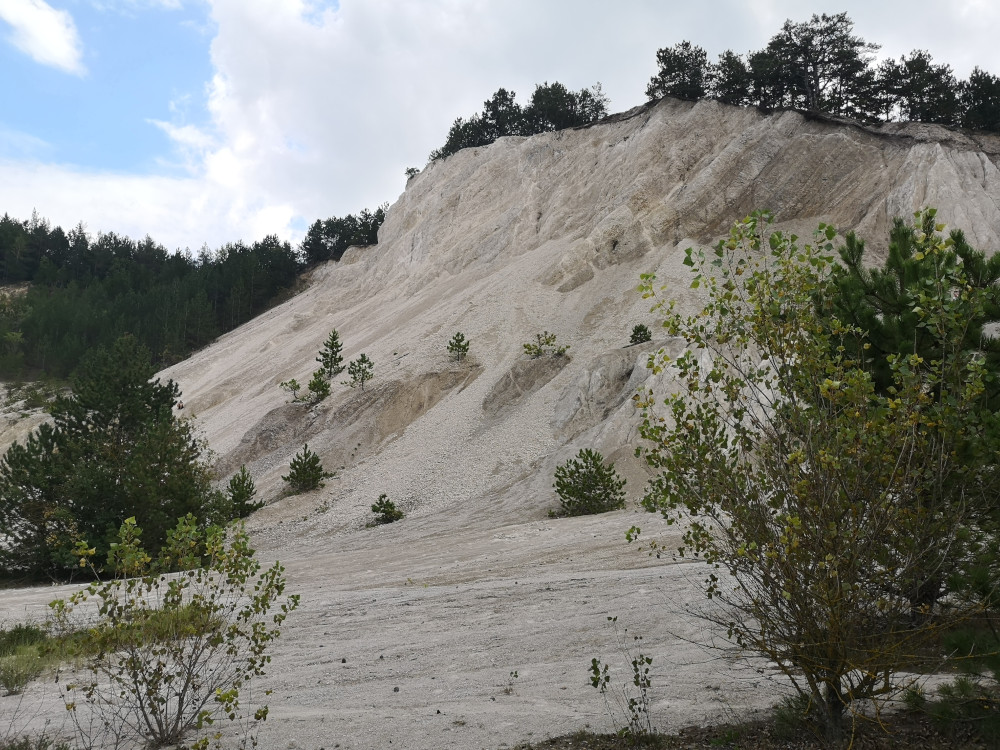
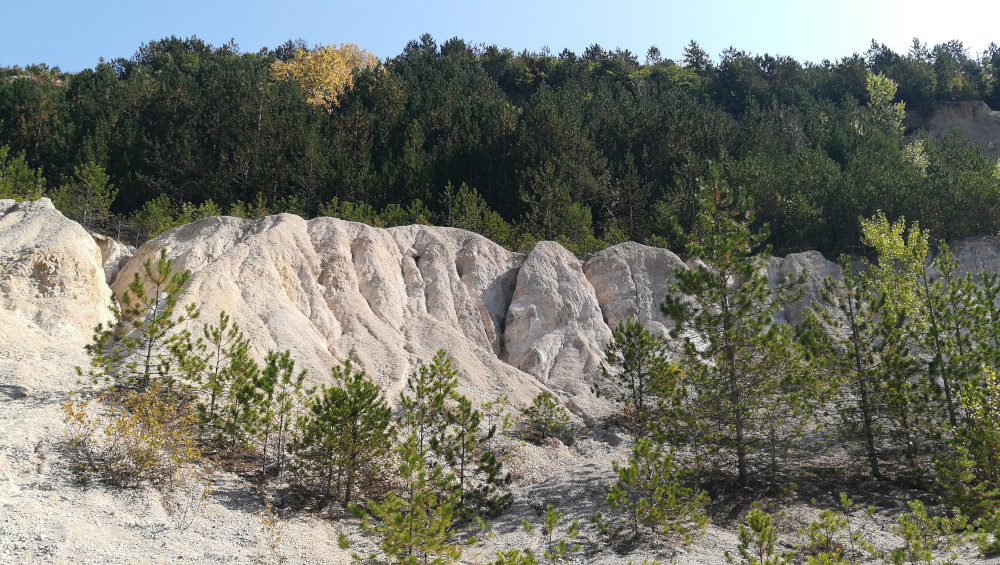

Once, the quarry supplied valuable materials for construction and industry. Dolomite was used as aggregate in building, as flux in metallurgy, to neutralize acidic soils and enrich them with calcium and magnesium in agriculture, as well as in the production of glass and refractory materials. [ 1 2 3 ]
Today, with its industrial role long gone, the quarry returns to nature — and simultaneously opens itself to artistic contemplation and action. As part of the series “The Quarry as Witness,” we approach such places as living archives: not only of geological memory, but of the potential for interaction between human presence, form, and time.
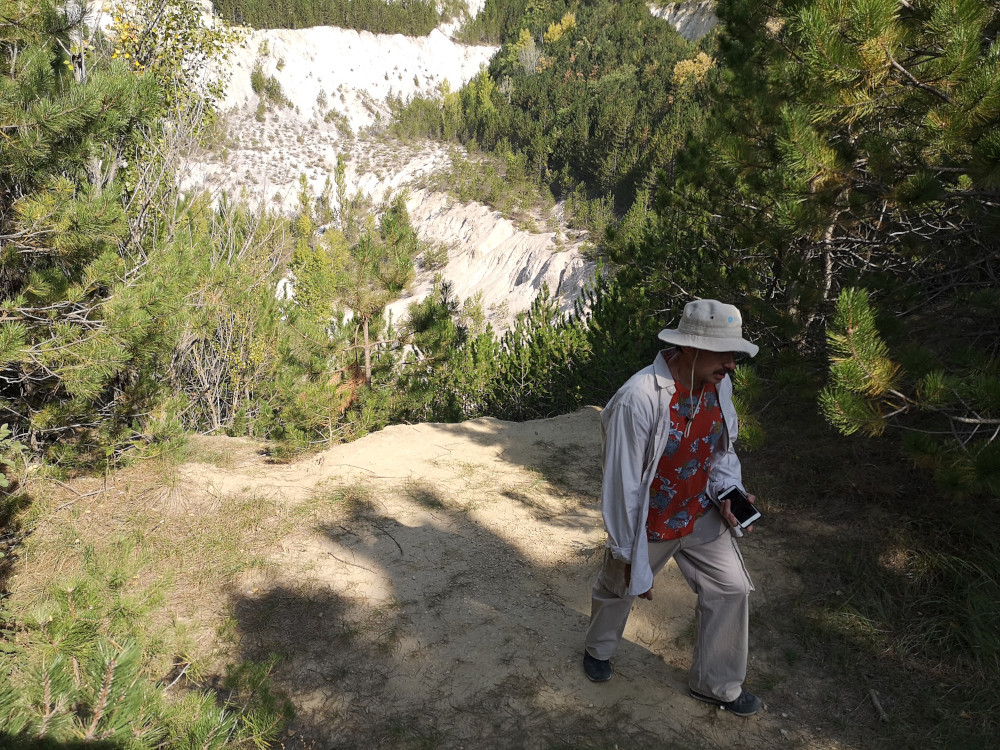
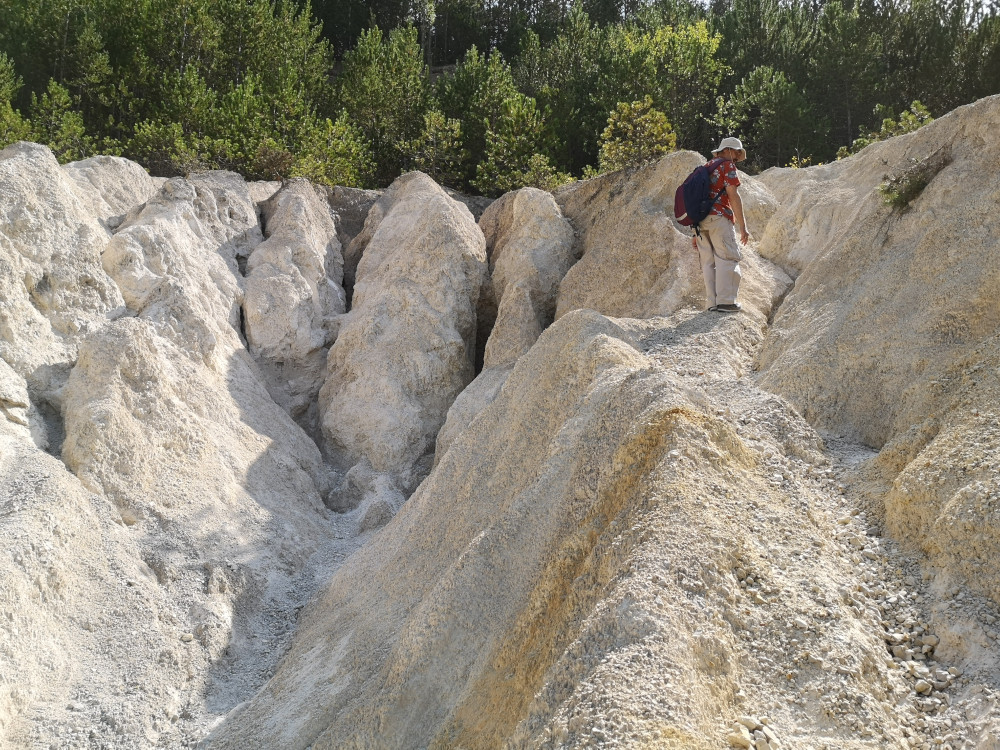
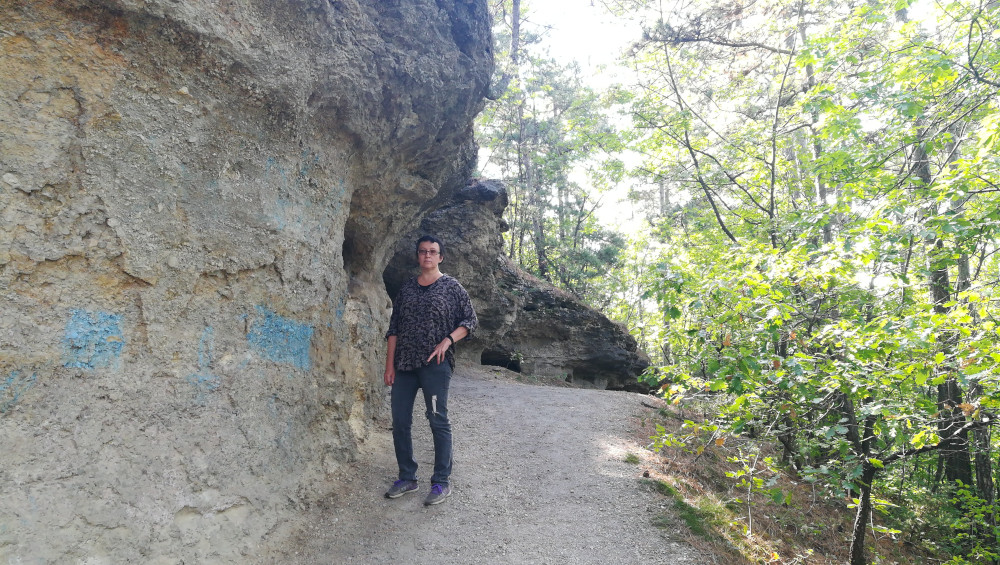
As part of the Deerland art festival in September 2020, we conducted a series of artistic explorations in the old quarries around Gyenesdiás, Hungary. One of the key events was the creation of The Native Deer — an ephemeral geoglyph formed in an abandoned dolomite quarry on the hill of Pipa-hegy. The project became a spontaneous yet profound collaboration with the landscape itself, where natural forms revealed the image that was meant to appear.
Originally, we planned to work in another pristine white quarry, but upon arrival discovered it was again under excavation. We had to change location quickly and chose the old, forest-overgrown quarry. We descended to a light clearing that intuitively called for action.

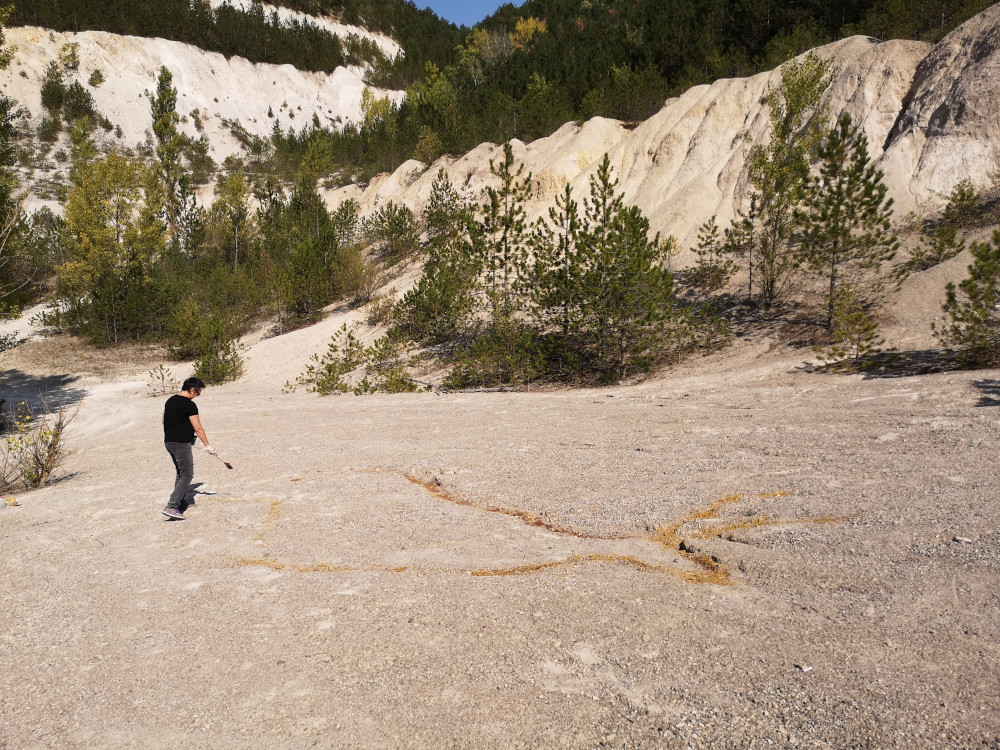


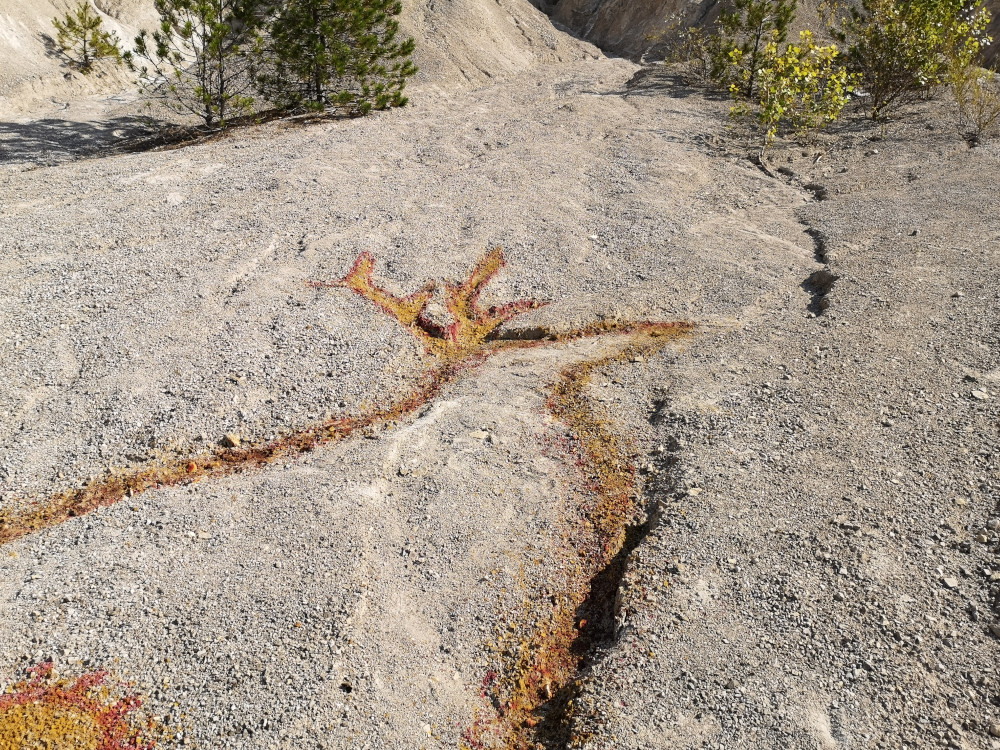
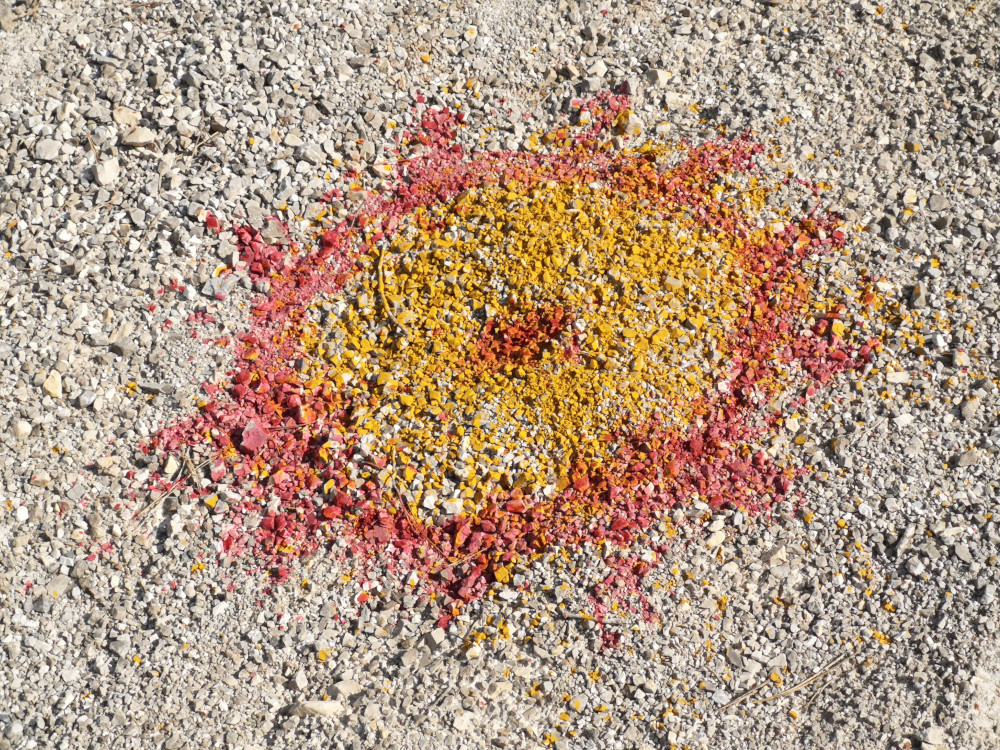
The Szamorodni Deer, 2020 (process and details)
Our original sketch — a two-headed elk — didn’t match the terrain. But the natural streams and grooves already suggested another deer’s form. I merely “revealed” it with pigment splatter. Later, a heart appeared in the center, turning into a sun. (Instagram)
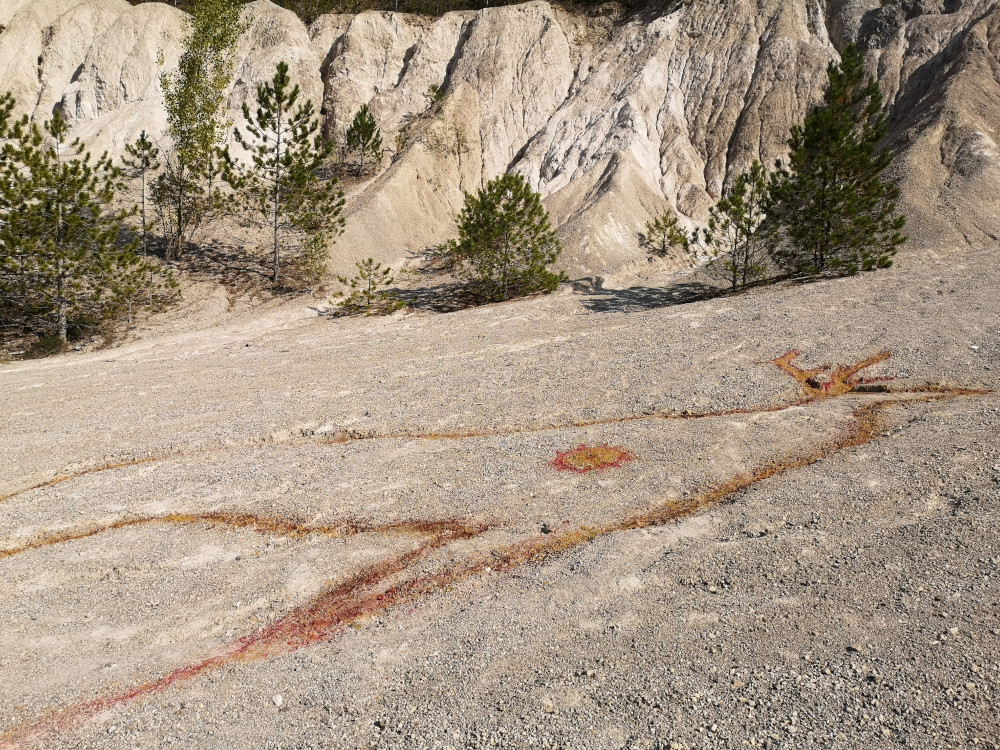
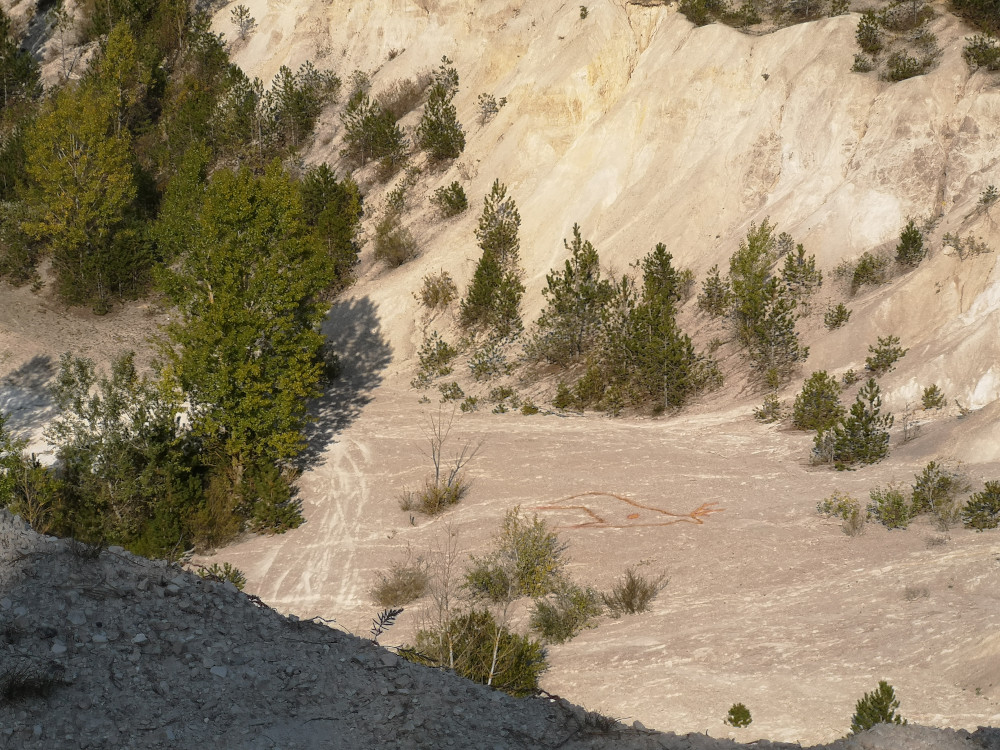
The Szamorodni Deer ephemeral geoglyph, ~ 3 × 5 meters. Materials: pigments (ochre, wine, chocolate), water. Technique: pigment splatter. Co-author and photographer: Dmitry Razhev
Meditation inside the deer and Performances around
A week after the geoglyph was completed, we conducted a performance inside its outline — a physical alignment with the symbolic shape. The body tuned into the place, activating its latent presence. (Instagram 1 2 3 4)
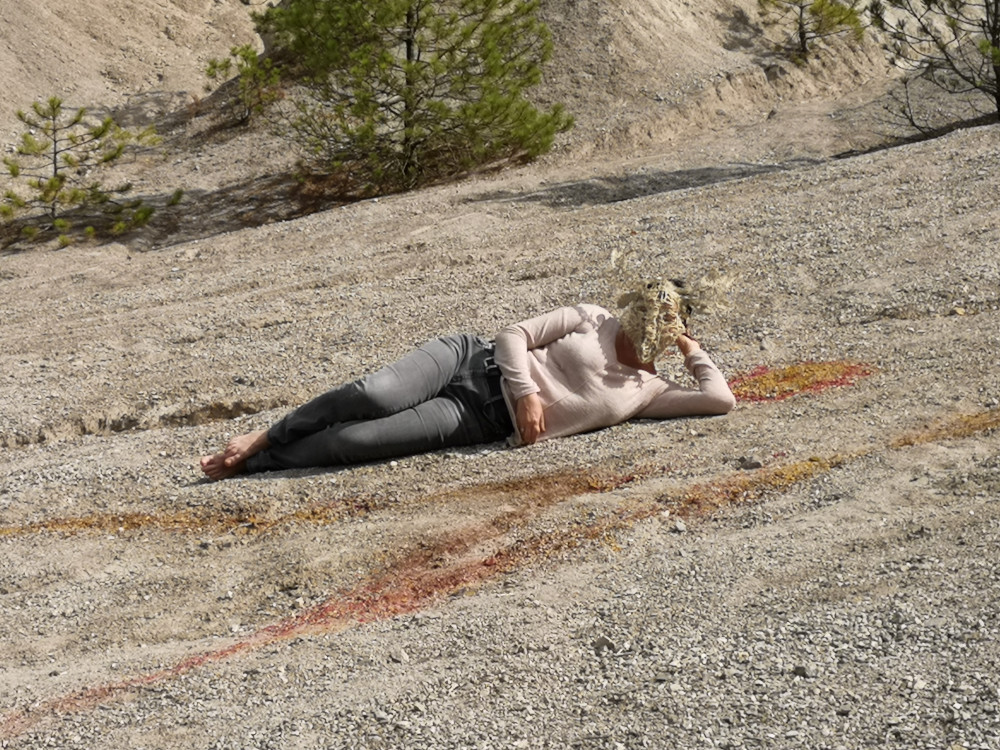
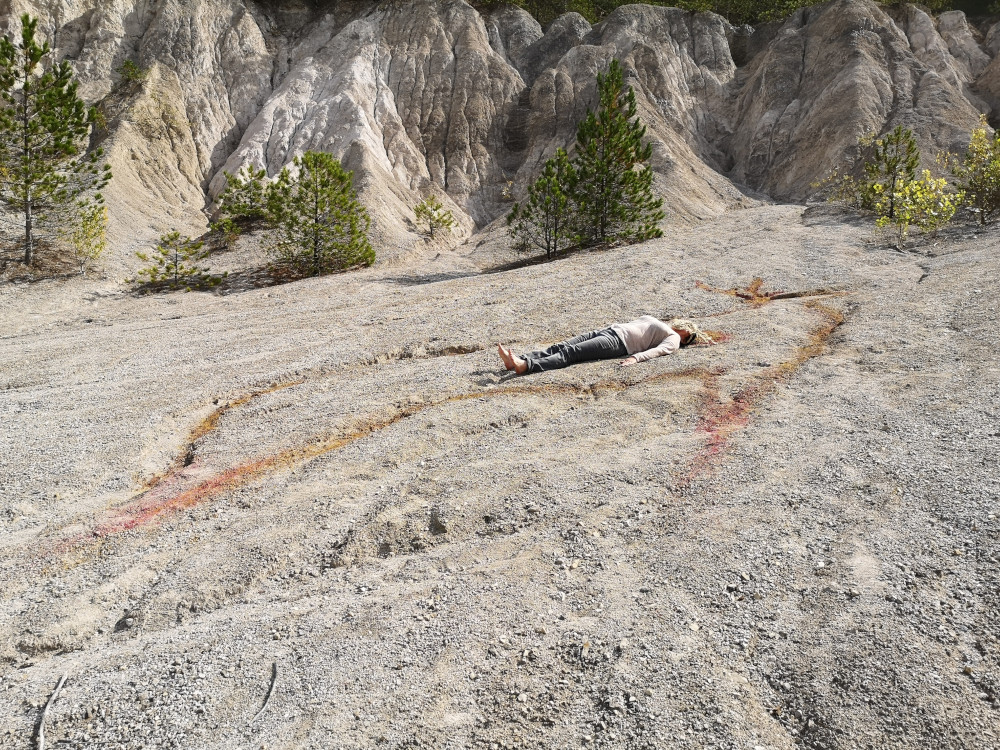

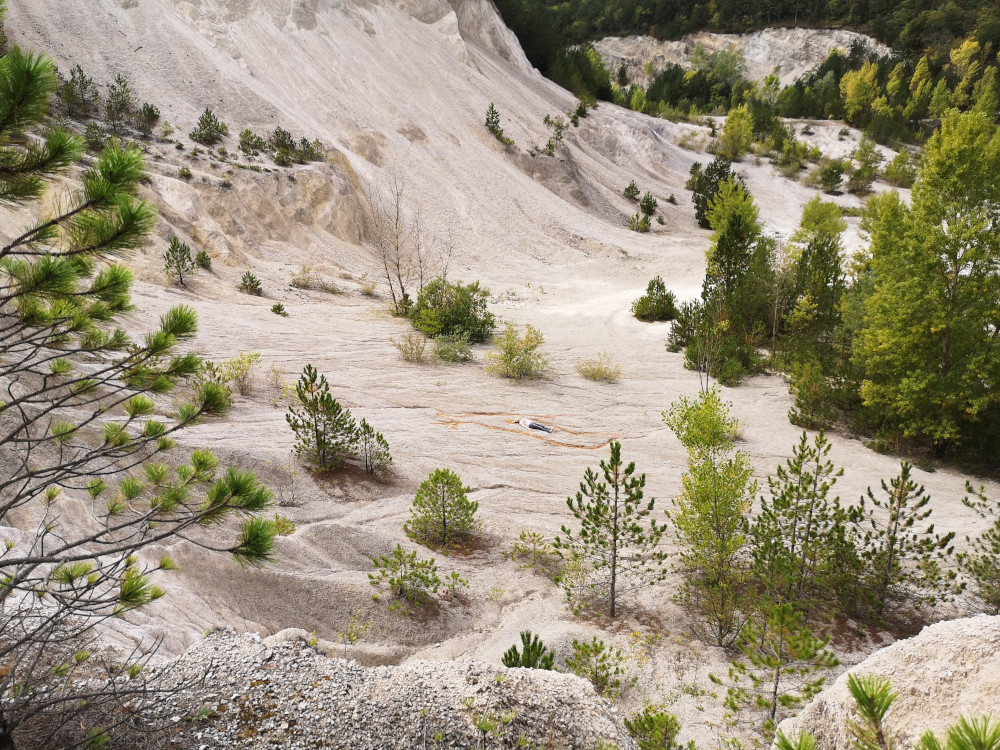
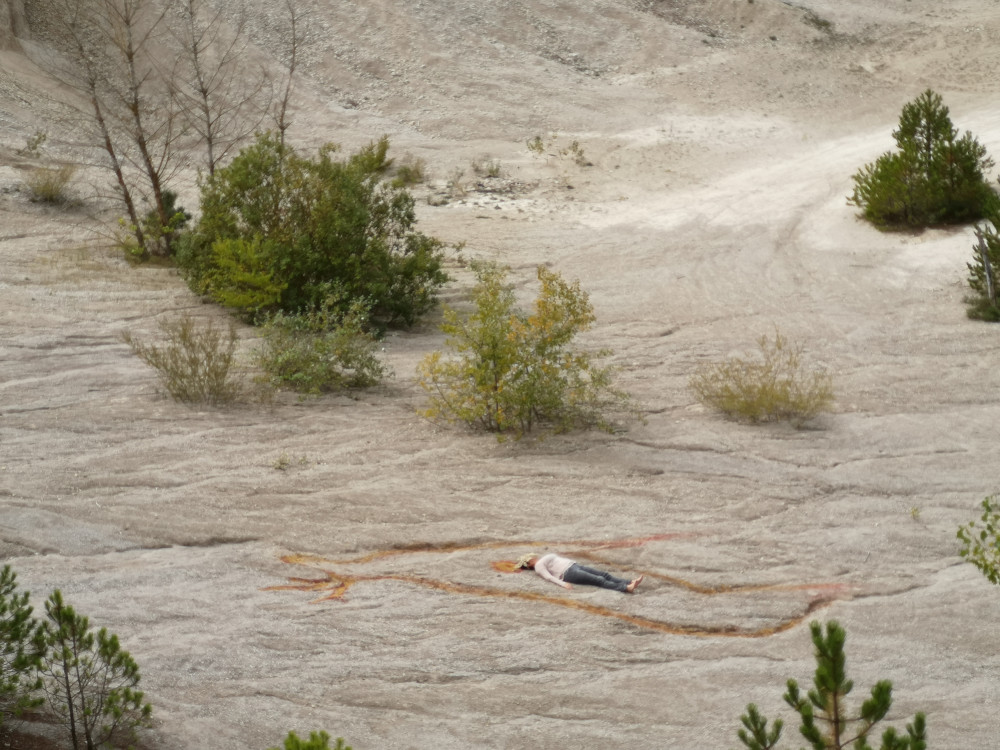
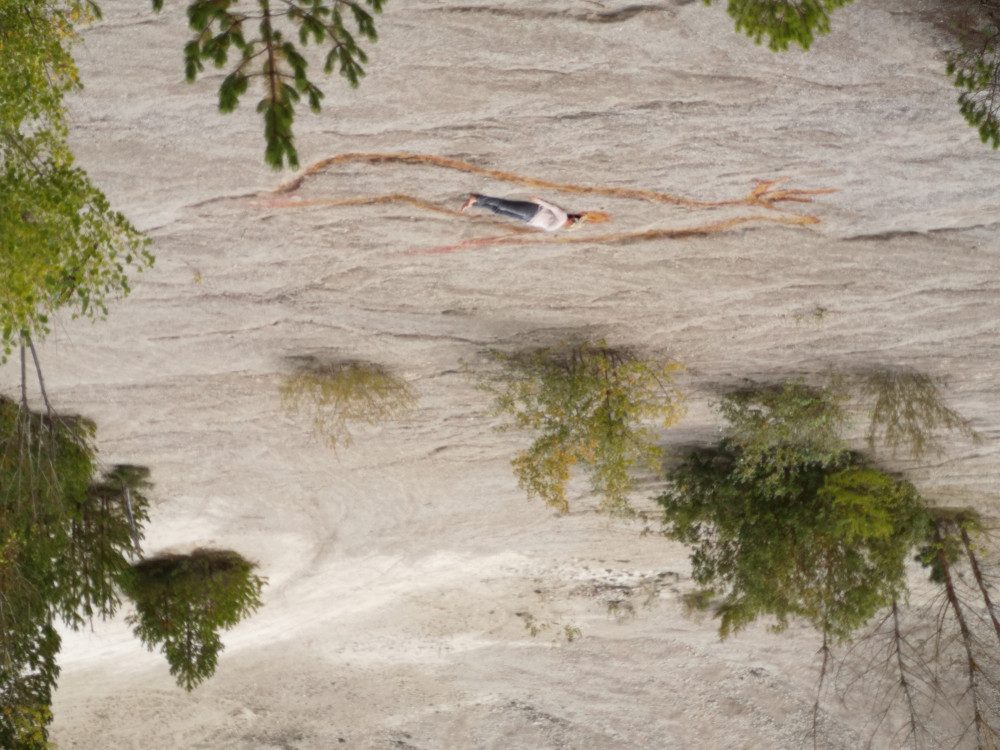
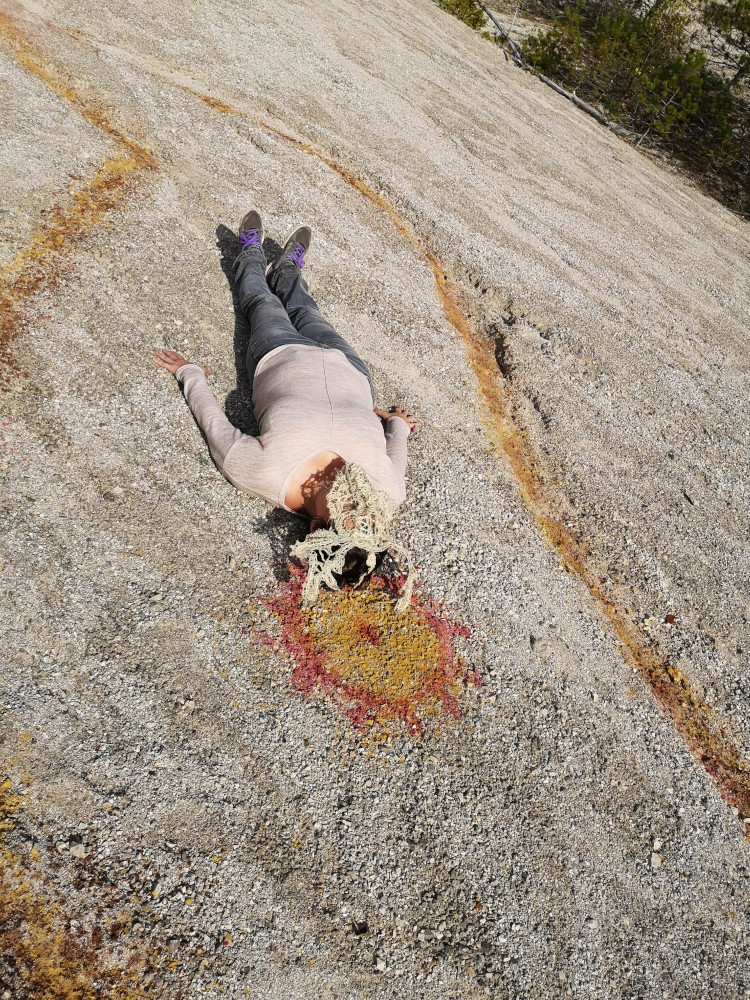
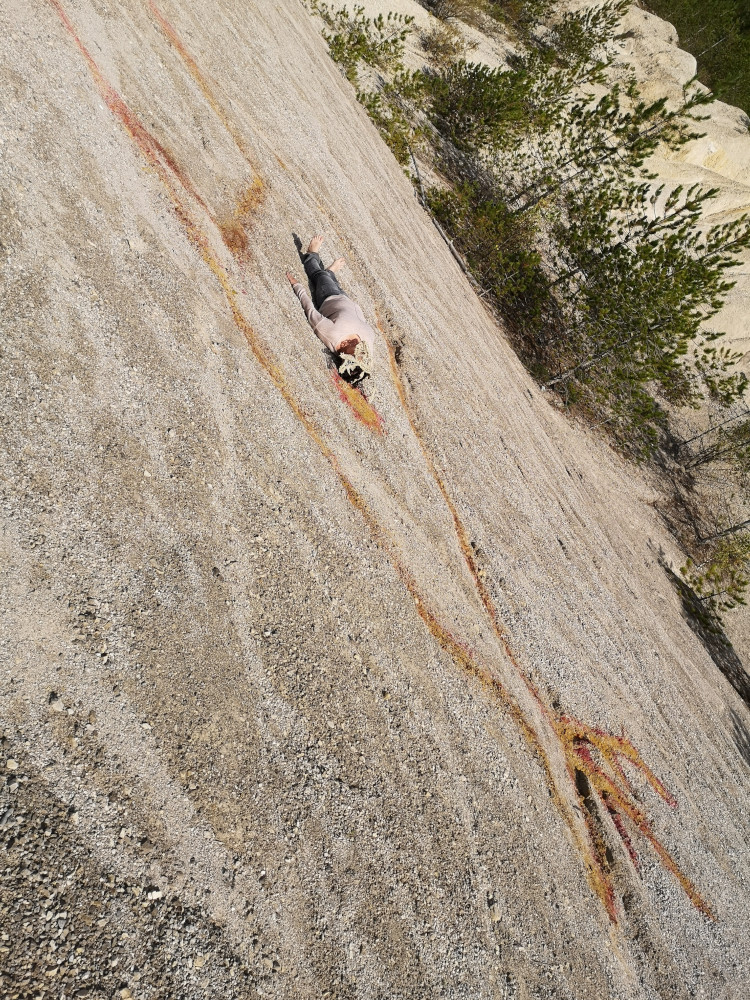

Spiral with a Deer Hoof Stamp
Using a sponge stamp in the shape of a deer hoof, we created a double spiral: coiling inward in ochre, then unwinding outward in red. From above, the form resembled spiraling time — folding and unfolding. (Instagram)
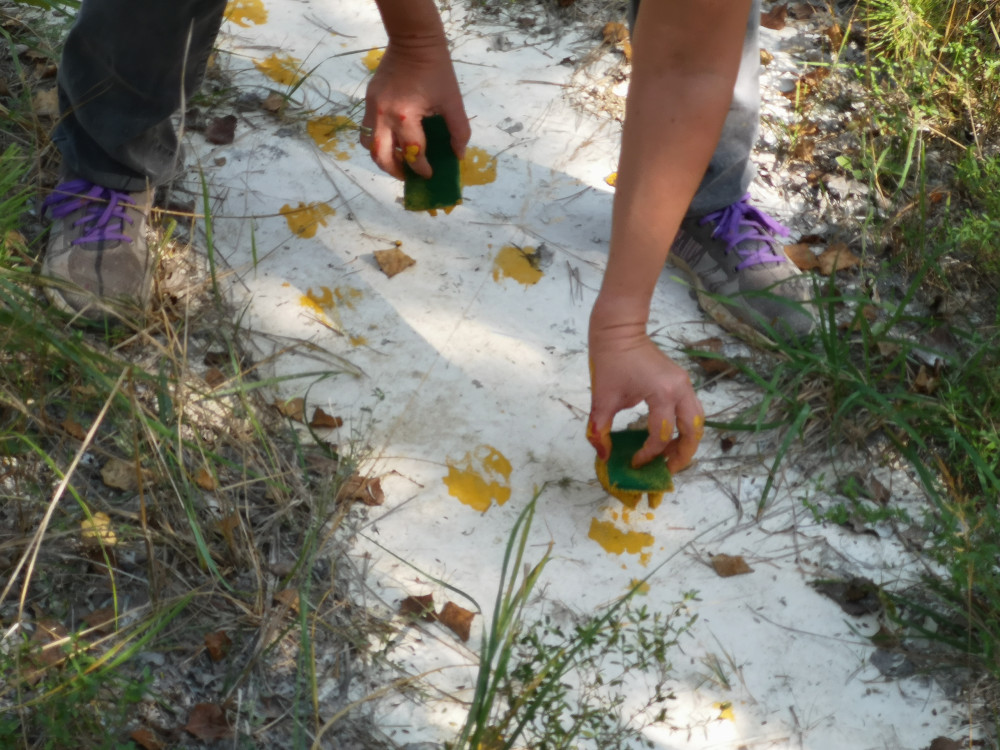
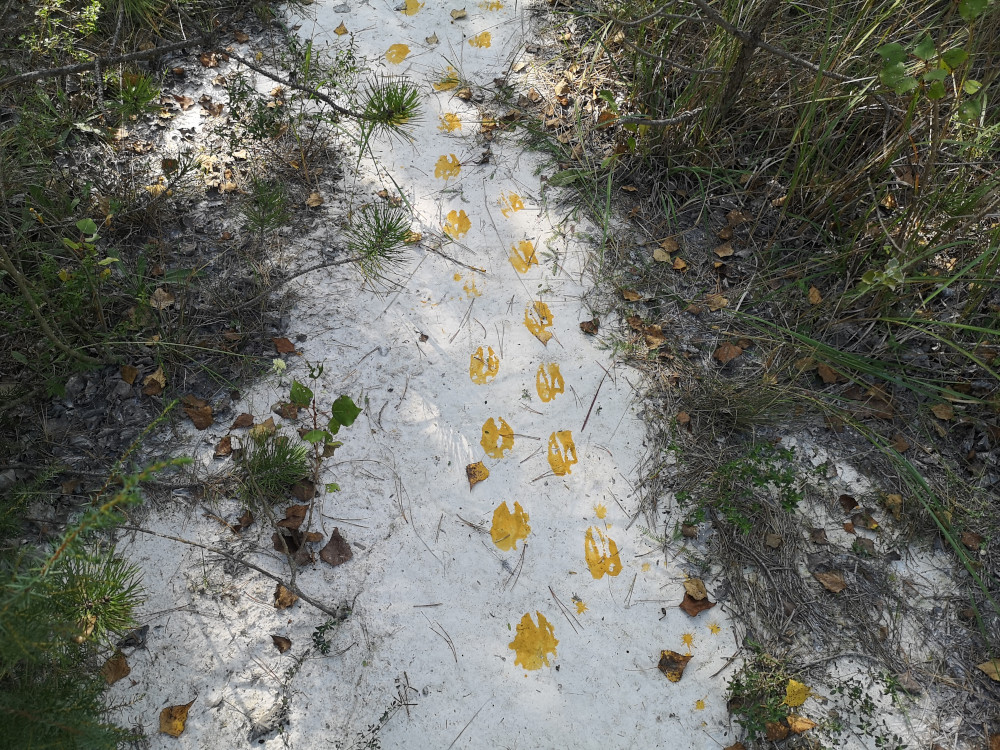
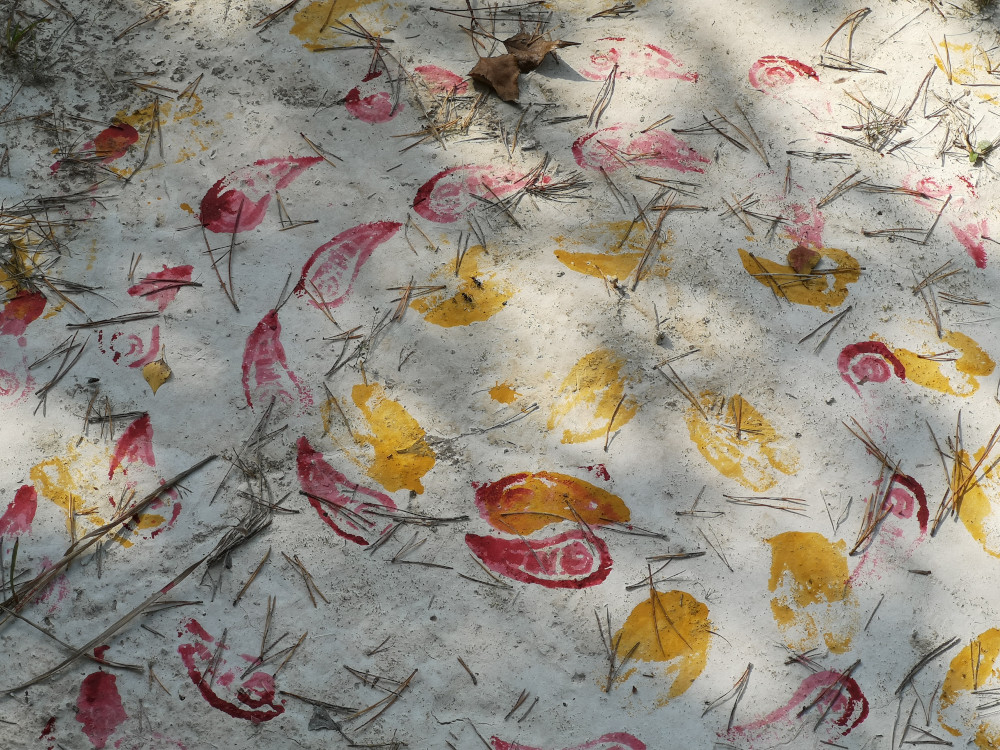
Cave Deer
Next to the site, we found a man-made cave — likely carved out during stone extraction. Inside it, we staged a photo performance titled Cave Deer: shadowy images on the walls like memory archetypes. This added a subterranean dimension to the project, deepening the connection between human, stone, and symbol (Instagram)
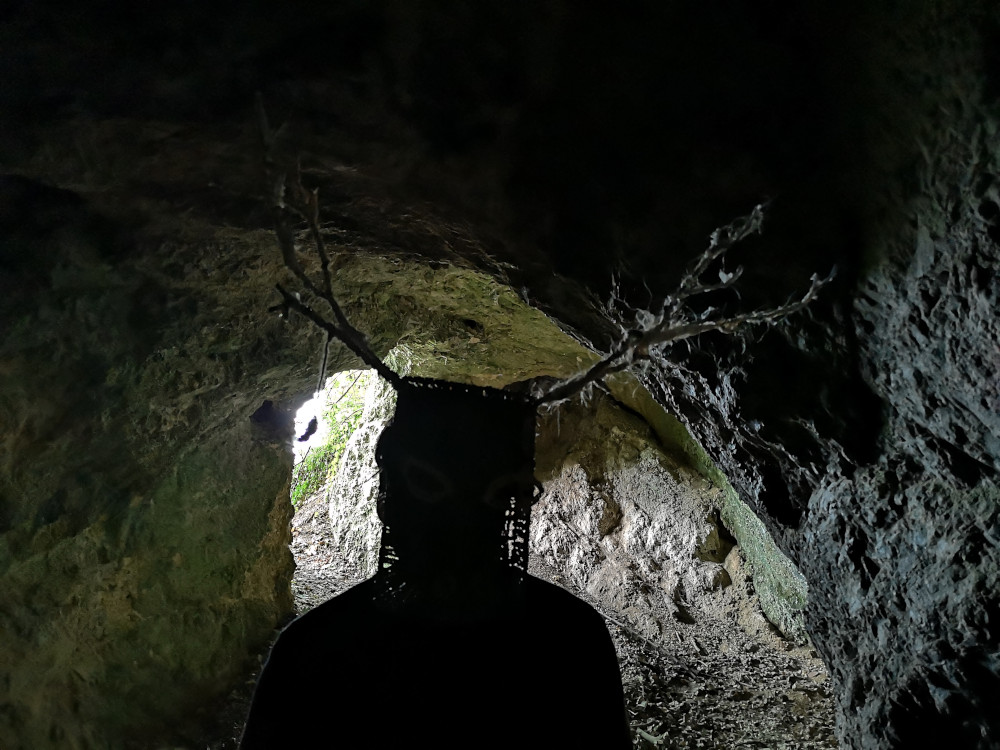
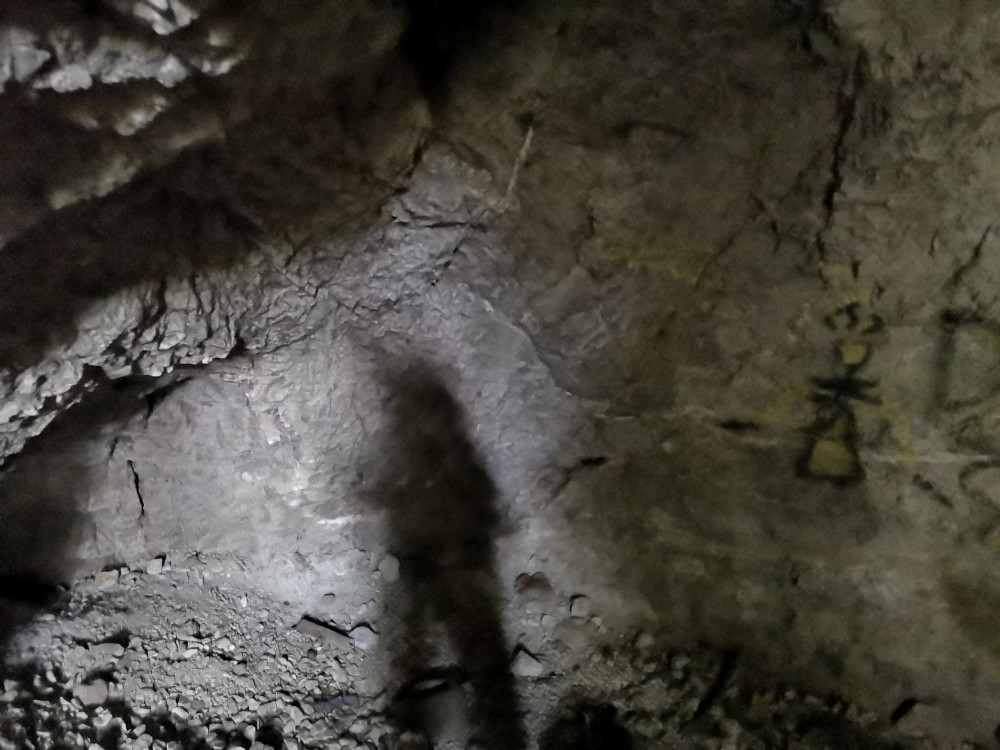
This work belongs to our practice of RR-method — an approach where the artist does not impose a new form, but listens attentively and reveals what is already present in the landscape. Here, the environment itself acted as both witness and co-author.
Although nothing went as planned — we changed location, abandoned the original idea, and adapted the technique — the result was unexpectedly precise. We simply uncovered what was already embedded in the place.
That’s how the Samorodny Deer appeared — an ephemeral trace shaped by streams, stones, and light. A month later, it vanished without a trace, as intended. What remains is memory, and the documentation.
But most importantly, what remains is the experience of co-creation with the land — where the quarry was not just a backdrop, but a protagonist.